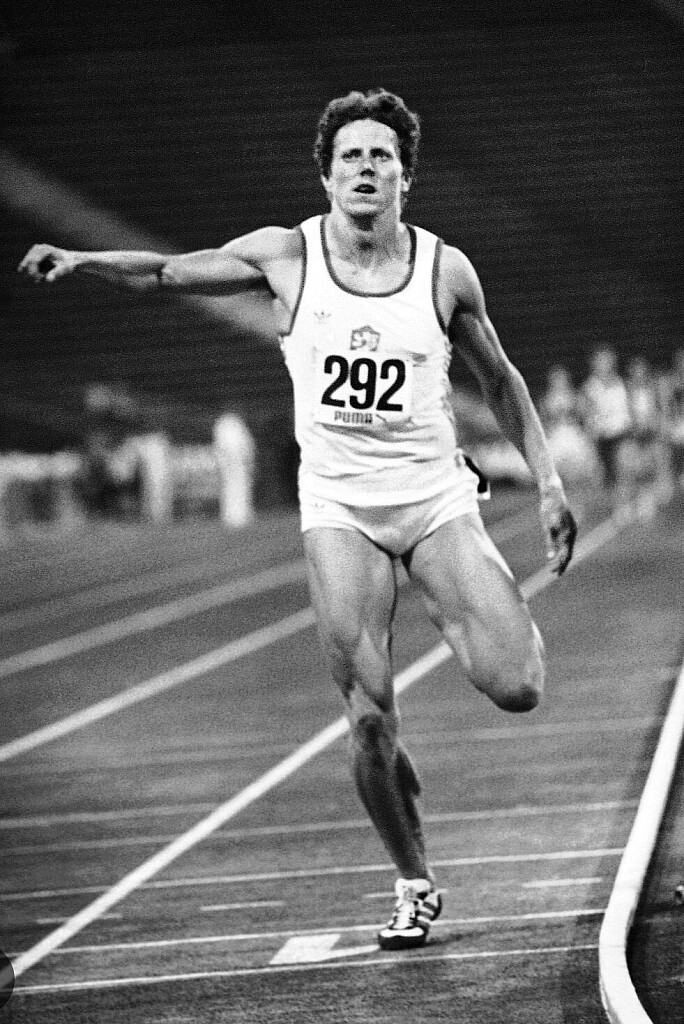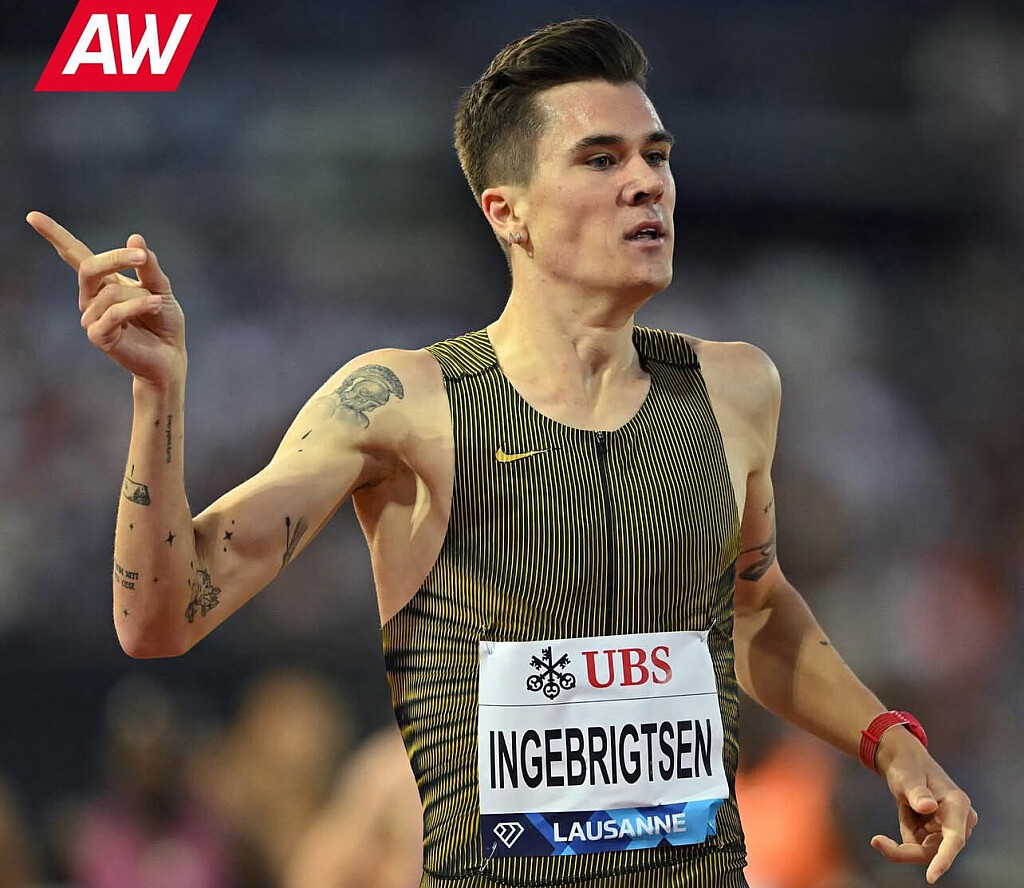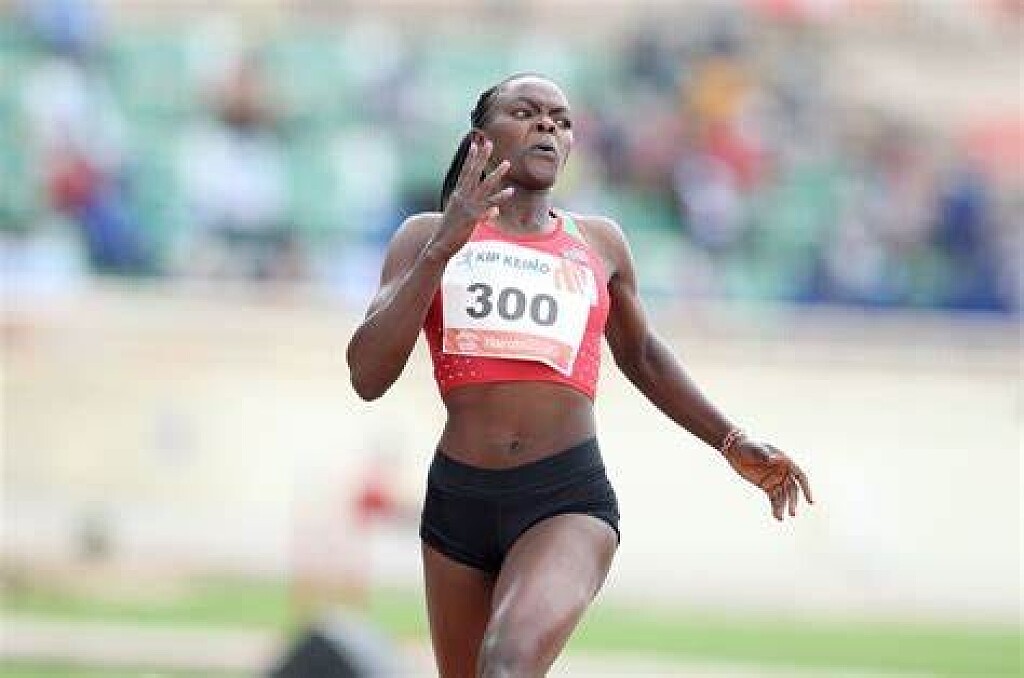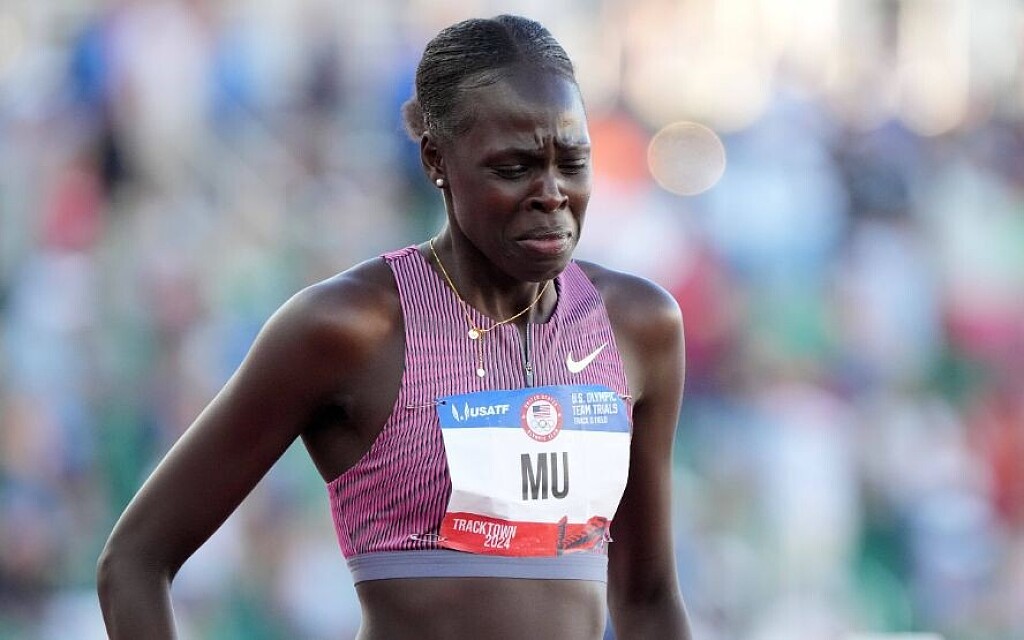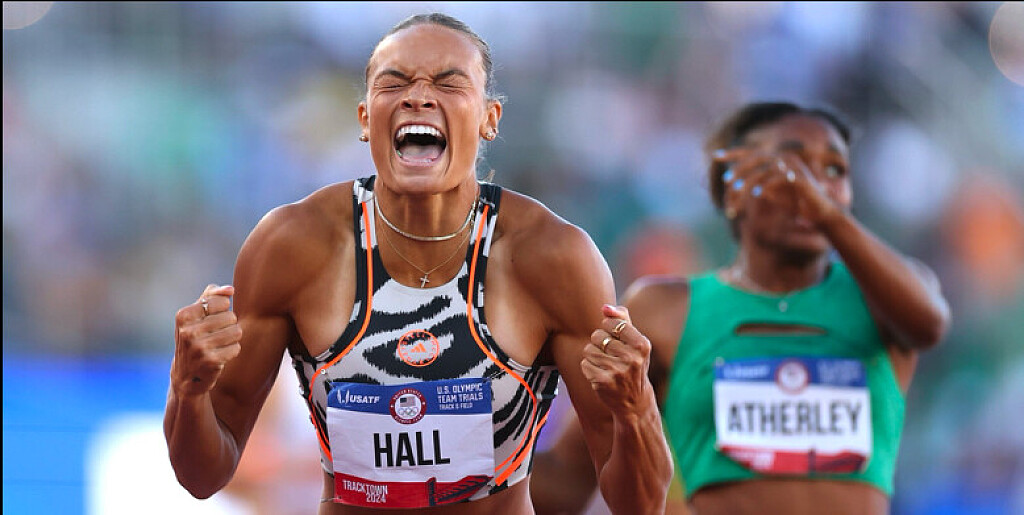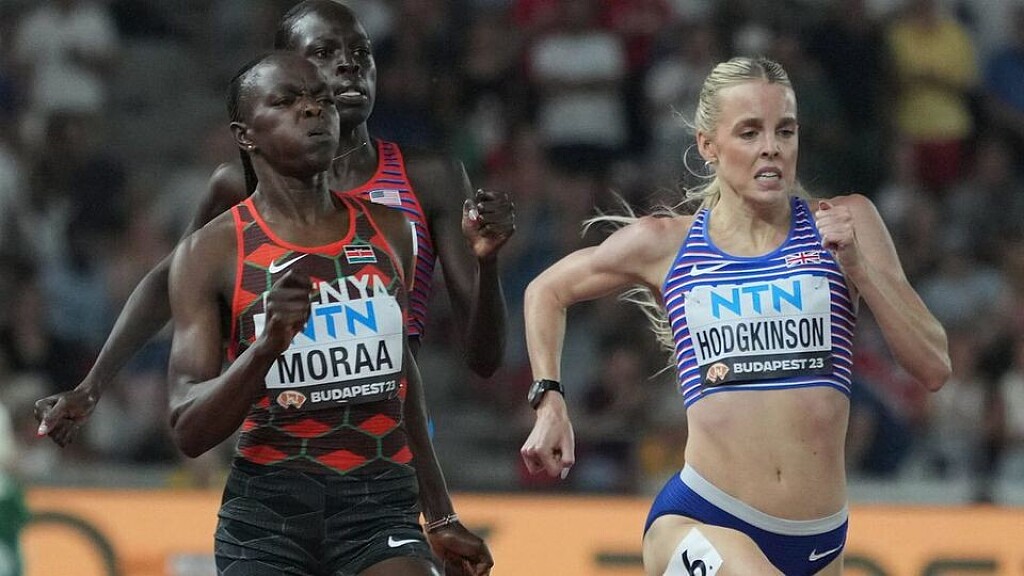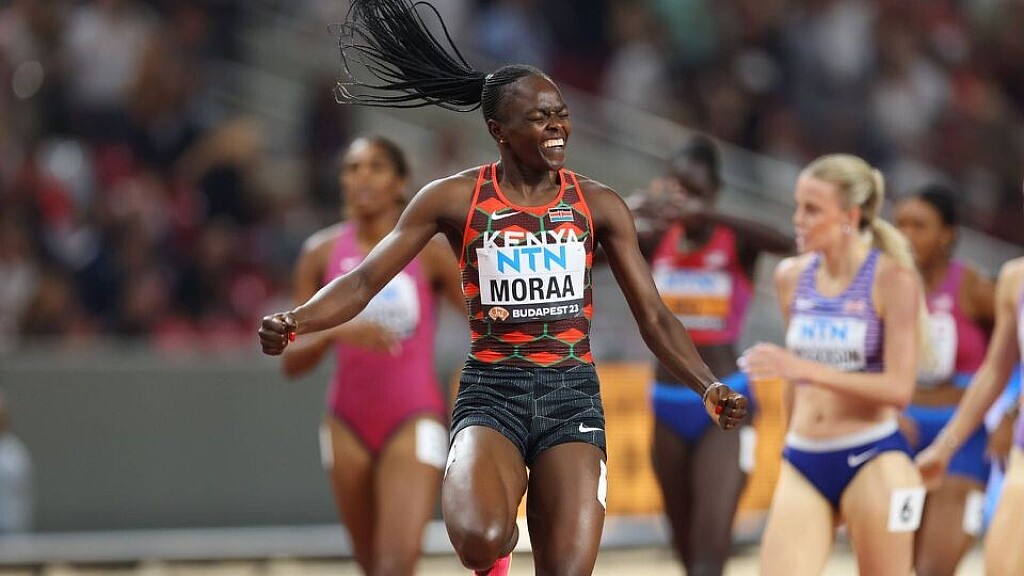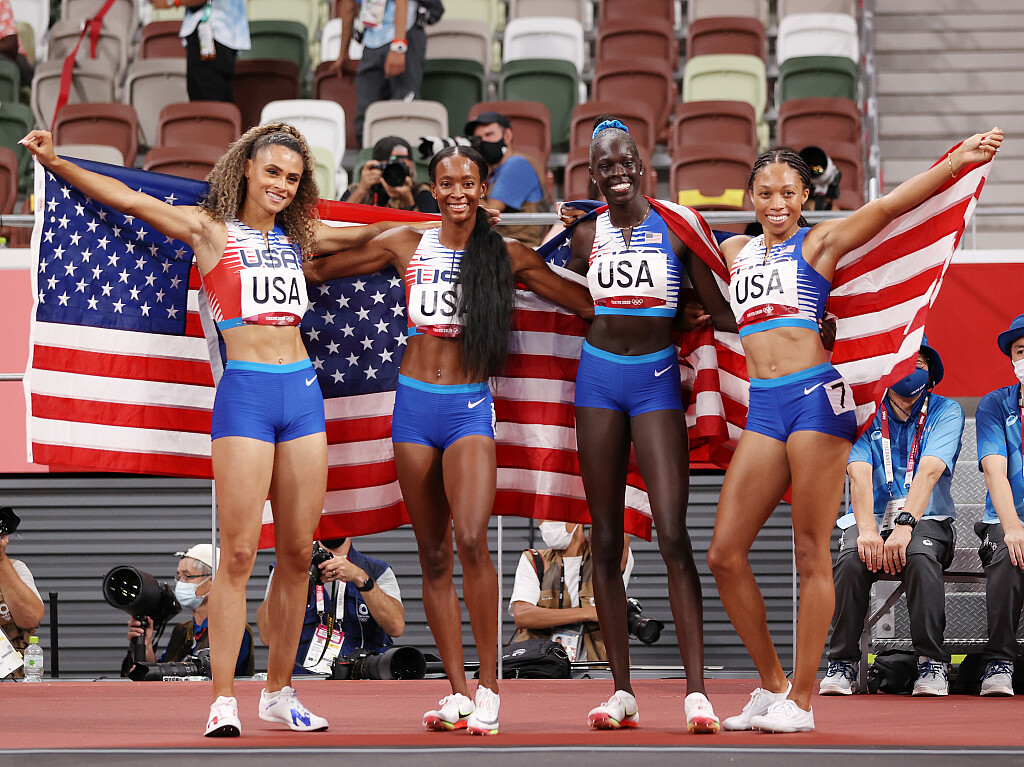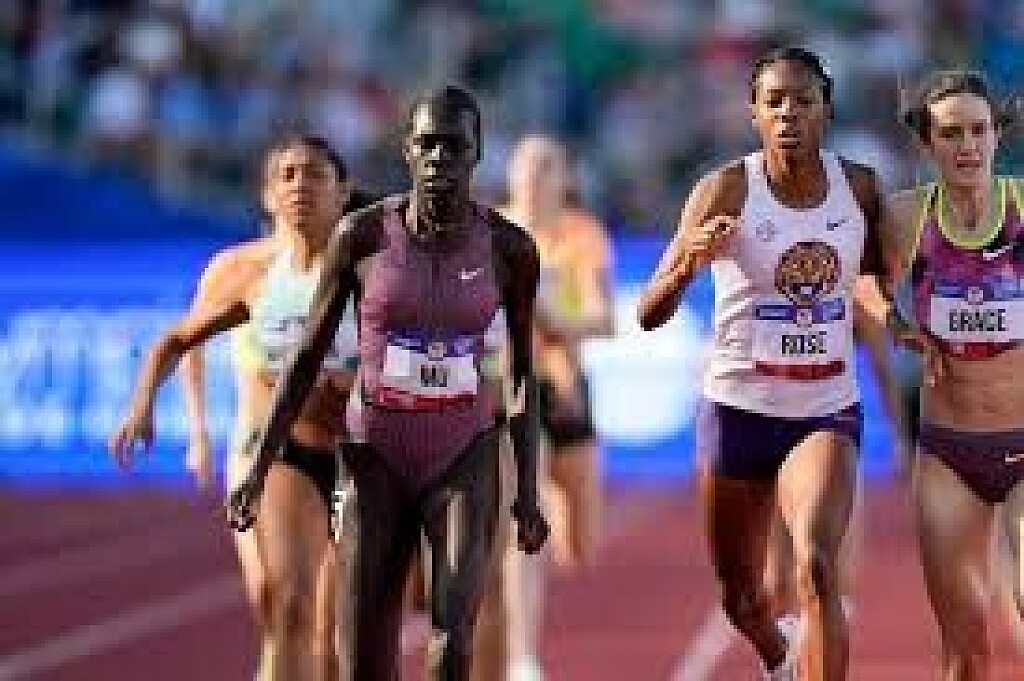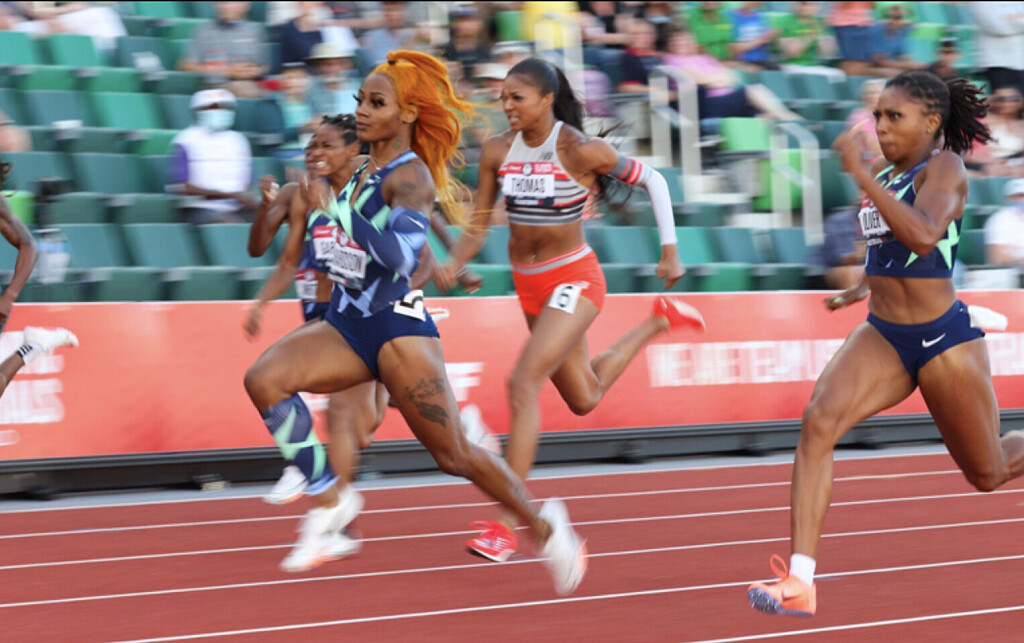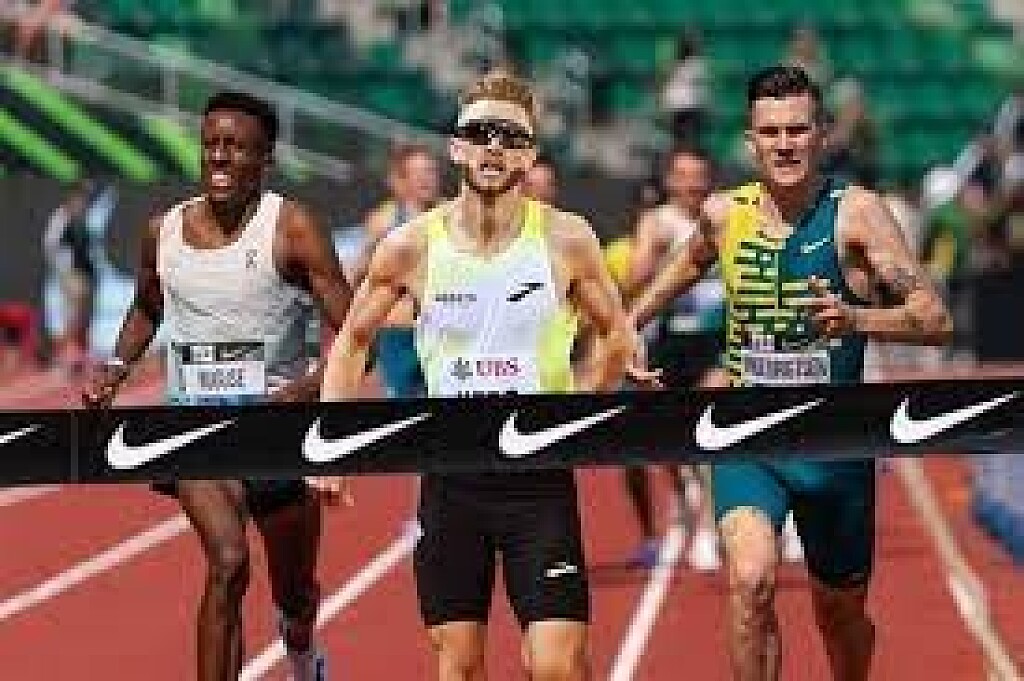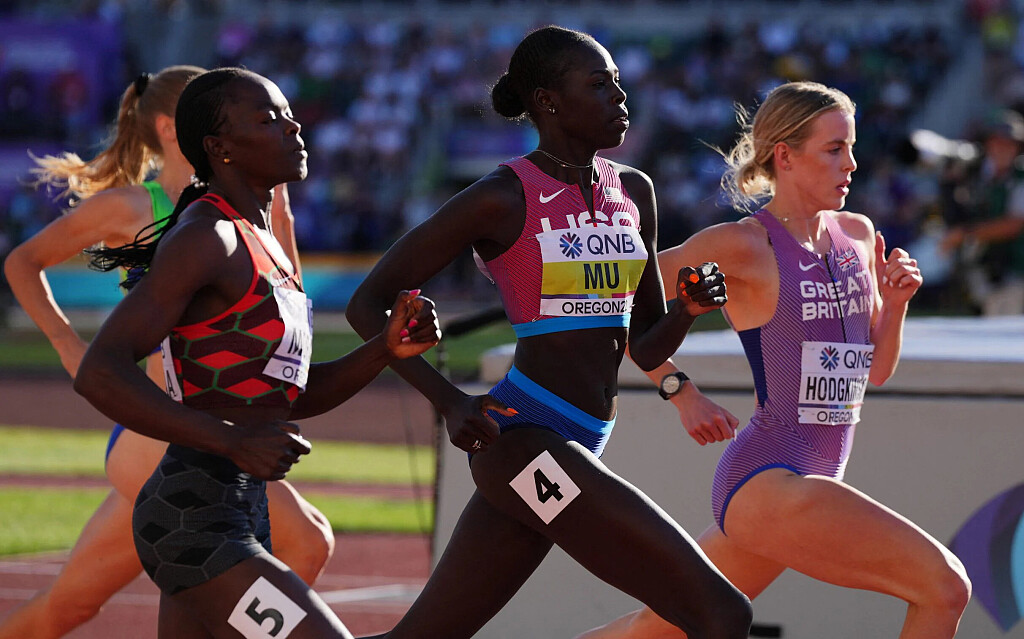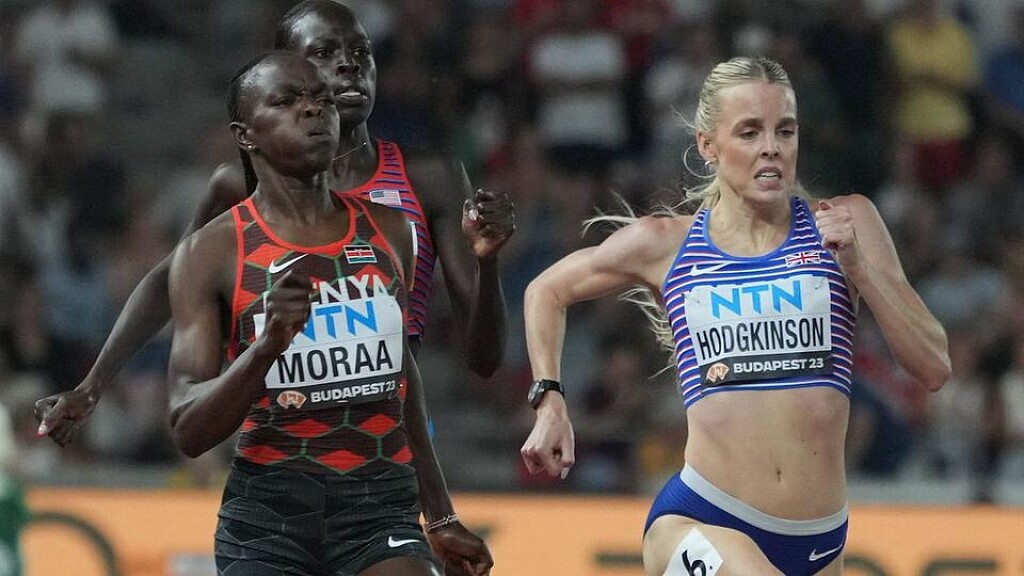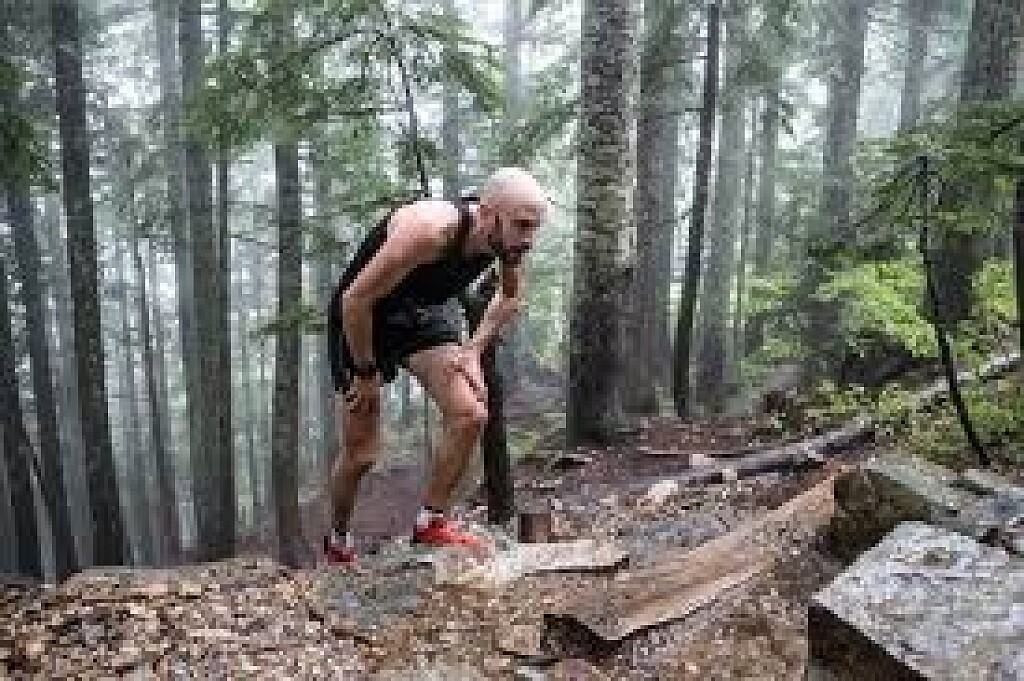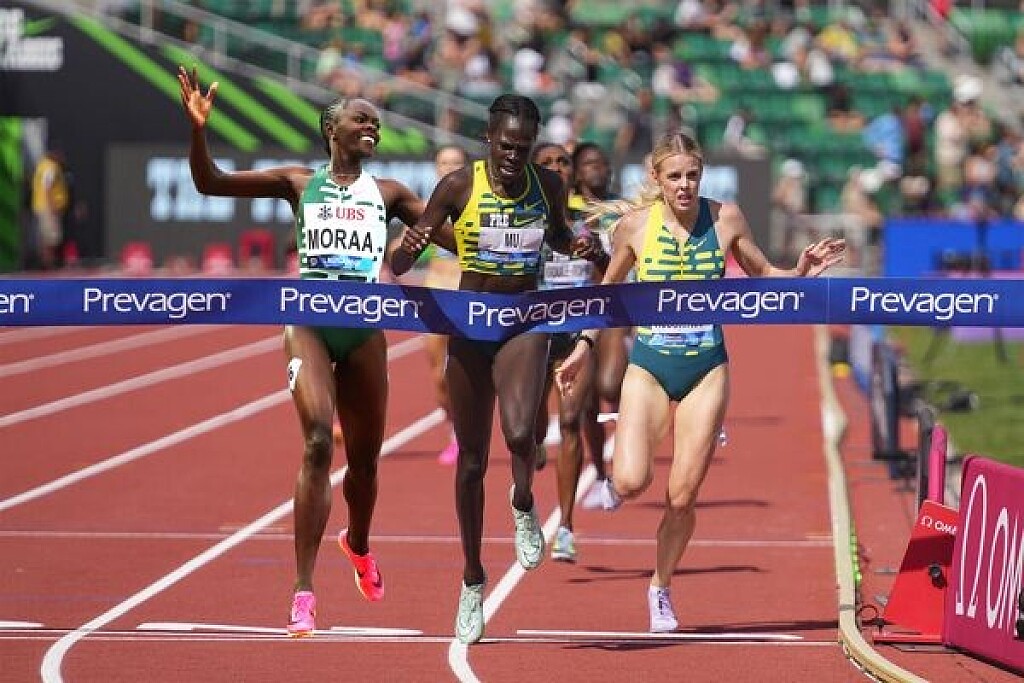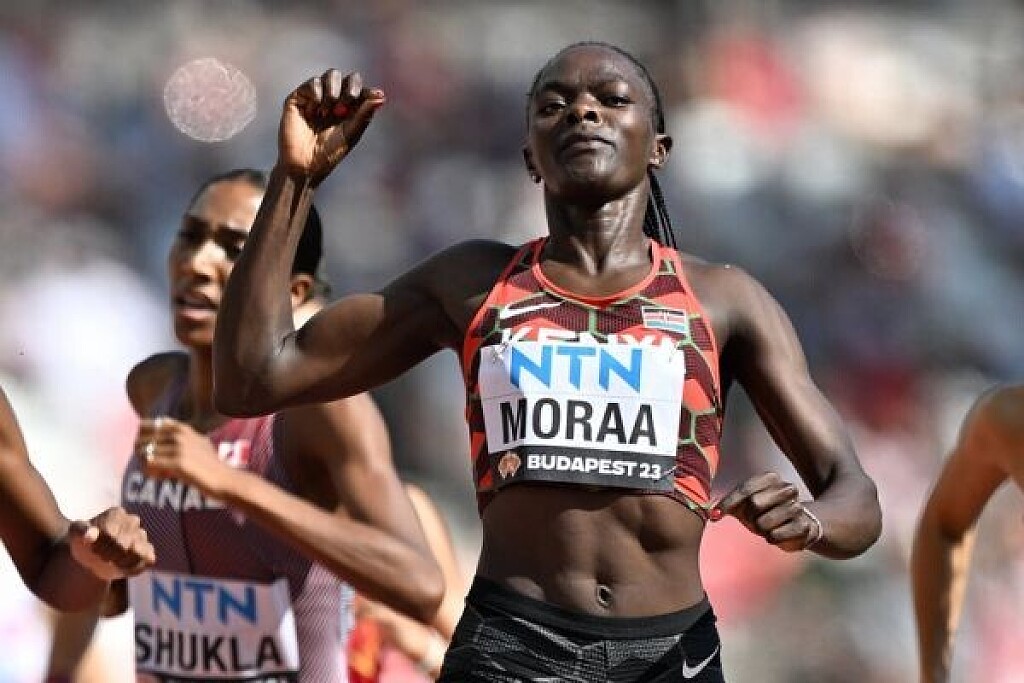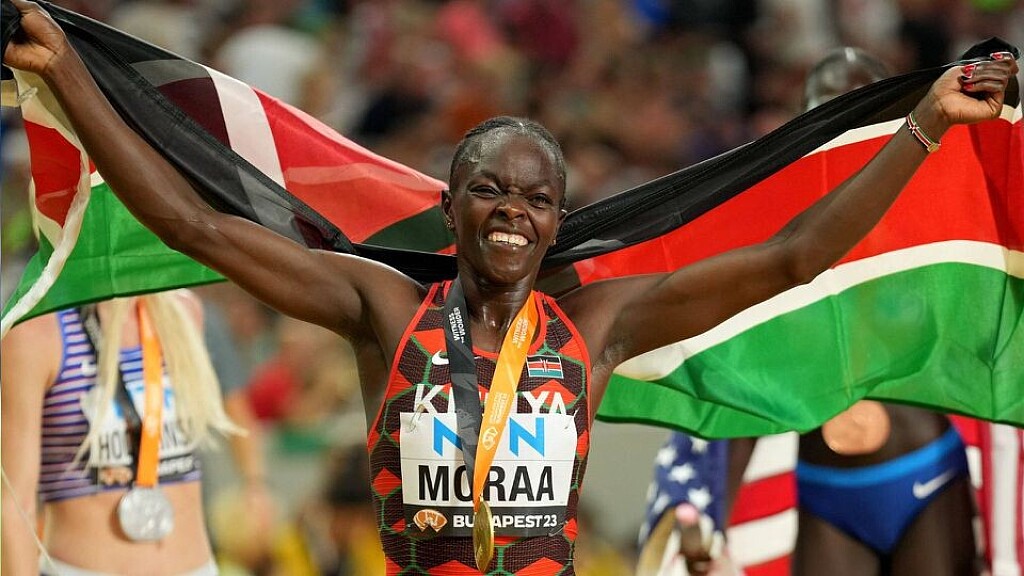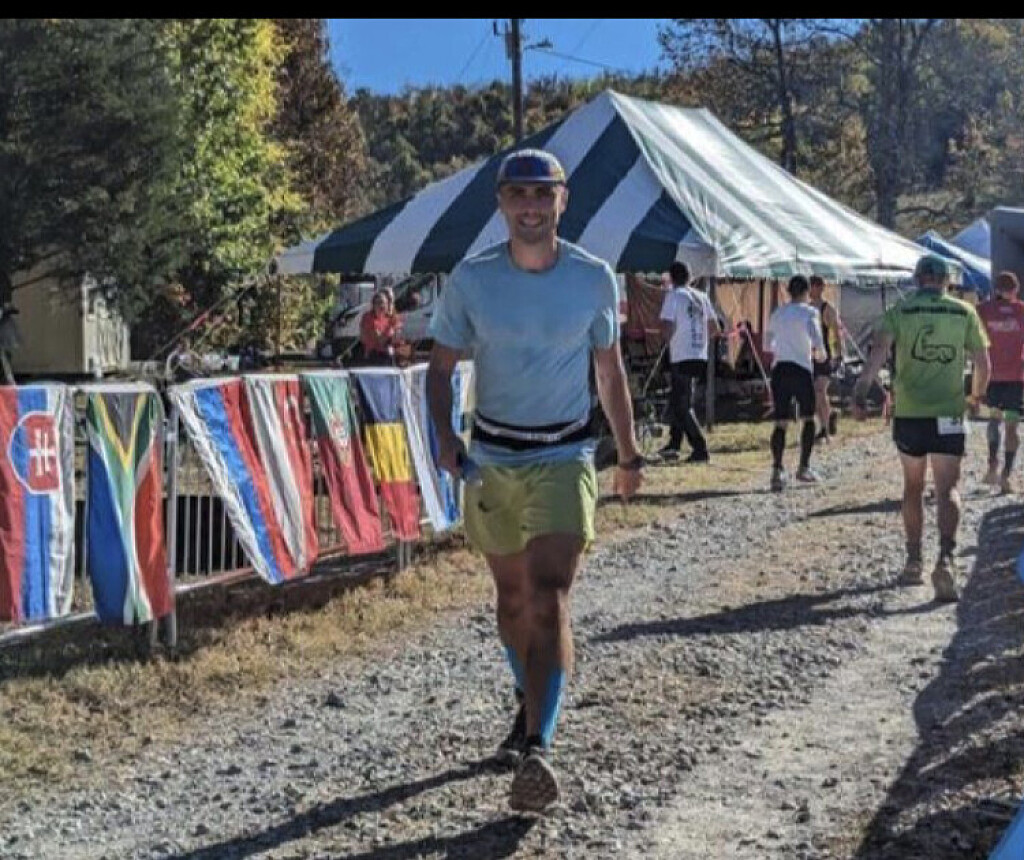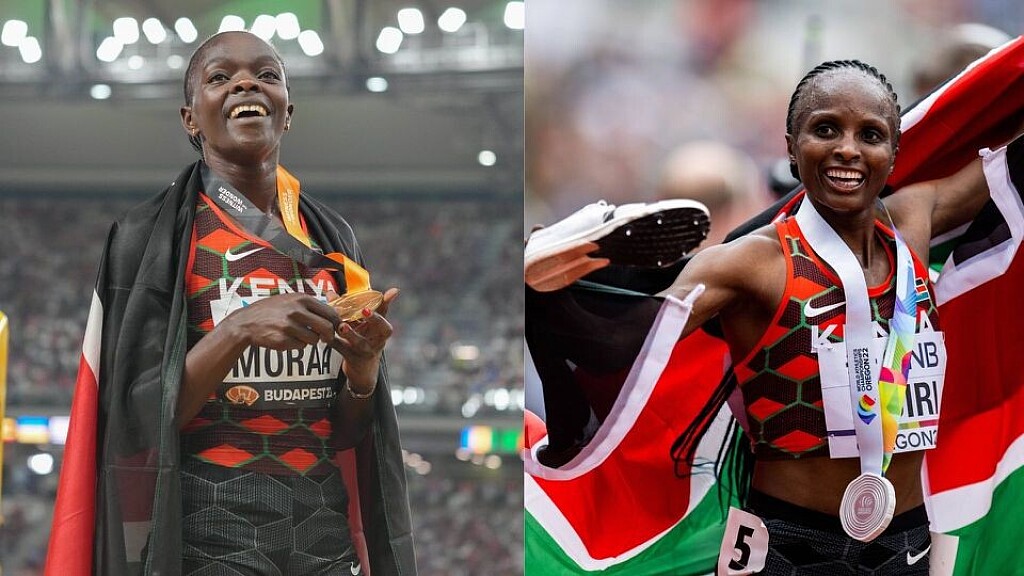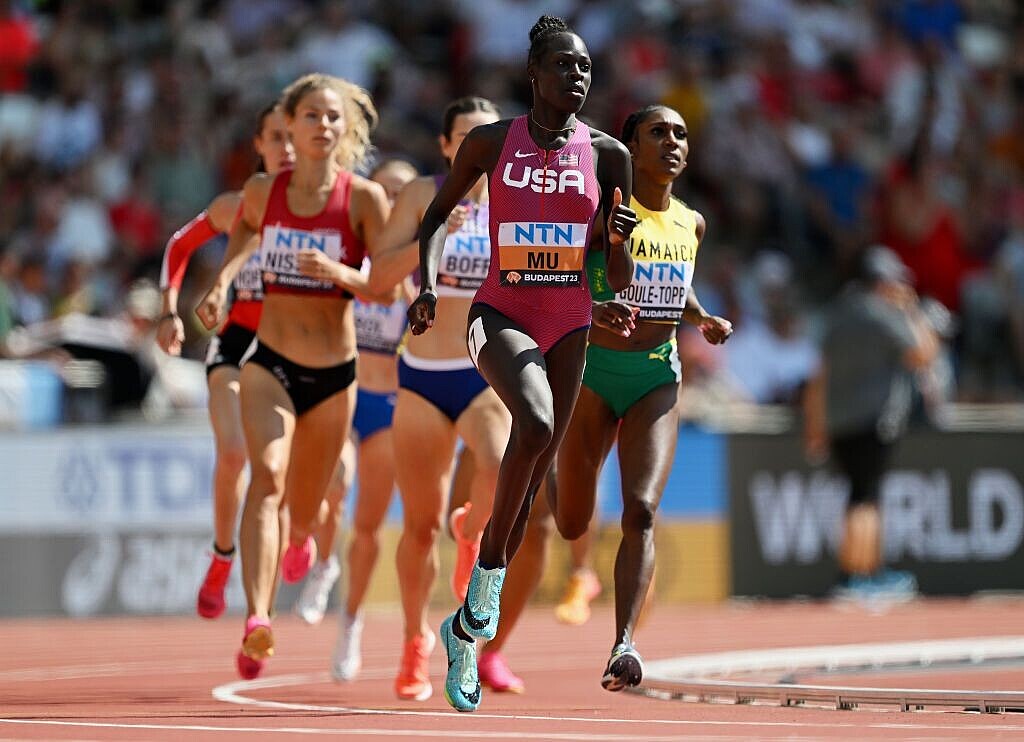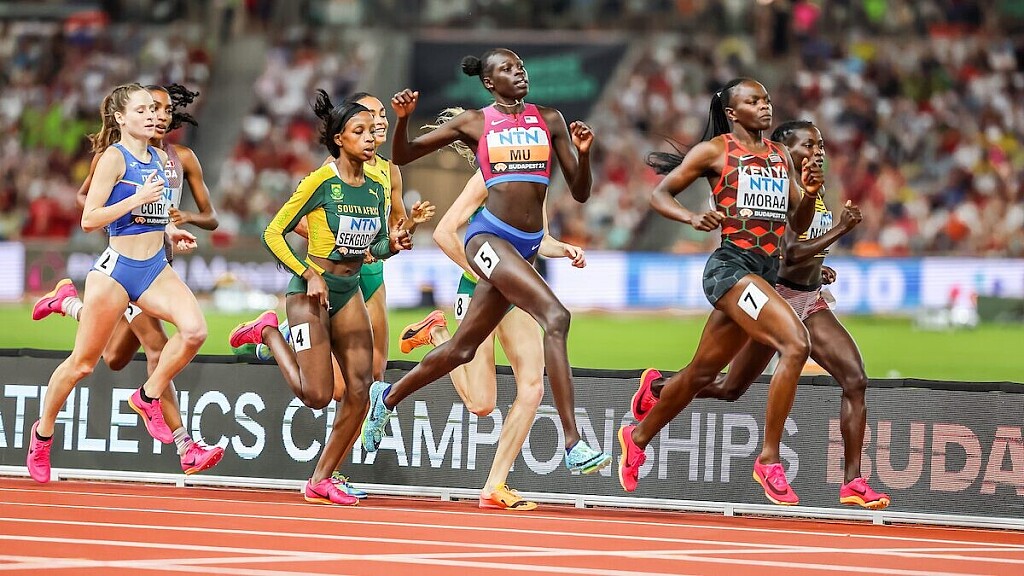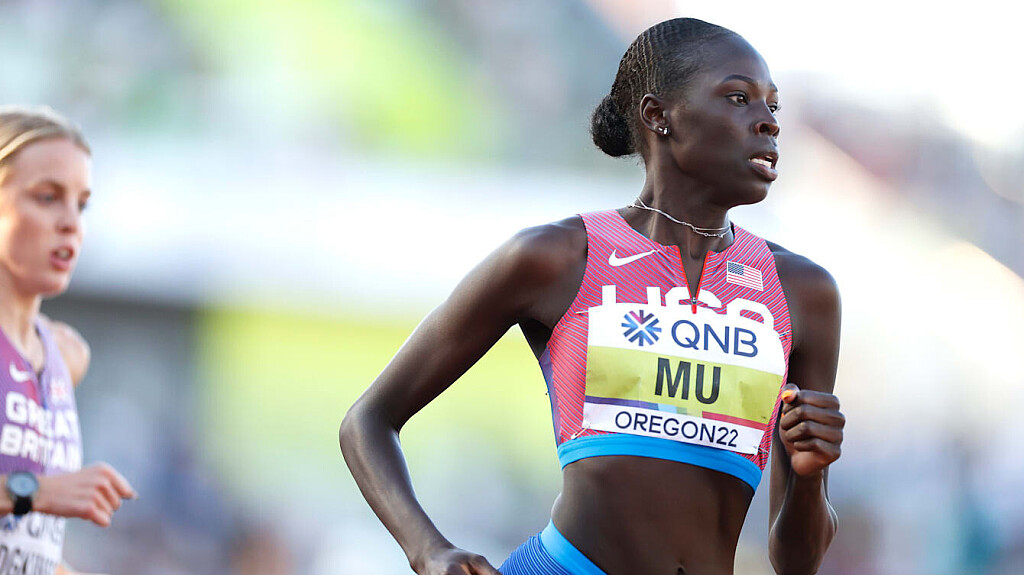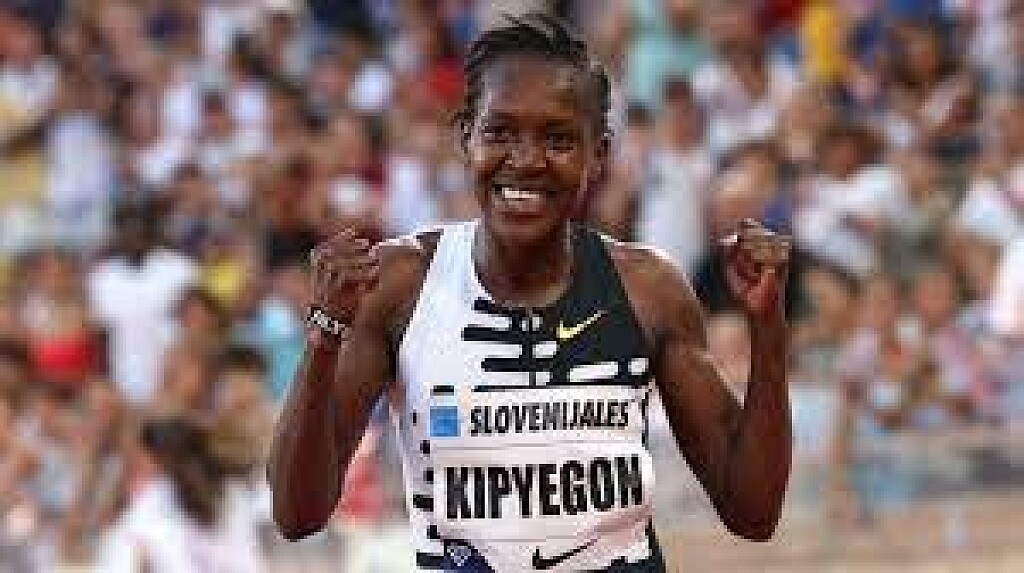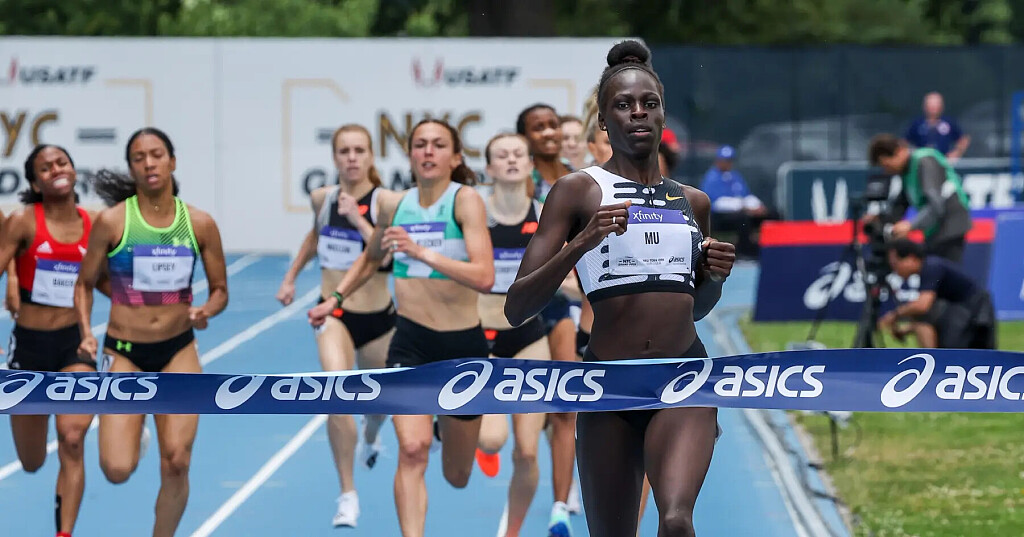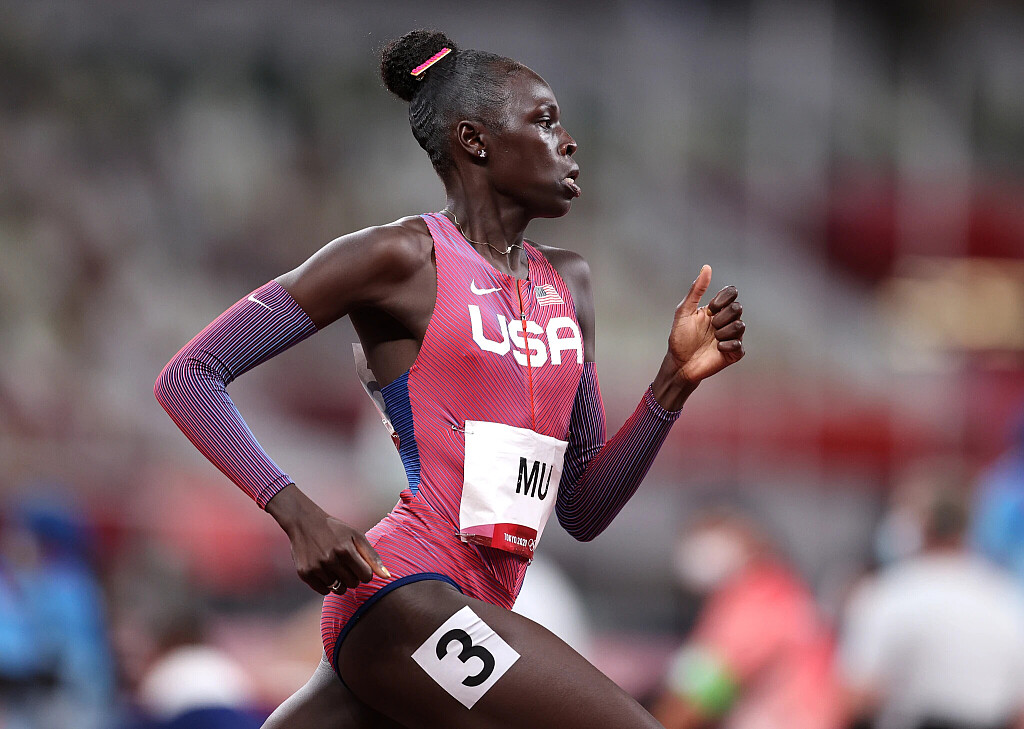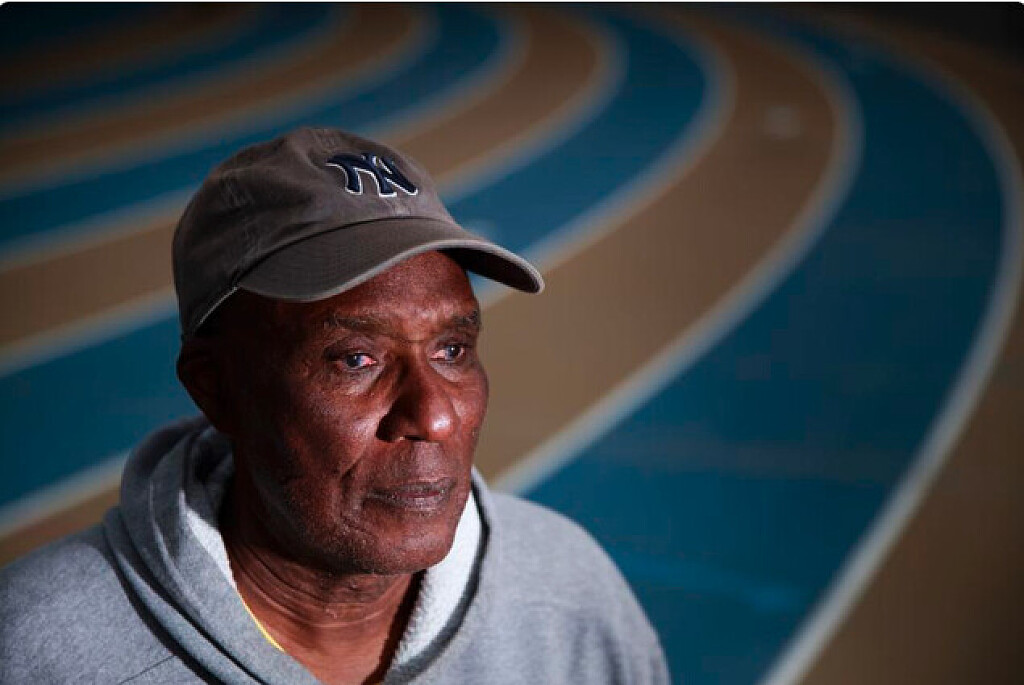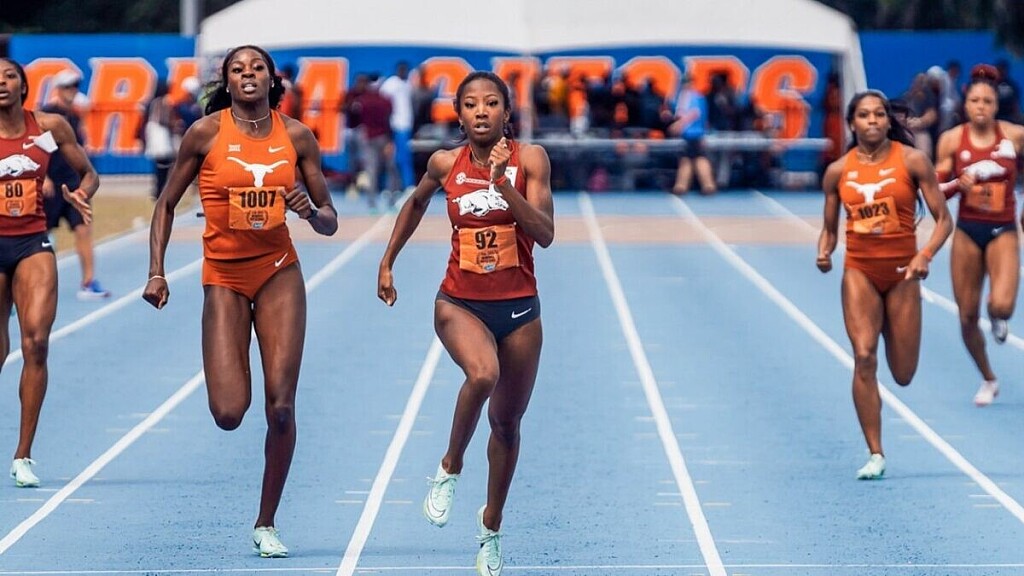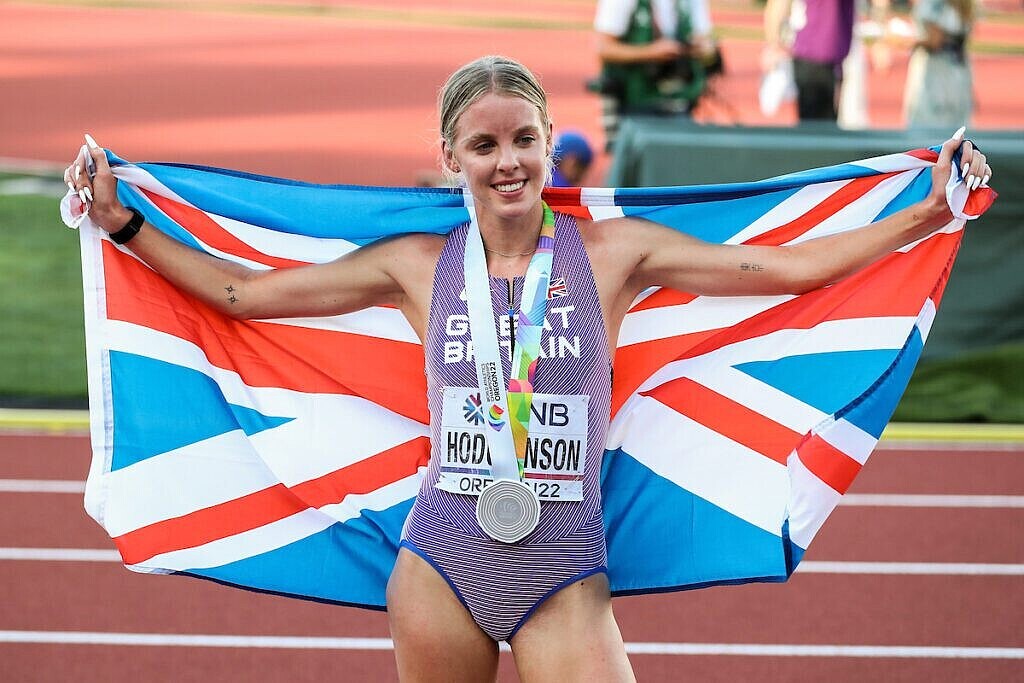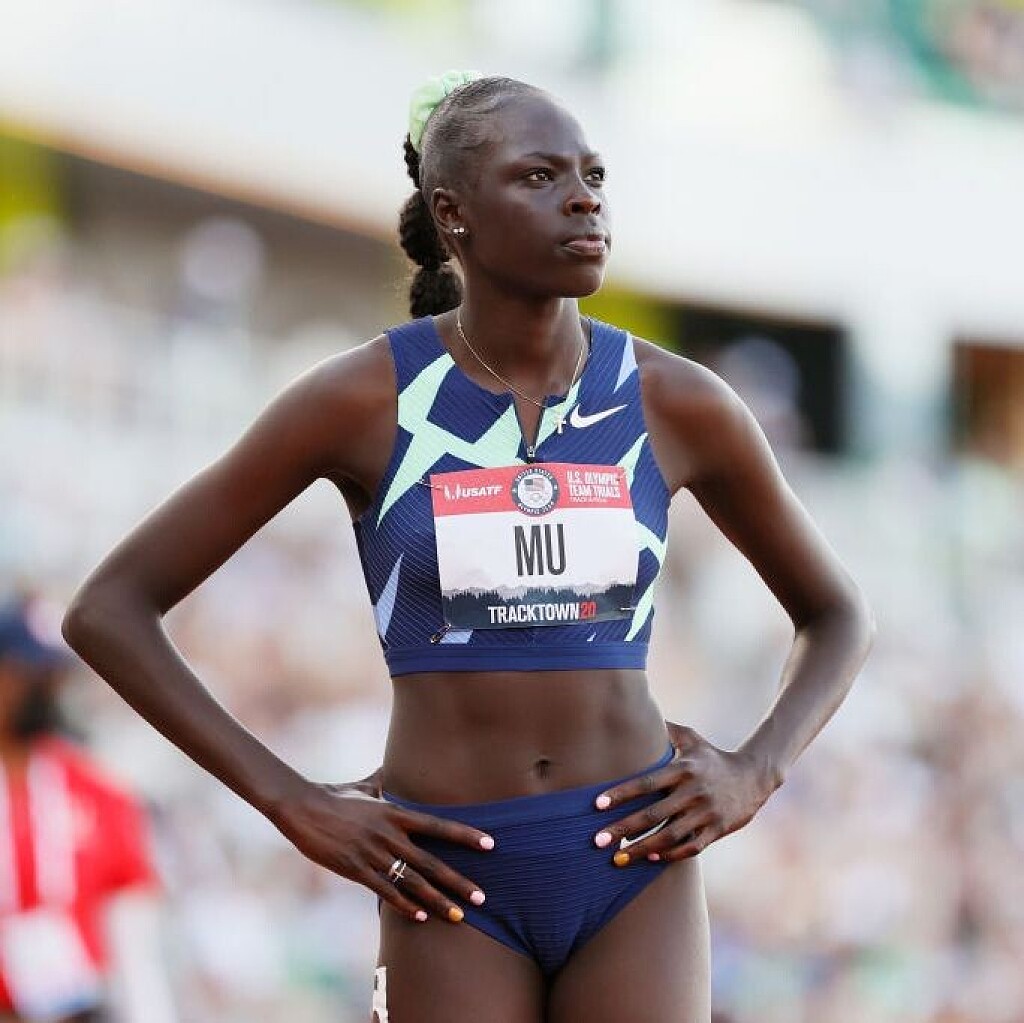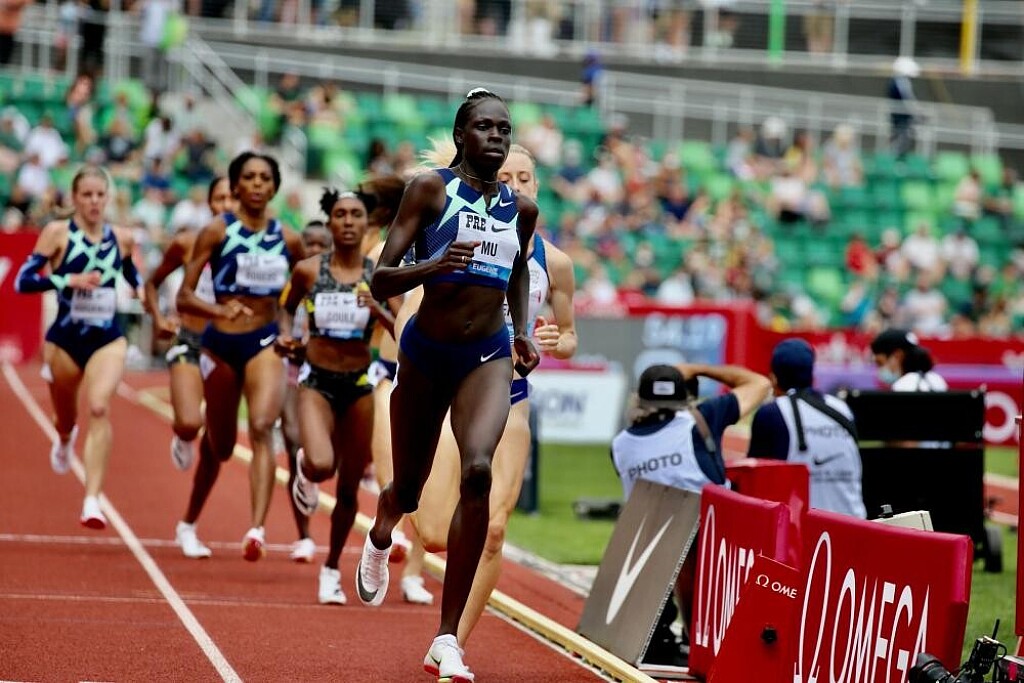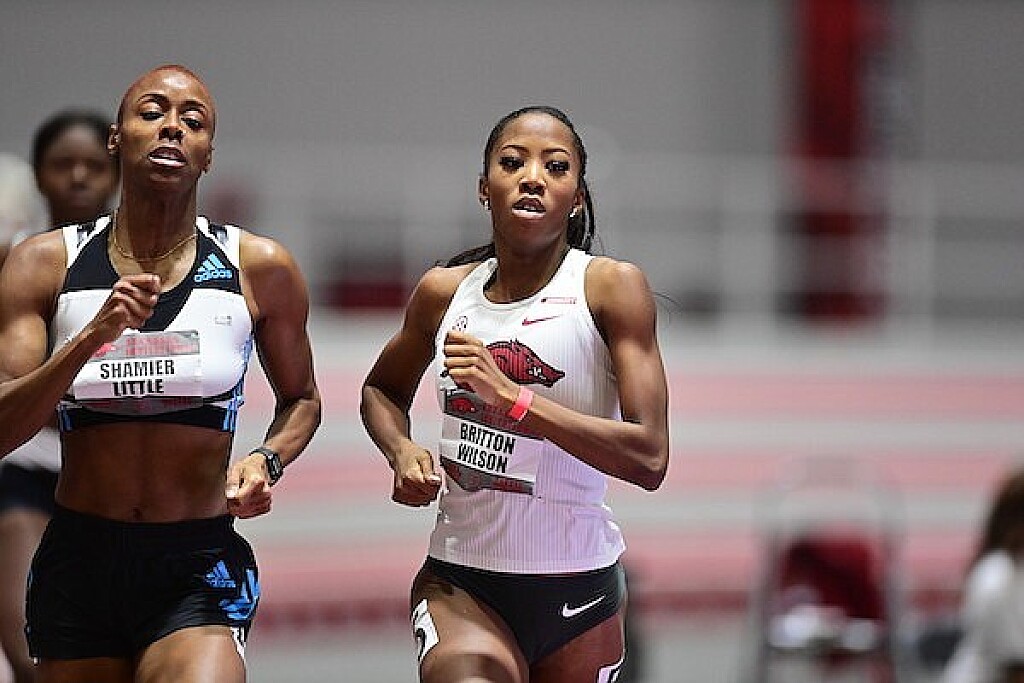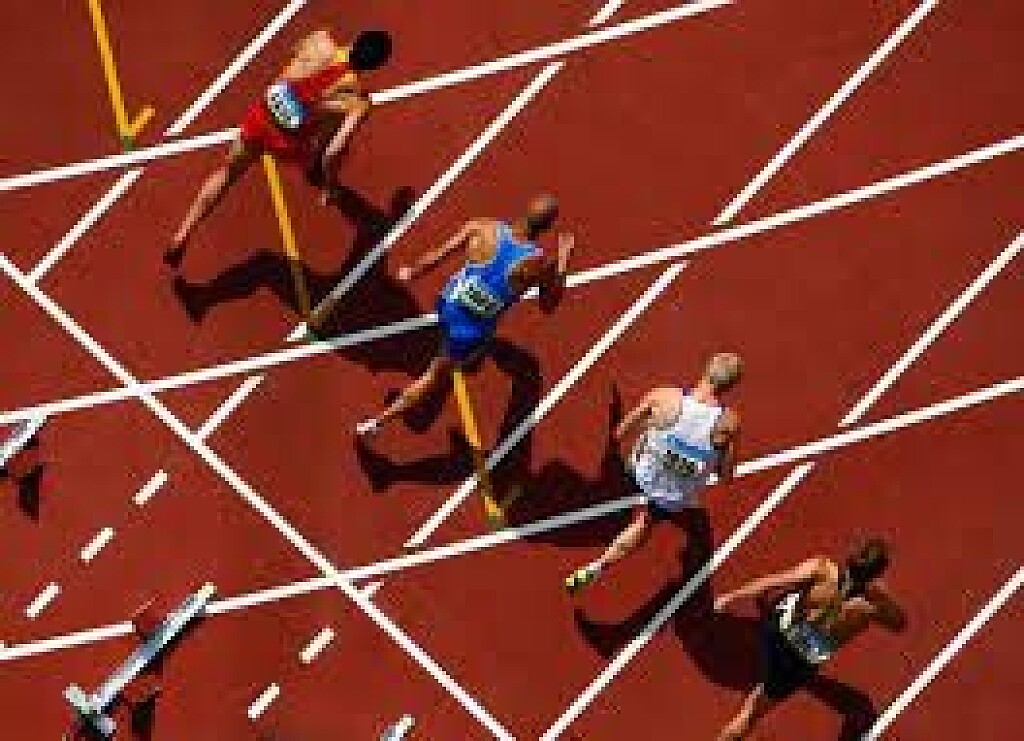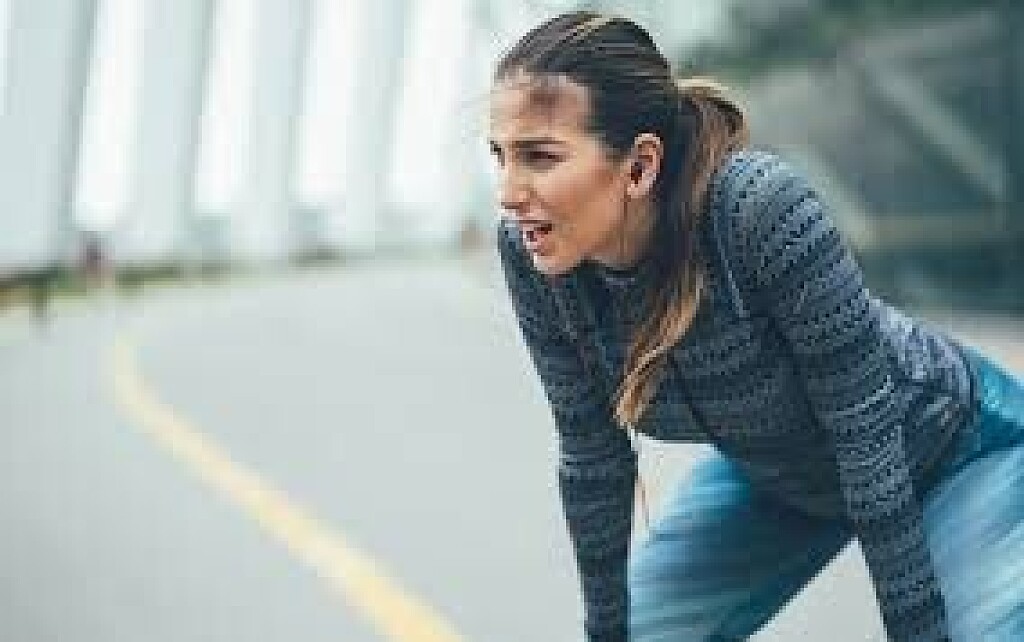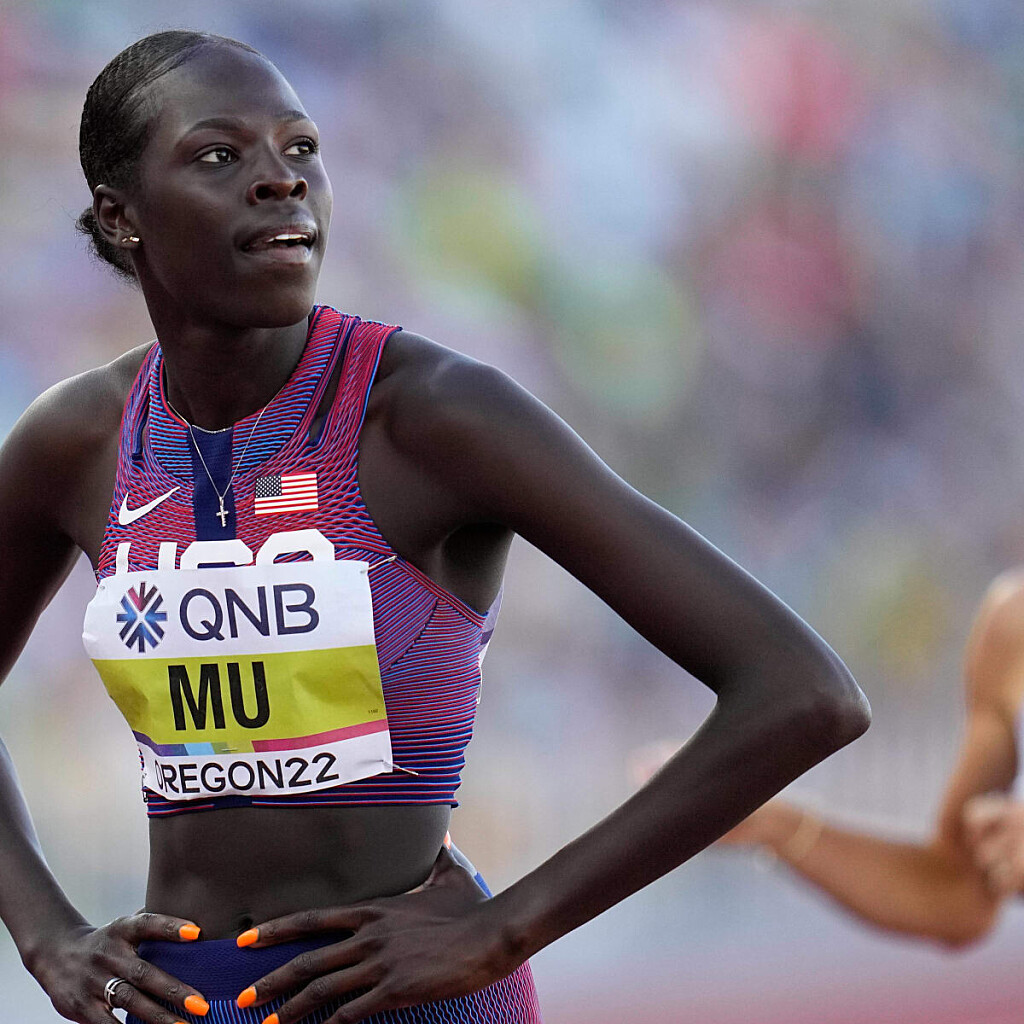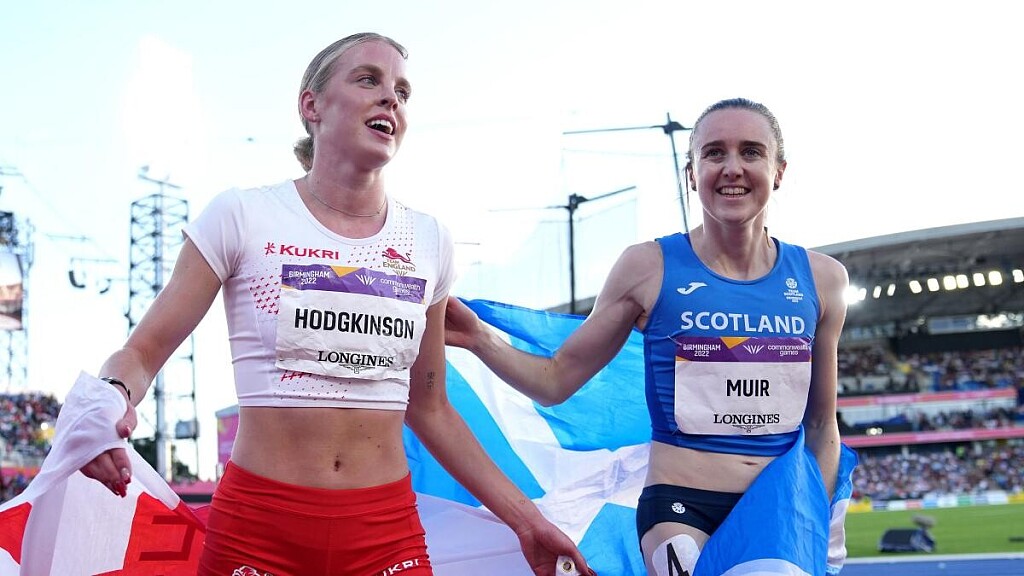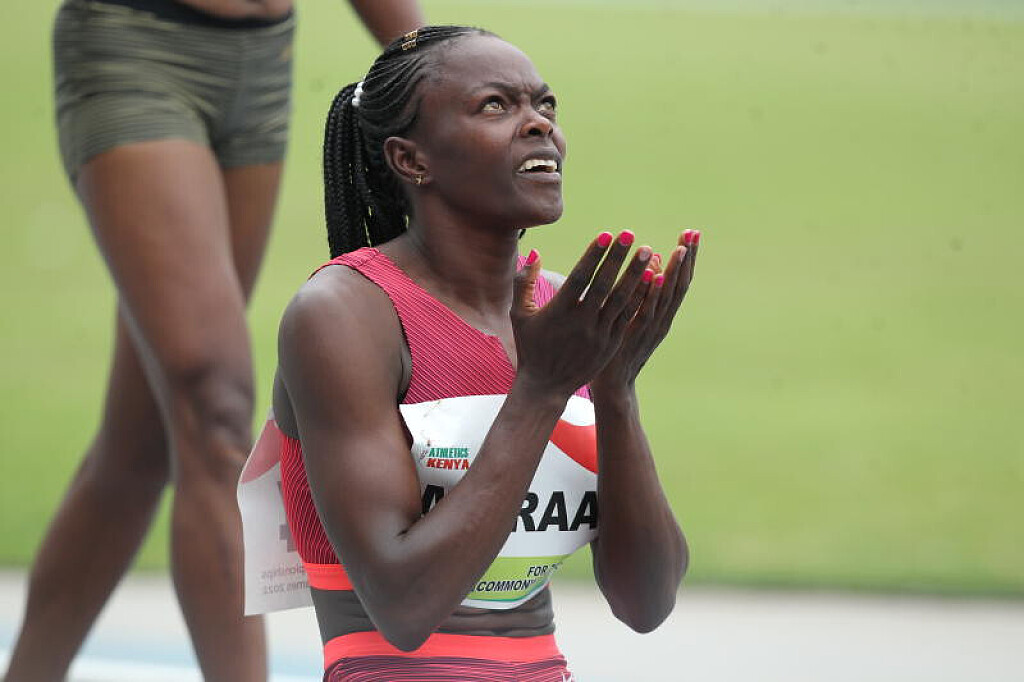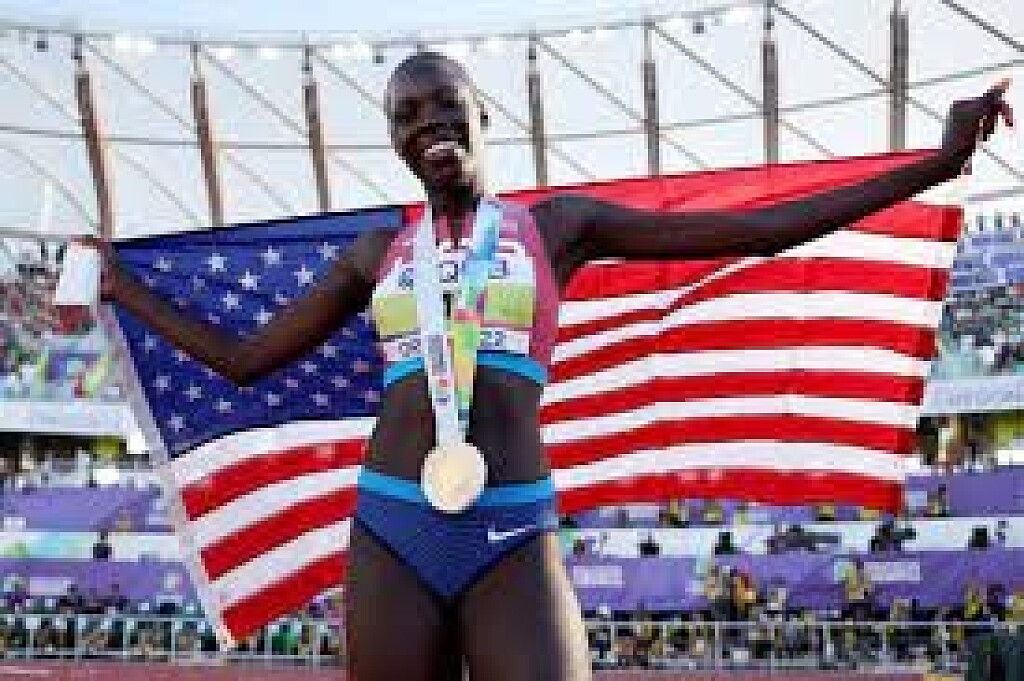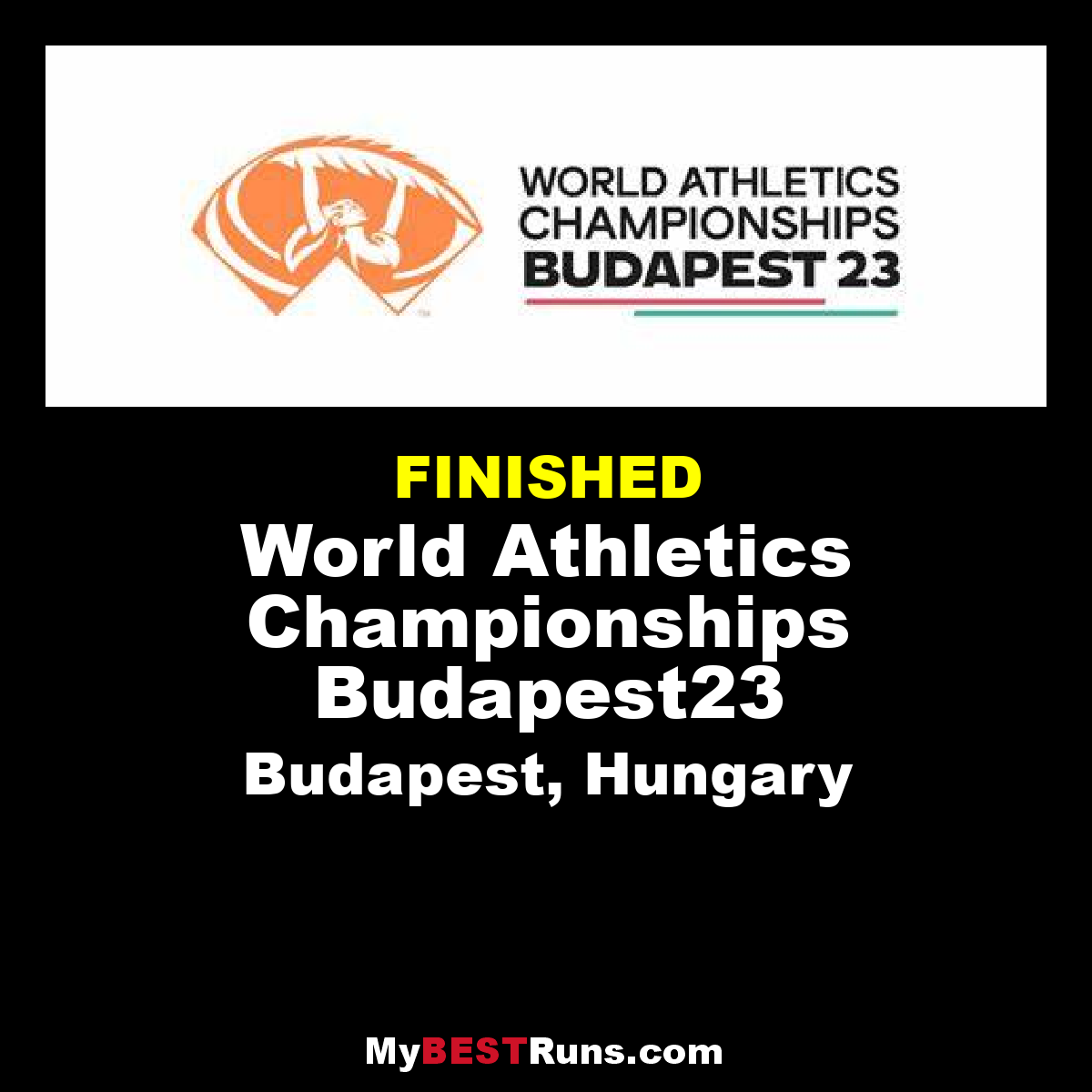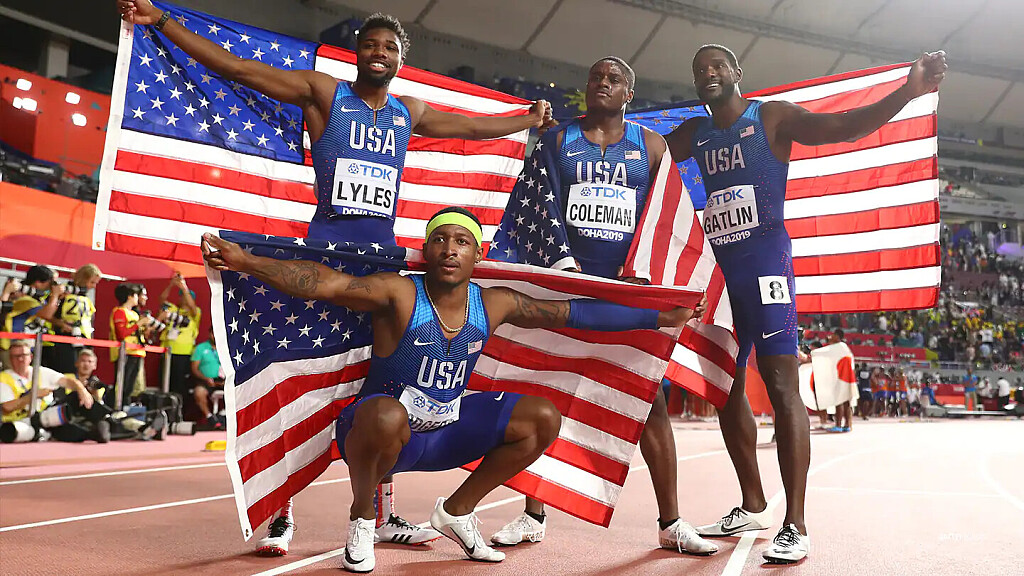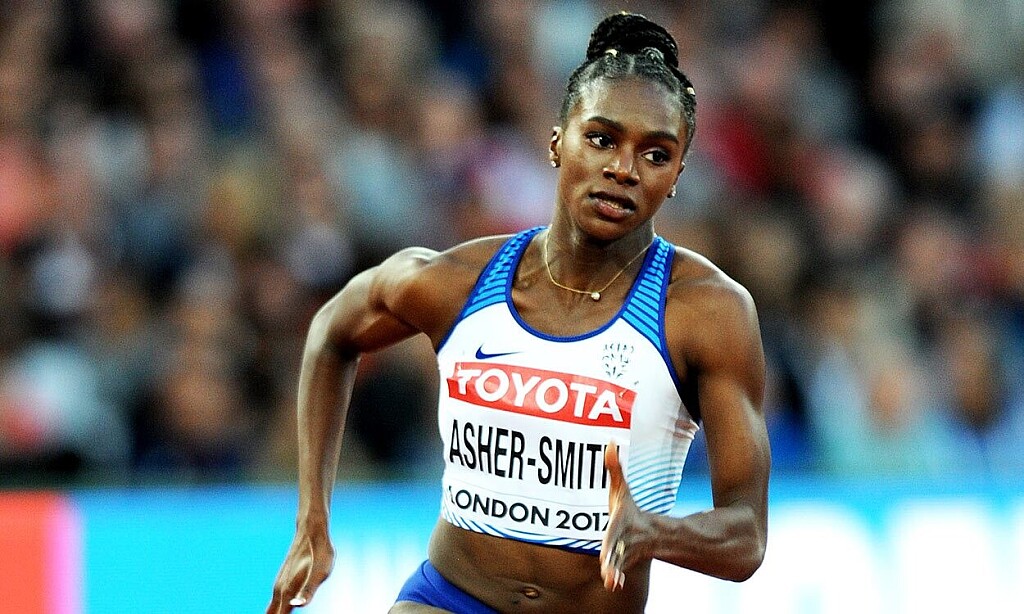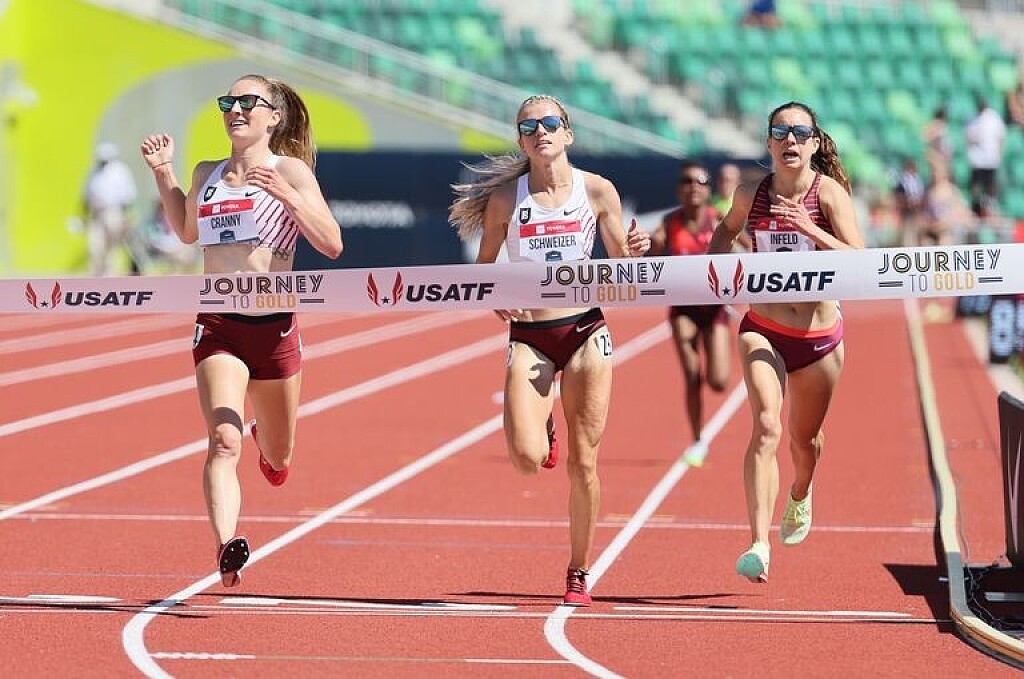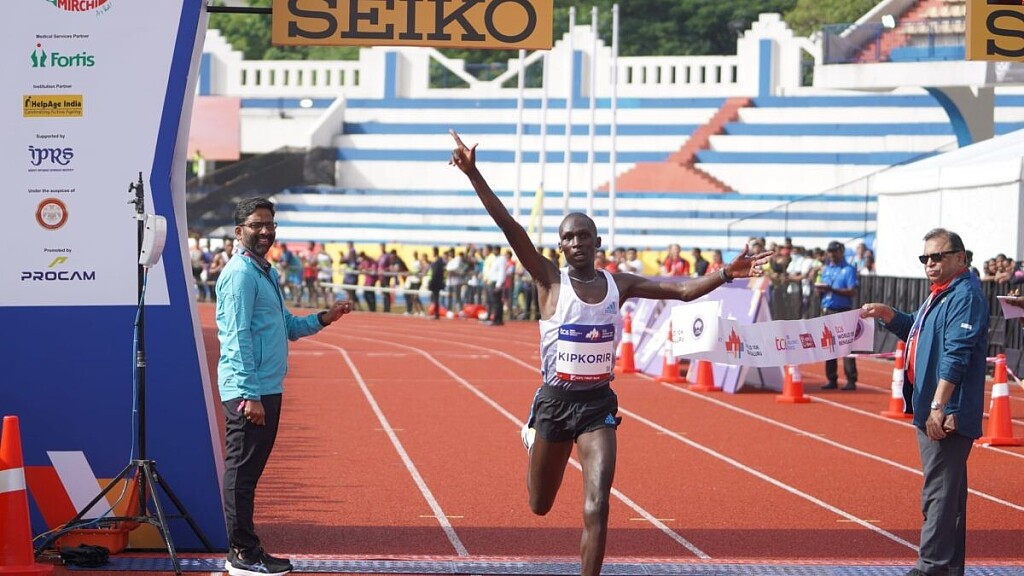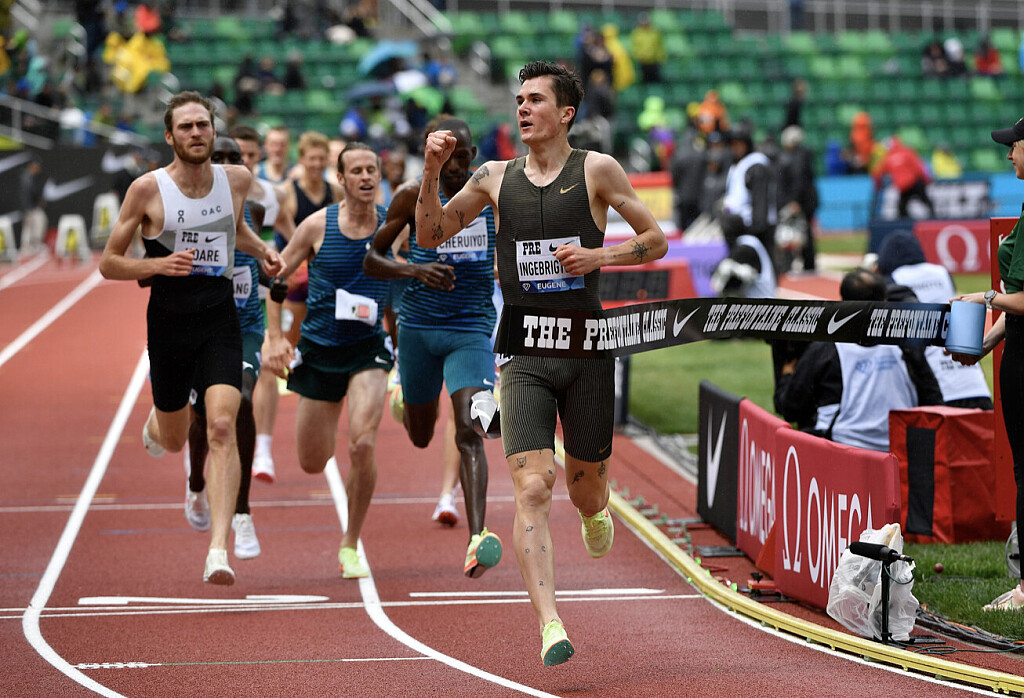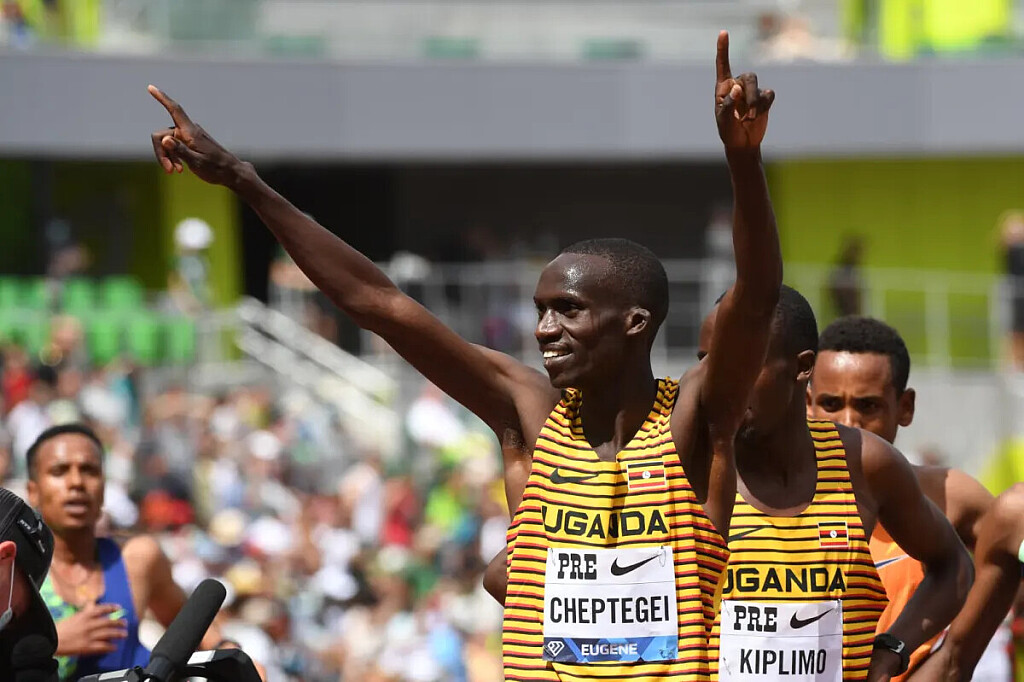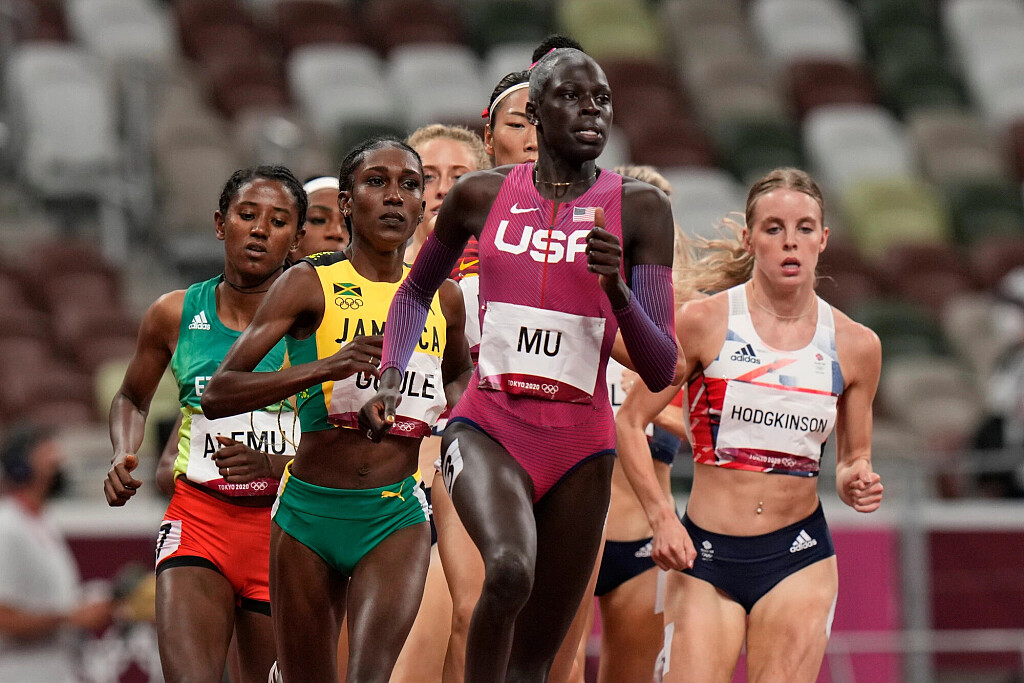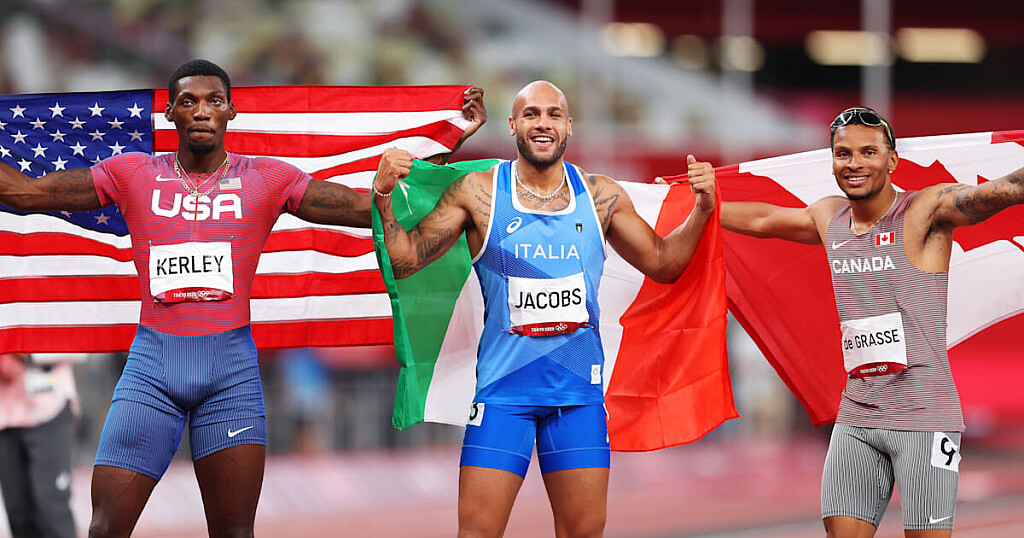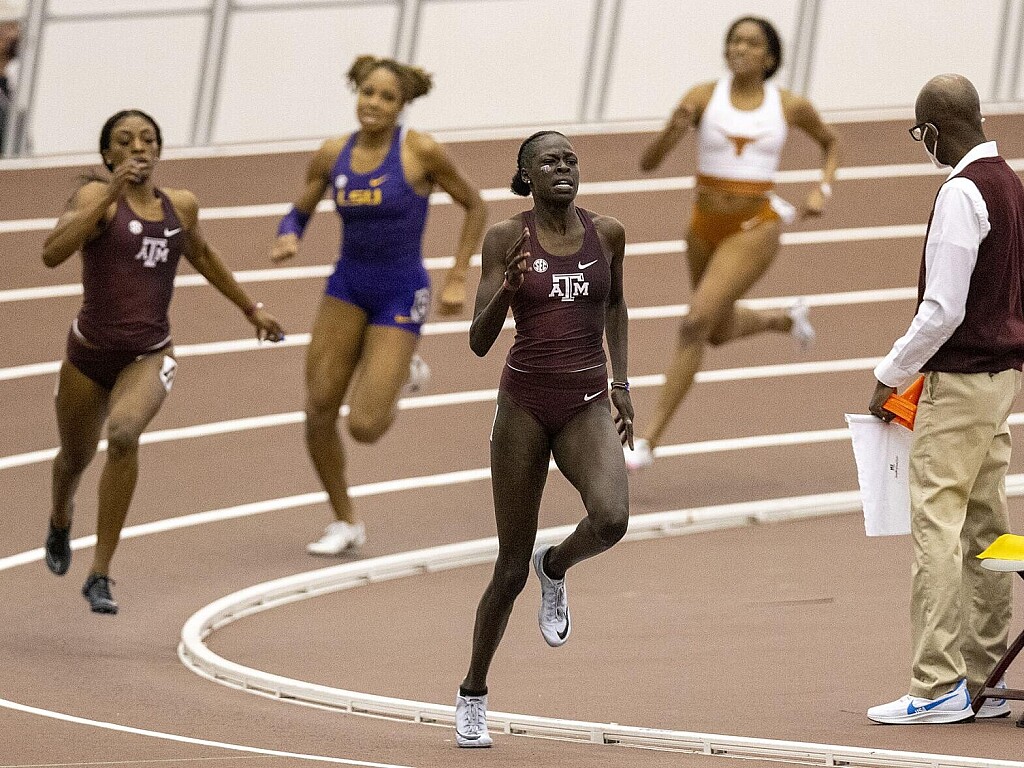Running News Daily
Running News Daily is edited by Bob Anderson. Send your news items to bob@mybestruns.com Advertising opportunities available. Train the Kenyan Way at KATA Kenya and Portugal owned and operated by Bob Anderson. Be sure to catch our movie A Long Run the movie KATA Running Camps and KATA Potato Farms - 31 now open in Kenya! https://kata.ke/
Index to Daily Posts · Sign Up For Updates · Run The World Feed
Articles tagged #Athing Mu
Today's Running News
The Untouchable Record: Jarmila Kratochvílová’s 800m Mark Still Stands 42 Years Later — But Should It?
In the fast-evolving world of athletics, records are made to be broken — except, it seems, for one. On July 26, 1983, in Munich, Czechoslovakia’s Jarmila Kratochvílová ran an astonishing 1:53.28 in the women’s 800 meters. Four decades later, that time remains the oldest unbroken individual world record in track and field history.
It has withstood super spikes, altitude training, hyper-focused coaching, and the world’s most gifted middle-distance runners. Olympic champions like Caster Semenya and Athing Mu have come close, but none have truly threatened it. Which begs the question — how did a performance like this come to be? And should it still be recognized?
A Record Born in a Different Era

Kratochvílová’s performance came at a time when Eastern Bloc nations, including Czechoslovakia, were deep into state-sponsored sports programs. In that era, the line between elite preparation and banned enhancement was often blurred. Many athletes from that period, particularly from East Germany and the Soviet Union, have since admitted or been linked to systemic doping programs.
While there has been no formal proof that Kratochvílová used banned substances, the context raises suspicions. Her physical appearance — muscular, powerful, and more commonly compared to male counterparts than to female contemporaries — only added to the speculation. Combined with her unprecedented strength over both 400m and 800m distances, critics argue that the performance is not only unmatched, but possibly unnatural.

Why the Doubts Persist
• Performance Gap: Her time is still more than a second faster than most modern Olympic champions — a massive difference at the elite level.
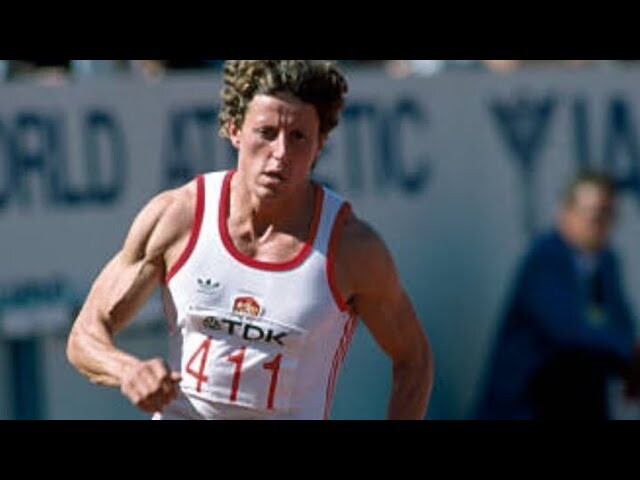
• Era of Doping: Kratochvílová competed during a time when drug testing was primitive and records were often set under questionable conditions.
• Physique & Speculation: Her highly muscular build and deep voice led some to question if she should have been eligible to compete in the women’s category — though gender testing at the time did not flag her.
• Lack of Longevity: After 1983, Kratochvílová’s presence at major championships waned. Some suggest this could point to the unsustainable nature of her peak performance.
Arguments for Letting It Stand
Supporters of the record, including Kratochvílová herself, insist that the performance was clean and the result of hard work and unconventional training. She famously avoided standard intervals and instead focused on long sessions in heavy shoes and rugged conditions. No positive test exists, and the record has survived decades of scrutiny by World Athletics.
Moreover, some point out that breaking a record doesn’t validate its legitimacy — it simply reflects the evolution of training, equipment, and talent pools. If no one has broken it yet, perhaps it’s just one of those rare, generational performances that transcends time.
Should It Be Removed?
There have been proposals — including from World Athletics — to reset all pre-2005 records due to the lack of out-of-competition drug testing during earlier decades. The suggestion faced pushback, especially from record holders who never failed a test.
But the debate continues. Some believe Kratochvílová’s 1:53.28 represents a performance that belongs to a different set of rules — and therefore shouldn’t be part of the same record book as today’s achievements. Others see it as an enduring symbol of what the human body (with or without help) once accomplished.
Final Thought
Whether you view Jarmila Kratochvílová’s 800m world record as a miraculous outlier or a relic of a flawed system, one thing is certain: it has become the ultimate benchmark. Until someone runs faster — cleanly and unquestionably — the debate will rage on. And with every passing year, this 1983 run becomes less of a record and more of a legend.
by Boris Baron
Login to leave a comment
Showdowns Set to Define 2025 Diamond League Season with over 9 million in prize money
With the season opener just days away, rivalries from 800m to 10,000m are heating up on the Road to Zurich
The 2025 Wanda Diamond League kicks off on April 26 in Xiamen, China, launching a new season of high-stakes track and field action. For the world’s best middle- and long-distance runners, this marks the beginning of the Road to the Final—a journey that will culminate in Zurich on August 27–28.

And if the early headlines are any indication, the upcoming season will be nothing short of electric.
Ingebrigtsen vs. Kerr: A Rivalry Rekindled
One of the fiercest rivalries in the sport will light up the men’s 1500m once again as Jakob Ingebrigtsen and Josh Kerr go head-to-head at the London Diamond League on July 19.

Their tension has been simmering since Kerr stunned Ingebrigtsen to win the world title in Budapest in 2023. The Norwegian responded with a strong victory in Zurich, but the scoreboard is far from settled.
Ingebrigtsen, now chasing his fifth career Diamond League title, will also line up against Olympic medalists Yared Nuguse and Cole Hocker in the Bowerman Mile at the Prefontaine Classic in Eugene on July 5, setting up another world-class clash.
Doha’s Steeplechase Rematch
The women’s 3000m steeplechase promises a rematch of Olympic proportions in Doha, where Winfred Yavi will face off against fellow medalists Peruth Chemutai and Faith Cherotich.

Yavi, the reigning Olympic champion, came within a whisker of the world record in Rome last season, while Cherotich enters 2025 as the Diamond League titleholder. Their early-season clash in Qatar could set the tone for one of the most compelling storylines in women’s distance running.
Eyes on Rome: A Distance-Lover’s Dream
The Pietro Mennea Golden Gala in Rome on June 6 is already shaping up to be one of the key middle- and long-distance showpieces of the year.
While final entries are still being confirmed, the women’s 800m is expected to feature a powerhouse lineup, potentially including Keely Hodgkinson, Athing Mu, and Mary Moraa. On the men’s side, stars like Emmanuel Wanyonyi, Marco Arop, and Djamel Sedjati are expected to battle for points in a crowded field of Olympic contenders.
Rome, known for producing fast times and historic finishes, could once again deliver career-defining performances.
2025: A Season Built for Distance Drama
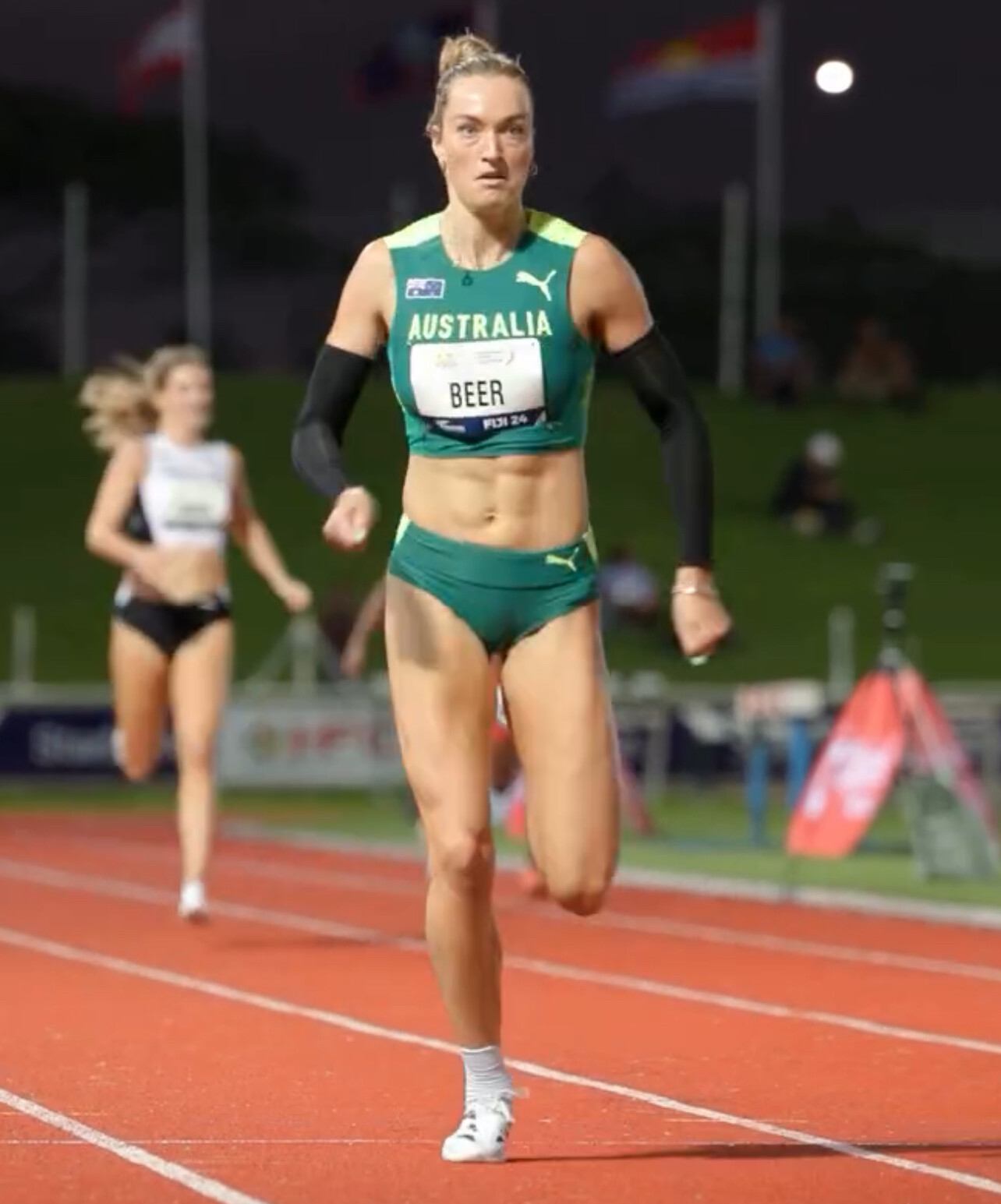
The Wanda Diamond League includes 14 series meets across four continents, leading to the two-day Final in Zurich, where only the top point-earners will compete for the Diamond Trophy. With increased prize money—ranging from $30,000 to $50,000 per discipline at series meetings and $60,000 to $100,000 at the Final—and millions watching worldwide, every race matters.
2025 is already shaping up to be a banner year for middle- and long-distance running. With fierce rivalries, Olympic-level fields, and rising stars chasing career breakthroughs in the 800m, 1500m, mile, steeplechase, 5000m, and 10,000m, the stage is set for one of the most thrilling Diamond League seasons yet.
by Boris Baron
Login to leave a comment
Mary Moraa 'back to the grind' ahead of tough 2025 season
Mary Moraa has resumed training as she plans to defend her world title amid the rise of strong 800m runners including Keely Hodgkinson and Athing Mu.
Mary Moraa has resumed training ahead of a tough 2025 season where she has a huge task of defending her world title at the World Championships in Tokyo, Japan.
The reigning world champion will battle for the title alongside very formidable 800m runners who have emerged this season. The Commonwealth Games champion lines up against Keely Hodgkinson, Tsige Duguma and Athing Mu alongside other 800m athletes.
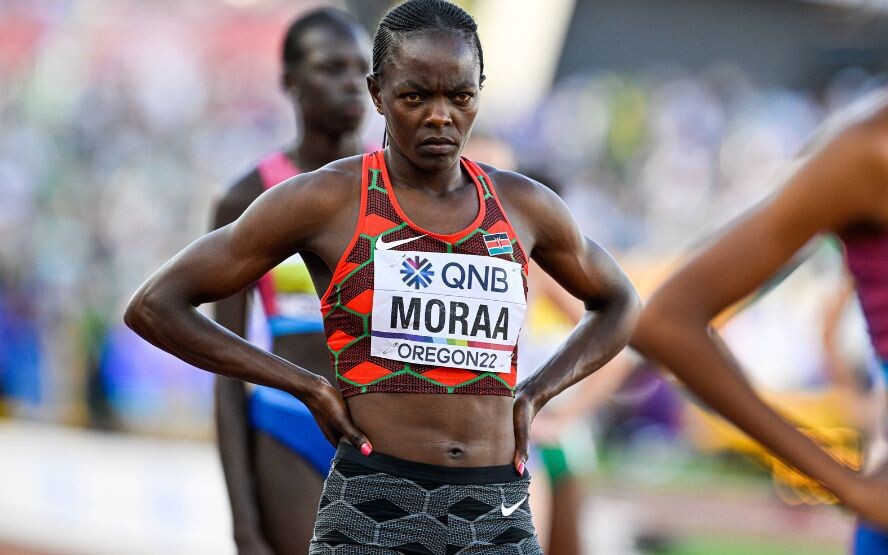
Mary Moraa had a mixed season this year and she will be looking to work on the finer things so as to be ready next season. She was off to a great start to her season, winning the 400m at the African Games then anchored the 4x400m mixed relay team to a bronze medal.
The Kenyan 800m star then proceeded to claim the win at the Kip Keino Classic before reigning supreme at the Diamond League Meeting in Doha and finished second at the USATF Los Angeles Grand Prix and Prefontaine Classic.
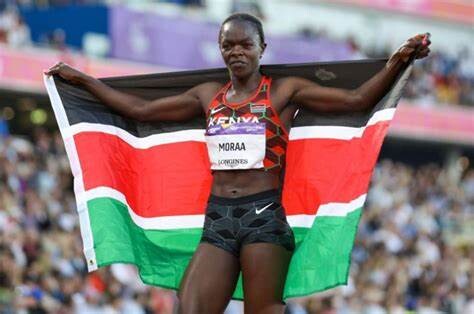
Moraa then finished second at the Kenyan Olympic trials and then won the bronze medal at the Paris Olympics. She bounced back to take the win at the Diamond League Meeting in Lausanne and finished third in Silesia. She won the 600m in a world best time at the ISTAF 2024 and then claimed wins in Zurich and the Diamond League Meeting final in Brussels.
Mary Moraa rounded up her season with a second-place finish at the Athlos NYC. Going back into training, she hopes to polish a lot of things and bounce back stronger to maintain a winning streak in 2025.
“It's about time...back to the grind ?,” Mary Moraa shared in a post on her Facebook page, adding, “Nice morning cruise with Brandon and the gang after a deserved break.”
Her competitors are also not resting on their laurels with Keely Hodgkinson, the reigning Olympic champion, making it clear that she will be going for the world title since it’s one of the titles she has yet to win.
Her coaches, Jenny Meadows and Trevor Painter have also revealed that she will be attacking both the indoor and outdoor world records in the near future.
“There’s no silvers and bronzes, now we have to do gold all the way forward, we don’t want to take any backward step and I just hopefully think that Keely can dominate and we’ve got the indoor world record to go at and in the next couple of years we’ll go after the tough world record. I think she can do it,” Jenny Meadows said.
“If she’s got the leg speed to get closer to her rivals, then they can’t out strength her so it was magic. The indoor one is easier to get than the outdoor but we’ll have a crack of both and see what happens,” Trevor Painter added.
On her part, after a heartbreaking 2024 season marred with injuries and missing out on the Paris Olympic Games, Athing Mu has already started preparation for the 2025 season.
The former world champion noted that the World Championships are her major target for the season and she is working towards making it through the trials and then heading to Tokyo.
“Well, trackwise we have the World Championships in September next year and it’s in Tokyo…first of all I pray we make it through trials and then we make it to that race,” Athing Mu said.
“I feel like it’s going to be a circle moment for me because that’s basically where I started and then I had some highs and lows.”
by Abigael Wafula
Login to leave a comment
Athing Mu finally opens up on the pain of failing to make US team to Paris 2024 Olympics
Athing Mu reflected on her challenging season, marked by injuries and disappointment at the US Olympic trials, but remains hopeful, trusting in her faith for a major comeback.
Athing Mu has for the first time expressed her emotions after her unfortunate fall at the US Olympic trials earlier this season.
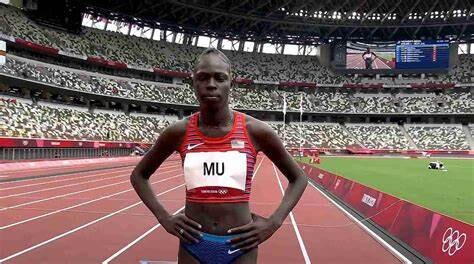
The former Olympic 800m champion got an injury earlier in the season and had to start her campaign at the US Olympic trials. She had been confirmed to open her season at the Prefontaine Classic but had to withdraw due to the injury.
Mu was off to a great start at the trials, finishing third in her heat before winning the semifinal. In the final, the unfortunate happened as she fell down and faded to a ninth-place finish. Athing Mu tried to bounce back at the Holloway Pro Classic but could only afford a fifth-place finish and ended her season there.
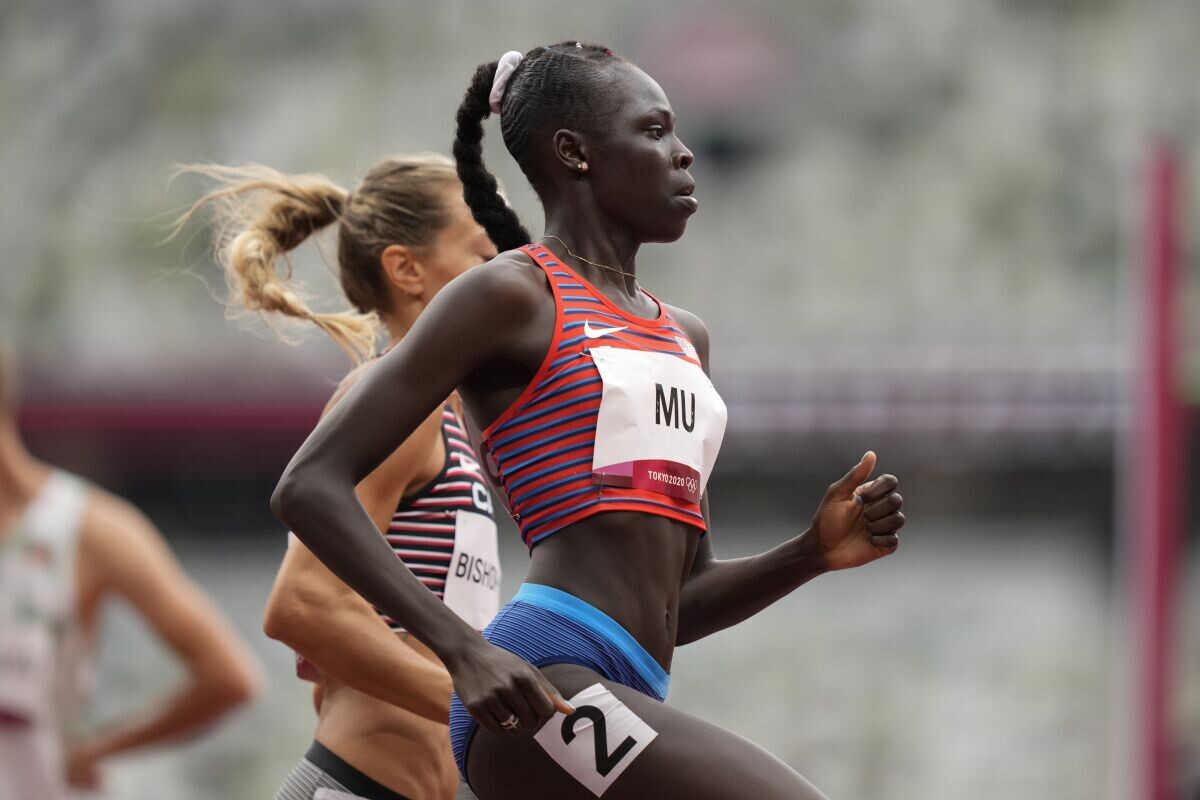
Speaking on the Jinger and Jeremy Vuolo show, Athing Mu pointed out that her season turned out awful and it was something she never expected. She was hopeful of defending her title but after the injury, reality started dawning on her that she might the Olympic Games.
However, she felt ready to get back to the track at the US Olympic trials and making it to the final was a confidence booster for her but things did not go as planned in the final.
“Olympic trials were a very tough time and I guess, just this whole in season part of the year has been really tough because a lot of things have happened, leading up and then post-Olympic trials. About six weeks before the Olympic trials, I tore my hamstring and that was the first thing we needed to heal from before going into the Olympic trials,” Athing Mu said.
“When that happened, I was still kind of hopeful about the Olympic trials but I didn’t know what was going to happen but the idea of going and winning was a little bit diminishing because I knew that healing a hamstring was a pretty tough injury to speed up.
“Making it to the Olympic trials was great and I gained a little bit of confidence throughout the rounds and then running the final, super unfortunate, I did not expect that to happen at all. I was absolutely distraught but finishing the race, I can’t really say,” she added.
After the Olympic trials, she dealt with a lot of emotions before finally getting back into training. After a few training sessions in Europe, she got another injury and could not continue with her season.
She revealed that having to end her season in such a way was devastating but she had to trust in her strong faith.
“I actually broke down a little bit and I didn’t know if I could do it and I decided to get myself together and just trust in what the LORD would do at the end of the season. when I went to train in Europe, I got another injury and knew this season was done,” she said.
by Abigael Wafula
Login to leave a comment
‘I Can. I Will. I Must:’ Mantras and Affirmations That Propel Olympic Athletes to Victory
These motivating words from Olympians—and the stories behind them—can help you get through any tough run.
For all the drama it contained—including a fall by defending Olympic champion Athing Mu—the final of the women’s 800 meters at the 2024 U.S. Olympic Track and Field Trials was over in less than 2 minutes.
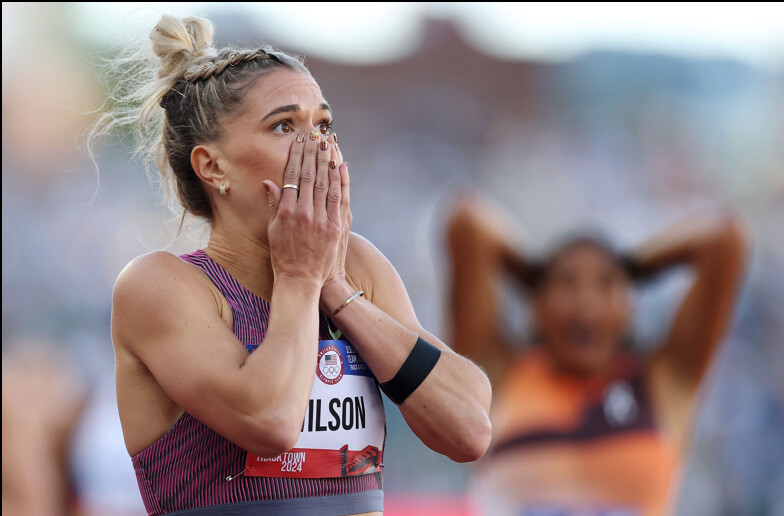
But for Allie Wilson, time stood still. “Everything, any mantra I’ve ever talked about, was rapid-fire flying through my brain,” she told Runner’s World. “‘Try to get top three.’ ‘Pass one more person.’ ‘1 percent.’ I was so calm, cool, and collected, like I’ve never felt before.”
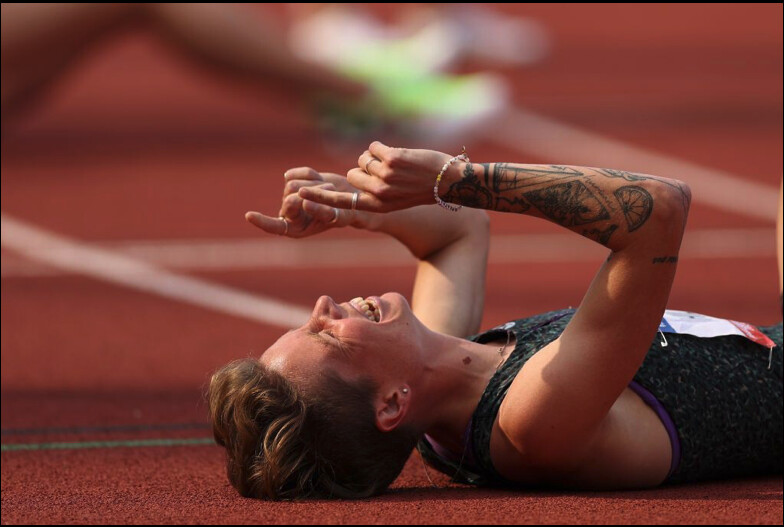
Buoyed by these confidence-boosting claims, Wilson placed second in a personal best 1:58.32 to earn a spot on Team USA.
She credits this flow state to her work with Bianca Martin, a mindset coach currently studying for her master’s degree in sport and performance psychology. Since meeting three years ago, the two have worked on many psychological aspects of performance. One of the most important, Wilson says, has been replacing negative thoughts with neutral or positive ones.
She’s far from the only track and field Olympian to use this approach to performance psychology. Many use spoken or written affirmations—statements that challenge negative thoughts and reinforce positive emotions—as well as mantras, a few words that might be repeated during a workout or race.
Here are the powerful phrases that got Wilson, 1500-meter champion Nikki Hiltz, and champion heptathlete Anna Hall to their first Olympics in Paris this summer. While mantras and affirmations tend to work best when they’re personal, you might find inspiration from their examples for your own big goals.
Looking for inspiration?
Swipe through the deck to find a mantra that resonates with you today!
Looking for inspiration?
Swipe through the deck to find a mantra that resonates with you today!
Allie Wilson’s Mantras“Just another race.”
Yes, the stakes at the Trials—and, before that, at the 2024 USA Indoor Track and Field Championships in Albuquerque in February—were higher than at most meets. But Wilson realized the more she kept her mindset and routine consistent, the better she performed.
“I’m running two laps around the track—that’s what I do every weekend,” says Wilson, a Nike athlete. “Why am I going to go berserk over it and start doing things all differently than I would, or freaking out? It’s the same thing at the end of the day; I’ve done it a million times.”
“I can win.”
In the days before the indoor championships, Wilson found herself nervously telling Martin she knew what was going to happen. Just like at every other major competition, she’d likely give it her all but come up just short. Martin stopped her and ordered her to say the opposite instead: “I can win.”
Wilson hesitated, but Martin insisted. “I would sit there and I wouldn’t speak for 10 seconds. And eventually, I would say it,” Wilson says.
Thanks to all that practice, it didn’t take nearly as long for the thought to surface during the race itself. “When it got really hard, all of a sudden, I was like, ‘Oh my god, I can win it,’” Wilson says—and she did, in 2:00.63.
“1 percent.”
With competition like Mu, who’s also the American record holder, in the race at the team trials, Wilson knew winning would take a fast time. And she wasn’t sure she could keep the pace—though her personal best was 1:58.09, in 2022, she’d only run one race faster than 2 minutes since that summer.
Martin had her calculate what time would result if she ran just 1 percent faster than her best time this season. Wilson figured out it was 1:59 with a few milliseconds. “That struck a chord with me. I was like, ‘Wow, 1 percent is so little, but it makes such a big difference,’” she says. After that, she told herself: “Even when you think you’re trying your hardest, try 1 percent harder.”
“Why not you?”
Thanks to all the work she’d done in the lead-up, Wilson says she had fewer negative thoughts during the Trials than she used to. But she still couldn’t help but express a few doubts. When she did, Martin reminded her that any three women in the final could go to the Olympics. “Why not you?” she asked Wilson.
“That was probably the one I was using on the starting line the most,” Wilson says. “I told myself, it could be any combination of three. I only have to beat six people and then I could be one of them.”
Allie Wilson’s Mantras
“Just another race.”
Yes, the stakes at the Trials—and, before that, at the 2024 USA Indoor Track and Field Championships in Albuquerque in February—were higher than at most meets. But Wilson realized the more she kept her mindset and routine consistent, the better she performed.
“I’m running two laps around the track—that’s what I do every weekend,” says Wilson, a Nike athlete. “Why am I going to go berserk over it and start doing things all differently than I would, or freaking out? It’s the same thing at the end of the day; I’ve done it a million times.”
“I can win.”
In the days before the indoor championships, Wilson found herself nervously telling Martin she knew what was going to happen. Just like at every other major competition, she’d likely give it her all but come up just short. Martin stopped her and ordered her to say the opposite instead: “I can win.”
Wilson hesitated, but Martin insisted. “I would sit there and I wouldn’t speak for 10 seconds. And eventually, I would say it,” Wilson says.
Thanks to all that practice, it didn’t take nearly as long for the thought to surface during the race itself. “When it got really hard, all of a sudden, I was like, ‘Oh my god, I can win it,’” Wilson says—and she did, in 2:00.63.
“1 percent.”
With competition like Mu, who’s also the American record holder, in the race at the team trials, Wilson knew winning would take a fast time. And she wasn’t sure she could keep the pace—though her personal best was 1:58.09, in 2022, she’d only run one race faster than 2 minutes since that summer.
Martin had her calculate what time would result if she ran just 1 percent faster than her best time this season. Wilson figured out it was 1:59 with a few milliseconds. “That struck a chord with me. I was like, ‘Wow, 1 percent is so little, but it makes such a big difference,’” she says. After that, she told herself: “Even when you think you’re trying your hardest, try 1 percent harder.”
“Why not you?”
Thanks to all the work she’d done in the lead-up, Wilson says she had fewer negative thoughts during the Trials than she used to. But she still couldn’t help but express a few doubts. When she did, Martin reminded her that any three women in the final could go to the Olympics. “Why not you?” she asked Wilson.
“That was probably the one I was using on the starting line the most,” Wilson says. “I told myself, it could be any combination of three. I only have to beat six people and then I could be one of them.”
Anna Hall’s Mantras“You’re one of the best athletes in the world—act like it.”
Hall has a history of winning. She’s claimed two NCAA titles and two previous national championships in the heptathlon, which involves seven different running, throwing, and jumping events.
But she broke her foot during the 2021 Trials, taking her out of contention for the Tokyo Games. And then, just this past January, she had knee surgery. The tight timeline for her return made it challenging to stay confident, and the first few weeks she was back at practice post-surgery, she would feel frustrated and cry frequently.
One night, she went home and took a step back. She asked herself: “How would the person who is where I am in sport act throughout this injury? How would they show up every day motivated and ready to go?” Her coaches noticed her mindset was more positive and even her body language improved, says Hall.
“I can, I will, I must.”
Hall has kept a journal ever since 2022, when she was returning from her foot injury. She typically writes in it a few times a week. Sometimes, she jots down technical cues that help her remember how she wants to feel when she’s tossing a shot put (“slide, twist, lift, HIT”) or leaping over hurdles (“tall tight shoulders down”).
But she also includes affirmations like this one, taken from her jumps coach in Florida, Nic Peterson. Hall uses it during every meet to remind herself not only of her own determination, but also the team behind her. The day of her last event the Trials, the 800 meters, it’s written three times on the top of a page of her journal, followed by the statement: “Today I will become an Olympian.”
“Prove them wrong.”
For all her winning, Hall prefers an underdog mentality. “No matter how much I’m favored to win something, in my head, I’m like, ‘Somebody thinks I’m not supposed to win this,’” she says.
This time, she had a concrete example: Early in the season, as she was regaining her post-injury footing, a prominent track and field competition ranked Hall third in early predictions for the Trials. Hall understands why they’d do that, but she still used it as fuel to outperform their projections.
“We are so back.”
The day after the Trials, Hall immediately picked up her journal again to acknowledge all she’d accomplished. In addition to a gold medal and a trip to Paris, the victory had given her a powerful mindset shift.
No longer was she questioning whether she was ready to compete after surgery—she’d done so, successfully. She’ll keep that feeling and phrase in mind, and in her journal, at the Games, where she hopes to be in contention for the win.
Anna Hall’s Mantras
“You’re one of the best athletes in the world—act like it.”
Hall has a history of winning. She’s claimed two NCAA titles and two previous national championships in the heptathlon, which involves seven different running, throwing, and jumping events.
But she broke her foot during the 2021 Trials, taking her out of contention for the Tokyo Games. And then, just this past January, she had knee surgery. The tight timeline for her return made it challenging to stay confident, and the first few weeks she was back at practice post-surgery, she would feel frustrated and cry frequently.
One night, she went home and took a step back. She asked herself: “How would the person who is where I am in sport act throughout this injury? How would they show up every day motivated and ready to go?” Her coaches noticed her mindset was more positive and even her body language improved, says Hall.
“I can, I will, I must.”
Hall has kept a journal ever since 2022, when she was returning from her foot injury. She typically writes in it a few times a week. Sometimes, she jots down technical cues that help her remember how she wants to feel when she’s tossing a shot put (“slide, twist, lift, HIT”) or leaping over hurdles (“tall tight shoulders down”).
But she also includes affirmations like this one, taken from her jumps coach in Florida, Nic Peterson. Hall uses it during every meet to remind herself not only of her own determination, but also the team behind her. The day of her last event the Trials, the 800 meters, it’s written three times on the top of a page of her journal, followed by the statement: “Today I will become an Olympian.”
“Prove them wrong.”
For all her winning, Hall prefers an underdog mentality. “No matter how much I’m favored to win something, in my head, I’m like, ‘Somebody thinks I’m not supposed to win this,’” she says.
This time, she had a concrete example: Early in the season, as she was regaining her post-injury footing, a prominent track and field competition ranked Hall third in early predictions for the Trials. Hall understands why they’d do that, but she still used it as fuel to outperform their projections.
“We are so back.”
The day after the Trials, Hall immediately picked up her journal again to acknowledge all she’d accomplished. In addition to a gold medal and a trip to Paris, the victory had given her a powerful mindset shift.
No longer was she questioning whether she was ready to compete after surgery—she’d done so, successfully. She’ll keep that feeling and phrase in mind, and in her journal, at the Games, where she hopes to be in contention for the win.
Nikki Hiltz’s Mantras
“I am capable.”
Hiltz, the Lululemon-sponsored runner who won the women’s 1500 meters in a meet-record 3:55.33, began journaling in 2023 as part of a New Year’s resolution. One part of that has been writing down affirmations like this one, followed by specific workouts and races that offer data points to back them up.
For example, Hiltz won their semifinal with the fastest time of all the heats, 4:01.40. Although that was their personal best time less than a year ago, at the Trials, “it felt like 6/10,” they wrote—far from an all-out effort. And a month before, they ran 3:59 at the Prefontaine Classic, despite doing a hard double-threshold workout the same week.
“You’re going to perform how you practice.”
In addition to a written journal, Hiltz uses the Notes app to jot down motivating, calming, or confidence-boosting sentiments. Inspiration can come from anywhere—sometimes it’s a coach or sport psychologist, but in this case, it’s from Netflix’s docuseries America’s Sweethearts: Dallas Cowboys Cheerleaders.
Hearing the coach say it to the cheerleaders before a performance—reminding them to “just go out there and do what you’ve already been doing”—caused Hiltz to think about how all their hard work in training would translate into success when it mattered.
“I have all the tools.”
Hiltz headed into the finals particularly confident of their ability not only to run fast, but to shift gears and kick hard. In their journal, they wrote that they thought they were now capable of accelerating off a 3:57 pace.
And that’s exactly what happened—after Elle St. Pierre led for the first three laps in 3:08.77, Hiltz swung wide and surged in the final 100 meters to take the win. “Every time I’ve written something like that in my journal, it kind of comes true,” Hiltz says. “That’s the power of putting it out to the world.”
“Respect everybody, fear nobody.”
Hiltz knew the field in the 1500 meters was deep, and that multiple athletes could run faster than 4 minutes. But they didn’t let that rattle them.
They’ll carry that approach over to the Games, too. Exactly a week after the Trials, Kenya’s Faith Kipyegon broke her own world record in the event, running 3:49.04—and Australia’s Jess Hull stuck with her, finishing in a new national record of 3:50.83.
While it would be easy to find this intimidating—and in moments, Hiltz does—their mental work allows them to quickly see the flip side. “We’ve all beat Jess Hull at some point or another,” they say. “Jess doing that was badass and impressive, and she’s inspiring me to go out at a faster pace than I ever have before.”
That ability to reframe is exactly why Hiltz—along with Hall and Wilson—say they’ll keep using affirmations and mantras as they head into their big races in Paris.
“When you’re on the starting line of the Olympic final, no one’s doing anything more or less than anyone else. We all have incredible coaches, and we’ve done incredible training,” Hiltz says. “What’s going to separate us from each other is the belief and the mental stuff.”
Nikki Hiltz’s Mantras
“I am capable.”
Hiltz, the Lululemon-sponsored runner who won the women’s 1500 meters in a meet-record 3:55.33, began journaling in 2023 as part of a New Year’s resolution. One part of that has been writing down affirmations like this one, followed by specific workouts and races that offer data points to back them up.
For example, Hiltz won their semifinal with the fastest time of all the heats, 4:01.40. Although that was their personal best time less than a year ago, at the Trials, “it felt like 6/10,” they wrote—far from an all-out effort. And a month before, they ran 3:59 at the Prefontaine Classic, despite doing a hard double-threshold workout the same week.
“You’re going to perform how you practice.”
In addition to a written journal, Hiltz uses the Notes app to jot down motivating, calming, or confidence-boosting sentiments. Inspiration can come from anywhere—sometimes it’s a coach or sport psychologist, but in this case, it’s from Netflix’s docuseries America’s Sweethearts: Dallas Cowboys Cheerleaders.
Hearing the coach say it to the cheerleaders before a performance—reminding them to “just go out there and do what you’ve already been doing”—caused Hiltz to think about how all their hard work in training would translate into success when it mattered.
“I have all the tools.”
Hiltz headed into the finals particularly confident of their ability not only to run fast, but to shift gears and kick hard. In their journal, they wrote that they thought they were now capable of accelerating off a 3:57 pace.
And that’s exactly what happened—after Elle St. Pierre led for the first three laps in 3:08.77, Hiltz swung wide and surged in the final 100 meters to take the win. “Every time I’ve written something like that in my journal, it kind of comes true,” Hiltz says. “That’s the power of putting it out to the world.”
“Respect everybody, fear nobody.”
Hiltz knew the field in the 1500 meters was deep, and that multiple athletes could run faster than 4 minutes. But they didn’t let that rattle them.
They’ll carry that approach over to the Games, too. Exactly a week after the Trials, Kenya’s Faith Kipyegon broke her own world record in the event, running 3:49.04—and Australia’s Jess Hull stuck with her, finishing in a new national record of 3:50.83.
While it would be easy to find this intimidating—and in moments, Hiltz does—their mental work allows them to quickly see the flip side. “We’ve all beat Jess Hull at some point or another,” they say. “Jess doing that was badass and impressive, and she’s inspiring me to go out at a faster pace than I ever have before.”
That ability to reframe is exactly why Hiltz—along with Hall and Wilson—say they’ll keep using affirmations and mantras as they head into their big races in Paris.
“When you’re on the starting line of the Olympic final, no one’s doing anything more or less than anyone else. We all have incredible coaches, and we’ve done incredible training,” Hiltz says. “What’s going to separate us from each other is the belief and the mental stuff.”
by Runner’s World
Login to leave a comment
Keely Hodgkinson reveals a serious impact Mary Moraa has made on her road to Paris 2024 Olympics
Keely Hodgkinson discusses lessons from her loss to Mary Moraa as he aims for gold at the Paris Olympics.
Olympic and world 800m silver medallist Keely Hodgkinson is gearing up for the Paris Olympics with a resolute focus on clinching the gold.
At just 22, she has already made significant strides in her athletic career, breaking records and overcoming challenges.
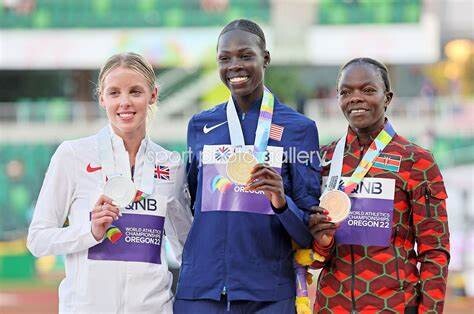
But as she prepares for the upcoming games, Hodgkinson reflects on a particularly tough race that has fueled her drive for victory.
“If you want to watch a bad race, watch Lausanne,” Hodgkinson says in an interview with the Telegraph, recalling the June competition where she found herself boxed in and then out-thought and out-paced by Kenyan Mary Moraa in the 800m.
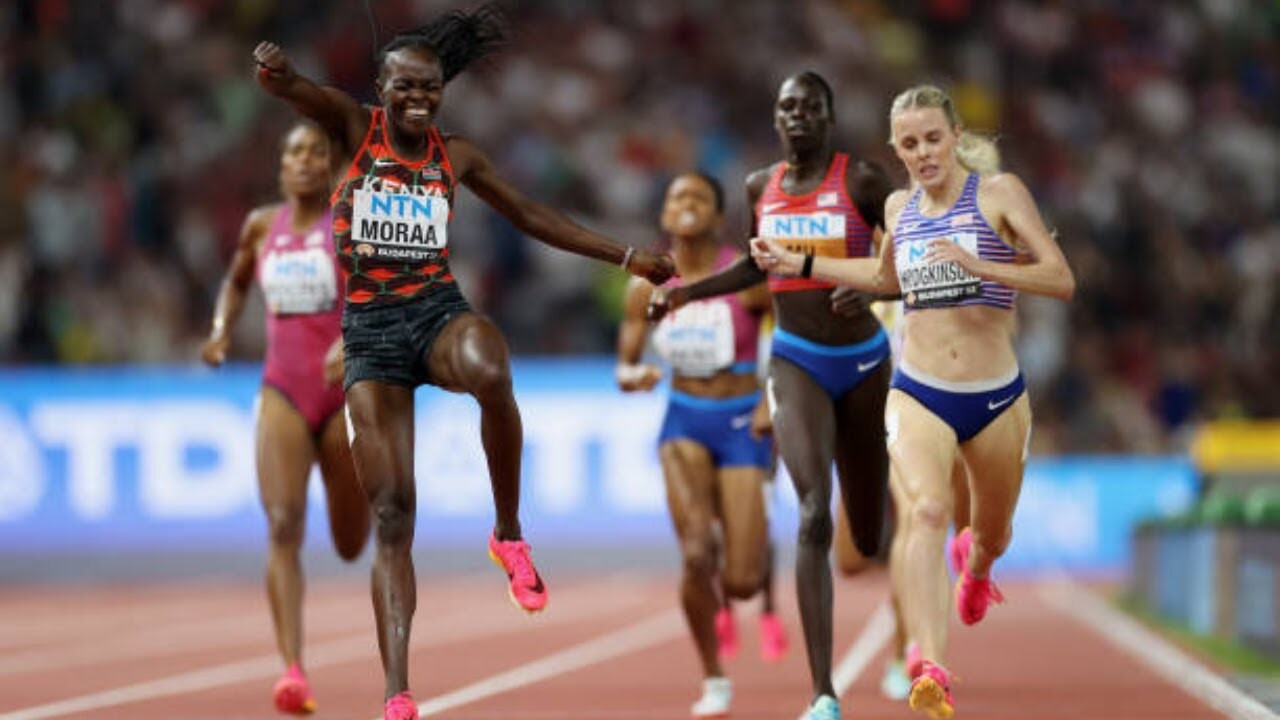
“That was bad.”
Hodgkinson’s journey has been marked by impressive accomplishments, including a silver medal at the Tokyo Olympics at the age of 19 with a personal best of 1:55.88.
More recently, she broke her own 800m record in front of 60,000 fans at the London Stadium leg of the Diamond League, becoming the sixth-fastest woman in history.
Despite these successes, Hodgkinson admits that post-Tokyo, she faced emotional challenges.
Struggling to focus on training after leaving her criminology degree course at Leeds Beckett University, she found it difficult to balance her mental state and athletic ambitions.
“I had nothing to be sad about, yet I felt guilty for feeling down.”
The determination to win gold in Paris is what keeps Hodgkinson motivated.
“Gold is all I have in my head right now. To get the gold in Paris. For me, that was the one I was always aiming for anyway,” she says.
Her rigorous training regime reflects this ambition.
Running approximately 35 miles each week, Hodgkinson focuses on building power and muscle strength, training more like a sprinter. Gym sessions, swimming, and cross-training have been crucial in enhancing her endurance and performance.
“I spend a lot of time on a cross-trainer,” she notes. “If I was to factor that in, my running mileage would go up.”
Preparation for a race, for Hodgkinson, resembles getting ready for a night out.
“The process starts two hours beforehand – I just enjoy it,” she explains.
Her routine includes a shower, fake tan, music, and doing her hair and make-up. “There’s nothing really to do on race day, especially if I’m racing at 10pm.”
Visualizing different race scenarios with her coach Painter is another key aspect of her preparation.
“Let others dictate your race and that’s when silly mistakes happen; panic after getting boxed in and you can bolt too early,” she cautions.
Reflecting on the 2023 World Championships in Budapest, Hodgkinson recalls hitting a lactic wall with 300m to go.
“The pack was so fast through the first lap. It really made us all hurt. We’d never done it that fast before.” On that occasion, it was her main rival, Athing Mu, who set the pace with Hodgkinson finishing as runner-up.
"She wanted to make it hard,” Hodgkinson acknowledges.
Despite the camaraderie with her fellow athletes during training camps, Hodgkinson remains competitive.
“On race day it’s game faces on,” she asserts.
For now, she relishes the challenge of pushing her limits.
“I’d be lying if I said I don’t enjoy being good at it,” she admits.
“When I was younger I used to love seeing how much pain I could put myself in, which sounds a bit crazy, but you do have to be crazy to do this event.”
by Festus Chuma
Login to leave a comment
Paris 2024 Olympic Games
For this historic event, the City of Light is thinking big! Visitors will be able to watch events at top sporting venues in Paris and the Paris region, as well as at emblematic monuments in the capital visited by several millions of tourists each year. The promise of exceptional moments to experience in an exceptional setting! A great way to...
more...Mary Moraa reveals what cost her glory at Tokyo Olympics as she seeks to make ammends in Paris
Mary has disclosed what cost her a medal at the delayed 2020 Tokyo Olympic Games and what she has done differently to ensure she is lethal in Paris.
Reigning world 800m champion Mary Moraa has disclosed what cost her a medal at the delayed 2020 Tokyo Olympic Games and what she has been doing in training to avoid a repeat of the same.
At the Tokyo Olympic Games, the reigning world champion was eliminated in the semifinal after she finished third.
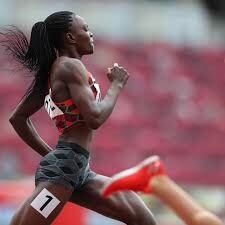
The race was eventually won by Athing Mu, who will unfortunately not be defending her title after falling at the U.S. Olympic trials and ended up finish ninth in the final of the women’s 800m.
Speaking about her experience in Tokyo, the 24-year-old noted that she was yet to master how the 800m well and the event was more of a learning curve. However, at the moment, Moraa noted that she knows better and she has the skills when it comes to running the 800m from the preliminaries, to the semifinal and to the final and eventually win a race.
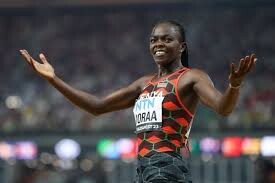
She added that the team has been training well and she has enjoyed the company of Vivian Chebet and Lilian Odira who will be making Olympic debuts, competing in the 800m.
“I reached the semifinal in 2020 and now my big target is to reach in the final and get a medal. We have been training well as a group, I, Lilian and Vivian have been working together in training and we pray that God gives us energy so that when we get to the Olympics, we are able to run well and get to the final and bring back medals,” Moraa said.
“In Tokyo, I had not mastered the art of running the 800m well but now I have the experience and I know how I can run and get to the final and get a medal,” she added.
Moraa faces tough opposition at the Olympic Games, going up against Briton Keely Hodgkinson who finished second in Tokyo. Nonetheless, she is not putting pressure on herself ahead of her Olympic return.
She will certainly be more confident, thanks to the gold medal she won at the World Championships in Budapest, Hungary.
by Abigael Wafula
Login to leave a comment
Paris 2024 Olympic Games
For this historic event, the City of Light is thinking big! Visitors will be able to watch events at top sporting venues in Paris and the Paris region, as well as at emblematic monuments in the capital visited by several millions of tourists each year. The promise of exceptional moments to experience in an exceptional setting! A great way to...
more...Meet USA Women's athletics team for Paris 2024 Olympic Games
Discover Team USA's women athletes ready for Paris 2024, featuring new talent and seasoned champions aiming for Olympic glory.
The Olympic track and field trials have concluded and the roster for the USA Women’s Athletics Team heading to the Paris 2024 Olympic Games is set.
This year’s team is a powerful mix of returning champions and new faces, each ready to leave their mark on the grandest stage in sports.
Pulse Sports dives into the details of each event and the athletes representing the United States.
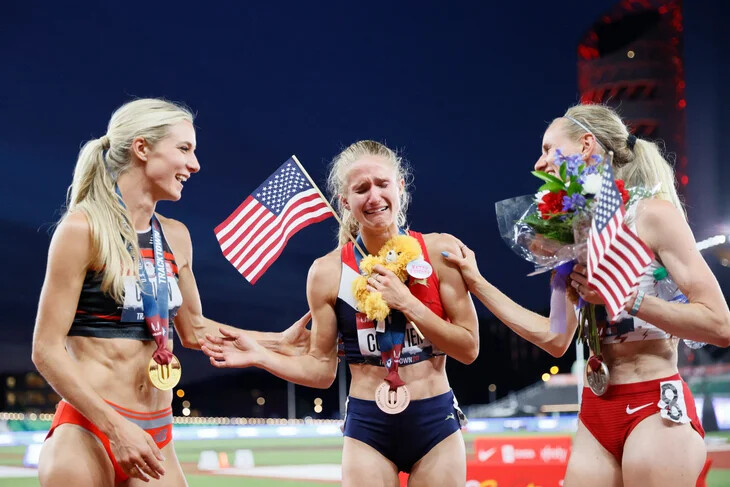
Marathon
The USA women’s marathon team sees a complete refresh from the last Olympics, introducing Dakotah Lindwurm, Fiona O’Keeffe, and Emily Sisson.
O’Keeffe leads this group, having clinched her spot by winning this year's Olympic marathon trials in an impressive 2:22.10.
The team looks to build on the bronze medal performance from three years ago with this new, dynamic lineup.
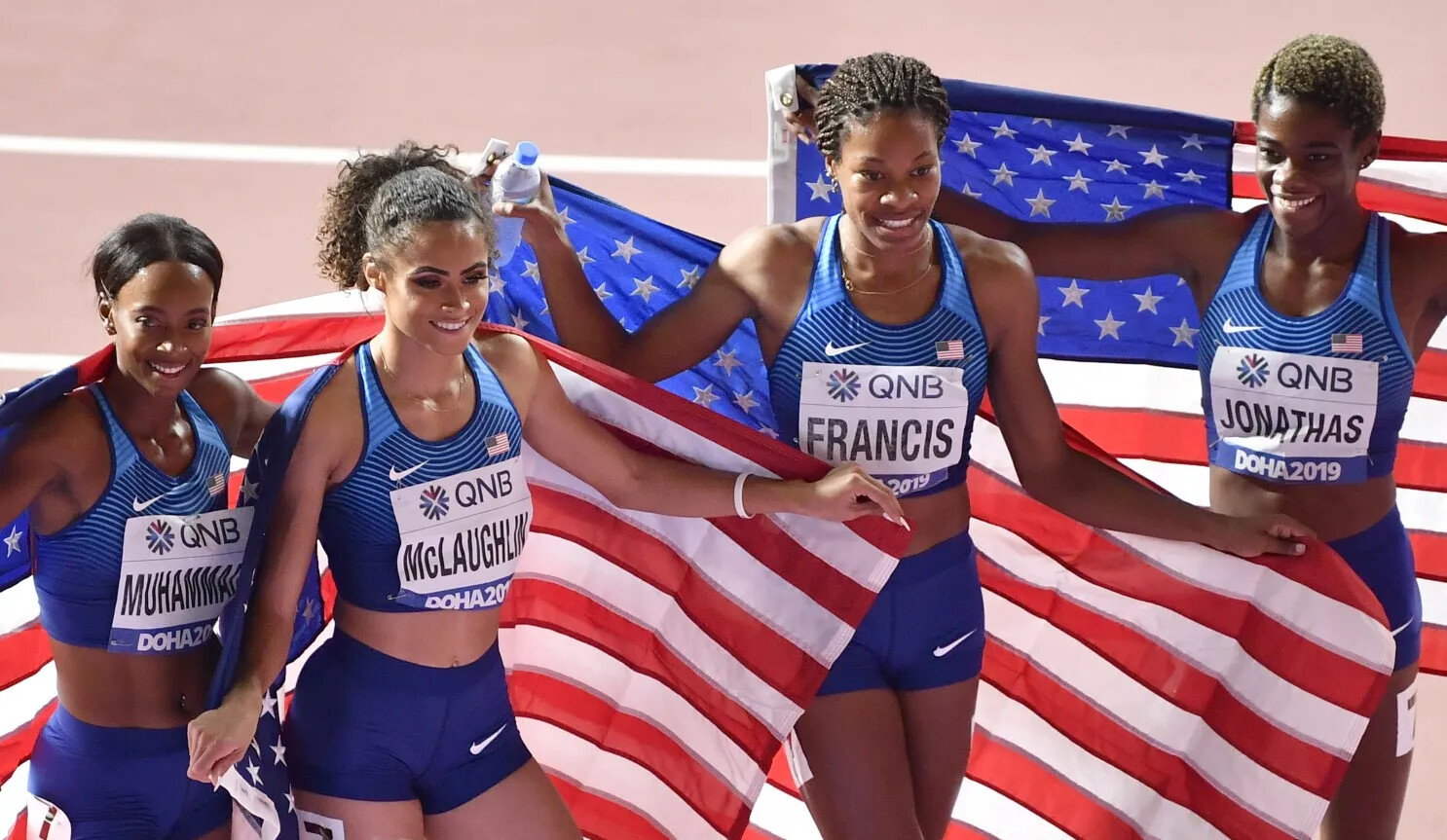
100m
Sha'Carri Richardson is making a much-anticipated return to the Olympics in the 100m dash after missing the previous games.
Her trial time of 10.71 seconds shows she’s back with blazing speed and ready to compete on the Olympic track.
Joining her are Melissa Jefferson and Twanisha Terry, both formidable sprinters who have proven their prowess to secure their spots in this highly competitive event.
100m Hurdles
The 100m hurdles will feature an entirely new USA trio: Masai Russell, Alaysha Johnson, and Grace Stark.
Russell dominated at the trials with a swift 12.25 seconds, while Johnson and Stark showed exceptional skill, each clocking in at 12.31 seconds.
This team replaces the previous Olympic medalists and aims to bring a new energy to the hurdles.
200m
Gabby Thomas returns to the 200m, having won a bronze in Tokyo and posting even better times since.
Alongside her are Brittany Brown and McKenzie Long, both just hundredths of a second apart at the trials, setting the stage for a strong competition in Paris.
Notably, Sha'Carri Richardson, despite high expectations, will not compete in this event after finishing fourth at the trials.
400m
Kendall Ellis, Aaliyah Butler, and Alexis Holmes are the new faces for the 400m, each having run sub-50 seconds at the trials—a benchmark not met by the previous Olympic team.
Their performances suggest that they are serious contenders for the podium in Paris.
400m Hurdles
Sydney McLaughlin-Levrone returns after setting a world record at the trials, clearly positioning herself as the favorite to defend her Olympic title.
She is joined by Anna Cockrell and newcomer Jasmine Jones, rounding out a team that mixes experience with fresh talent.
800m
With Athing Mu absent due to a fall at the trials, Nia Akins took the lead, winning the women's 800m in a commanding 1:57.36.
Allie Wilson and Juliette Whittaker also qualified bringing new energy to an event that saw unexpected twists during the trials.
5000m and 10,000m
Elle St. Pierre narrowly outpaced Elise Cranny in the 5000m, with Karissa Schweizer also making the team.
Schweizer and Parker Valby are waiting on world rankings to confirm their spots in the 10,000m, adding an element of suspense as they aim to compete in both distances.
Discus
Valarie Allman is set to defend her Olympic title in the discus throw, having dominated the trials with a throw of 70.73 meters.
Veronica Fraley, joining her, also showed strong form, ensuring that Team USA remains a top contender in this event.
Hammer
Annette Echikunwoke and DeAnna Price, both meeting the Olympic standard, are ready to improve upon their previous Olympic performances.
Their impressive throws at the trials indicate they are in peak form.
Heptathlon
Anna Hall, Chari Hawkins, and Taliyah Brooks are set for the heptathlon, each with their own story of redemption and debut at the Olympics.
Their diverse skills across multiple events make them versatile and formidable competitors.
High Jump
Vashti Cunningham and Rachel Glenn, both clearing the Olympic standard, aim to surpass their previous performances.
Their consistent top-three finishes at trials underscore their capabilities and medal potential.
Javelin
Maggie Malone Hardin is the sole qualifier for the javelin throw, her victory at the trials marking her as a key athlete to watch in this discipline.
Long Jump
Tara Davis-Woodhall, Jasmine Moore, and Monae' Nichols are set to represent the USA in the long jump.
Davis-Woodhall's recent silver at the world championships positions her as a favorite for gold in Paris.
Pole Vault
Bridget Williams, Katie Moon, and Brynn King, each having cleared impressive heights at the trials, are the pole vaulters heading to Paris.
Their collective performances suggest a strong potential for medal finishes.
3,000m Steeplechase
Valerie Constien, Courtney Wayment, and Marisa Howard, each having excelled at the trials, are prepared to make their mark in the steeplechase.
Their exceptional times are indicative of their strong conditioning and competitive spirit.
Shot Put
Chase Jackson, Raven Saunders, and Jaida Ross form a powerful trio in shot put.
Jackson's leading throw at the trials sets her up as a medal hopeful, while Saunders looks to add to her Tokyo silver.
Triple Jump
Jasmine Moore, Keturah Orji, and Tori Franklin are ready to challenge the distances that will be seen in Paris.
Moore's standout performance at the trials signals great potential for an impactful showing.
by Festus Chuma
Login to leave a comment
Paris 2024 Olympic Games
For this historic event, the City of Light is thinking big! Visitors will be able to watch events at top sporting venues in Paris and the Paris region, as well as at emblematic monuments in the capital visited by several millions of tourists each year. The promise of exceptional moments to experience in an exceptional setting! A great way to...
more...Olympic 800m champion Athing Mu out of Paris 2024 after falling at US trials
Olympic champion Athing Mu’s hopes for a repeat came crashing down on the first lap of the 800m final at the US Olympic trials on Monday.
Racing in the middle of the pack, Mu tangled with a bunched group of runners and went crashing to the ground before rolling on to her back. She got back to her feet and finished the race, but was more than 22 seconds behind the winner, Nia Akins, who took first place with a time of 1 minute 57.36 seconds.
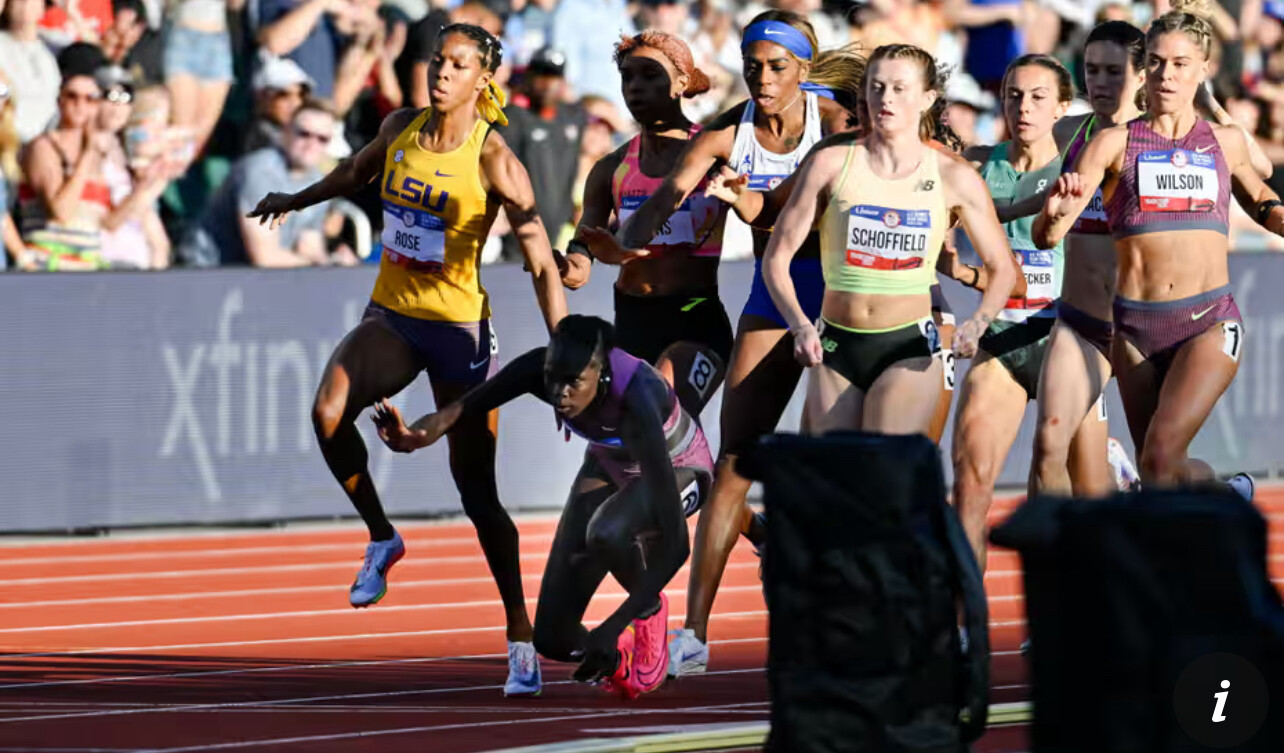
The 22-year-old Mu was choking back tears as she headed quickly off the track and through the tunnel after the race. She did not immediately come through the media area for interviews.
The Olympic trials were Mu’s first meet of the year after dealing with injuries all season. She looked to be in good form in her first two rounds, but was out of the running in the final before the first 200m.
It was Exhibit A of the unforgiving format of the US trials, where the top three finishers make the Olympic team and past performances mean nothing.
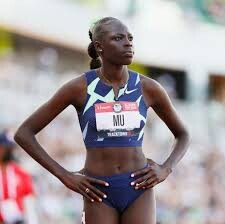
“I’ve coached it,said told The Associated Press. “And here’s another indication that regardless of how good we are, we can leave some better athletes home than other countries have. It’s part of our American way.”
Kersee said Mu was clipped from behind and that a protest had been lodged. USA Track and Field did not immediately respond to queries about the status of the protest. Kersee said Mu got spiked, had track burns and hurt her ankle.
“She’s going to be licking her wounds for a couple of days,” Kersee said.
Mu could still go to Paris as part of the US relay pool; she was a key part of America’s gold-medal win in the 4x400m three years ago in Tokyo.After winning college, national, world and Olympic championships all before turning 21, Mu won a bronze medal at worlds last year and, afterward, conceded she needed a break from the pressure and demands that come with being tagged as one of track’s new stars.
“For sure, I wasn’t really happy to be there,” she told the Guardian when asked about her 2023 season. “Mentally, I just wasn’t really there. I just wasn’t present. I didn’t appreciate being there. I didn’t really enjoy what was happening to me.”
She has dominated the 800m thanks, in part, to a long, loping stride, and that may be what cost her in a race in which she came in as the favorite. Mu was racing on the outside in a tightly bunched pack and looked to be veering to her left toward Juliette Whitaker when she tripped, leaving three runners behind her flailing as they jumped over her.Mu is hardly the first athlete to suffer such misfortune. One of the more memorable and heartbreaking moments came eight years ago in the same event, when Alysia Montano, looking to return to the Olympics, was tripped up in the homestretch and stayed down on the track crying.
There was drama elsewhere on a busy night that included six finals.
The women’s 5000m came down to a 0.02sec difference with Elle St Pierre finishing in 14:40.34, just ahead of Elise Cranny. Both are going to the Olympics.
Vashti Cunningham, who had a combined 13 straight US indoor and outdoor titles coming into the week, won a jump-off for third to make her third Olympic team.
Meanwhile, 16-year-old Quincy Wilson finished sixth in the 400m final with a time of 44.94, his third sub-45 race in three tries at the trials.
Now, he will wait to see if the US track team calls on him to be part of the relay pool.
“All I know is I gave everything I had,” he said. “I can’t be too disappointed. I’m 16, and I’m running grown-man times.”
Login to leave a comment
What You Need to Know About the U.S. Track and Field Olympic Trials
From June 21-30, more than 900 runners, throwers, and jumpers will put it all on the line for a chance to compete for Team USA at the Paris Olympics
The U.S. Track and Field Olympic Trials is a showcase of hundreds of America’s best track and field athletes who will be battling for a chance to qualify for Team USA and compete in this summer’s Paris Olympics. For many athletes competing in Eugene, simply making it on to the start line is a life-long accomplishment. Each earned their spot by qualifying for the trials in their event(s). The athlete qualifier and declaration lists are expected to be finalized this week.
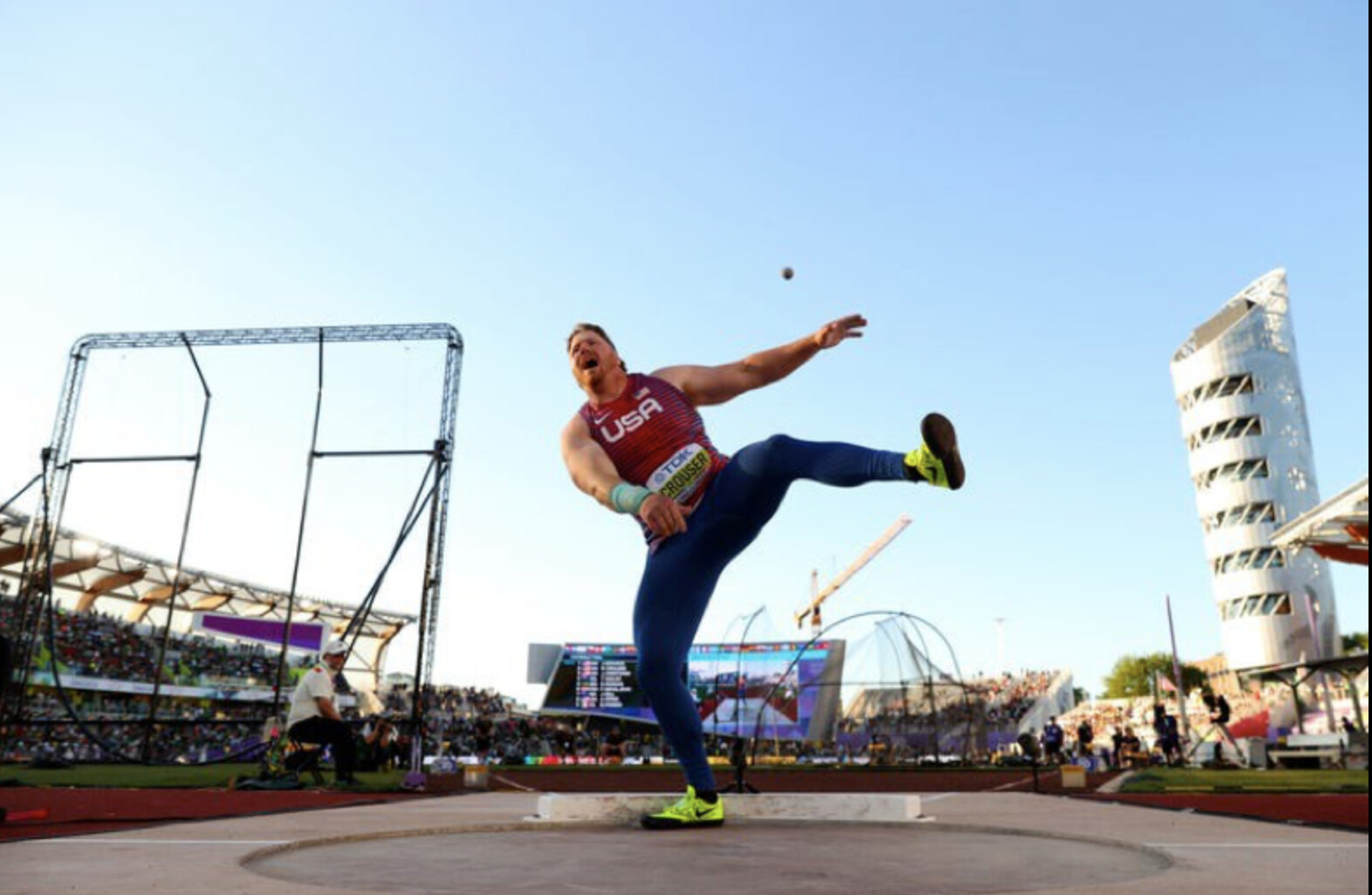
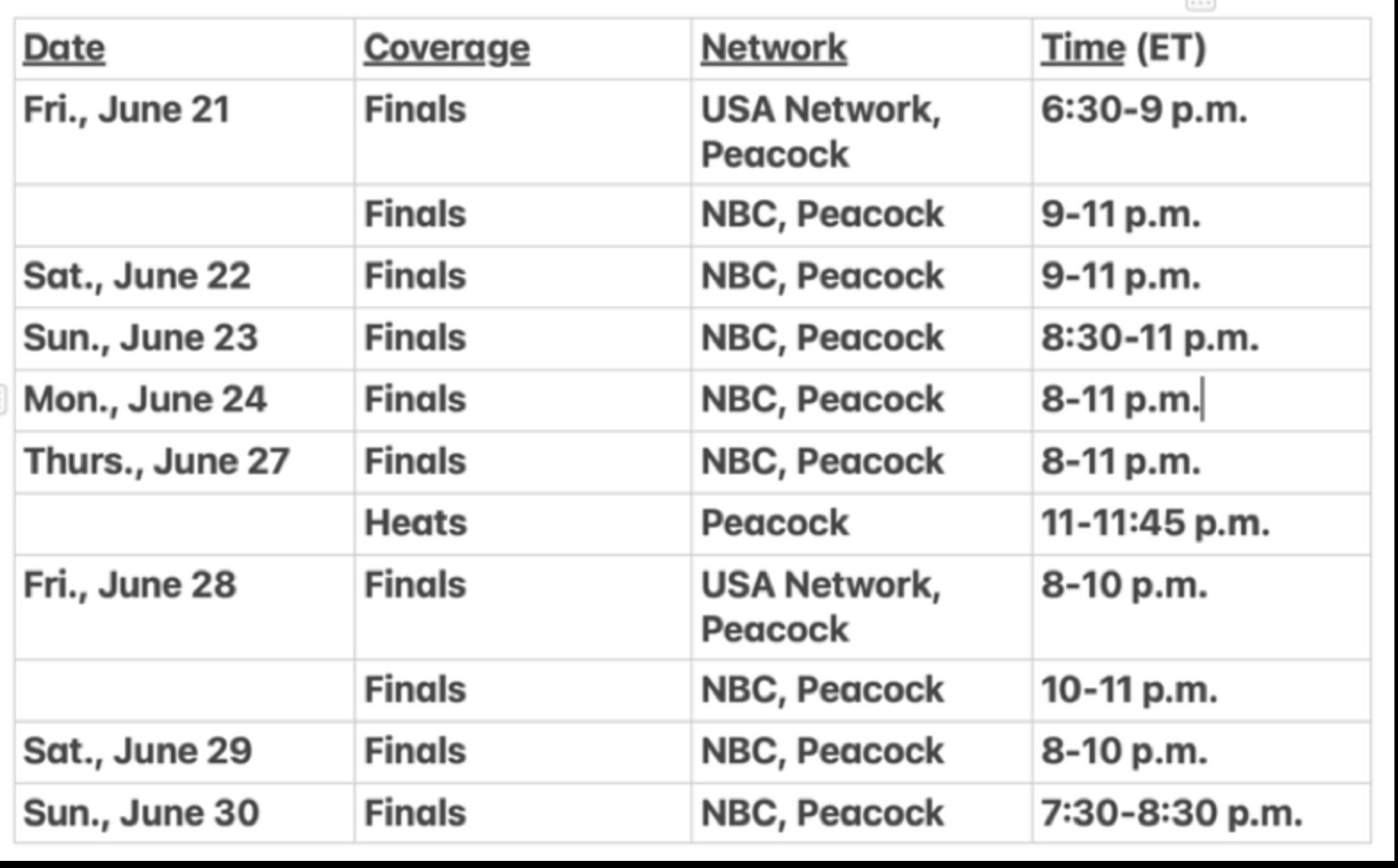
But for the highest echelon of athletes, the trials defines a make-or-break moment in their career. Only three Olympic team spots (in each gender) are available in each event, and given the U.S. depth in all facets of track and field—sprints, hurdles, throws, jumps, and distance running events—it’s considered the world’s hardest all-around team to make. How dominant is the U.S. in the world of track and field? It has led the track and field medal count at every Olympics since 1984.
At the trials, there are 20 total events for women and men—10 running events from 100 meters to 10,000 meters (including two hurdles races and the 3,000-meter steeplechase), four throwing events (discus, shot put, javelin, and hammer throw), four jumping events (long jump, triple jump, high jump, and pole vault), the quirky 20K race walking event, and, of course, the seven-event heptathlon (women) and the 10-event decathlon (men).
(At the Olympics, Team USA will also compete in men’s and women’s 4×100-meter and 4×400-meter relays, plus a mixed gender 4×400, and a mixed gender marathon race walk. The athletes competing on these teams will be drawn from those who qualify for Team USA in individual events, along with alternates who are the next-best finishers at the trials.
There’s also the Olympic marathon, but the U.S. Olympic Trials Marathon was held on February 3 in Orlando, Florida, to give the athletes enough time to recover from the demands of hammering 26.2 miles before the big dance in Paris.
Although some countries arbitrarily select their Olympic track and field teams, the U.S. system is equitable for those who show up at the Olympic Trials and compete against the country’s best athletes in each particular event. There’s just one shot for everyone, and if you finish among the top three in your event (and also have the proper Olympic qualifying marks or international rankings under your belt), you’ll earn the opportunity of a lifetime—no matter if you’re a medal contender or someone who burst onto the scene with a breakthrough performance.
The top performers in Eugene will likely be contenders for gold medals in Paris. The list of American stars is long and distinguished, but it has to start with sprinters Sha’Carri Richardson and Noah Lyles, who will be both competing in the coveted 100 and 200 meters. Each athlete won 100-meter titles at last summer’s world championships in Budapest and ran on the U.S. gold-medal 4×100 relays. (Lyles also won the 200) Each has been running fast so far this spring, but more importantly, each seems to have the speed, the skill, and swagger it takes to become an Olympic champion in the 100 and carry the title of the world’s fastest humans.
But first they have to qualify for Team USA at the Olympic Trials. Although Lyles is the top contender in the men’s 100 and second in the world with a 9.85-second season’s best, five other U.S. athletes have run sub-10-second efforts already this season. Richardson enters the meet No. 2 in the U.S. and No. 3 in the world in the women’s 100 (10.83), but eight other Americans have also broken 11 seconds. That will make the preliminary heats precariously exciting and the finals (women’s on June 22, men’s on June 23) must-see TV.
There are five returning individual Olympic gold medalists competing in the U.S. Olympic Trials with the hopes of repeating their medals in Paris—Athing Mu (800 meters), Sydney McLaughlin-Levrone (400-meter hurdles), Katie Moon (pole vault), Vallarie Allman (discus), and Ryan Crouser (shot put)—but there are more than a dozen other returning U.S. medalists from the Tokyo Olympics, as well as many more from the 2023 world championships, including gold medalists Chase Ealey (shot put), Grant Holloway (110-meter hurdles), Laulauga Tausaga (discus), and Crouser (shot put).
The most talented athlete entered in the Olympic Trials might be Anna Hall, the bronze and silver medalist in the seven-event heptathlon at the past two world championships. It’s an epic test of speed, strength, agility, and endurance. In the two-day event, Hall and about a dozen other women will compete in the 100-meter hurdles, high jump, shot put, 200 meters, long jump, javelin throw, and 800 meters, racking up points based on their performance in each event. The athletes with the top three cumulative totals will make the U.S. team. At just age 23, Hall is poised to contend for the gold in Paris, although Great Britain’s Katarina Johnson-Thompson, the world champion in 2019 and 2023, is also still in search of her first Olympic gold medal after injuries derailed her in 2016 and 2021.
If you can find your way to Eugene—and can afford the jacked-up hotel and Airbnb prices in town and nearby Springfield—you can watch it live in person at Hayward Field. Rebuilt in 2021, it’s one of the most advanced track and field facilities in the world, with an extremely fast track surface, a wind-blocking architectural design, and 12,650 seats that all offer great views and close-to-the-action ambiance. Tickets are still available for most days, ranging from $45 to $195.
If you can’t make it to Eugene, you can watch every moment of every event (including preliminary events) via TV broadcasts and livestreams. The U.S. Olympic Trials will be broadcast live and via tape delay with 11 total broadcast segments on NBC, USA Network, and Peacock. All finals will air live on NBC during primetime and the entirety of the meet will be streamed on Peacock, NBCOlympics.com, NBC.com and the NBC/NBC Sports apps.
The Olympic Trials will be replete with young, rising stars. For example, the men’s 1500 is expected to be one of the most hotly contested events and the top three contenders for the Olympic team are 25 and younger: Yared Nuguse, 25, the American record holder in the mile (3:43.97), Cole Hocker, 23, who was the 2020 Olympic Trials champion, and Hobbs Kessler, 21, who turned pro at 18 just before racing in the last Olympic Trials. Sprinter Erriyon Knighton, who turned pro at age 16 and ran in the Tokyo Olympics at age 17, is still only 20 and already has two world championships medals under his belt. Plus, the biggest track star from the last Olympics, Sydney McLaughlin-Levrone, is aiming for her third Olympics and third Olympic gold (she won the 400-meter hurdles and was on the winning 4×400 relay in Tokyo), and she’s only 24.
Several young collegiate stars could earn their place on the U.S. team heading to Paris after successful results in the just-completed NCAA championships. Leading the way are double-NCAA champions McKillenzie Long, 23, a University of Mississippi senior who enters the trials ranked sixth in the world in the 100 (10.91) and first in the 200 (21.83), and Parker Valby, a 21-year-old junior at the University of Florida, who ranks fifth in the U.S. in the 5,000 meters (14:52.18) and second in the 10,000 meters (30:50.43). Top men’s collegiate runners include 5,000-meter runner Nico Young (21, Northern Arizona University), 400-meter runner Johnnie Blockburger (21, USC), and 800-meter runners Shane Cohen (22, Virginia) and Sam Whitmarsh (21, Texas A&M).
It’s very likely. Elle St. Pierre is the top-ranked runner in both the 1500 and the 5,000, having run personal bests of 3:56.00 (the second-fastest time in U.S. history) and 14:34.12 (fifth-fastest on the U.S. list) this spring. Although she’s only 15 months postpartum after giving birth to son, Ivan, in March 2023, the 29-year-old St. Pierre is running better and faster than ever. In January, she broke the American indoor record in the mile (4:16.41) at the Millrose Games in New York City, then won the gold medal in the 3,000 meters at the indoor world championships in Glasgow in March.
St. Pierre could be joined by two world-class sprinters. Nia Ali, 35, the No. 2 ranked competitor in the 100-meter hurdles and the 2019 world champion, is a mother of 9-year-old son, Titus, and 7-year-old daughter, Yuri. Quanera Hayes, 32, the eighth-ranked runner in the 400 meters, is the mother to 5-year-old son, Demetrius. Hayes, a three-time 4×400 relay world champion, finished seventh in the 400 at the Tokyo Olympics.
Meanwhile, Kate Grace, a 2016 Olympian in the 800 meters who narrowly missed making Team USA for the Tokyo Olympics three years ago, is back running strong at age 35 after a two-year hiatus during which she suffered from a bout of long Covid and then took time off to give birth to her son, River, in March 2023.
No, unfortunately, there are a few top-tier athletes who are hurt and won’t be able to compete. That includes Courtney Frerichs (torn ACL), the silver medalist in the steeplechase at the Tokyo Olympics in 2021; Alicia Monson (torn medial meniscus), a 2020 Olympian in the 10,000 meters, the American record holder in the 5,000 and 10,000 meters, and the fifth-place finisher in the 5,000 at last year’s world championships; and Joe Klekcer (torn adductor muscle), who was 16th in the Tokyo Olympics and ninth in the 2022 world championships in the 10,000. Katelyn Tuohy, a four-time NCAA champion distance runner for North Carolina State who turned pro and signed with Adidas last winter, is also likely to miss the trials due to a lingering hamstring injury. There is also some doubt about the status of Athing Mu (hamstring), the Tokyo Olympics 800-meter champion, who has yet to race in 2024.
Meanwhile, Emma Coburn, a three-time Olympian, 2017 world champion, and 10-time U.S. champion in the 3,000-meter steeplechase, broke her ankle during her season-opening steeplechase in Shanghai on April 27. She underwent surgery a week later, and announced at the time that she would miss the trials, but has been progressing quickly through her recovery. If both she and Frerichs miss the meet, it will leave the door wide open for a new generation of steeplers—including 2020 Olympian Valerie Constein, who’s back in top form after tearing her ACL at a steeplechase in Doha and undergoing surgery last May.
The U.S. earned 41 medals in track and field at the 2020 Paralympic Games in Tokyo—including 10 gold medals—which ranked second behind China’s 51. This year’s Paralympics will follow the Olympics from August 28-September 8 in Paris.
The 2024 U.S. Paralympic Trials for track and field will be held from July 18-20 at the Ansin Sports Complex in Miramar, Florida, and Paralympic stars Nick Mayhugh, Brittni Mason, Breanna Clark, Ezra Frech, and Tatyana McFadden are all expected to compete.
In 2021 at the Tokyo Paralympics, Mayhugh set two new world records en route to winning the 100 meters (10.95) and 200 meters (21.91) in the T-37 category, and also took the silver medal in the 400 meters (50.26) and helped the U.S. win gold and set a world record in the mixed 4×100-meter relay (45.52). Clark returns to defend her Paralympic gold in the T-20 400 meters, while McFadden, a 20-time Paralympic medalist who also competed on the winning U.S. mixed relay, is expected to compete in the T-54 5,000 meters (bronze medal in 2021).
Livestream coverage of the U.S. Paralympic Trials for track and field will be available on Peacock, NBCOlympics.com, NBC.com, and the NBC/NBC Sports app, with TV coverage on CNBC on July 20 (live) and July 21 (tape-delayed).
Login to leave a comment
Mile clash the big attraction in Eugene
Going strictly by time, the Bowerman Mile at the Prefontaine Classic on Saturday (25) is one of the fastest races in the meeting’s 49-year history.
Add in the storylines, and it’s one of the most anticipated, too.
Featuring seven men with lifetime bests faster than 3:50, Olympic and world championship gold medallists, world record-holders and rivals whose banter has preceded the matchup for months, the mile caps a Wanda Diamond League meeting at Hayward Field whose potential for world-leading marks extends far beyond its final event.
Consider, for one, the women’s 800m, and the early window it will open into this summer’s Olympics. The field includes six of the eight competitors from last year’s World Championships final in Budapest, including gold medallist Mary Moraa and silver medallist Keely Hodgkinson. Notably absent will be bronze medallist Athing Mu, the Olympic champion, who was initially scheduled to race but has been withdrawn out of precaution because of a sore hamstring.
Raevyn Rogers, the 2019 world silver medallist whose image adorns a tower standing high above Hayward Field, also is entered, along with Jemma Reekie, Nia Akins and Halimah Nakaayi, who is coming off a victory at the USATF Los Angeles Grand Prix.
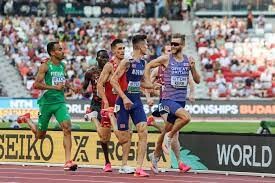
World champion Sha’Carri Richardson and Elaine Thompson-Herah headline the women’s 100m, along with world indoor 60m champion Julien Alfred and Marie-Josee Ta Lou-Smith, while world indoor 60m champion Christian Coleman and Ackeem Blake are among the fastest entered in the men's 100m.
Perhaps the most dominant athlete entering the meeting is Grant Holloway, the world 110m hurdles champion who has won all 10 races he has contested this year, including the indoor season and heats. That also includes running a world-leading 13.07 into a headwind to win in Atlanta last weekend.
The three-time world champion's last loss came on the very same Hayward Field track, at last September’s Prefontaine Classic. The only remaining gap on Holloway’s resume is an Olympic gold medal, and Saturday’s race could be an early preview of Paris, as the field includes five who raced in last summer’s World Championships final in Budapest, including silver medallist Hansle Parchment and Daniel Roberts, who earned bronze.
Shot put world record-holder and multiple world and Olympic champion Ryan Crouser will open his outdoor season in his home state and at the stadium where he owns the facility record, while trying to best Leonardo Fabbri’s world-leading mark of 22.95m.

Since 2023, Crouser has lost in just one final – and it was at September’s Prefontaine Classic to Joe Kovacs, who won in Los Angeles last weekend with 22.93m, and is entered again. Payton Otterdahl, who owns the world No.3 mark this year, also is in the field.
Those events offer no shortage of global medallists. Few, however, carry the prospect for as much drama as the mile.
Over the past year, Olympic 1500m champion Jakob Ingebrigtsen and Josh Kerr, who outkicked Ingebrigtsen for last year’s world title in Budapest, have carried on a battle of words through the press about who could prevail in Paris.
Commonwealth champion Olli Hoare, who is part of the field following his 1500m win in Los Angeles last week, said the sport was better for the attention drawn by the back-and-forth between Ingebrigtsen and Kerr – but added that other racers wanted to strike the appropriate level of respect for their competitors, such as Yared Nuguse, whose PB of 3:43.97 was set battling Ingebrigtsen (4:43.73) down to the line at September’s Pre Classic.
“This is a big one. This is going to be a big one for a lot of egos,” Hoare said in Los Angeles. “But I think it’s going to be a big one for me because it’ll be the first race where I’ll have an inkling of where I am with the world’s best. There’s a bit of tossing and turning with the banter but you can’t disrespect that field. If you do, you’ll get eaten alive.”
That list of seven men under 3:50, which includes Hoare, notably doesn’t include Jake Wightman, who will be racing Ingebrigtsen for the first time since their duel at the 2022 World Championships in Oregon, when Wightman won gold; Abel Kipsang, who was fourth at the Tokyo Olympics; Geordie Beamish, less than three months after he stormed to the world indoor title; or Lamecha Girma, the steeplechase world record-holder who is making his mile debut.
“Jake Wightman’s back, he’s a world champion,” Hoare said. “Yared Nuguse, 3:43 mile – these guys are keeping quiet and they’re going to wait for their opportunity to strike. And when they do strike, I guarantee they will make a comment.”
They are not the only accomplished names entered in the distances.
Athletics Kenya will determine its men's and women's Olympic 10,000m qualifiers at Hayward Field, with Kenya's two-time world cross-country champion Beatrice Chebet, the world leader at 5000m this season, part of a women's race that will include world champion Gudaf Tsegay of Ethiopia, eight months after Tsegay set the world 5000m record on the same track.
World record-holder Beatrice Chepkoech will attempt to retain her controlling hold over the steeplechase when she races top challenger Faith Cherotich. The Kenyan duo produced the two fastest times in the world this year at the Diamond League meeting in Xiamen, which Chepkoech won in 8:55.40 to Cherotich’s 9:05.91. Olympic silver medallist Courtney Frerichs will no longer run after injuring the ACL and meniscus in her right knee.
One week after winning in Los Angeles, Diribe Welteji leads the 1500m field that includes 13 women who have run under four minutes. World indoor 3000m champion Elle St Pierre, who won the 5000m in Los Angeles, is running her first 1500m of the season, with Laura Muir, Nikki Hiltz, Jessica Hull, Hirut Meshesha and Cory McGee also entered.
Multiple world and Olympic gold medallist Sifan Hassan, as well as world No.2 Ejgayehu Taye, will feature in the 5000m.
In the field, world and Olympic pole vault champion Katie Moon opens her outdoor season against Sandi Morris, and in the triple jump four of the top five women this season are entered, led by Thea LaFond, whose 15.01m jump to win the world indoor title in Glasgow still stands as the mark to beat.
Olympic discus champion Valarie Allman has not lost in Eugene in two years, a run that includes claiming September’s Diamond League final. That could change on Saturday because of the presence of world leader Yaime Perez, who finished second to Allman in Xiamen last month.
In the men’s 200m, top US sprinters who will duel at the Olympic trials only weeks later will face off. Kenny Bednarek, fresh off a world-leading 19.67 in Doha, is scheduled to race against world No.2 Courtney Lindsey (19.71), with world silver medallist Erriyon Knighton making his season debut. Joe Fahnbulleh and Kyree King, winner of the Los Angeles Grand Prix 100m, are also entered.
Another winner in Los Angeles, Rai Benjamin, headlines the men’s 400m hurdles, and he enters with considerable confidence after running 46.64, the ninth-fastest performance of all time.
“I think I’m the fastest guy in the field, honestly,” Benjamin said of potential Olympic chances.
The women’s 100m hurdles and women’s hammer will not count towards Diamond League points totals, but will be more potential previews for global championships.
Women who account for five of the year’s six fastest times, all of whom are separated by fractions of a second, will face off in the hurdles. Tonea Marshall, fresh off her victory in Los Angeles in 12.42, leads 2019 world champion Nia Ali, Olympic champion Jasmine Camacho-Quinn, two-time world champion Danielle Williams and world indoor champion Devynne Charlton.
Brooke Andersen’s 79.92m throw from earlier this month remains the world-leading hammer mark this season but she will be challenged by world champion Camryn Rogers, 2019 world champion DeAnna Price and world silver medallist Janee’ Kassanavoid, who own the next three farthest throws this season.
by Andrew Greif for World Athletics
Login to leave a comment
Prefontaine Classic
The Pre Classic, part of the Diamond League series of international meets featuring Olympic-level athletes, is scheduled to be held at the new Hayward Field in Eugene. The Prefontaine Classicis the longest-running outdoor invitational track & field meet in America and is part of the elite Wanda Diamond League of meets held worldwide annually. The Pre Classic’s results score has...
more...Why Athing Mu has withdrawn from clash against Mary Moraa & Keely Hodgkinson at Prefontaine Classic
The renewal of the rivalry between Athing Mu, Keely Hodgkinson, and Mary Moraa will have to be postponed following the Mu's withdrawal from the Prefontaine Classic.
Athing Mu’s head coach Bobby Kersee has announced that the Olympic champion will miss the looming showdown against world champion Mary Moraa and world bronze medallist Keely Hodgkinson at the Prefontaine Classic, the Diamond League Meeting in Eugene, Oregon.
The event is scheduled for Saturday, May 25 and Mu has been forced to withdraw due to a lingering soreness in her left hamstring.

Speaking to Runner’s World, the coach explained that the injury is not worth risking to compete. This marks the third time that Mu’s hamstring has pushed back her 2024 season opener. The former world champion was initially scheduled to open at the Oxy Invitational in early May in Los Angeles, then the Los Angeles Grand Prix on May 18, but she unfortunately withdrew from the events.
“She’s a veteran, if she’s healthy, she can make the team. And so, if I injure her before, I’m gonna be called a fool; if I don’t race her before, I’m gonna get [criticism].
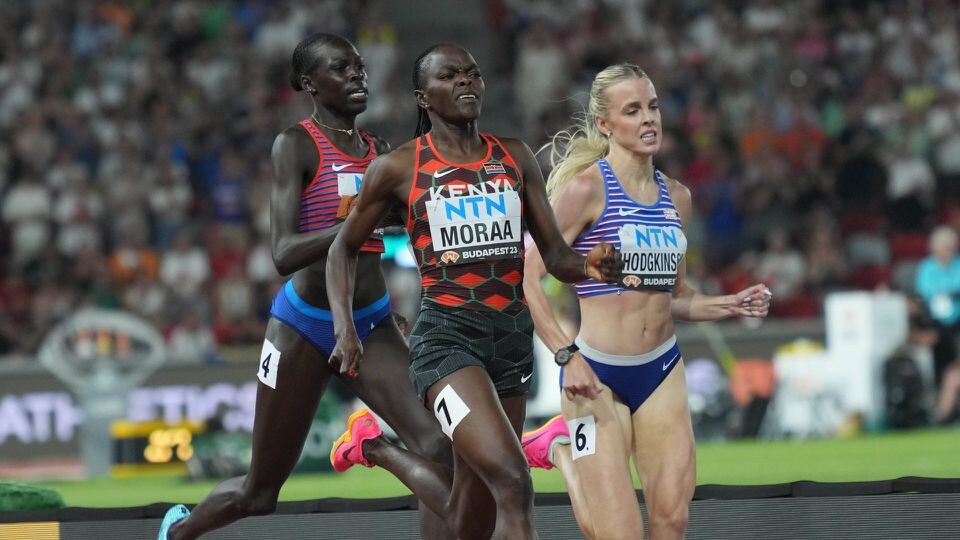
“So I have to do the math that’s going to put her on the team, and so whatever that math is between now and the 21st, that’s what I’m gonna do,” the coach said.
Meanwhile, Kersee confirmed that this season, Mu will be focusing on the 800m, the event in which she won a gold medal at the delayed 2020 Tokyo Olympic Games.
He added that Sydney McLaughlin-Levrone will also focus on the 400m Hurdles, where she is the world record holder and she is also the defending Olympic champion.
Meanwhile, Kendra Harrison, another of Kersee’s athlete will not competing in the 100m hurdles. Kersee explained that the American suffered a tight back after traveling to compete in last week’s Atlanta City Games.
“She’s ready to go and that’s what I’m telling her. Right now, unless I know she’s 100 percent healthy ... athletes are taking a high risk right now for minimum gain.
“If you’re going to take a high risk, there’s only two races left in this year where you got to take a high risk for maximum gain and that’s our Olympic Trials and our Olympic Games.
“Everything else, you can’t take the risk if you’re not sure about what to gain and vice versa. And so I just think that, you know, in this case, well in all cases, that’s what I’m looking at as a coach: What’s the risk-reward situation, based on where we stand right now?
“Like Sydney last year, based on her career I mean, I could probably try to see if we could struggle through the world championship, but do I break down one of our world’s best athletes trying to sneak out one more medal and then subject her to more injury and don’t have anything this Olympic year, versus do I rest her?
"I think I’ve shown a little bit so far that maybe the rest did not hurt her and now she’s starting to compete again,” the coach said.
by Abigael Wuafula
Login to leave a comment
Mary Moraa's Briton opponent strikes with 400m personal best as Prefontaine Classic clash looms
The women's 800m race at the Prefontaine Classic will promise to be a thrilling show after Mary Moraa's Briton opponent opened her season with a 400m personal best time.
Mary Moraa’s track rival, Keely Hodgkinson has been off to a great start to her season, setting a Personal Best time over the 400m in her season opener.
The Briton competed at a meet in Citta di Savona and was in a class of her own as she oozed class to finish second, clocking 51.61 seconds to improve her personal best time of 51.76 that she set at last year's European Under-23 Championships.
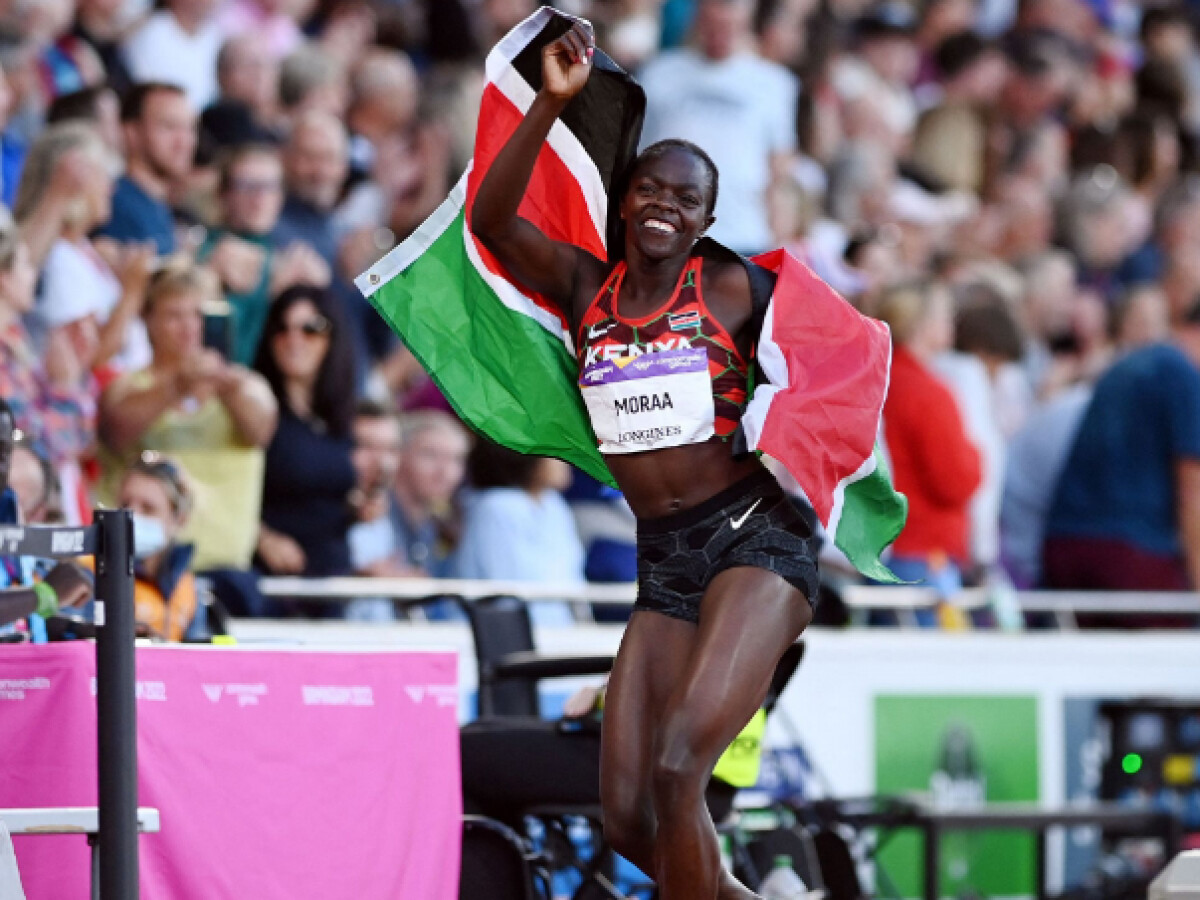
The 22-year-old will compete in her first 800m race at the Prefontaine Classic, the Diamond League Meeting in Eugene, USA and from her performance in the season opener, her opponents will be in for a surprise.
The world 800m bronze medallist will be up against reigning world champion Moraa and the world 800m silver medallist and Olympic champion Athing Mu of the USA.
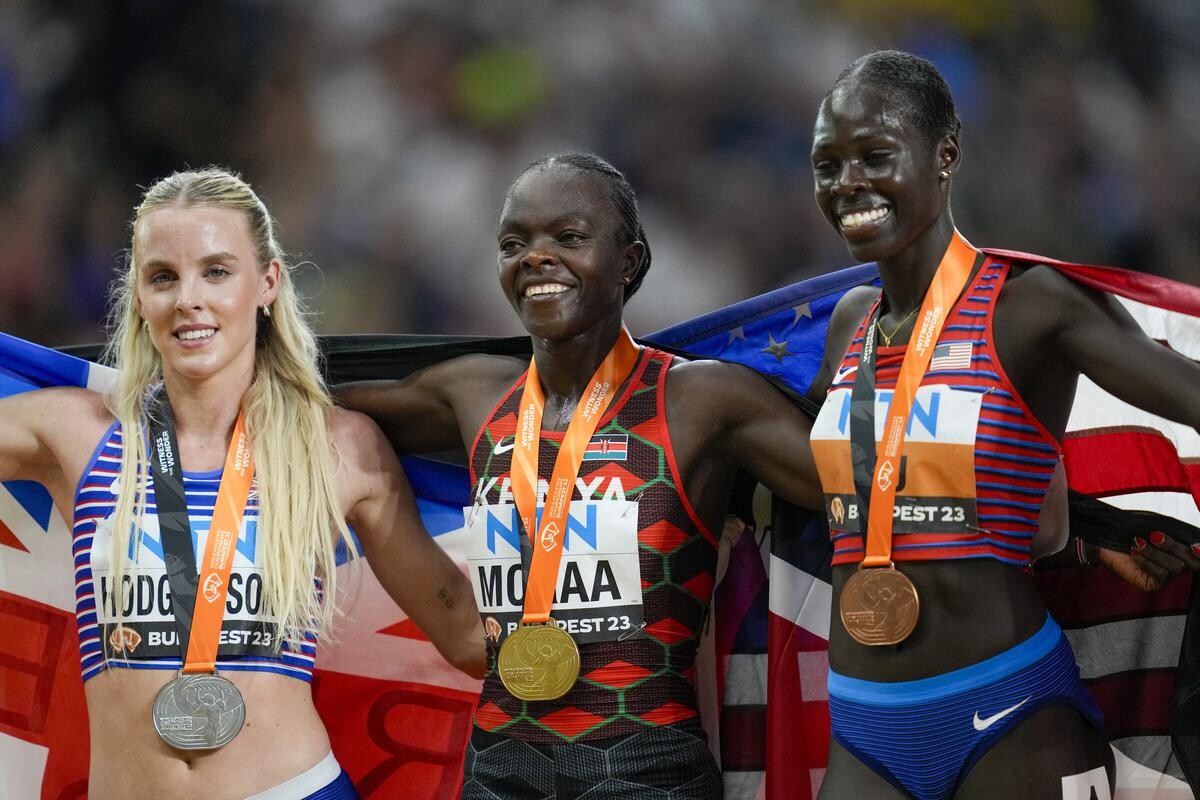
Mu will be competing on home soil, hoping to take advantage of that to take the win but the duo will not make it easy for her. The American is yet to compete and will make her season debut at the USTAF LA Grand Prix.
However, Moraa has competed in a couple of races and has shown to be in great form and ready to outshine her opponents. The 23-year-old started her season quite early, with the Athletics Kenya national trials for the African Games.
She then proceeded to win the 400m at the African Games before making her season debut in the 800m at the Kip Keino Classic.
The Commonwealth Games champion also extended her wining streak to the Diamond League Meeting in Doha, Qatar where she also claimed top honours. She gears up for the 400m at the LA Grand Prix before taking on her rivals at the Prefontaine Classic next weekend.
by Abigael Wuafula
Login to leave a comment
Prefontaine Classic
The Pre Classic, part of the Diamond League series of international meets featuring Olympic-level athletes, is scheduled to be held at the new Hayward Field in Eugene. The Prefontaine Classicis the longest-running outdoor invitational track & field meet in America and is part of the elite Wanda Diamond League of meets held worldwide annually. The Pre Classic’s results score has...
more...The Surprising Way Air Hunger Limits Your Endurance
The fitter you get, the more likely you are to feel that you can’t get enough oxygen during hard exercise
Our lungs and airways are “overbuilt,” according to exercise physiologists. Though we gasp and pant during heavy exercise, that’s not what actually slows us down. Instead, the bottleneck is the heart’s ability to pump oxygen-rich blood to the muscles, or the muscles’ ability to make use of that oxygen. That’s why the heart and muscles get bigger and stronger in response to training, while the lungs stay the same: we already suck in more oxygen than we’re able to use.
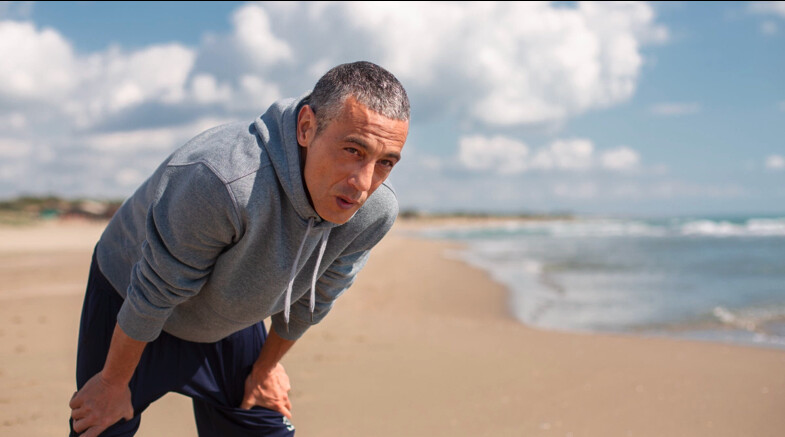
Or maybe not, according to a new study in Medicine & Science in Sports & Exercise that takes a fresh look at what it means to be out of breath. It turns out there are different subtypes of breathlessness. Your chest might feel tight; or your breathing muscles might feel overworked; or you might feel that you can’t get enough air in. That last one, sometimes called “air hunger” or (more scientifically) “unsatisfied inspiration” is usually associated with lung conditions like chronic obstructive pulmonary disease. But the new study finds that about a third of healthy adults experience air hunger during all-out exercise—and it’s the fittest people who are most susceptible.
The study, led by researcher (and accomplished mountain runner) Jordan Guenette and graduate student Olivia Ferguson of the University of British Columbia, reanalyzed earlier results from lung-function tests completed by 321 healthy adults between the ages of 19 and 40 in labs at the University of British Columbia and McGill University in Canada. Among the tests was an incremental cycle to exhaustion, after which subjects were given a list of 15 phrases that described subjective sensations of breathlessness and asked to pick which ones applied to them.
Four of the phrases corresponded to air hunger: “I cannot get enough air in,” “I cannot take a deep breath in,” “My breath does not go in all the way,” and “I feel a need for more air.” Those who picked at least three of those four phrases were classified as having air hunger. Healthy adults usually associate breathlessness with the perception that their breathing muscles are working really hard, rather than with air hunger. But to the surprise of the research team, 34 percent of the subjects fell into the air hunger category.
Air hunger doesn’t necessarily mean that you’re truly short of oxygen—but it feels that way, which is enough to create problems. There are two distinct dimensions of breathlessness: the sensory experience (what it feels like) and the affective/emotional response (how you react to that feeling). Air hunger is a sensory experience, but it’s tightly linked to a negative emotional response. No one likes to feel that they can’t get enough air in. In patients with lung disease, the feeling of air hunger is a major deterrent to exercise even when it doesn’t directly compromise exercise capacity.
To figure out if the same thing happens in healthy adults, the subjects were also asked to rate the discomfort in their legs on a scale of zero to ten, do the same for breathing discomfort, and make as estimate of how much their decision to give up in the exercise test was due to leg and breathing discomfort, respectively. Sure enough, breathing discomfort was higher in the air hunger group, and about half of them said that it played a part in their decision to quit, compared to less than 30 percent in the non-air hunger group.
One sign that this breathing discomfort wasn’t all in their heads is that the air hunger group had stronger markers of “critical inspiratory constraints” (CIC)—that is, limitations on their ability to breathe more deeply. When your body detects that carbon dioxide levels in your blood are rising, it automatically triggers deeper breathing to flush out the carbon dioxide and get more oxygen in. But if you have CIC, you’re at a point where it’s hard to inflate your lungs any further, so there’s a mismatch between your desire to inhale and your ability to do so. Sure enough, the people in the air hunger group had several indicators of more severe CIC. For example, they had a smaller peak inspiratory capacity (the maximum volume of air they could inhale), and a smaller increase of inspiratory capacity during exercise.
The next question is what determines who suffers from air hunger and CIC. One difference between the groups is that those with air hunger had, on average, higher VO2 max by 1.5 percent, and reached a higher peak power output by 3.4 percent. They were also breathing faster at exhaustion (50 breaths per minute compared to 47) and sucking in more air (120 liters per minute compared to 116). “Contrary to popular belief,” Guenette points out, “exercise training doesn’t improve lung capacity.” So one version of the story is that fitter people can push themselves harder for longer, but their lungs aren’t equipped to handle the higher load, so they’re more likely to approach their breathing limits.
On the other hand, while the differences in VO2 max are statistically significant, they’re pretty subtle. Could there be other factors that dictate who suffers from the feeling of air hunger—something in the structure of the lungs or the strength of respiratory muscles? Is it a function of how the brain and central nervous systems respond to a given level of oxygen and carbon dioxide in the blood? None of this is clear yet, and neither is the crucial question of whether there’s anything you can do about it. There’s been a lot of research over the years about the idea of training your breathing muscles (including some by Guenette), and one of the theories is that any performance benefits are more about changing your subjective response to the feeling of breathlessness rather than actually delivering more oxygen to your muscles. That might be one way of combating the feeling air hunger; another possibility is the asthma medication salbutamol, which Guenette hopes to study further.
For now, what I take from this study is that I need to rethink one of my standard pieces of advice to beginner runners. Feeling out of breath is one of the dominant sensations when you first start running, but I’ve always assured people that it’s a feeling you get used to, and not something that really limits your performance. It turns that, for at least some people, that’s not true. My sense is that the recent hype about “better breathing” has far outpaced the evidence, but it’s clear that we still have a lot to learn.
by Outside Online
Login to leave a comment
Mu, Moraa and Hodgkinson confirmed for 800m clash in Eugene
Athing Mu, Mary Moraa and Keely Hodgkinson – the three women who’ve claimed the 800m medals at the past two World Championships – will clash at the Prefontaine Classic when the Wanda Diamond League reaches Eugene on 25 May.
Mu won in Eugene last year when Hayward Field hosted the Wanda Diamond League Final. Having finished third at the World Championships three months prior, the Olympic champion gained revenge on home soil and kicked to victory in a US record of 1:54.97.
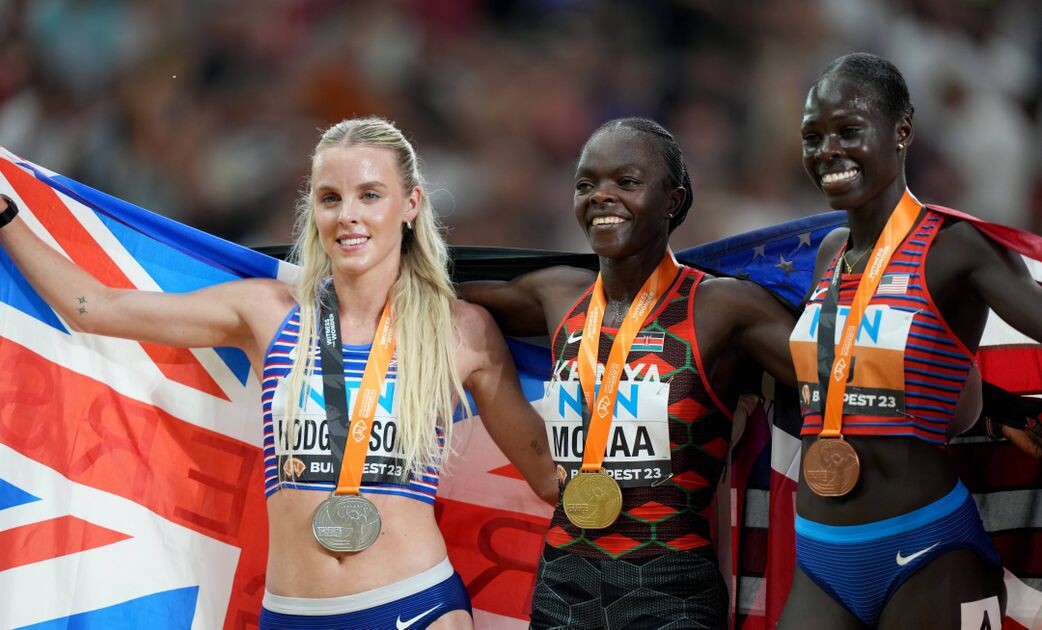
Hodgkinson – as she had done at the Olympics in 2021, as well as at the 2022 and 2023 World Championships – finished second on that occasion in a British record of 1:55.19.
Moraa wound up fourth in that race, but the Kenyan had won the biggest prize of the year in Budapest, taking the world title in a PB of 1:56.03.
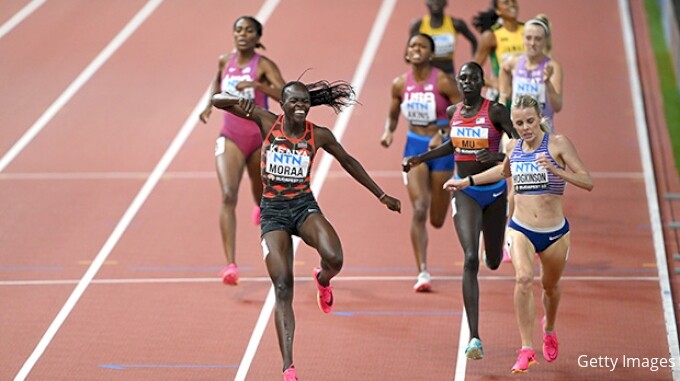
The trio have clashed just three times in the past, with Mu coming out on top in two of those encounters.
It’s the second big middle-distance clash announced by the Prefontaine Classic, following the news last month that Olympic 1500m champion Jakob Ingebrigtsen will take on world champion Josh Kerr and North American record-holder Yared Nuguse in the Bowerman mile.
by World Athletics
Login to leave a comment
Prefontaine Classic
The Pre Classic, part of the Diamond League series of international meets featuring Olympic-level athletes, is scheduled to be held at the new Hayward Field in Eugene. The Prefontaine Classicis the longest-running outdoor invitational track & field meet in America and is part of the elite Wanda Diamond League of meets held worldwide annually. The Pre Classic’s results score has...
more...Mary Moraa confirms next assignment in the build up to the Paris 2024 Olympics
Commonwealth Games 800m champion Mary Moraa has confirmed her next destination as she builds up steadily for the Paris 2024 Olympic Games.
Reigning World 800m champion Mary Moraa has disclosed her next stop after a fruitful outing at the African Games where she bagged a gold medal in the 400m and propelled Team Kenya to a bronze medal in the 4x400m mixed relay.
Moraa will be eyeing her maiden appearance at the Olympic Games in Paris, France and also looking for a podium finish in the event which has very strong opponents waiting for her to descend on the starting line.
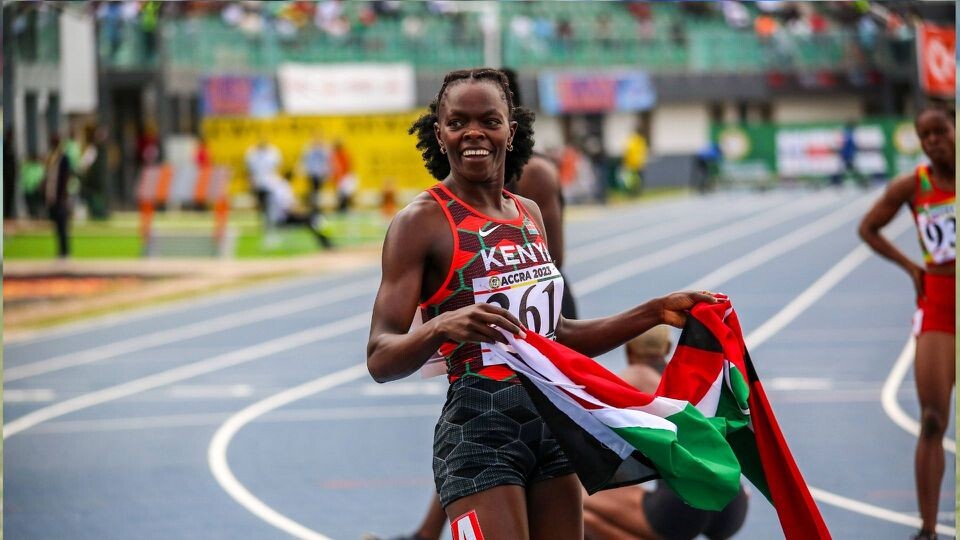
The Commonwealth Games champion has confirmed participation at the Kip Keino Classic, where she intends to showcase fireworks just like last year. This year’s event will be held at the Nyayo National Stadium and the likes of Africa’s fastest man Ferdinand Omanyala and world leader Letsile Tebogo have already confirmed participation.
In a post on her Facebook page, Kisii Express said: “From African Games, I shift my gears to Kip Keino Classic Continental Tour.”

Moraa has been off to a good start to the season and she will hope to enjoy 2024 just like she did in 2023. The Kenyan was only beaten once in the 800m, at the Prefontaine Classic, the Diamond League Meeting final, where she finished fourth.
In the race, Athing Mu won the trophy as Great Britain’s Keely Hodgkinson and Jamaica’s Natoya Goule completed the podium.
This season, she has competed in the 400m unbeaten and her speed seems to be in perfect condition. At the Kip Keino Classic, Moraa will compete in her specialty, the two-lap race.
by Abigael Wuafula
Login to leave a comment
Paris 2024 Olympic Games
For this historic event, the City of Light is thinking big! Visitors will be able to watch events at top sporting venues in Paris and the Paris region, as well as at emblematic monuments in the capital visited by several millions of tourists each year. The promise of exceptional moments to experience in an exceptional setting! A great way to...
more...Mary Moraa confident of breaking Caster Semenya's 600m world record
Mary Moraa has revealed that breaking Caster Semenya's 600m world record is among her many plans this season.
In her build-up to breaking the 800m world record, reigning world 800m champion Mary Moraa will be keen to attack the 600m world record.
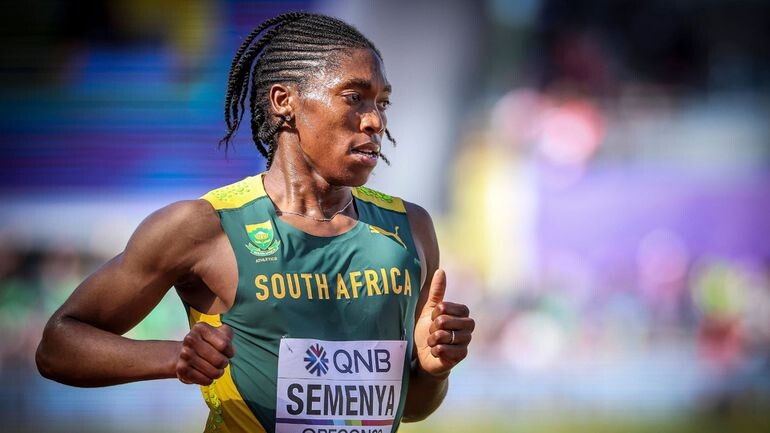
Moraa explained that her body is responding well to training and she is clearly on fire owing to her dominant exploits during the African Games national trials.
Kisii Express won the 400m final of the race to cut a direct ticket to the continental showpiece scheduled for Accra, Ghana.

“I will go for the 600m where I will attack the world record…I don’t know where I’ll compete exactly but I’m going for the record,” Moraa said.
The 600m world record currently stands at 1:21.77 and was set by South Africa’s Caster Semenya back in 2017 in Berlin, Germany.
Meanwhile, after the African Games, Moraa will return to the country to compete in the Kip Keino Classic where she also intends to shine.
She also noted that she is impressed with her form this season and cannot wait to see how the campaign will turn out for her.
“I’m happy to have come here and run well and my body is coming up slowly and I’m excited to see how the season turns out,” Moraa said.
The 23-year-old had an amazing 2023 season, winning her first world title and becoming only the third Kenyan woman to claim the 800m title at the World Championships.
This she achieved after clocking a Personal Best time of 1:56.03 to win the race ahead of Great Britain’s Keely Hodgkinson and Athing Mu. She now looks forward to enjoying an amazing 2024 season, with the Olympic Games in Paris, France being in the cards.
by Abigael Wuafula
Login to leave a comment
6 Running Benefits for Seniors That’ll Convince You to Lace Up Today
Research and experts explain all the advantages you gain from going for a run, including the physical and mental.
Despite what you may have been told, running has no cut-off age. You don’t have to slow down once you hit a particular milestone or switch to low-impact exercise. Running isn’t too hard on an older body, and, no, it won’t wreck your knees.
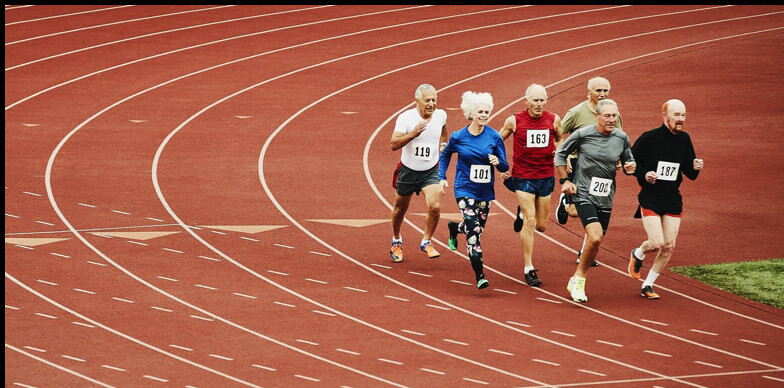
In fact, the list of running benefits for seniors spans the physical, mental, and social. To highlight some of the most compelling reasons for running well into your golden years, we asked coaches, trainers, and healthcare professionals who work with an older population for their takes. Read on to learn why some of your best miles may be ahead of you.
1. Supports Heart Health
As you age, your risk for cardiovascular disease increases as performance and health-related factors like cardiac output (or the volume of blood your heart pumps per minute), maximal oxygen uptake (a.k.a. VO2 max), and maximum heart rate wane. But research shows that exercise can help decrease your risk of heart disease—and the more active you are, the lower your risk.
“Running won’t stop the decline, and it isn’t for everyone. But done correctly and safely by engaging in a program designed specifically for seniors, it provides a way to slow and mitigate these inevitable declines,” Hiroyuki “Mike” McKnight, coach and founder of Running Workx, a program that specializes in training older adults, tells Runner’s World. “Running consistently over time with higher endurance levels makes the heart stronger and more efficient, especially for those who have been living more sedentary lifestyles during their older adult years.”
Because it’s an aerobic activity, running can improve the heart’s stroke volume (or the amount of blood pumped out of the heart with each contraction), encourage the formation of new blood vessels, and increase the number and size of mitochondria or the “powerhouse” of the cells that help you produce energy.
2. Improves Breathing Function
Lung function, which basically means how well a person breathes, peaks in your 20s and starts to decline around age 35. Combined with age-related sarcopenia (muscle loss and atrophy) of the breathing muscles, namely the diaphragm, can make breathing more difficult and render you more susceptible to respiratory infections, like the flu and pneumonia.
Research shows that moderate to high-intensity exercise, like running, may improve pulmonary function in seniors. A randomized clinical trial involving 45 people, published in Perceptual and Motor Skills, found that participants over 75 who engaged in moderate aerobic activity showed improved forced vital capacity (FVC, a marker of pulmonary health) after a 10-week exercise program. Seniors who performed high-intensity exercise for the same period of time showed improved FVC and forced expiratory volume in one second (FEV1.0, an additional pulmonary health marker). Meanwhile, the sedentary control group showed no improvements.
3. Increases Bone Density
When it comes to bone density, running is a bit of a double-edged sword. Robert Linkul, C.S.C.S., owner of Training the Older Adult, is quick to point out that the high-impact nature of running may not be advisable for deconditioned seniors with bone density issues. Doing too much too soon could lead to shin splints and other micro-fractures, he warns.
That said, an appropriately progressive training plan that slowly ramps up to running can help improve conditions like osteopenia and osteoporosis. “Ground impact is beneficial, big time,” he says. “You’re getting anywhere between three to six times your bodyweight with ground impact when you’re leaving the ground when you’re striding on a run.”
Todd Buckingham, Ph.D., professor of movement science at Grand Valley State University in Allendale, Michigan, also lists “bone strengthening” among the biggest benefits to senior runners, as it has real implications for quality of life and long-term health outcomes.
Buckingham notes that falls are among the leading causes of injury and injury death for seniors, and hip fractures are associated with elevated mortality. “Increasing the bone density of the hip can help prevent those fractures from occurring,” he says. “Running also strengthens the muscles of the lower body and helps improve balance, so you’ll be less likely to fall in the first place.”
4. Boosts Mood
A run is the ultimate mood booster, especially for older individuals who may be at greater risk for depression. “It’s hard to quantify, but in my experience on the ground, I see running providing seniors with a positive mechanism to cope with the everyday stresses of life,” McKnight says. “Whether it’s before the day starts or at the end of a tough day, there’s nothing like a good run outside to take one’s mind off things and create an environment to enjoy the moment.”
Running also creates opportunities for social interaction through running groups, clubs, coaching, and running-related events. Seniors who run may find that they have more chances to connect with others and therefore are better able to avoid isolation, which, according to a longitudinal study published by the Journal of the American Geriatrics Society, can significantly increase an individual’s risk of dementia.
5. Promotes Self-Efficacy
In her work, Colleen Brough, D.P.T., assistant professor of rehabilitation and regenerative medicine at Columbia University Irving Medical Center in New York City and director of Columbia RunLab, witnesses firsthand the physiological benefits that running can afford seniors. “We observe improved lipid profiles for those with cardiovascular disease, optimized metabolism—especially helpful for those struggling with obesity—and improved glycemic control in those new runners who have diabetes,” she says.
But what’s perhaps equally impactful is how running can improve older adults’ self-esteem and self-efficacy, or believing in one’s own capabilities. “In a world of unrealistic standards set by choreographed social media images that often disregard those of us post-40, self-efficacy is more important than ever,” Brough explains.
Running allows seniors to challenge themselves, achieve goals, and try again when they miss the mark. “Frankly, even a bad run that’s been completed provides an immediate sense of accomplishment and satisfaction along with a big dose of stress relief,” Mcknight says.
6. Extends Lifespan
Considering running’s myriad physical and mental health benefits for seniors, it’s no surprise that hitting the road (or the tread) may help you live longer and with fewer disabilities.
Case in point: According to a 2023 International Journal of Environmental Research and Public Health study, adults who spend a minimum of 75 minutes a week jogging or running have longer telomeres—which are a part of chromosomes and known to shorten with age—than those who don’t exercise. Telomeres are better predictors of biological age than chronological years, according to the research.
Also, according to the American College of Cardiology, even running one or two times a week, for a total of less than 51 minutes, fewer than six miles, and slower than 6 miles per hour was associated with a lower your risk of dying compared to those who do not run.
That also shows that if you are a lifelong athlete, you don’t have to maintain your pace or distance to benefit from running.
Safety Considerations for Senior Runners
As with runners of any age, seniors new to the sport should (once they get a doctor’s approval) start slow. “I suggest newbie runners initiate their training with a walking protocol, which more easily transitions them to a new running program,” Brough says. “Depending on initial walking tolerance, this might look like five to 10 minutes of sustained, brisk walking three to four times per week for two weeks.” She suggests gradually working up to 20 minutes before incorporating brief running intervals.
If you have the time and resources, it’s worthwhile to work with a run coach. “As little as one or two sessions can be a game-changer for people,” Linkul says. A running professional will not only help you optimize your form for performance and safety, but they can also customize a training plan that aligns with your goals, experience, and fitness level.
Finally, stay on top of your medical appointments and listen to your doctor, as there are some contraindications to running—and not just for seniors. “Definitely don’t run if you recently experienced a myocardial infarction or change in heart medication, have congestive heart failure, unstable angina, uncontrolled hypertension, or uncontrolled glycemic levels,” Brough says.
Individuals with controlled high blood pressure, a history of heart disease, or circulatory problems may benefit from running, she says, but they must be closely monitored by a healthcare professional.
by Runner’s World
Login to leave a comment
Ihor Verys's surprising secret weapon: nose breathing
Chilliwack, B.C.’s Ihor Verys just ran more than 718 km in 107 continuous hours, claiming the assist to winner Harvey Lewis at Big’s Backyard Ultra in Tennessee on Wednesday evening. Beyond his remarkable fitness and mental stamina, the ultrarunner has a secret weapon: his breath. The athlete swears by nose-breathing, and has perfected his technique while running.
Verys has only been competing for three years, yet has already racked up an incredible list of accomplishments that include wins at B.C.’s gruelling Fat Dog 120 and Alberta’s Canadian Death Race (where he also faced off against Lewis, beating him by more than two hours).
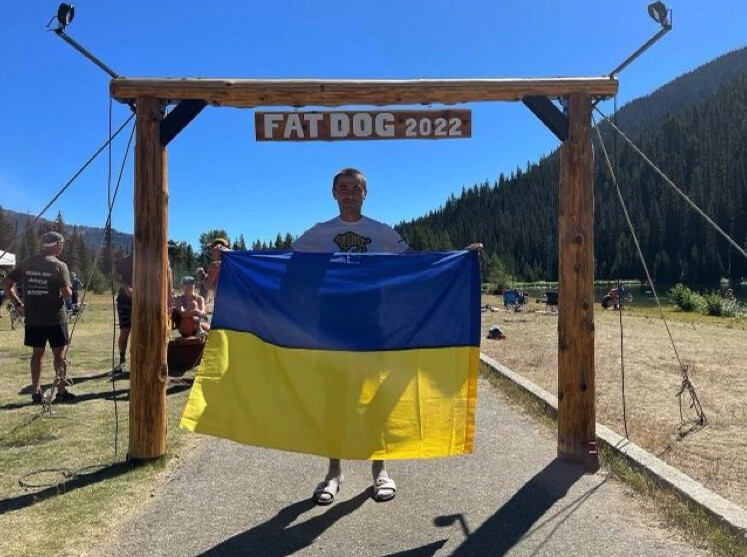
The athlete says that trail running wasn’t always as easy as he makes it appear, and after a 50 km run between two Brandon and Shilo, Man., he discovered his biggest challenge was being out of breath.
The breathing issue had nothing to do with how fast Verys was going. “I was slow like a snail,” he explains. “My chest muscles were incredibly sore. I started looking into it, and came across the book called The Oxygen Advantage by Patrick McKeown.” Verys now calls the book one of his ultrarunning bibles.
In the book, McKeown explains that physiologically, our mouths aren’t created for breathing. “Our mouth serves very different purposes, and our nose is the only organ that should used for breathing,” says Verys. “Interestingly, the entire book was based on the research and lifework of one Ukrainian doctor, who worked and practised in what was then the USSR.” Verys, who moved from Ukraine to Canada in his early 20s, was so fascinated, he read the entire dissertation in its original Russian. “The doctor was able to cure over 500 children from asthma just by getting them to do simple breathing exercises and changing the way they breathe,” he says.
Inspired, Verys set out to change his own breathing technique. “I made sure I was always using my nose to breathe, and I started doing breathing exercises religiously every day,” he says. “I’d take a five to 10-minute break at work to do the exercises, and I’ve been doing them ever since.” Verys was also taping his mouth shut at night to make sure he used his nose to breathe while he slept. “I’ve noticed a huge improvement, and I’ve never had the same issues again. I’ve done a few ultras now and I’ve never had issues with breathing,” he says. “My sleep improved, too. Pretty much all my training runs are done while nose-breathing. I mouth-breathe only very rarely while doing intense speed workouts.”
Verys says the neatest thing about it is that he’s able to pace himself during races using his breathing. “I don’t care about HR or the grade of a climb,” he explains. “If I need to open my mouth to breathe, it means I’m going too fast and I need to slow down.” Unless Verys needs to make a move or attack a hill, he remains at nose-breathing speed. As a result, his lungs and breathing muscles never get overworked, and there is an unanticipated bonus: nose-breathing is stealthy and silent, appearing effortless. “There’s nothing more demoralizing for your competitor when he or she can’t hear you breathe 100+km into the race,” he says.
Curious to try it yourself? Verys says the exercises are fairly basic, and it’s easy to make your own variations. He suggests trying multiple repeats of holding your breath, after exhaling everything in your lungs. According to the research, there’s an anatomical basis for getting your body used to the build-up of CO2 while holding breath, and the result is efficient breathing and the benefits that carries. “The more you do it, the longer you can hold your breath,” Verys says. “At the beginning, I could barely hold my breath for 20 seconds, but now I can comfortably do it for more than 60.”
by Running Magazine
Login to leave a comment
Why Mary Moraa dedicated her world title to Hellen Obiri
Mary Moraa has explained why she dedicated her World 800m title to the reigning Boston Marathon champion Hellen Obiri.
World 800m champion Mary Moraa has disclosed the reason why she dedicated her title to her mentor Hellen Obiri.
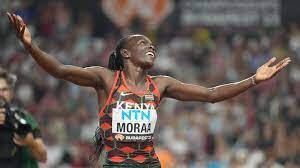
The Commonwealth Games champion singled out Obiri, a two-time World 5000m champion, as a great pillar in her career.
Speaking to Nation Sport, Moraa noted that she sees Obiri as her elder sister and she always checks up on her.
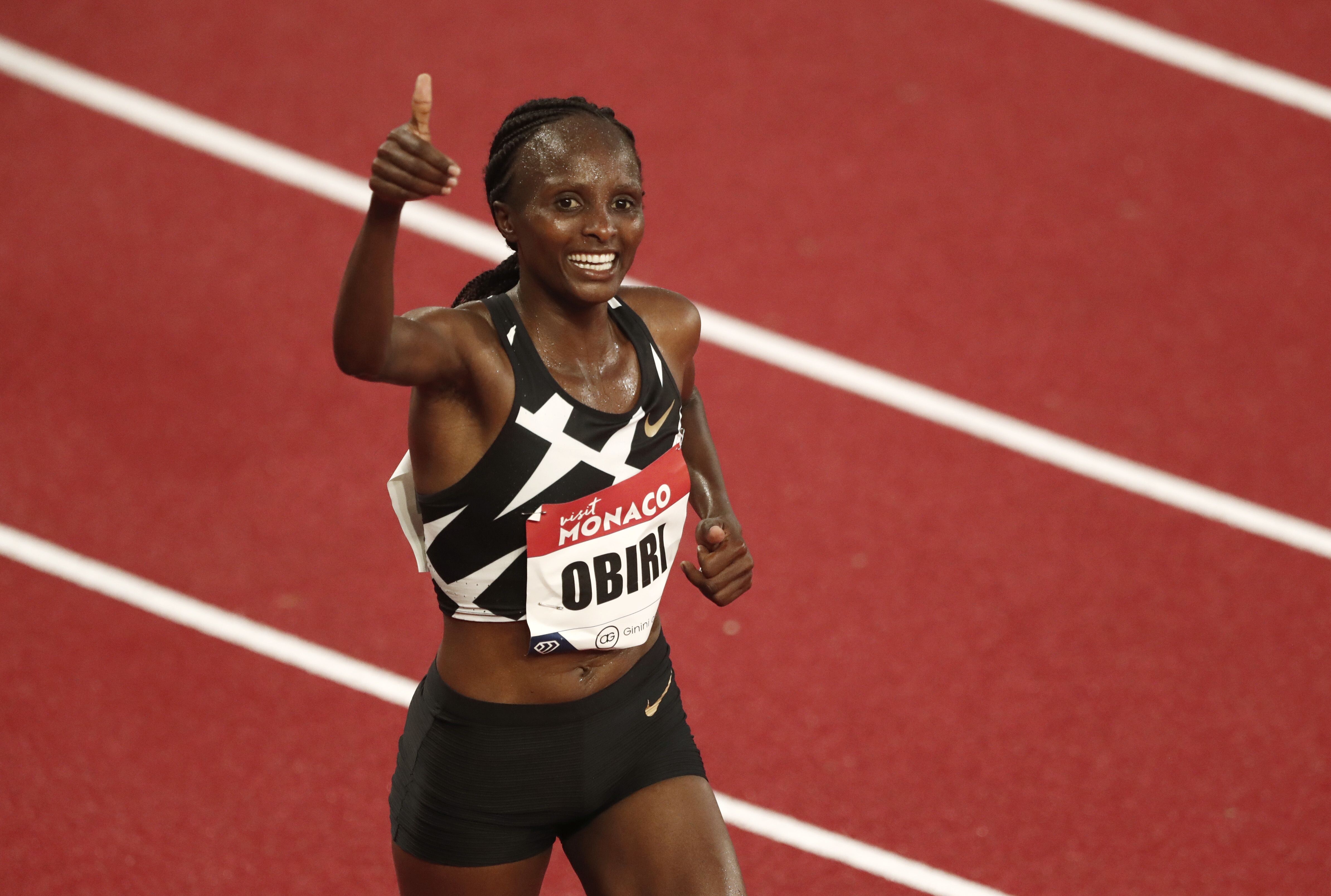
Obiri has played a vital role in Moraa’s career since she gifted Kisii Express her first spikes when she began her professional career. The Boston Marathon champion also encouraged Moraa to switch from the 400m to the 800m where she is currently dominating.
“I want to single out Hellen Obiri who has been encouraging me to be consistent on the track as the person who ensured I clinched the gold.
"Obiri is my elder sister and mentor who always checks on me hence I am proud of her,” Moraa said during her heroic homecoming party at the Ichuni grounds in Nyaribari Masaba constituency.
Meanwhile, at the World Championships in Budapest, Hungary, Moraa was in a class of her own as she destroyed a strong field to clinch top honours in the 800m race.
She clocked a Personal Best time of 1:56.03. Great Britain’s Keely Hodgkinson and USA’s Athing Mu finished second and third respectively in the hotly contested race.
Owing to her win, she became just but the third Kenyan to win the 800m on the global stage after Janeth Jepkosgei and Eunice Sum who won the titles during the 2007 and 2013 editions of the World Championships.
Moraa was also on fire this season, only losing one 800m where she finished fourth at the Prefontaine Classic, the final Diamond League Meeting.
by Abigael Wuafula
Login to leave a comment
Athing Mu a surprise entrant for Pre Classic Diamond League final
The entries for this weekend’s Prefontaine Classic, which will serve as the 2023 Diamond League final, were announced on Tuesday and they included a surprising name: Athing Mu.
The last time we saw Mu, the 2021 Olympic and 2022 world champion at 800 meters, she had just finished third in the 800m at the World Championships in Budapest on August 27 and looked set to end her season.
“I can go home and finally go on vacation and stop thinking about track & field,” Mu said after the race.
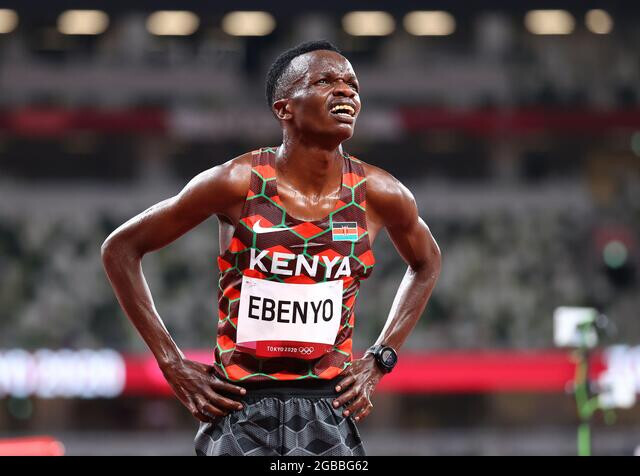
Whether it’s because Mu changed her mind or her sponsor Nike put its foot down (many Nike athletes are required to compete at the Prefontaine Classic as part of their contract), it sure looks like Mu is thinking about track & field again. She is listed among the entrants for the women’s 800 meters (Sunday, 5:19 p.m. ET) alongside world champion Mary Moraa of Kenya and Worlds silver medalist Keely Hodgkinson of Great Britain.
Just because Mu is on the start list does not guarantee that she is competing. She was supposed to run the Millrose Games in February but withdrew the week of the meet. She was listed among the entrants at the Music City Track Carnival in June — something she claimed to have no knowledge of — but did not compete there and also withdrew from the Ed Murphey Classic in August.
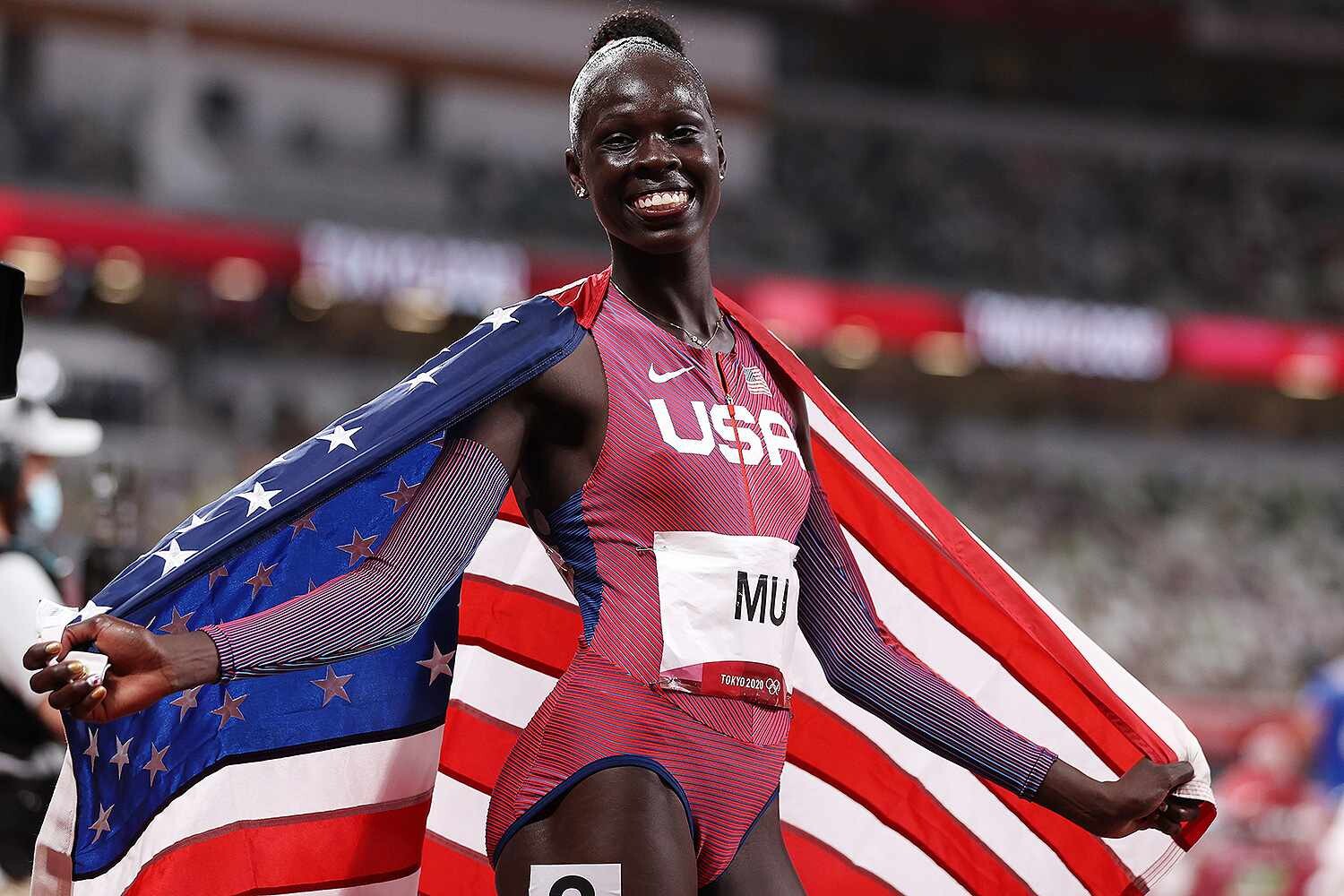
Just because Mu is on the start list does not guarantee that she is competing. She was supposed to run the Millrose Games in February but withdrew the week of the meet. She was listed among the entrants at the Music City Track Carnival in June — something she claimed to have no knowledge of — but did not compete there and also withdrew from the Ed Murphey Classic in August.
Furthermore, it’s not as if Mu’s name just showed up on the start list. Mu has competed in just three meets in 2023, none of them Diamond Leagues, meaning she did not qualify for the Diamond League final. The only way she could have been granted a lane is by wild card — the US, as host country, gets one bonus entry in every event, determined by the meet director. If Mu was not going to take her spot, Prefontaine meet directors Michael Reilly and John Capriotti would have found another American to use the wild card rather than waste it on Mu.
All of this suddenly makes the women’s 800 one of the most compelling events of the meet. The last two Mu-Hodgkinson-Moraa matchups — the 2022 and 2023 world finals — were both fantastic races. Now we get to see how Mu will respond to her third-place finish in Budapest — the first 800-meter defeat of her professional career. And American fans will get to see Mu once more this season in just the third Diamond League appearance of her life. The first two went pretty well: in her DL debut at the 2021 Pre Classic, Mu set an American record of 1:55.04. In DL #2 in Rome last year, Mu won in 1:57.01, more than two seconds up on Moraa.
How will she fare in #3? If all goes to plan, we won’t have to wait long to find out.
by Jonathan Gault
Login to leave a comment
Prefontaine Classic
The Pre Classic, part of the Diamond League series of international meets featuring Olympic-level athletes, is scheduled to be held at the new Hayward Field in Eugene. The Prefontaine Classicis the longest-running outdoor invitational track & field meet in America and is part of the elite Wanda Diamond League of meets held worldwide annually. The Pre Classic’s results score has...
more...Kenya’s Mary Moraa beats Athing Mu for 800m gold at World Athletics Championships
On Sunday evening at the World Athletics Championships in Budapest, Kenya’s Mary Moraa dethroned reigning world champion Athing Mu in the women’s 800m, storming past the Olympic and world champ in the final 200m to win gold in a dazzling personal best time of 1:56.03.
Great Britain’s Keely Hodginson snuck in behind Moraa for her second consecutive silver-medal finish at a world championships, in 1:56:34, and Mu was forced to settle for bronze in 1:56:61. This race marked Mu’s first 800-meter loss since 2021.
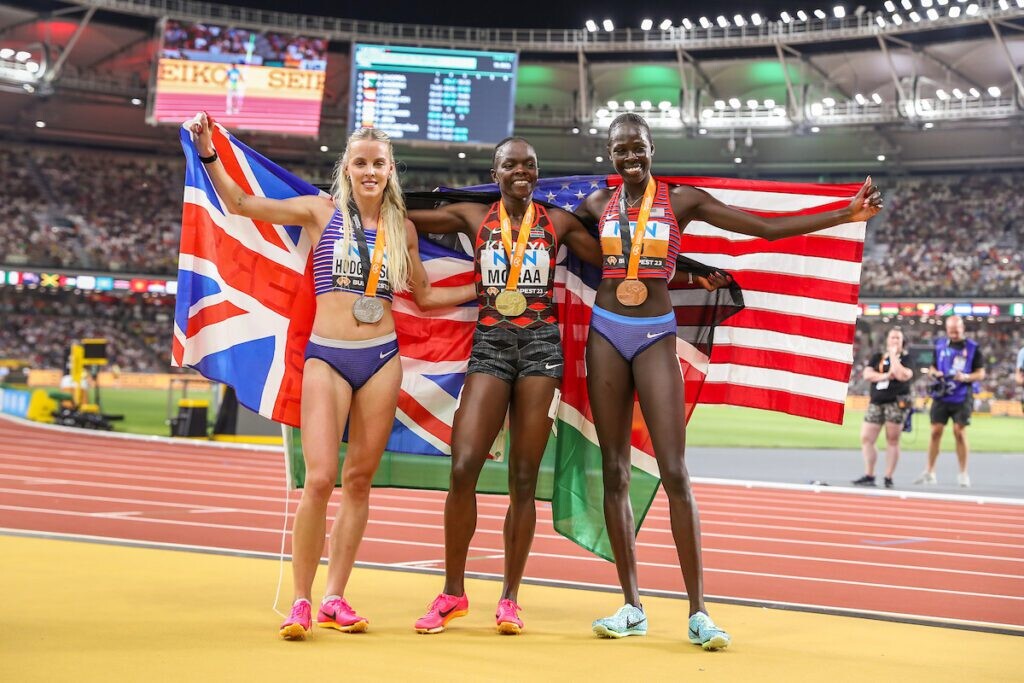
Mu swept ahead unchallenged through the start of the race to take the lead, with a deep field of fast athletes staying close behind her. She led a phenomenally fast first lap, Moraa and Hodgkinson both not far behind, with everyone seemingly eager to get on the podium. A few weeks ago it was up in the air as to whether Mu would appear in Budapest to defend her title, with her coach, Bobby Kersee, sharing that she was considering training through the rest of the season to focus on the 2024 Paris Olympics.
Mu tried to hold the lead into the final lap, eager to leave her competitors behind, but Hodgkinson and Moraa took over on the outside with 200m to go and into the home stretch. Mu, who had been edging over to the outside of lane one, was passed by Hodgkinson on the inside.
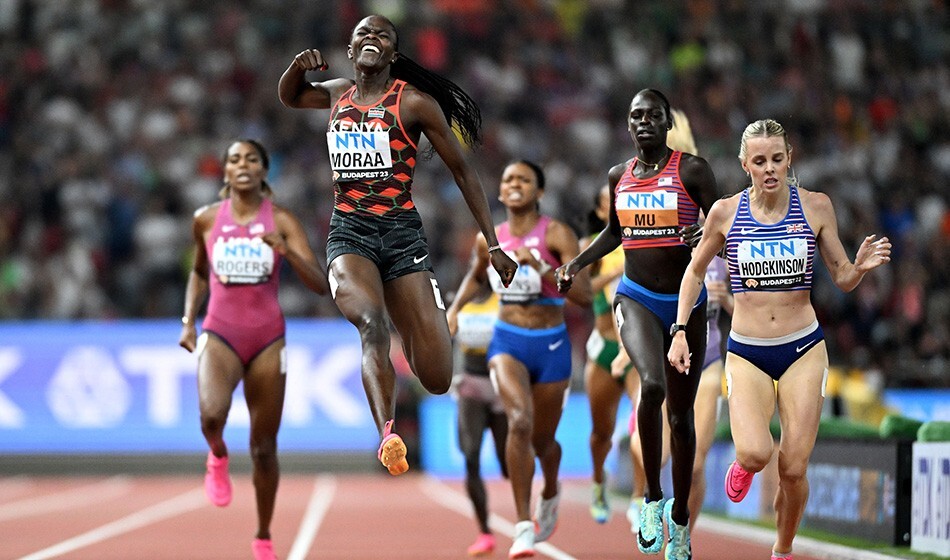
“I came here for the win,” shared second-place Hodgkinson. “But, three silvers now, that’s consistency.” Hodgkinson didn’t feel she could have done anything differently: “It was quick, that first half,” she said of the 56-flat first 400 meters led by Mu. “The quickest I’ve ever gone.”
Moraa finished her race with a triumphant leap over the finish line, and will head into next year’s Paris Olympics with added confidence. As for Mu, she’s looking forward to a vacation. “I’m OK with where I’m at,” she told media post-race.
by Keeley Milne
Login to leave a comment
World Athletics Championships Budapest 23
From August 19-27, 2023, Budapest will host the world's third largest sporting event, the World Athletics Championships. It is the largest sporting event in the history of Hungary, attended by athletes from more than 200 countries, whose news will reach more than one billion people. Athletics is the foundation of all sports. It represents strength, speed, dexterity and endurance, the...
more...Olympic champion Athing Mu doubtful for 2023 World Athletics Championships
Defending 800m champion Athing Mu is contemplating the possibility of forgoing the 2023 World Athletics Championships to concentrate her training efforts on preparing for the Paris 2024 Olympics.
The Tokyo 2020 Olympic gold medalist finished second in the 1,500m at the U.S. National Trials last July, behind Nikki Hiltz. Despite this, she declared her intention to focus on the 800m in Budapest.
However, on Wednesday (2 August) her coach Bobby Kersee said Mu’s participation in the Worlds is still a decision they are mulling over.
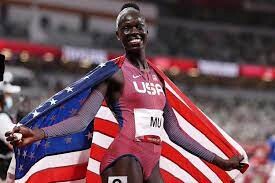
“It’s in our control if we decide we’re just going to go ahead and train through this year and focus on next year, then that’s what we’re going to do,” he told LA Times.
“The training is going well but our thought process, openly, is that we’re going to just train here in L.A. for the next two weeks and the next time she gets on the plane it’ll either be on vacation or to Budapest.”
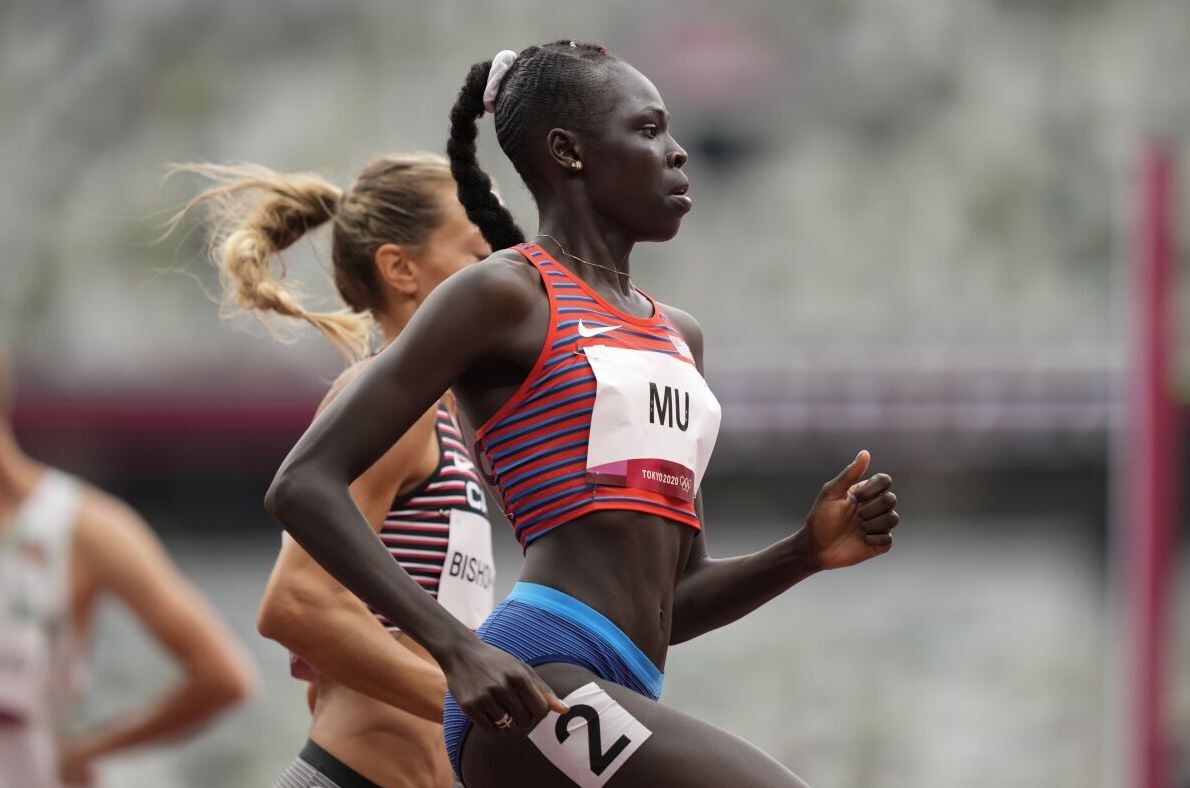
The 21-year-old, who won the 800m gold in Oregon last year, has even withdrawn from a build-up race at the Ed Murphey Classic in Memphis, Tennessee. Mu was initially scheduled to compete in the 400m this weekend.
Throughout this season, she has only participated in three races: the 800m race she triumphed in at the NYC Grand Prix in June, as well as the 1,500m qualifying race and final at the U.S. Championships.
Should she decide not to compete in Budapest, Team USA, which has the opportunity to field four runners, will feature Nia Akins, the Trials winner, along with Raevyn Rogers and Kaela Edwards, who secured second and third positions, respectively.
Mu's absence will elevate Olympic and world silver medalist Keely Hodgkinson of Team GB, as well as Kenya'sMary Moraa, the reigning Commonwealth Games champion and third-place finisher at the 2022 Worlds, as the favorites for the gold in Budapest.
Login to leave a comment
World Athletics Championships Budapest 23
From August 19-27, 2023, Budapest will host the world's third largest sporting event, the World Athletics Championships. It is the largest sporting event in the history of Hungary, attended by athletes from more than 200 countries, whose news will reach more than one billion people. Athletics is the foundation of all sports. It represents strength, speed, dexterity and endurance, the...
more...Faith Kipyegon now plans to attack the 40-year-old 800m world record
Her main focus at the moment is to successfully defend her world title when she heads to Budapest later this month.
Triple world record Faith Kipyegon might be targeting the 40-year-old 800m world record if a chance presents itself.
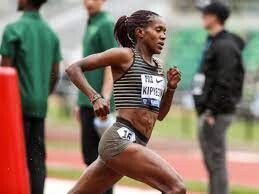
Kipyegon has a personal best time of 1:57.68, which she ran to win the Diamond League Meeting in Doha, Qatar in 2020. The last time she ran the two-lap race was last year during the Trials for the Commonwealth Games and World Championships where she finished.
After three world records, will Kipyegon consider lowering Czechia’s Jarmila Kratochvílova world record time of 1:53.48?

“I don’t know…800m is not easy…but anything is possible. For now, I leave that one for Mary Moraa, she is capable…or Athing Mu and Keely Hodgkinson.
They are all capable of breaking that barrier in the 800m. But if a chance comes whereby I am able to try, I’ll appreciate it,” Kipyegon told Olympics.com.
Her main focus at the moment is to successfully defend her world title when she heads to Budapest later this month.
She admitted to pressure ahead of the event since she will be doubling in the 1500m and 5000m. Her performance at the World Championships will determine greatly whether she will also be doubling at the Paris Olympics.
“I can’t go there like just an athlete, now I have three world records, they expect a lot from me. But going to Budapest, I have to just be myself and run my races and see what will happen at the finish line.
Having fun, enjoying sports and even life is amazing… it has been the drive of our success. It helps mentally (by distracting) you from thinking of races every day and upcoming races and what you want to achieve or what will be the outcome,” she said.
by Abigael Wuafula
Login to leave a comment
World Athletics Championships Budapest 23
From August 19-27, 2023, Budapest will host the world's third largest sporting event, the World Athletics Championships. It is the largest sporting event in the history of Hungary, attended by athletes from more than 200 countries, whose news will reach more than one billion people. Athletics is the foundation of all sports. It represents strength, speed, dexterity and endurance, the...
more...2023 US Outdoor Track and Field Championships preview from Chris Chavez
Last night was the deadline for athletes to declare their event for the 2023 U.S. Outdoor Track and Field Championships, which will take place in Eugene from July 6-9. At USAs, athletes are allowed to enter multiple events and then make a decision about which event(s) they wish to contest once entries are in, which allows those who’ve achieved multiple qualifiers to be strategic about where they want to concentrate their efforts. The top three in each event who meet the qualifying standards for the World Athletics Championships will go on to represent the United States in Budapest in August.
Reigning World champions have a “bye” to the next year’s Worlds, which means the country they represent gets to send four athletes, not three. Similarly, reigning Diamond League and World Athletics Continental Tour champs earn a bye, but if there is both a World and other champion in the same event, their country still only gets to send one extra athlete.
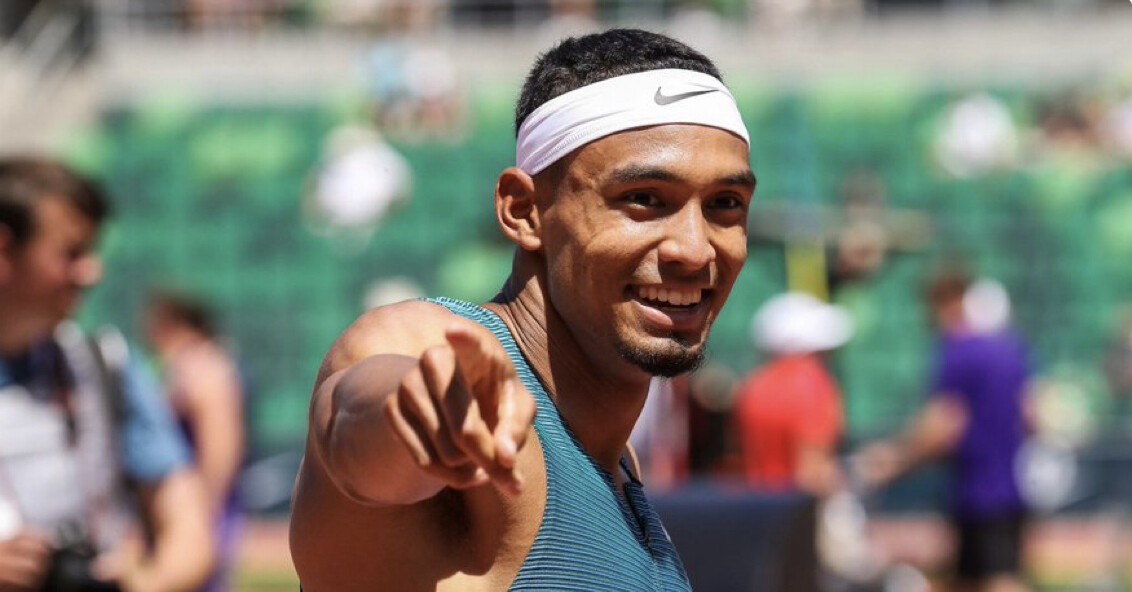
These complex rules lead many American World champions to make interesting choices about what events they wish to contest at USAs and how hard they want to push while still in the middle of the championship season.
MEN’S SPRINTS
– 100m world champion Fred Kerley has the bye to the world championships and will only run the 200m. Last year, he qualified for the World Championships in the 200m with a third place finish behind Noah Lyles and Erriyon Knighton. He injured his quad in the semifinal of the 200m and was unable to run the 4x100m relay for Team USA. Kerley has a season’s best of 19.92 from his win at the Doha Diamond League.
– 200m world champion Noah Lyles has the bye to the world championships and will only run the 100m. He ran a season's best of 9.95 in his outdoor opener in April. The last time he ran the 100m at a U.S. Championship, he finished seventh at the 2021 U.S. Olympic Trials final.
– 400m world champion Michael Norman is declared for the 100m and 200m at the U.S. Championships. He ran a wind-aided 10.02 (+3.0m/s wind) at the Mt. SAC Relays in April. He has not raced since a last place finish in the 200m at the Doha Diamond League in 20.65 on May 5.
WOMEN’S SPRINTS
– Sha’Carri Richardson is running the 100m and 200m. She is looking to qualify for her first World championship team. Her season’s best of 10.76 from her victory at the Doha Diamond League is the second-fastest performance in the world this year. Her season’s best of 22.07 from the Kip Keino Classic at altitude in Nairobi is No. 4 on the world list.
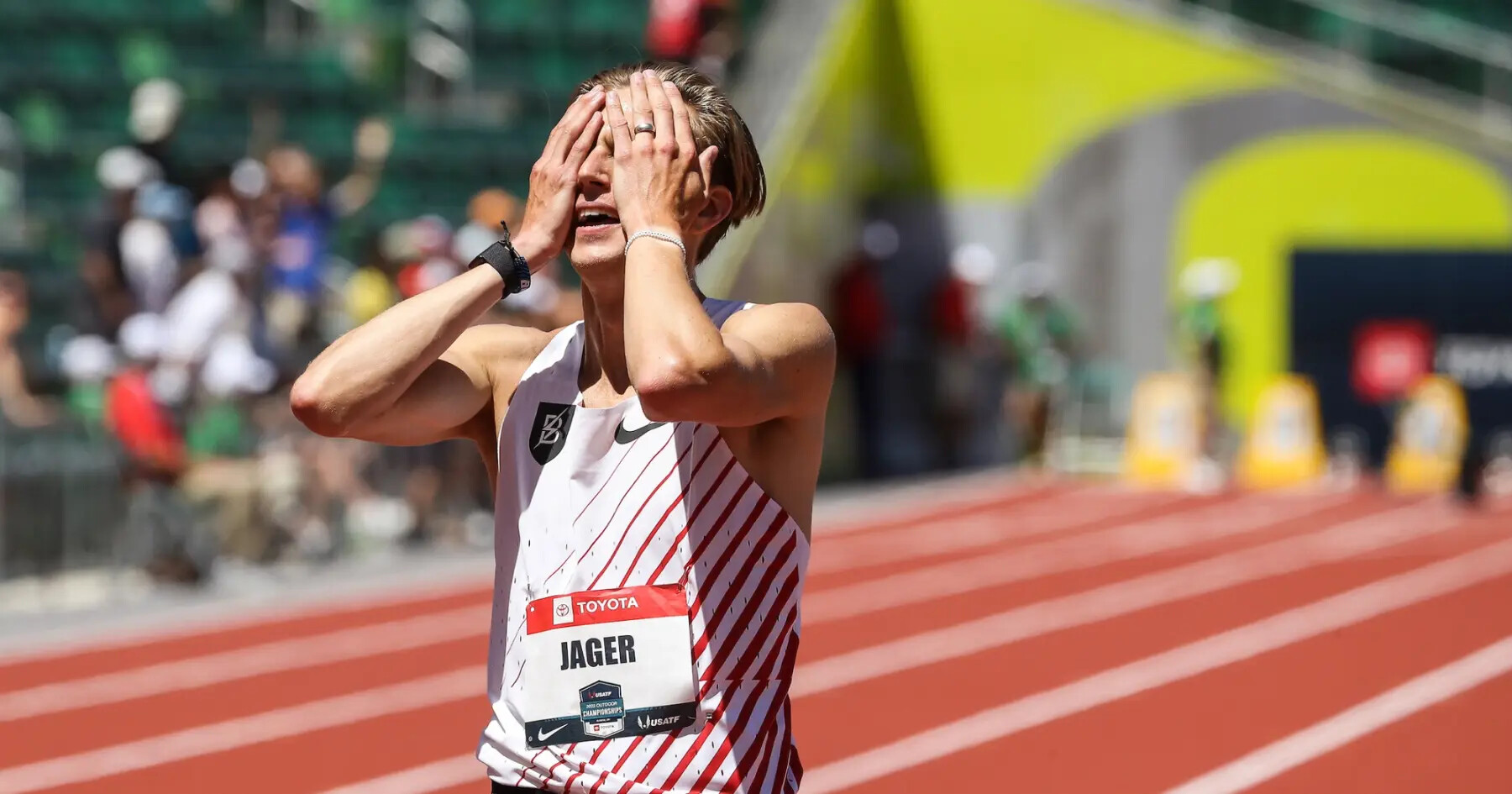
Only Gabby Thomas’ 22.05 from the Paris Diamond League is faster this year by an American woman. Richardson, the 2019 NCAA champion, attempted the double at USAs in both 2019 and 2022, where her highest finish was 8th in the 100m in 2019. She has yet to make a U.S. final in the 200m.
– Reigning U.S. champion Abby Steiner is only running the 200m despite qualifying in both the 100m and the 400m as well. She just ran her season’s best of 22.19 to win the NYC Grand Prix.
– As previously announced, 400m hurdles Olympic champion, World champion and world record holder Sydney McLaughlin-Levrone is running the flat 400m. She plans to make a decision after the U.S. Championships whether she will run the flat 400m (if she qualifies) or defend her 400m hurdles title in Budapest.
– NCAA record holder Britton Wilson, who ran 49.14 to become No. 4 on the U.S. all-time list, will only run the 400m and not the 400m hurdles. She hurdled at last year’s World championships and participated in the 4x400m relay.
MEN’S DISTANCE
– This year’s men’s steeplechase team should have a new look. 2016 Olympic silver medalist Evan Jager is not entered in the steeplechase. He has raced just once this outdoor season. Hillary Bor, the reigning U.S. champion who also owns the fastest steeplechase time by an American this year in 8:11.28, broke his foot earlier this spring and will miss the U.S. Championships. This is the first U.S. team he has missed since 2015. The top returner is Benard Keter, who made the Olympic team in 2021 and the World team in 2022, but he is only the fifth-fastest entrant by seed time.
– For the first time, 2021 U.S. 5000m champPaul Chelimo is entered in both the 5000m and the 10,000m. Chelimo, the 3x global medalist at 5000m, has typically only focused on the shorter event, but after his 27:12.73 performance at the Night of the 10,000m PBs in the U.K. earlier this season, he has decided to contest both events. He’s seeded No. 4 by qualifying time in both events behind Grant Fisher, Woody Kincaid, and Joe Klecker (all also double-entered).
WOMEN’S DISTANCE
– 800m Olympic and world champion Athing Mu entered the 1500m, as previously announced with coach Bobby Kersee. She has the bye to the world championships in the 800m. Her personal best of 4:16.06 is well outside the automatic standard of 4:05.00 and was achieved outside the qualifying window for the championships, but USATF rules allow for significant discretion in accepting entries from the Sports Committee chair.
– Josette Norris and On Athletics Club coach Dathan Ritzenhein have decided to focus solely on the 5000m. Norris ran 14:43.36 at Sound Running’s Track Fest in early May. That’s the second-fastest time by an American woman on the year behind her teammate and training partner Alicia Monson’s 14:34.88 at the Paris Diamond League. Monson is entered in both the 5000m and 10,000m after choosing to only contest the 10,000m last year.
– NC State’s NCAA record holder Katelyn Tuohy will only run the 5000m. Tuohy qualified for NCAAs in both the 1500m and the 5000m but ended up only running the 1500m after an uncharacteristically disappointing performance in the final.
– The Bowerman Track Club’s Elise Cranny has declared for the 1500m, 5000m and the 10,000m. The first round of the women’s 1500m is 19 minutes before the final of the 10,000m on Day 1 of the competition, so Cranny will likely scratch one or more events at a later point.
by Chris Chavez (Citius magazine)
Login to leave a comment
USATF Outdoor Championships
With an eye toward continuing the historic athletic success of 2022, USATF is pleased to announce competitive opportunities for its athletes to secure qualifying marks and prize money, including a new Grand Prix series, as they prepare for the 2023 World Athletics Championships in Budapest, Hungary.As announced a few months ago, the 2023 Indoor Championships in Nanjing, China have been...
more...The Olympic and world 800m champion Athing Mu will make her season debut at the USATF NYC Grand Prix Meet on June 24
Athing Mu, the Olympic and world 800m champion, will make her season debut at the USATF NYC Grand Prix. This meet is part of the World Athletics Continental Tour Gold series, the USATF NYC Grand Prix takes place at Icahn Stadium on Randall’s Island June 24.
It will be Mu's first competition in exactly 11 months, as she returns to action for the first time since the World Athletics Championships Oregon22, where she added world 800m gold to the Olympic title she claimed in Tokyo.
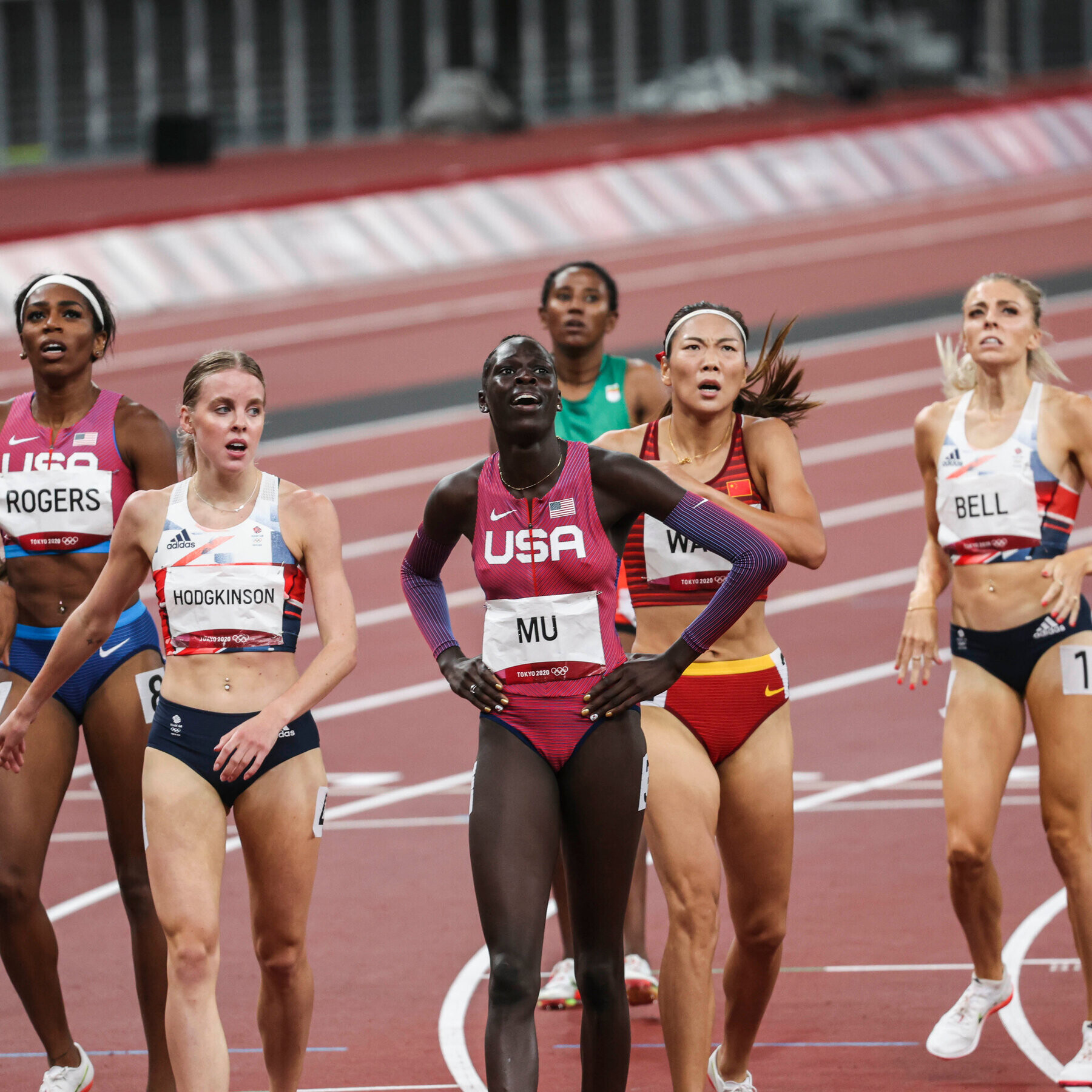
Mu made herself known as one of the world’s top track athletes in 2021 when she won the NCAA title in the 400m, and then gold medals in the 800m and 4x400m relay at the Olympic Games. The 21-year-old followed up her Olympic success with gold in the 800m in Oregon, running 1:56.30. Her US record of 1:55.04 was set in Eugene in August 2021.

Athing Mu was born and raised in Trenton, New Jersey, and is the second youngest of seven siblings. Her parents immigrated to the United States from South Sudan, and her family is of South Sudanese heritage. She began competing in track at the age of 6. Mu did not join her high school track team, choosing to compete instead for Trenton Track Club. She graduated from Trenton Central High School in 2020
Challenging her in New York will be her fellow New Jersey native and the world indoor 800m champion Ajee’ Wilson, and the US indoor 1500m champion Heather MacLean.
In the women’s 100m hurdles, 2015 world champion Danielle Williams of Jamaica joins a field that includes Keni Harrison of the United States, the former world record-holder, and Jamaica’s Megan Tapper, the Olympic bronze medallist.
Those top athletes join the previously-announced Noah Lyles, Gabby Thomas, Zharnel Hughes, Ackeem Blake, Sydney McLaughlin-Levrone, Aleia Hobbs, Melissa Jefferson, Devon Allen, Trey Cunningham, Robert Dunning, Bryce Hoppel, Will Sumner, Chase Ealey and Maggie Ewen.
by World Athletics
Login to leave a comment
At 69, Bobby Kersee is track's 'mad scientist' and as influential as ever
Four years ago, the man associated with speed more than any track and field coach in the world felt himself slowing down, and he did not know why.
Since he was born in Panama in 1954 to a Panamanian mother and U.S. Navy father, Bobby Kersee has always been restless, a self-described wanderer with energy that matched his athletes. But in 2019, feeling unusually sapped, he called his doctor in St. Louis. Blood tests produced results dangerously far beyond the norm. Pancreatitis kept him stuck in a hospital for four weeks.
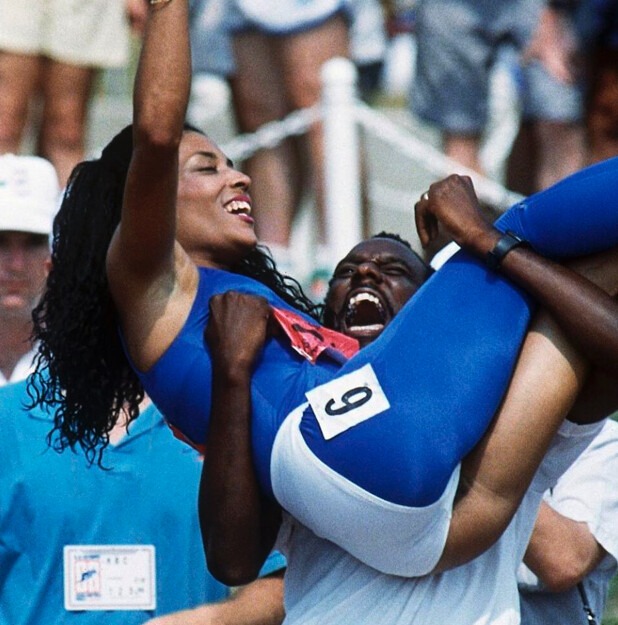
Once discharged, Kersee gave up red meat and alcohol.
What he would not quit was track.
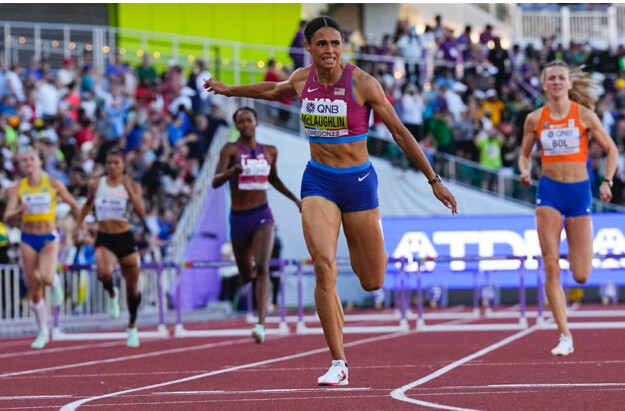
Forty years after coaching his first world champion Kersee, now 69, paced relentlessly for four hours on Thursday while watching his training group at West Los Angeles College.
“Everyone kind of says the same thing: You know, he's different in terms of he's basically a mad scientist,” said Athing Mu, the 20-year-old reigning Olympic and world champion at 800 meters who switched to Kersee’s coaching in September to expand her range. “He knows what he's doing.”
Under cloudy skies at the track high above Culver City, nine athletes in his training group, dubbed Formula Kersee, ran tailored workouts and waited for his every word, from the barked “let’s go!” to commands about mechanics he hollered to athletes mid-run. He lifted hurdles, held court with reporters and stopped only to film block starts with his iPhone.
At an age when he might have become anachronistic, Kersee and his methods still represent sprinting’s gold standard, associates and athletes say. Invigorated by a training group that describes itself as a family and could be dominant into the next decade behind headliners Mu and 23-year-old 400-meter hurdles world champion and world record-holder Sydney McLaughlin-Levrone, Kersee said his career has no discernible finish line.
His coaching, primarily of sprinters and hurdlers, has brought his athletes at least one gold medal in 10 consecutive Summer Olympics, a litany of world championships and world records and, for Kersee, veneration, criticism and influence.
As the first professional meet held at UCLA’s Drake Stadium since 1990, and a key early tentpole in USA Track & Field’s attempted plan to grow its U.S. fanbase before the 2028 L.A. Olympics, this weekend’s Los Angeles Grand Prix is both a callback to a time when track’s popularity soared and, its organizers hope, a harbinger such times can return.
Outside of Sebastian Coe, the 1984 Olympic gold medalist in the 1,500 who has since ascended to lead track’s global governing body, World Athletics, few figures have spanned both eras as prominently as Kersee.
Athletes and associates credit his ability to turn seemingly outlandish goals and times into tangible results to an ability to know what they need. Malachi Davis, who has overseen McLaughlin-Levrone’s training since she turned professional, likened Kersee to a conductor, his whistle and yellow stopwatch replacing a baton to direct “a beautiful dance of confidence and knowledge.”
Many coaches can teach how to run fast and build a race plan, McLaughlin-Levrone said, but Kersee understands “how to break it down piece by piece.”
Robert Forster, a Santa Monica-based physical therapist who has worked with Kersee’s athletes since 1983, said Kersee understands the “work-rest ratio” better than any coach, and does not overtrain where other coaches might double down on mileage. Forster has seen Kersee send an athlete home to rest just from the look on their face, and likes to tell a story about the 2016 Olympics, that Kersee later confirmed. Allyson Felix, the Los Angeles native who under Kersee became the most decorated athlete in track’s history, was nursing a severely sprained ankle and the physical therapist told Kersee it needed to be iced 20 minutes every hour. Forster did not expect, however, that Kersee would stay up the entire next night icing the ankle as Felix slept.
Kersee was an early adopter of technology, upgrading his video cameras at a Westwood electronics store years before he could film block starts of sprinters Jenna Prandini and Morolake Akinosun on his iPhone and zip the footage to an iPad on the infield of the West L.A. track.
Yet the Kersee mystique has endured as much because of his grasp on psychology as biomechanics — feeling for when to push and when to pull back.
Brandon Miller, a top 800-meter hopeful who began working with Kersee in September, has heard other athletes describe Kersee as “crazy.” He disputes that characterization, but noted that Kersee knows to stoke his competitiveness entering a workout’s final repetition with four words: “OK, what you got?”
“I've never met any coach like him,” Mu said. “He's not going to make you do anything that's for his sake. You know, it's gonna be all for you and the benefit of you and your career. And so, I come in here, I knew that he was very intentional, and that's something I needed, especially if I want my career to be long.”
Raised by a grandmother as an “A-train baby” bouncing between the Bronx and Queens, Kersee lost his mother, Daphne, when he was 14, before moving to San Pedro for high school.
He put himself through college at Long Beach State by working at a youth correctional facility in Whittier, where Kersee watched wards from midnight until 8 a.m. After graduating, he had two jobs: Track coach at Cal State Northridge, and counselor at another youth facility in Chino. He took over UCLA’s track and field program in 1980 and that provided enough money to be comfortable. Coaching Greg Foster to his first world championship in 1983, and watching his athletes win six golds and four silvers at the Los Angeles Olympics one year later, provided the final confidence he could sustain coaching as a career.
But he did not leave behind the edge required to do his former jobs.
“I used to work in the prisons, so you can’t walk into the prisons being Mother Teresa,” he said. “And then I did find myself carrying a little bit too much of that to the track. I had to calm myself down and say, 'Wait a minute, you’re not working with a warden.'”
Once, an elderly woman approached Kersee in an airport in Indiana and told him she did not like what she had seen from Kersee or the other famed coach with the B.K. initials: Bobby Knight. He did not belittle his athletes, he said, but he also didn’t leave room for interpretation about who ran the workout. The edge created a mystique that “he's crazy,” Miller said. “But he's not. I feel like everybody has preconceptions of everybody but you won't really know unless you're there and you're with them every day.”
Just as when he built his vaunted World Class Athletic Club in the 1980s, he will only train those he can coach hard and have chemistry. His athletes typically train Monday, Tuesday, Thursday and Friday. He treats Monday Zoom calls with the group as though he is re-interviewing for the job. It’s more convenient than years before, he said, when he recalled gathering before dawn in Europe to address their complaints with him.
“I think we have that understanding that I’m going to listen and respect them,” he said. “But my job is to get the job done for them individually and collectively but you hired me. And if you hired me, let me do my job.”
That job, essentially, can be reduced to one thing: Imparting confidence in his plan. And no one does it like Kersee, said Davis, who sprinted professionally before aiding McLaughlin-Levrone.
“He's a competition coach, so the time it counts, you feel confident,” Davis said. “And your head coach is basically your general and then competition is basically war. And yes, you prepare for war but that final voice, that presence, that action, that essence, that’s Bobby. And he earned that by what he’s accomplished throughout his career.”
Kersee allows that age has softened him. As McLaughlin-Levrone recalled last August, Kersee earned her trust when he saw her overwhelmed with emotion at a 2020 practice and handed her a paper showing a wheel of emotions, saying he had trouble expressing himself, too.
Though accustomed to criticism of himself for years — he joked he would be buried in a track, and "probably as much as people hate me, they’ll put me in lane one, because I’ll be stepped on the most" — he worries about how the inundation of social media affects athletes’ mental health. He has traveled to support the singing ambitions of Formula Kersee sprinter Chloe Abbott. This spring, a smiling Kersee was featured on TikTok when his athletes remade the opening credits of the 1990s sitcom “Family Matters.”
Four decades into his career, he has “a whole lot of knowledge and a whole lot of patience,” he said. “But still, don’t let grandpa get out of the chair.”
Ato Boldon was never coached by Kersee during his sprinting career but has known him for 31 years, since they overlapped at UCLA, and has seen a “golden-hearted” side to the coach. He also described Kersee’s coaching equivalent as either Knight or San Antonio’s Gregg Popovich.
“Everybody under him wins,” said Boldon. “But it’s not necessarily a democracy.
“... As time has gone on, people are like, ‘Wow he’s so this or he’s so that, he’s so abrasive.’ Listen, do you want results, or do you not want results?”
No one argues that Kersee gets results. The most common criticism is how rarely his athletes compete en route to smashing records and claiming gold.
Among athletes, meet directors, agents and track officials who see a need for the sport’s biggest stars and strong competition to draw in casual fans, it has become a question of how to unite what is best for the top athletes’ futures with what is best for the sport’s growth. The tensions surrounding the discussion are not dissimilar from the way “load management” in the NBA has sparked concerns whether it will turn off fans from the regular season.
Because many top athletes train under Kersee, he has become a focal point. There is also his history of pulling athletes late before a meet, sometimes because of injury, and sometimes as a power play, as in 1994, when a dispute over pay led him to withdraw Gail Devers from a high-profile Los Angeles indoor meet.
The topic reignited last week when he withdrew Mu and McLaughlin-Levrone from the Grand Prix, a meet for which he serves as co-promoter. It came soon after telling Track & Field News in February that even he would like to see McLaughlin-Levrone run more often, and told The Times in March that there was no reason meets in the U.S. couldn’t draw thousands if the sport’s leaders banded together to promote strong competitions.
Asked about the balance of what is best for his athletes, or the sport, Kersee this week called it a byproduct of limited sponsorship money within the sport, which incentivizes performances at the biggest meets, which often require qualification earlier in the season. Only a handful of stars make big money and can afford to be choosy. He contrasted it with the NFL and NBA, where athletes can still earn a paycheck while resting.
“I think it’s a little tougher on our athletes to try to balance out wanting to run for the public and run for our sport and also knowing if I run too much or make one little mistake it might cost me making a team,” Kersee said. “That if I go out there and run five or six races I’m going to get to the point of, 'OK why is he running me so much and she gets injured over there, did she really need to run?'”
McLaughlin-Levrone released a statement after being pulled from the Grand Prix field that she “regrettably” would not be competing, citing her coach’s choice. It also said she trusted his judgment, which the world record-holder echoed again Thursday.
“He has a plan and he is going to work it out to perfection,” said Boldon, who will call Saturday’s meet as part of NBC’s broadcast team. “It might not benefit USATF, it might not benefit the fans, but you tell me, what moment stood out most from last summer's world championships?”
It was McLaughlin-Levrone’s stunning 50.68 time to win the 400-meter world title and lower her own world record. The run cut through the noise to make SportsCenter. It also left McLaughlin-Levrone sore for days, she said. Seeing her parents in the stands, for the first time after becoming the first woman to run under 51 seconds, she told them “that hurt, so bad.”
“We've been very calculated in when we run and I think it's yielded us great results,” McLaughlin-Levrone said. “Bobby always uses analogies and he's like, 'You don't take the Ferrari out every day for a drive. You take it out when it needs to come out and it does its things and you put it back in the garage.' So, your body can only be pushed to a certain level so much in your career.
“You only have so many races in your legs and I think we're really strategic about which ones we choose to run. Obviously I know the sport wants to see a little bit more and I think we're trying to figure out how to do that in a safe way that we can still accomplish our goals and give them something to look forward to.”
For McLaughlin-Levrone and Mu, the question is not whether they will make this summer’s world championships in Hungary, or next summer’s Paris Olympics, but which events — possibly plural — they will run.
When Kersee evaluates whether to bring an athlete into his coaching, he also looks for their potential range. He thought he lost his job coaching Felix when he told the 200-meter star during his interview that he would have her run the 400.
Mu and McLaughlin-Levrone’s youth and potential range is one of the sport’s most speculative discussions; news about their upcoming races create instant headlines. The duo are “two of maybe the most talented athletes he’s ever had,” Boldon said.
Their world championships last summer gave McLaughlin-Levrone an automatic berth into the upcoming world 400-hurdle field, and Mu an entry into the 800. With that secured, Kersee has focused on running McLaughlin-Levrone in the open 400 meters, where Marita Koch’s world record of 47.60 has been effectively unapproachable for 38 years — only four women have run even faster than 49 seconds in the past 20 years. She once thought 47.60 was “impossible.” Not anymore.
“It's a very daunting number to look at, I'll tell you that,” McLaughlin-Levrone said. “But at the end of the day, I think if we can take the 400 hurdles to 50.6, I think 47.6 isn't too far off.”
In addition to her 800-meter world title, Mu once owned the collegiate 400-meter record and ran on the U.S. 4x400-meter relay team that won Olympic gold in Tokyo.
“I'm still super young and I have not touched the surface of a lot of things yet,” Mu said. “But I do have visions, which is like really big goals of competing in obviously the Olympics again, and then worlds and hopefully, doubling up.”
Would that mean the 800 and 400, or the 800 and 1,500?
“Hopefully both,” she said. “I mean, I would love to have a chance to do 4/8 and then go ahead and do the 8/15 at some point.”
Maybe this explains why Kersee moved so quickly across the track during practice. There was no sign he had once slowed down.
“I’m glad,” he said, “I have that Energizer Bunny still in me.”
This story originally appeared in Los Angeles Times.
Login to leave a comment
10 Reasons to Start Following Track and Field This Year
The 2023 season should be full of record-breaking performances from the sport’s biggest stars. Here are the most important things to know.
Track is back, and if the results from the indoor season and early outdoor meets are any indication, it should be another year of eye-popping results around 400-meter ovals this summer.
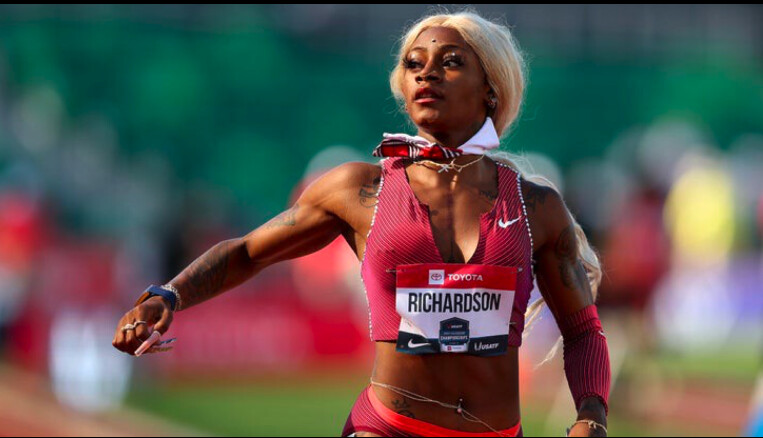
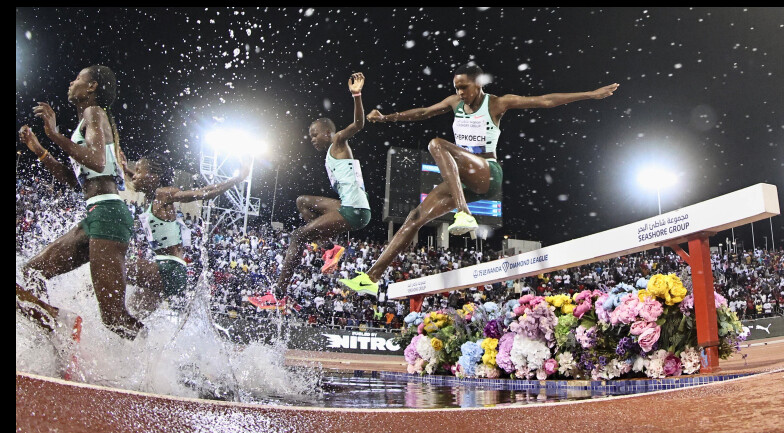
Why is track and field relevant to the average recreational runner?
Perhaps you’re running some of the same distances in your training and racing. Or maybe you have a connection to some of the events from your youth, days in gym class or on the playground. From a human performance perspective, no sport showcases the all-out speed, red-line endurance, max power, dynamic agility, and meticulous bodily control as track and field does.
Here’s a primer on the most awe-inspiring athletes and events of this summer’s track season. Because, come on: with a sport that includes events as multifaceted as the pole vault, as primal as the shot put, and as wild as the 3,000-meter steeplechase—a 1.8-mile race with 28 fixed barriers to hurdle and seven water pits to jump—what’s not to like?
One of the many things that makes track and field so special is that it’s one of the most diverse sports on the planet, both culturally and athletically.
Last summer, athletes from a record 29 different countries earned medals in the 25 different running, jumping, and throwing events at the World Athletics Championships in Eugene, Oregon.
At the highest level, there are athletes of all shapes and sizes from every culture and socioeconomic background. While there certainly are racial and cultural stereotypes that need dissolving and vast inequality among competing countries, from a performance point of view the sport is largely meritocratic, based on the time or distance achieved in a given competition.
Watching American Sydney McLaughlin-Levrone masterfully win the 400-meter hurdles in a world-record time last summer in front of a deafening crowd at Hayward Field in Eugene was a riveting experience. It was vastly different than watching Grenada’s Anderson Peters win the javelin world title with a career-best throw of 90.54 meters on his final attempt to beat India’s Neeraj Chopra, but both had edge-of-your-seat excitement, athletic excellence, and cultural significance.
One of the knocks against track and field in recent years is that it hasn’t done enough to attract casual fans the way professional football, basketball, hockey, and soccer have. Following the On Track Fest, the USATF Los Angeles Grand Prix on May 26-27 in Los Angeles is trying to up the ante by combining a mix of elite-level competition, an interactive fan festival, and top-tier musical performances.
Billed as the one of the deepest track meets ever held on U.S. soil, it will feature a star-studded 400-meter face-off featuring Americans Michael Norman, the reigning world champion, and Kirani James, a three-time Olympic medalist from Grenada, and a women’s 100-meter hurdles clash with world champion Tobi Amusan of Nigeria, Olympic silver medalist Keni Harrison of the U.S., and Olympic gold medalist Jasmine Camacho-Quinn of Puerto Rico.
Saturday’s action will be broadcast live on NBC Sports from 4:30 P.M. to 6 P.M. ET and be followed by a concert event called the Legends Jam, which will include appearances from some legendary athletes and be headlined by Grammy-winning singer Judith Hill.
American sprint sensation Sha’Carri Richardson will be racing the 100-meter dash at the USATF Los Angeles Grand Prix. You probably remember her for her perceived failures more than the astounding times she’s actually achieved on the track.
Two years ago, the sprinter from Dallas blew away the field in the 100-meter dash at the U.S. Olympic Trials with a 10.86 effort, but then she was famously suspended after testing positive for cannabis (which is on the World Anti-Doping Agency’s list of banned substances) and missed the Tokyo Olympics as a result. (She admitted using the drug to cope with the pressure of qualifying for the Olympics while also mourning the recent death of her biological mother.)
Then last year, despite strong early season performances, Richardson failed to make the finals of the 100-meter or 200-meter at the U.S. championships, so she missed out on running in the first world championships held on American soil.
This year, the 23-year-old sprinter appears to be locked in and better than ever, posting a world-leading 10.76 100-meter time on May 5 in Doha (she also ran an eye-popping 10.57 with an over-the-limit tailwind on April 9 in Florida) and posted the second-fastest time in the 200-meter (22.07) on May 13 at a meet in Kenya.
If she keeps it all together, expect Richardson to finally contend with elite Jamaican sprinters Shericka Jackson and Shelly-Ann Fraser-Pryce in the 100 and 4×100-meter relay in August at the World Athletics Championships in Budapest, Hungary.
A few years ago, American sprinter Fred Kerley was on his way to becoming one of the world’s best 400-meter runners. But he wanted more than that. What he really had his heart set on was becoming the world’s fastest man, a moniker that goes with the most dominant sprinter in the 100-meter dash.
Ignoring doubters, Kerley retooled his training and earned the silver medal in the 100-meter at the Tokyo Olympics (.04 seconds behind Italy’s Marcell Jacobs) and then continued his ascent last year by winning the U.S. championships (in 9.76, the sixth-fastest time in history) and world championships (9.86).
The 28-year-old from San Antonio, Texas, also became one of just two other runners (along with American Michael Norman and South African Wayde van Niekerk) to ever run sub-10 seconds in the 100-meter, sub-20 seconds in the 200-meter, and sub-44 seconds in the 400-meter. So far this year, Kerley has two of the four fastest 100-meter times of the season, including a speedy 9.88 on May 21 in Japan.
After trading barbs on social media this spring, Kerley and Jacobs are expected to face off in an epic 100-meter showdown on May 28 at a Diamond League meet in Rabat, Morocco, marking the first time the Olympic gold medalist and the world champion in the men’s 100m face off since the 2012 Olympic final, when Jamaican Usain Bolt beat countryman Yohan Blake. American Trayvon Bromell, the silver medalist at last year’s world championships, is also in the field, so it should be an extraordinary tilt.
If you’re a gambler, bet on Kerley to win that one and eventually get close to Bolt’s 9.58 world record. (To do so, he’ll be running faster than 26 miles per hour!) But don’t count out Kenya’s Ferdinand Omanyala, the early world leader (9.84), or fellow American sub-9.9 guys Bromell, Norman, Christian Coleman, and Noah Lyles at the 2023 World Athletics Championships on August 20, in Budapest. Depending on which three Americans join Kerley (who has an automatic qualifier) at the world championships, it’s actually quite likely the U.S. could sweep the top four spots in the 100 in Budapest.
If you’ve ever wanted to see the world’s top track and field stars competing live in the U.S., this is the year to do it. The May 26-27 USATF Los Angeles Grand Prix meet and June 3-4 Portland Track Festival are part of what might be the mosst compelling outdoor track season ever held on U.S. soil.
If you’re looking for an athlete to marvel at, start with Sydney McLaughlin-Levrone, the gold medalist in the 400-meter hurdles at the Olympics in 2021 and World Athletics Championships last summer. She’s been one of the sport’s rising stars since she was a teenager and yet she’s only 23. Her trajectory is still rising—especially since she moved to Los Angeles to train under coach Bob Kersee. Driven by her strong faith, McLaughlin-Levrone is the personification of hard work, grace and competitiveness.
This year she’ll temporarily step away from her primary event to show off her pure sprinting prowess when she opens her season in a “flat” 400-meter race at the Diamond League meet in Paris on June 9. Her personal best in the 400-meter is 50.07 seconds, set when she was a freshman at the University of Kentucky, but she clocked a speedy 50.68 while running over hurdles, en route to a world-record setting win at last summer’s world championships.
Her best 400-meter split as part of a 4×400-meter relay is 47.91, so it’s within reason to think she could be one of several runners to challenge the long-standing world record of 47.60 set in 1985 by East German Marita Koch. Because McLaughlin-Levrone has an automatic qualifier to the world championships in the 400-meter hurdles, she will likely run the open 400-meter at the U.S. championships and decide after the meet which one she’ll focus on.
American 800-meter ace Athing Mu has looked unbeatable for the past several years as she won Olympic gold in the event at the Tokyo Olympics and last year’s world championships. In fact, she has been unbeatable, having won 13 straight races since she dropped out of a mile race at the Millrose Games in January 2022. Going back to 2020 (when she was a senior in high school) and 2021 (during her one season at Texas A&M), she’s finished first in 51 of her past 53 races (relays included), with her only loss being a narrow runner-up finish to Kaelin Roberts in the 400-meter at the 2021 NCAA indoor championships.
Mu, who is also coached by Kersee and trains with McLaughlin-Levrone, seems to be the most likely athlete to challenge the women’s 800-meter world record of 1:53.28, set in 1983 by the Czech Republic’s Jarmila Kratochvílová. It’s the longest standing record in track and field, and only two runners have come within a second of it in the past 15 years. Her personal best of 1:55.04 is an American record and the eighth-fastest time in history. She’s still only 20 years old, so she has many years to keep improving and other historic opportunities ahead of her.
Mu said earlier this year she’d like to try a 400-800-meter double at an Olympics or world championships if the schedule permits—it’s only been done once successfully by Cuba’s Alberto Juantorena at the 1976 Games—but her coach has said she might attempt a 800-1,500-meter double next year at the Paris Olympics.
This year, Mu will run the 1,500 meters at the USATF Championships in July, but will likely defend her 800-meter title at the world championships in Budapest, as well as potentially running on the U.S. women’s 4×400-meter relay and the mixed-gender 4×400-meter relay (with McLaughlin-Levrone) for an opportunity to win three gold medals in a single championships.
With apologies to quarterback extraordinaire Patrick Mahomes, gymnastics all-arounder Simone Biles, and skiing superstar Mikela Shiffrin, pole vaulter Armand Duplantis just might be the most dynamically talented athlete in the world. That’s because he’s the world’s most dominant athlete (and has set six world records) in arguably the most demanding discipline, not only in track and field but quite possibly in any sport. No sport discipline involves such a dynamic combination of speed, power, precision and agility, and Duplantis, who is only 23, is already the greatest of all-time.
Prove me wrong or watch him set his latest world record (6.22 meters or 20 feet, 5 inches) at an indoor meet on February 25 in Clermont-Ferrand, France. That’s the equivalent of vaulting onto the roof of a two-story building, and in his case, often with room to spare.
Duplantis, who grew up in Lafayette, Louisiana, to athletic parents with Swedish and Finnish heritage, represents Sweden in international competitions. He started pole vaulting at age three, set his first of 11 age-group world-best marks at age seven, and won an NCAA title in 2019 as a freshman competing for LSU before turning pro.
All indications are that North Carolina State junior Katelyn Tuohy could become the next American running star. All she has done since she was young is win races and break records.
After winning the NCAA outdoor 5,000-meter a year ago, she won the NCAA cross country title in November. During the indoor track season this past winter, she set a new collegiate mile record (4:24.26) and won both the 3,000-meter and 5,000-meter title at the NCAA indoor championships in March. On May 7, the 21-year-old from Thiells, New York, broke the NCAA outdoor 5,000-meter record by 17 seconds, clocking 15:03.12 at the Sound Running On Track Fest.
Tuohy will be running both the 1,500-meter and 5,000-meter at the NCAA East Regional May 24-27 in Jacksonville, Florida, with the hopes of eventually advancing to the finals of both events at the June 7-10 NCAA Division I championship meet in Austin, Texas.
University of Arkansas junior Britton Wilson is a top collegiate star who is ready for prime time at the pro level. She won the 400-meter in a world-leading and collegiate record time of 49.13 in mid-May at the SEC Championships, where she also won the 400-meter hurdles (53.23) in a world-leading time. The 22-year-old from Richmond, Virginia, was the runner-up in the 400-meter hurdles at last year’s U.S. championships and fifth in the world championships, and could contend for a spot on Team USA in either event at the July 6-9 U.S. championships.
Kerley and Lyles are expected to square off in a 200-meter race at the USATF New York Grand Prix meet on June 24 at Icahn Stadium on Randall’s Island in New York City. There are also two high-level Puma American Track League meets in Tennessee—the Music City Track Carnival June 2 in Nashville and the Ed Murphey Classic August 4-5 in Memphis—and two Under Armour Sunset Tour meets organized by Sound Running on July 22 in Los Angeles and July 29 in Baltimore.
The best U.S. meet of the year, though, will be the USATF Outdoor Championships held July 6-9 in Eugene, Oregon, where American athletes will be vying for top-three finishes to earn a chance to compete for Team USA at the 2023 World Athletics Championships August 19-27 in Budapest.
The U.S. season will culminate with the September 16-17 Pre Classic in Eugene, Oregon, a two two-day meet that will double as the finals of the international Diamond League circuit and should include many of the top athletes who will be representing their countries in next summer’s Paris Olympics. (And if you want to see the country’s top high school athletes run unfathomable times for teenagers, check out the Brooks PR Invitational on June 14 in Seattle, Washington.)
At the June 2 Diamond League meet in Rome, Italy, the men’s field in the 5,000-meter run will have what might be the fastest field ever assembled, with 13 runners who have personal best times of 12:59 or faster.
The field will be headlined by Joshua Cheptegei of Uganda, who lowered the world record to 12:35.36 in Monaco three years ago. (That’s a pace of 4:03 per mile!). But it will also include Kenya’s Jacob Krop (12:45.71) and Nicholas Kipkorir (12:46.33), Ethiopia’s Yomif Kejelcha (12:46.79), American Grant Fisher (12:46.79), Canadian Mohammed Ahmed (12:47.20), and Guatemalan-American Luis Grijalva (13:02.94), among others. With a big prize purse at stake and pacesetters ramping up the speed from the start, it should be a race for the ages.
by Outside Online
Login to leave a comment
U.S. sprinter breaks collegiate 400m record in consecutive races
University of Arkansas sprinter Britton Wilson continued the season of her life over the weekend, breaking her own collegiate 400m record in consecutive races. Competing at the SEC Outdoor Track & Field Championships, Wilson entered the weekend with a lifetime 400m best and NCAA record of 49.51 seconds. She proceeded to run 49.40 seconds in the preliminary heats on Friday and followed that up with a massive PB of 49.13 in the finals on Saturday. She now owns the three quickest 400m times in NCAA history.
Thanks to her impressive clocking, the 22-year-old sprinter has climbed up the ranks of the U.S. all-time list, currently sitting fourth. Wilson now holds a faster personal best than U.S. Olympic legend Allyson Felix, whose 400m best of 49.26 was set at the 2015 World Championships in Beijing.
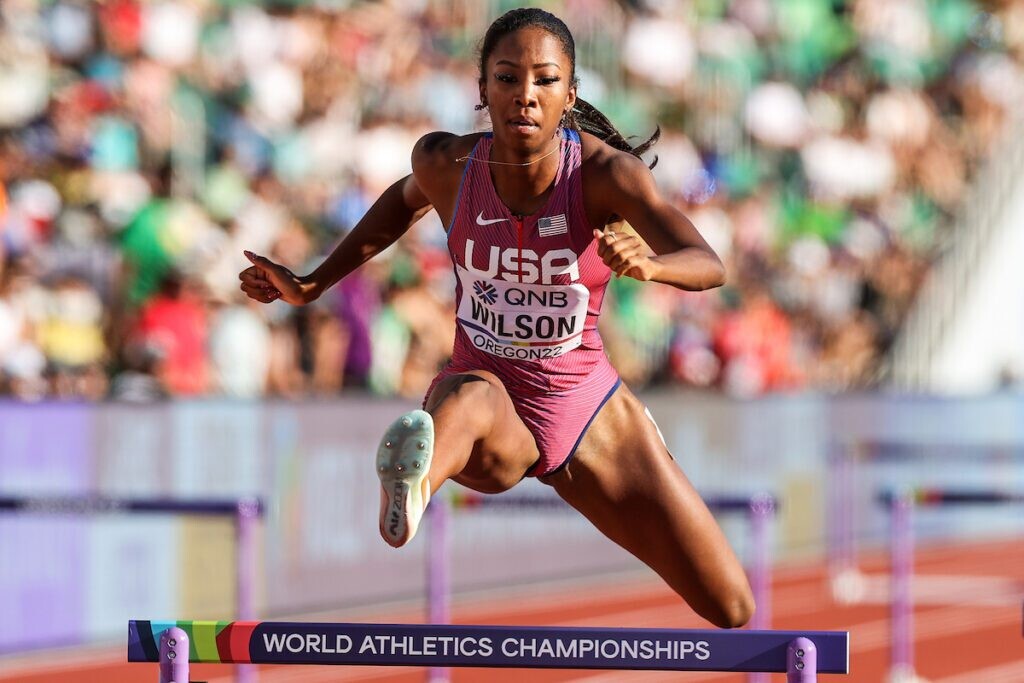
A hot streak
Wilson has had a phenomenal 18 months on the track. In 2022, she and her Arkansas teammates won the NCAA 4 x 400m indoor title, and a few months later, she ran to an individual win in the 400m hurdles at the NCAA outdoor championships. She followed that up by qualifying for the World Athletics Championships in Eugene, Ore., where she was part of the American team that ran to gold in the 4 x 400m relay.
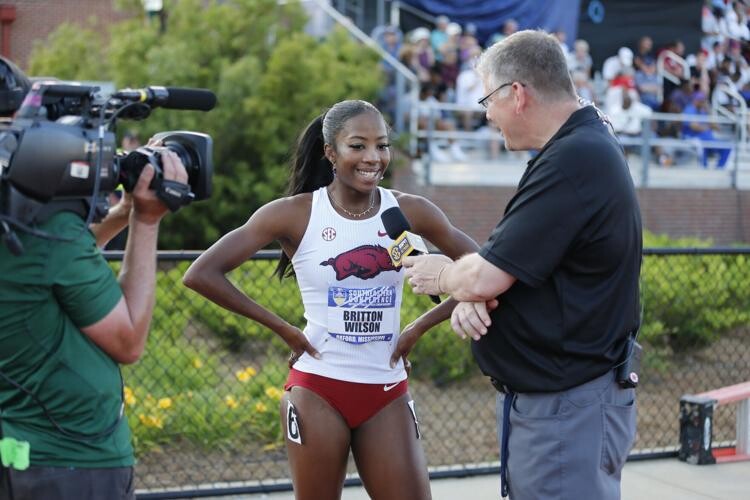
Wilson rode a massive wave of momentum as she flew into the 2023 season, and it didn’t take long for her to get back to her winning ways. In February, she won two more NCAA indoor titles, helping the Arkansas women defend their 4 x 400m crown and taking the win in the individual 400m (her winning time of 49.48 seconds is a U.S. indoor record).
She didn’t slow down transitioning from indoor to outdoor track, flying to the NCAA 400m record at a race in Florida in April when she ran 49.51 seconds. This time beat Athing Mu‘s previous collegiate record of 49.57 seconds.
A successful weekend
With the NCAA record already under her belt, as she worked toward the SEC championships, all eyes were on Wilson in the women’s 400m. It likely came as a shock, however, when she beat her record in the heats on Friday. With her final time of 49.40, she was well ahead of the rest of the field (second place crossed the line in 50.78 seconds).
Wilson was the obvious favourite for the win on Saturday, but after her prelims record, the question was whether she could run yet another PB. It turned out that she could, and although she had already run a blazing race just 24 hours before (and a 400m hurdles heat on Thursday), she smashed the record once more, crossing the line in 49.13. As in Friday’s race, she finished more than a second ahead of the next-closest runner.
Later that day, Wilson won the 400m hurdles title, cruising to the line with a 53.28 win and beating the second-place woman by almost two whole seconds. Wilson will be a favourite for the NCAA title in both events come June at the outdoor championships.
by Ben Snider-McGrath
Login to leave a comment
Keely Hodgkinson runs 19 consecutive sub-two-minute 800m
British 800m star Keely Hodgkinson won gold at the European Indoor Championships on Sunday, defending the title she first won in 2021. On top of adding yet another medal to her resume, Hodgkinson extended an extremely impressive (but potentially overlooked) streak of now 19 straight sub-two-minute 800m races (not including heats). This is an incredible run of form and it has helped Hodgkinson win multiple titles and honors in her still-young career.
Going sub-two
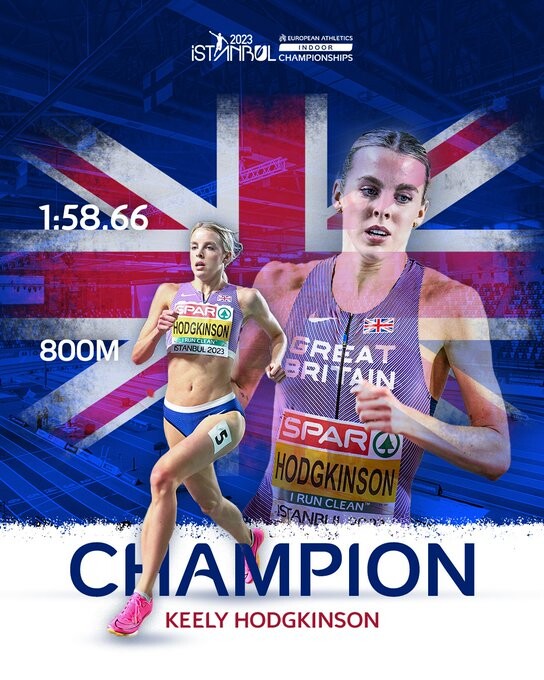
Running a sub-two-minute 800m is not an easy feat. In fact, only nine Canadian women have broken the two-minute barrier, which shows just how hard it is to do. Yet Hodgkinson has done that, race after race, dating back to June 2021. That was her breakout season, and seeing as it was an Olympic year, it couldn’t have come at a better time for her.
At the start of that season in January, Hodgkinson broke two minutes for the first time, running 1:59.03 at an indoor meet in Austria. She didn’t break two minutes again during the indoor season, but she carried that momentum into her following races and won her first European title at the indoor championships. She then kicked off her outdoor season with a 1:58.89 result in Czechia, and over the next seven finals she raced in 2021, she only once failed to break two minutes.
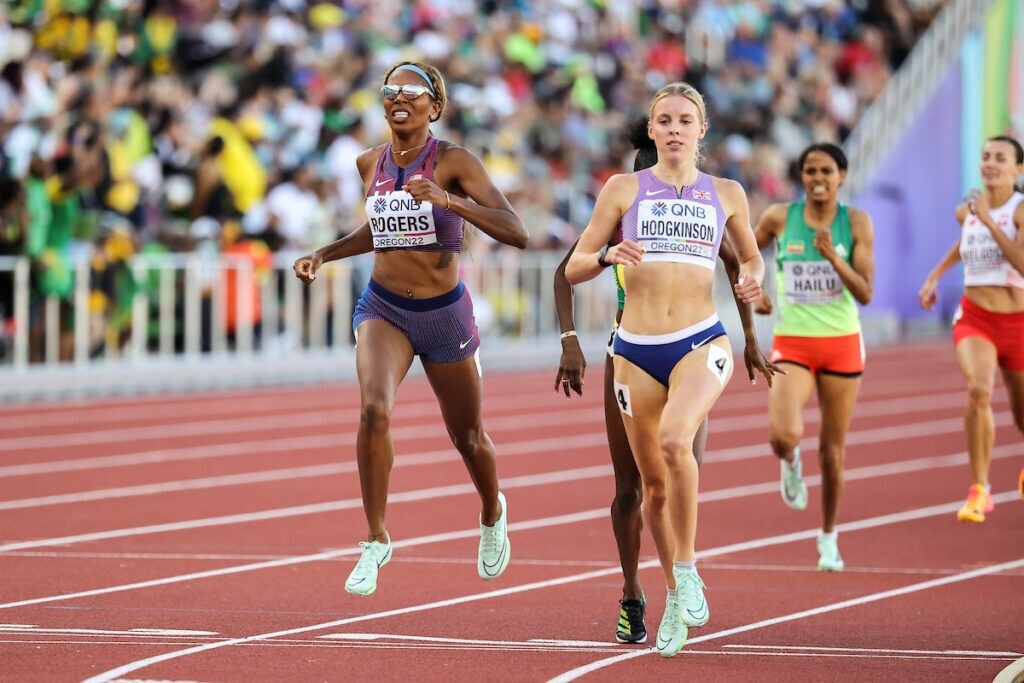
Later that year, Hodgkinson won silver at the Olympics, where she not only continued her then-new streak of sub-two performances, but also set a British record with her blazing 1:55.88 result in the finals. In 2022, her streak carried her to another silver medal, this time at the World Athletics Championships, and the outdoor European crown to match her indoor title from 2021. Hodgkinson has won every race she has run so far this year, with four sub-two results so far.
A tough streak
Hodgkinson’s streak is unprecedented in the 800m, and even the other all-time greats have failed to match her numbers. Athing Mu, the 20-year-old American who won gold ahead of Hodgkinson at the Olympics and World Athletics Championships, has only run four straight sub-two-minute results in her career. Granted, she’s young and still has plenty of time to add a longer streak to her resume, but Hodgkinson is young, too.
American Ajee Wilson owns two world championship bronze medals in the 800m and won the Diamond League 800m title in 2019, but her longest streak of sub-two runs only reached 13. This is still a super impressive tally, but it’s still pretty far below Hodgkinson’s streak, which could grow even longer over the next few months.
Two-time Olympic gold medalist Caster Semenya made it to 16 sub-two results in a row stretching from 2017 to 2019, but that’s where her streak ended (of course, Semenya may have been able to carry this streak on had she not been barred from racing the 800m). Finally, there’s the 800m world record holder, Jarmila Kratochvílová, who had a lifetime PB of 1:53.28. Even she couldn’t match Hodgkinson’s amazing streak, as her longest lasted for just 10 races.
Hodgkinson is truly a special talent, and she continues to prove that in every race she enters. It will be exciting to see her move forward with her career and to see how long she can keep her streak going before she runs north of two minutes once again.
Login to leave a comment
One of the world’s best middle distance runners will be absent from the Millrose Games this Saturday
On Monday, Olympic and World Champion 800m runner Athing Mu announced on social media that she would not be running at the Millrose Games, instead, she will be focusing on preparing for the outdoor track and field season.
“My team and I have made the decision to no longer compete at the Millrose Games this weekend,” Mu said on Twitter. “ Instead, we are focusing on gearing up to be at my optimum for the outdoor season, especially, the upcoming World Championships. Wishing everyone participating the best of luck.”
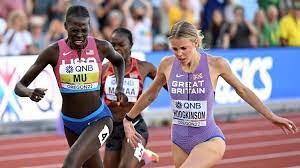
Mu was scheduled to compete in the women’s 600m, competing against some of the world’s best talent, including Ajee Wilson, Shamier Little and Natoya Goule. Mu has the third fastest time in history in the 600m and the American record, with her personal best time of 1:23.57.
Mu, who is entering her second season as a professional, is coming off of a fantastic season, which included a World Championship gold medal at the World Championships in Oregon last summer.

She made the move to train under the legendary coach Bobby Kersee last fall. Mu holds the American record in 800m with her personal best time of 1:55.04.
by Dominique Smith
Login to leave a comment
NYRR Millrose Games
The Pinnacle of Indoor Track & Field The NYRR Millrose Games, first held in 1908, remains the premier indoor track and field competition in the United States. The 2025 edition will once again bring the world’s top professional, collegiate, and high school athletes to New York City for a day of thrilling competition. Hosted at the New Balance Track &...
more...Athing Mu stars in Millrose Games 600m
Athing Mu is already the second-fastest women’s indoor 600m runner of all time and the US middle distance star could make another statement when she returns to the Millrose Games, a World Athletics Indoor Tour Gold meeting, in New York on February 11.
It was in 2019, at the age of just 16, that Mu clocked 1:23.57 at the US Indoor Championships to miss the world 600m best by just 0.13.
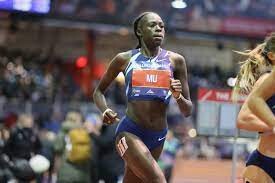
Since then, she has become an Olympic and world champion in the 800m and has taken her PB in that discipline to 1:55.04, the US record.
The 800m final at the World Athletics Championships Oregon22 on 24 July last year, which Mu won in 1:56.30, was her most recent race and she will now be looking for another strong indoor season in a year that offers her the chance to defend that world title in Budapest.
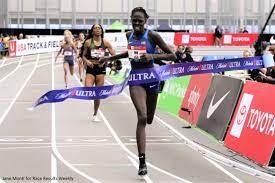
“The women’s 600m will be one of the highlights of this year’s Millrose Games, and we are delighted to welcome Athing back to the track she grew up on,” said Millrose Games director Ray Flynn.
However, Mu will have to contend with athletes including her US compatriot Shamier Little and Jamaica’s Natoya Goule if she is to secure more success.
Hurdles specialist Little, the 2015 world 400m hurdles silver medallist, will look to continue testing herself in the flat event over a slightly longer distance, after opening her season with a world-leading 600m time of 1:24.65 last weekend.
While Goule, who has an indoor 600m best of 1:25.35, was the fourth-place finisher in the 800m at the World Athletics Indoor Championships Belgrade 22 and also finished fifth at the World Athletics Championships in Oregon last year.
They will be joined by Olivia Baker and Sophia Gorriaran in the 600m field.
Also in action in New York will be Chase Ealey, as she returns to compete in front of a home crowd as the world shot put champion.
Recently announced for the opening meeting in the 2023 World Indoor Tour Gold series in Karlsruhe on 27 January, Ealey has now also been confirmed for the Millrose Games, where the world champion and world indoor silver medallist will take on her US compatriots Maggie Ewen and Jessica Woodard, plus Canada’s Commonwealth and NACAC champion Sarah Mitton.
It means fans will be treated to two thrilling shot put showdowns in New York, with Ryan Crouser and Joe Kovacs already announced for the men’s contest.
“I am really excited to have the Millrose Games as my first competition in the US as the world champion,” said Ealey. “I hope that with the success of the male and female competition, people will love our event indoors!”
by World Athletics
Login to leave a comment
NYRR Millrose Games
The Pinnacle of Indoor Track & Field The NYRR Millrose Games, first held in 1908, remains the premier indoor track and field competition in the United States. The 2025 edition will once again bring the world’s top professional, collegiate, and high school athletes to New York City for a day of thrilling competition. Hosted at the New Balance Track &...
more...Britton Wilson Breaks Athing Mu's Collegiate Indoor 600m Record
Razorback Britton Wilson opened the indoor track season with a collegiate record as runner-up in the 600m on Friday evening during the Arkansas Invitational held at the Randal Tyson Track Center.
Wilson posted a time of 1:25.16 over the distance, breaking the previous collegiate record of 1:25.80 set by Texas A&M’s Athing Mu in 2021.
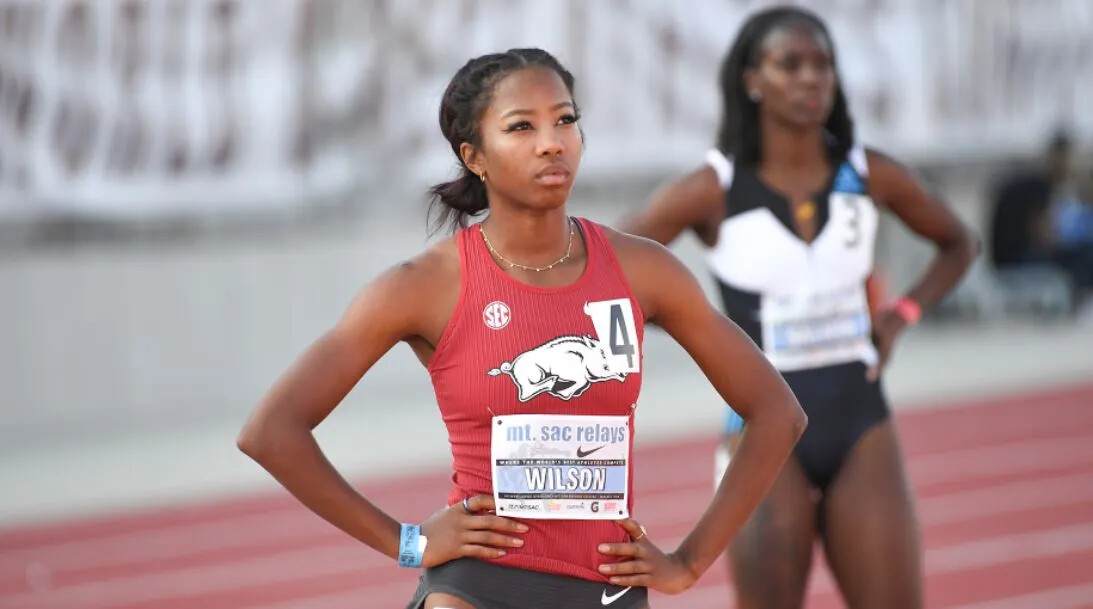
Razorback volunteer Shamier Little won the race in 1:24.65, which ranks No. 5 on the U.S. all-time list and No. 7 on the world all-time list. Third in the race was Arkansas alum Shafiqua Maloney in 1:27.45.
For Wilson, her mark ranks No. 7 U.S. and No. 10 world all-time. The previous UA record of 1:27.29 was set in December of 2021 by Morgan Burks-Magee. Wilson had a time of 1:30.34 in her debut at the distance last year.
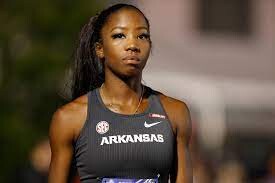
Victories for the Razorbacks included Ackera Nugent with a world-leading 8.00 in the 60m hurdles, moving to No. 5 on the UA all-time list. Arkansas alum Taliyah Brooks finished second in 8.13 as both hurdlers bettered the meet record of 8.13 held by Payton Chadwick since 2018.
Paris Peoples also registered a world-leading effort of 53.10 in the 400m in leading a 1-2-3 sweep with teammates Ashanti Denton runner-up in a career best 53.68 while Aaliyah Pyatt finished third in 53.79.
Racing at the mile distance for the first time indoors, freshman Mary Ellen Eudaly clocked a 4:43.01 to lead a 1-2-3 Arkansas finish. Eudaly bettered her outdoor mile time of 4:51.99. Finishing behind her with a pair of career best times were Heidi Nielson (4:44.79) and Laura Taborda (4:45.77).
A sweep of the top four places in the 200m had Rosey Effiong leading the way in 23.45 as Amber Anning finished second in 23.47 while Nickisha Pryce set a PR of 23.76.
Alum Jada Baylark won the 60m in 7.25 while Ariane Linton was the top Razorback at 7.46 for fifth. Linton ran 23.93 for fourth in the 200m. Gracie Hyde won the 800m in 2:13.50.
Racing a pair of relay teams in the final section of the 4 x 400, the Razorbacks registered world-leading times of 3:30:38 and 3:30.79.
The winning squad included Anning (52.64), Wilson (51.60), Pryce (52.59) and Denton (53.55). The runner-up crew had Peoples (54.09), Effiong (51.51), Joann Reid (52.15) and Pyatt (53.04).
The women’s opening event produced a career best for Sydney Billington as she cleared 5-10.75 (1.80) in placing second in the competition. Billington, who had a previous best of 5-10, cleared five consecutive bars on first attempts before missing three attempts at 6-0 (1.83).
Texas A&M’s Bara Sajdokova, who needed two attempts at 5-10.75, cleared the 6-0 height on a third try for the win.
Kaitlyn Banas led a 4-5-6 finish for the Arkansas vaulters with a clearance of 13-6.5 (4.13). Grace Ridgeway matched that height to set a career best in fifth place. Bailey McCorkle and Marin Chamberlin each cleared 13-0.75 (3.98) to place sixth and eighth.
by Shawn Price
Login to leave a comment
2024 Olympic Track & Field Schedule Is Out
On Monday, World Athletics announced the schedule for the 2024 Olympic Games, to be held in Paris on August 1-11, 2024 (only 570 days to go!). There were a few key changes from three years earlier in Tokyo.
First, all track & field finals will be held during the evening sessions (some finals had been held in the morning during the 2016 and 2020 Olympics). The marathons will remain in the morning, though the men’s marathon will no longer be held on the final day of the Games, as had been tradition. That honor for the first time will go to the women’s marathon, which will be held on August 11. Giving women the honor makes sense given that, per Reuters, the “marathon route was modelled on the path of the October 1789 Women’s March on Versailles – when thousands, mainly female market traders furious over the price of bread, marched to the lavish palace of King Louis XVI.” In 2024, the men’s marathon will come on the penultimate day, August 10.
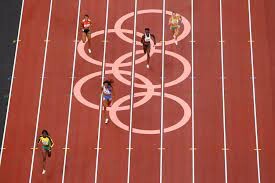
The other major change is the introduction of a repechage round, which will replace time qualifiers in five events: the 200, 400, 800, 1500, and 400 hurdles. Under the new format, any athlete who does not advance automatically from the first round will compete in an extra race –the repechage round — to earn their spot in the semifinals. Qualification from semifinals to the final will remain the same.
While every evening session has at least one final, you may want to circle August 8, 2024, on your calendar right now. That night is set to feature the finals of the women’s 400 hurdles (Sydney McLaughlin-Levrone), men’s 200 (Noah Lyles vs. Erriyon Knighton), and men’s 110 hurdles (Grant Holloway), plus the semis of the women’s 1500 meters.
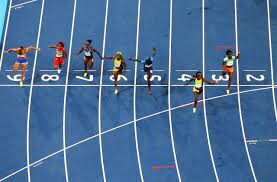
A number of doubles — 100/200, 800/1500, 1500/5,000, 5,000/10,000 — are very feasible under the current schedule. But what about the 400/400 hurdles, 400/800, and 1500/5,000/10,000 — the doubles (and triple) that would appeal to superstars Sydney McLaughlin-Levrone, Athing Mu, and Jakob Ingebrigtsen? None of them are impossible.
Possible doubles/triples
Men’s 1500/5,000/10,000 (Jakob Ingebrigtsen)
We’ve got great news for Jakob Ingebrgitsen fans. You’ll likely see him running in two — maybe three — events at Paris.
At the Tokyo Olympics, Ingebrigtsen would have liked to have done the 1500/5000 double like he did at the 2019 and 2022 Worlds but he only ran the 1500 as the two events overlapped a ton. In Tokyo, the 1500 was held on August 3 (a.m.), August 5 (p.m.), and August 7 (p.m.) and the 5000 was held on August 3 (p.m.) and August 6 (p.m). In Paris, 1500/5000 double is eminently more doable as the 1500 finishes before the 5000 even starts.
And there is even more good news. Last year, Ingebrigtsen made headlines by saying he wanted to do what Sifan Hassan did in 2021 and triple at the 2023 Worlds and 2024 Olympics: 1500, 5,000, and 10,000. The triple is basically impossible at the 2023 Worlds. At the 2024 Olympics, it’s tough but doable: it would require two races on August 2 (1500 first round in the morning, 10,000 final 10 hours later), and it would require running the 1500 final at 9:00 p.m. on August 6 and the 5,000 first round 14 hours later on the morning of August 7.
In Tokyo, Hassan had to run two races on the same day (1500 prelims in morning, 5,000 final in evening) and also had to run finals on consecutive days (1500 followed by 10,000). In Paris, Ingebrigtsen would get four days between the 10,000 and 1500 finals and another four days between the 1500 and 5,000 finals.
August 2, 11:05 a.m.: 1500 first round
August 2, 9:20 p.m.: 10,000 final
August 4, 9:10 p.m.: 1500 semis
August 6, 9:00 p.m.: 1500 final
August 7, 11:00 a.m.: 5,000 first round
August 10, 8:00 p.m.: 5,000 final
Women’s 1500/5,000/10,000 (Sifan Hassan)
Given Sifan Hassan already did the 1500/5,000/10,000 triple in Tokyo about as well as anyone could (bronze-gold-gold) and given it took her close to a year to return to racing in 2022, it would be a surprise to see her attempt the triple again in Paris. But if someone else — perhaps World Indoor 1500/World Outdoor 5,000 champ Gudaf Tsegay — is so inclined, it’s possible to triple. The toughest part would be running the 1500 first round the morning after the 5,000 final and running the 10,000 and 1500 final on back-to-back nights (the latter was also the case for Hassan in 2021, though the order of the 10,000 and 1500 finals were flipped). But unlike in 2021, all the races are on different days.
August 2, 6:10 p.m.: 5,000 first round
August 5, 9:20 p.m.: 5,000 final
August 6, 10:05 a.m.: 1500 first round
August 8, 8:05 p.m.: 1500 semis
August 9, 8:55 p.m.: 10,000 final
August 10, 8:25 p.m.: 1500 final
Women’s 400/400 hurdles (Sydney McLaughlin-Levrone, Femke Bol)
No woman has ever won the 400/400 hurdles double at the Olympics, but superstars Sydney McLaughlin-Levrone and Femke Bol could attempt it in Paris. It would require racing six days in a row (seven including the 4×400 relay final) but never more than once in a day. That’s about as good as you can ask for.
August 4, 12:35 p.m.: 400 hurdles first round
August 5, 11:55 a.m.: 400 first round
August 6, 7:45 p.m.: 400 hurdles semis
August 7, 8:45 p.m.: 400 semis
August 8, 9:05 p.m.: 400 hurdles final
August 9, 8:00 p.m.: 400 final
August 10, 9:20 p.m.: 4×400 relay final
Women’s 400/800 (Athing Mu)
Athing Mu won the women’s 800 at the 2020 Olympics and 2022 Worlds and is the NCAA record holder in the 400 meters at 49.57. After winning gold in Tokyo, she said one of her next goals is to double up in the 400/800. The double is possible in Paris but not perfect as it would require her to race three sessions in a row — the night of August 4 in the 800 semis, the morning of August 5 in the 400 first round, and the night of August 5 in the 800 final. The good news is Mu has will have some time to recover as there is a rest day between the 800 final and 400 semis and another rest day between the 400 semis and 400 final.
In a perfect world the 800 semis and 400 first round would both be shifted forward by a day but that’s not going to happen because it would require running the repechage and semifinal round of the 800 on the same day.
August 2, 7:45 p.m.: 800 first round
August 4, 8:35 p.m.: 800 semis
August 5, 11:55 a.m.: 400 first round
August 5, 9:50 p.m.: 800 final
August 7, 8:45 p.m.: 400 semis
August 9, 8:00 p.m.: 400 final
August 10, 9:20 p.m.: 4×400 relay final
Women’s 200/400 (Shaunae Miller-Uibo)
Two-time Olympic 400 champion Shaunae Miller-Uibo of the Bahamas attempted the 200/400 double in Tokyo and made the finals of each event. But she wound up going through the motions of the 200 final, finishing last in 24.00 (after running the first round of the 400 that morning), before running a personal best of 48.36 to win the 400 three days later. The 200/400 double is once again possible in 2024, but Miller-Uibo’s weaker event, the 200, would once again come first. It would also require running twice in one day, though neither of the races would be finals (400 first round on the morning of August 5, followed by the 200 semis that evening).
August 4, 10:55 a.m.: 200 first round
August 5, 11:55 a.m.: 400 first round
August 5, 8:55 p.m.: 200 semis
August 6, 9:50 p.m.: 200 final
August 7, 8:45 p.m.: 400 semis
August 9, 8:00 p.m.: 400 final
Men’s 200/400
In Tokyo, it was possible to attempt the men’s 200/400 double as all of the races were on different days (save for the 200 first round and semis — a necessary same-day double for all athletes). In Tokyo, it’s virtually impossible as the 200 semis will be held just 73 minutes before the 400 final on the night of August 7.
August 4, 7:05 p.m.: 400 first round
August 5, 8:05 p.m.: 200 first round
August 6, 8:30 p.m.: 400 semis
August 7, 8:07 p.m.: 200 semis
August 7, 9:20 p.m.: 400 final
August 8, 9:25 p.m.: 200 final
How will the repechage round work?
In almost every case, the repechage round will take place the day after the first round of each event. The only exception is the men’s 110 hurdles, where the first round is on August 4 and the repechage on August 6. And in almost every case, the repechage athletes won’t have to race twice in the same day. The only exception is the women’s 200, where the first round will be held on the morning of August 4, the repechage on the afternoon of August 5, and the semis on the evening of August 5.
Should any repechage athlete in the 800 advance to the final, they will have raced on four consecutive days. For any 1500 athlete to advance to the final, they will have had to have raced three straight days followed by a one-day break before the final. The repechage round is mostly a chance for lesser athletes to get a longer Olympic experience instead of running one race and going home, but it’s not impossible to suggest that a repechage athlete could be a factor in the final. At the 2020 Olympics, Great Britain’s Josh Kerr needed a time qualifier to advance from the first round of the men’s 1500 and wound up earning the bronze medal. Such a feat will be harder in 2024 since an athlete such as Kerr would now have to run an extra race.
Here’s how the schedule works for the men’s and women’s 800 and 1500:
Men’s 800
Prelims: August 7, 11:45 a.m.
Repechage: August 8, 12:00 p.m.
Semis: August 9, 11:30 a.m.
Final: August 10, 7:30 p.m.
Women’s 800
Prelims: August 2, 7:45 p.m.
Repechage: August 3, 11:10 a.m.
Semis: August 4, 8:35 p.m.
Final: August 5, 9:50 p.m.
Women’s 1500
Prelims: August 6, 10:05 a.m.
Repechage: August 7, 12:35 p.m.
Semis: August 8, 8:05 p.m.
Final: August 10, 8:25 p.m.
Men’s 1500
Prelims: August 2, 11:05 a.m.
Repechage: August 3, 8:25 p.m.
Semis: August 4, 9:10 p.m.
Final: August 6, 9:00 p.m.
by Letsrun
Login to leave a comment
Paris 2024 Olympic Games
For this historic event, the City of Light is thinking big! Visitors will be able to watch events at top sporting venues in Paris and the Paris region, as well as at emblematic monuments in the capital visited by several millions of tourists each year. The promise of exceptional moments to experience in an exceptional setting! A great way to...
more...What is the right way to breathe when running?
Is there a best way to breathe while running? Or is it just a case of what comes naturally to you?
Surprisingly, you’re not alone for wondering about this, and at some point or another, we have all asked our running friends for help.
As a running coach, I’ve encountered this how to breathe running question on more than few occasions and I think it’s important for beginners to understand how they should approach the sport from the very basics.
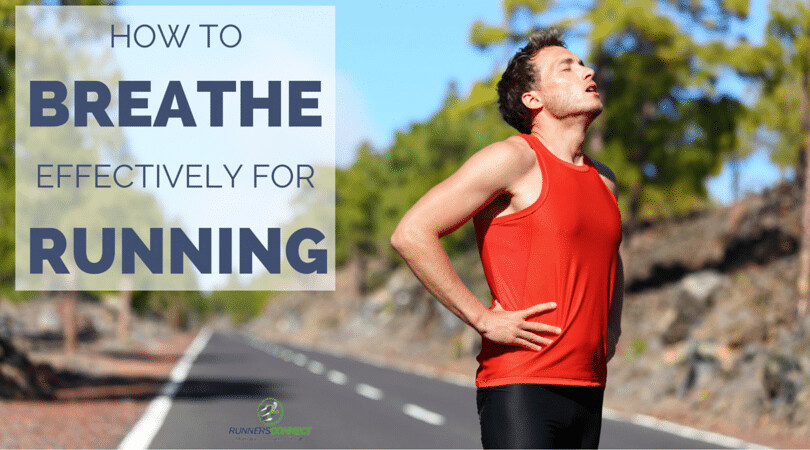
I’ve heard people advocate breathing in through the mouth and out through the mouth, using slow breathing rhythms, and all sorts of nonsense.
Nothing irks me quite like the spread of misinformation, especially when it pertains to training topics. Therefore, I am happy to help set the record straight today, by showing you how to breathe easier while running, so you can get back to enjoying your training without feeling like your lungs are going to explode…yes, even if you have asthma!
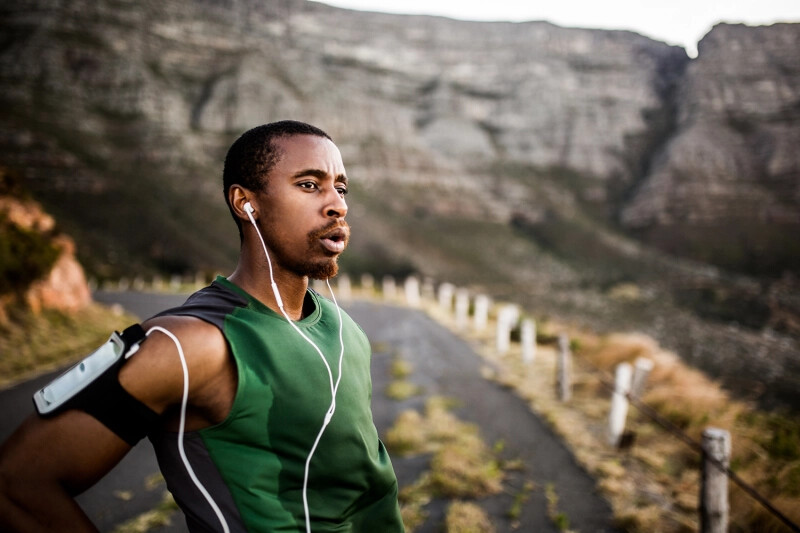
Should I Breathe Through My Nose Or Mouth While Running?
Here’s the deal:
You should always breathe in and out primarily through your mouth when running.
If your nose wants to join the party and help get air in and out, that’s great.
However, when you’re running, feeding your muscles the oxygen they need is of paramount importance, and breathing through the mouth is the most effective way to inhale and exhale oxygen.
To make the most of your breathing, make sure you avoid “chest breathing” in favor of what’s called diaphragmatic breathing or “belly breathing”.
Why is chest breathing bad?
Chest breathing is a weak form of breathing. It’s too shallow to bring in maximal oxygen and doesn’t fully expel your lungs when you exhale. This may be why you keep getting a side stitch when you run.
Instead, your breathing should be diaphragmatic, meaning the action of inhaling and exhaling extends down into your stomach.
As you breathe, your stomach should expand and contract as your diaphragm forces air into and out of your lungs.
Your chest, meanwhile, should remain mostly still, but you’ll take in more oxygen with every breath.
The next time you go running, be aware of your breathing and your natural inclination to breathe through your nose or mouth.
If necessary, focus on making the necessary corrections and taking in breath through your mouth. It may be a struggle at first, but you should eventually be able to transition to a better breathing technique, and do so without thinking.
With any luck, you’ll notice an improvement in your running efficiency and performance.
How Can I Train My Breathing Muscles To Run Better?
Just as we strength train our hips or hamstrings to improve our leg strength, we can strengthen the muscles used for breathing.
In fact, researchers at the Centre for Sports Medicine and Human Performance at Brunel University in England demonstrated a direct link between the strength of your diaphragm and fatigue during the marathon. We also interviewed world expert, Patrick McKeown on our podcast in an episode dedicated to how to breathe while running and he recommended exercises to help.
The easiest way to start is by lying on the ground.
While lying on your back, breathe deeply so your belly rises with your chest as you inhale, and lowers while you exhale. Feel your abdominal muscles contract, and try to hold the tension as you breathe out as well as in.
Watch your chest, does it rise and fall also?
You want to get to the point where you do not see your chest moving, but your belly is expanding (think making yourself get fat).
Continue to practice this while lying down until you feel confident to move upright.
Once you have this trick down, you can move on to pilates exercises. Pilates help stretch your intercostal muscles and lengthen the spine, which helps improve breathing and running.
What Rhythm Should I Be Breathing To?
Your exact breathing rhythm will depend on how hard or easy you are running and/or the intended intensity of your workout.
What is breathing rhythm you ask?
Breathing rhythms refer to the number of foot steps you take with each foot while breathing in or out.
For example, a 2:2 rhythm would mean you take two steps (one with your right foot and one with the left) while breathing in and two steps (again, one with your right foot and one with your left) while breathing out.
This is part of the method we recommend to stop a side stitch if you are out running and get that familiar side stabbing feeling.
Easy runs
Typically, you’ll find that a 3:3 rhythm (three steps – one with your left, one with your right, one with your left – while breathing in) works best for warm-ups and most easy paced days.
This allows plenty of oxygen to be inhaled through the lungs, processed, and then exhaled with relative ease.
Don’t try to force yourself into a 3:3 breathing rhythm on an easy day if it isn’t feeling comfortable.
Remember, the purpose of an easy day is to keep your effort comfortable and to help the body recover. If a 2:2 rhythm (described below) is more comfortable, go with it.
Breathing slower than a 3:3 rhythm is not advised because you’re not giving your body enough time to clear carbon dioxide.
The average runner should take about 180 steps per minute (some a little less, others a little more), which means you take 90 steps with each foot in a one minute span.
A 3:3 rhythm enables you to take about 30 breaths per minute, ample time to process carbon dioxide while still getting in the oxygen you need.
Moderate paced runs
Runs harder than an easy run, but not all out race efforts, should typically be performed at a 2:2 ratio (two steps – one with your left, one with your right – while breathing in, two steps – one with your left, one with your right – while breathing out).
A 2:2 breathing rhythm enables you take about 45 breaths per minute, which is perfect for steady state, tempo runs, and marathon pace runs.
Hard workouts and Races
At the end of races or the end of a particularly hard interval session, a 2:2 breathing might not cut it. In this case, you can switch to a 1:2 (one step breathing in, two steps breathing out) or 2:1 (two steps breathing in and one step breathing out) breathing rhythm.
This will increase your oxygen uptake to 60 breaths per minute.
I don’t recommend a 1:1 breathing pattern.
At this rate, you’ll be taking shallow breaths and you won’t be able to inhale enough oxygen to maintain proper ventilation in the lungs.
On a personal note, I don’t pay much attention to breathing rhythms at the end of races. I prefer to run all out, focus on competing, and let my breathing take care of itself.
However, it can be helpful to those runners who become anxious as the final meters approach.
Why Will Fixing My Breathing Help Me?
While breathing rhythms can help you identify and monitor the intensity of your run, you can also use them to monitor and control other aspects of your training and racing.
Pacing
Paying close attention to your breathing rhythm can help you monitor and “feel” your pace, especially on tempo runs or tempo intervals.
Once you lock onto your correct goal pace for the workout, you can monitor whether you begin to breathe faster or slower to identify when you accidentally speed up or slow down.
It requires close attention to detail, but it can help for runners who struggle maintaining a consistent pace.
Hills
Many runners wonder how to adjust their pace when taking on a hill during a race, even if you are using the correct running technique for hills.
Unless you know the exact grade and length of a hill, it’s very difficult to accurately measure how much you need to adjust your pace.
However, if you’re maintaining a 2:2 breathing rhythm through the race, then you should focus on maintaining that 2:2 rhythm as you tackle and crest the hill.
By maintaining the same breathing rhythm, you keep your effort even and prevent yourself from spending too much energy getting over the hill.
Side Stitches
If you encounter a side stitch while running, you can slow your breathing rhythm to take deeper, controlled breaths at a 3:3 rhythm.
Often, side stitches are caused by undue stress to the diaphragm, which is escalated by shallow breathing. If your side stitch persists after switching your breathing rhythm, you can try this trick for side stitches here.
As you can see, you have many ways that you can breathe and use rhythms to monitor your effort in workouts and races.
Try not to become too focused on your exact breathing rhythm every step you take. Do what feels comfortable and you’ll usually wind up falling into the proper rhythm by default.
by Runners Connect
Login to leave a comment
Mu to prepare for Paris 2024 with McLaughlin-Levrone's coach Kersee
Athing Mu will prepare for the defence of her 800 meters title at the Paris 2024 Olympics under the direction of a new coach, Bobby Kersee, who already guides the career of the Olympic 400m hurdles champion Sydney McLaughlin-Levrone.
Mu, 20, will move from Texas to Los Angeles to be part of the new coaching set-up.
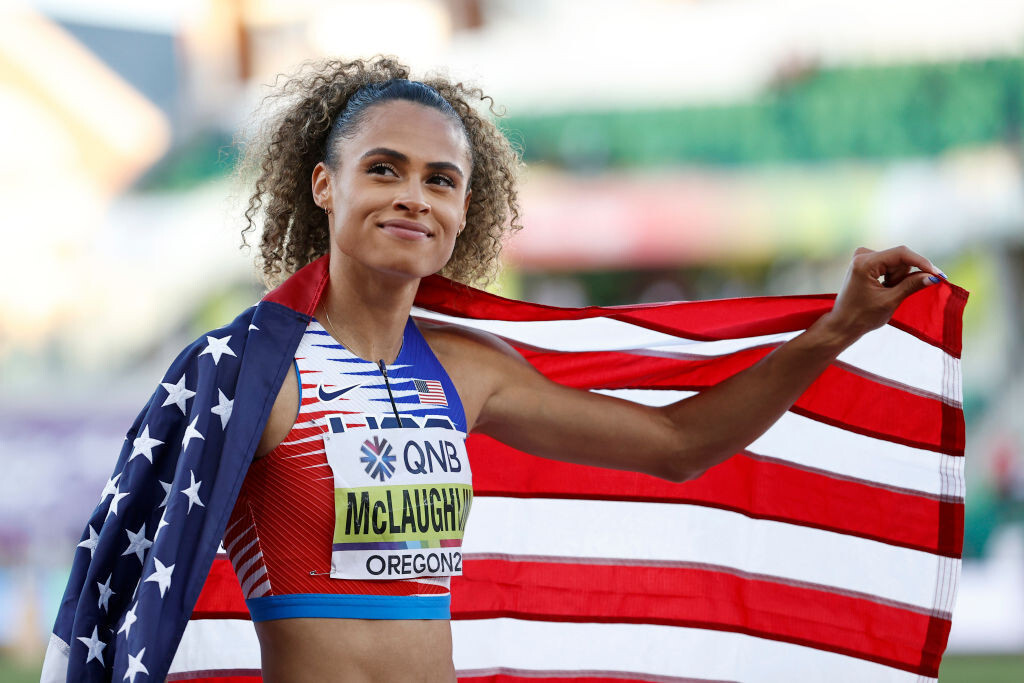
"I'm excited for this opportunity to train with the track and field legend Bob Kersee", Mu posted on social media.
"Coach Kersee has the ability to further enhance my running skills and implement the tools needed to reach my potential."
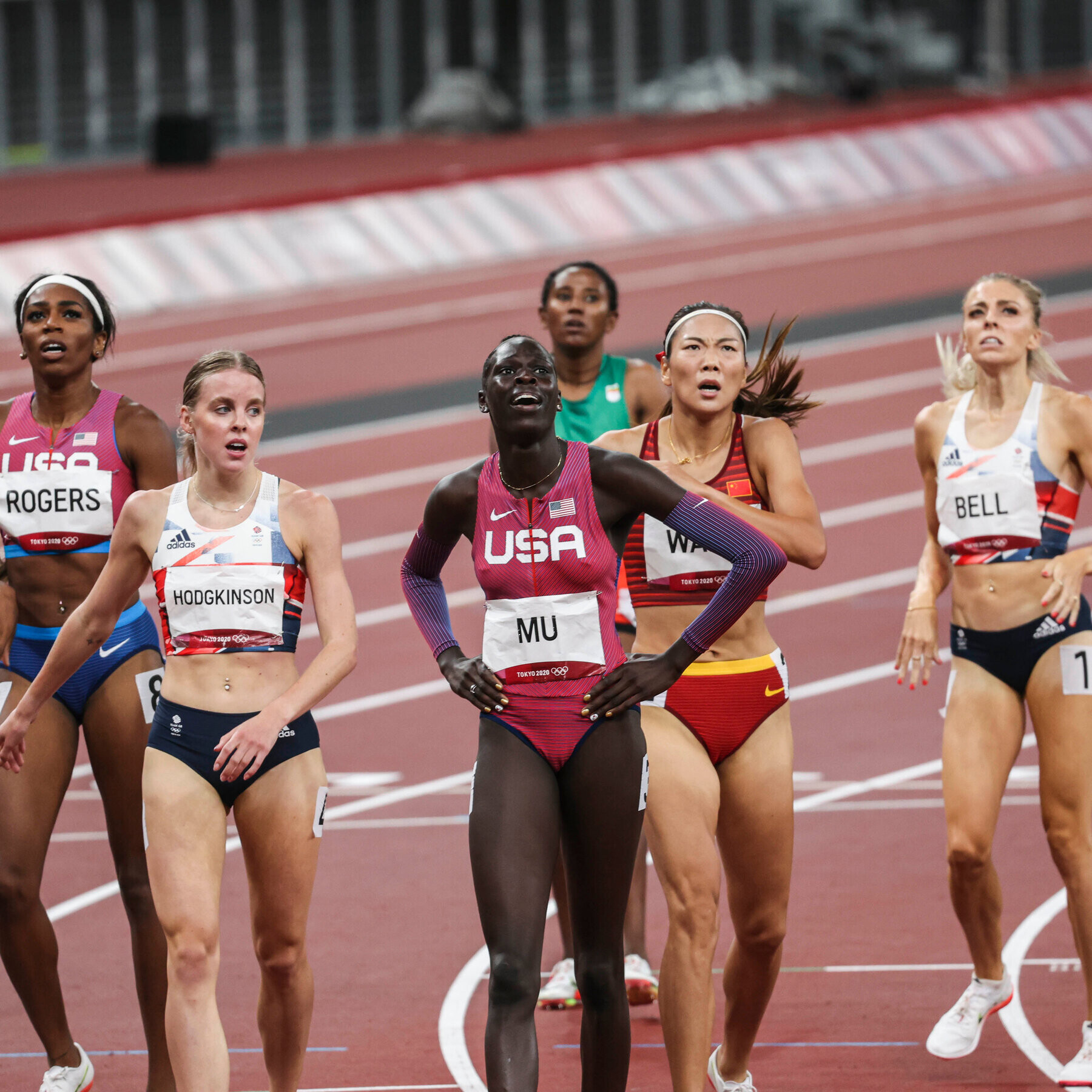
Mu finished ahead of Briton Keely Hodgkinson to win the Olympic title in a United States record of 1min 55.21sec last year, becoming the youngest American woman to win an individual track gold at the Olympics since Wyomia Tyus earned the 100m title in 1964.
This year she beat her British rival to the world title in Eugene to become the youngest woman to hold Olympic and world titles in an individual track and field event.
Kersee has coached Olympic gold medalists in the women's 100m, 200m, 400m, 100m hurdles and 400m hurdles events, and also coached his wife Jackie Joyner-Kersee, a two-time Olympic gold medalist who still holds the heptathlon world record.
McLaughlin-Levrone has said she wants to add the flat 400m to her programme after winning successive Olympic and world titles in the 400m hurdles, during which time she set four world records.
Mu also has huge potential over 400m although she has not raced over that distance in a major championship.
Both McLaughlin-Levrone and Mu have wildcard entry as champions to their established events at next year's World Athletics Championships in Budapest.
This could allow either of them to run the 400m at the main US Championships if they so wished, with the possibility of qualifying in two events.
Mu's partner, 800m runner Brandon Miller, has also announced he is moving to train under Kersee.
by Mike Rowbottom
Login to leave a comment
Paris 2024 Olympic Games
For this historic event, the City of Light is thinking big! Visitors will be able to watch events at top sporting venues in Paris and the Paris region, as well as at emblematic monuments in the capital visited by several millions of tourists each year. The promise of exceptional moments to experience in an exceptional setting! A great way to...
more...Hodgkinson and Muir lead the British charge in the middle and long distances in Munich 2022
For Keely Hodgkinson, another silver lining would come as nothing close to consolation at the Munich 2022 European Athletics Championships from 15-21 August, part of the wider multisport European Championships from 11-21 August.
Having finished in the runner-up position in the 800m finals at the World Athletics Championships and Commonwealth Games in the past three weeks - and in the Olympic final in Tokyo a year ago, for that matter – the 20-year-old Briton will be on a redemption run for gold in the Bavarian capital.
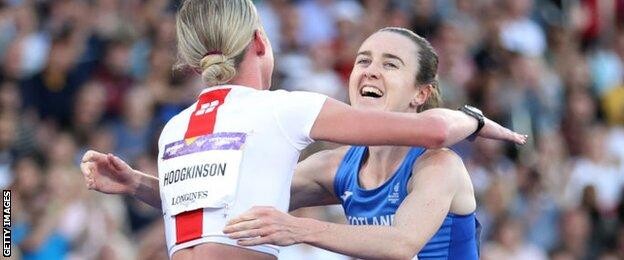
After missing out by a tantalising 0.08 in a titanic home straight tussle with Athing Mu at the World Championships in Oregon on 22 July, Hodgkinson had Commonwealth gold within her grasp on home ground in Birmingham last Saturday (6) until Kenya’s Mary Moraa came charging past halfway down the home straight.
It is a measure of the meteoric progress Hodgkinson has made under the guidance of Trevor Painter and Jenny Meadows that major championship silver medals have come as a disappointment. It was only last year that she made her senior breakthrough, winning the European Indoor title in Torun at the age of 19.
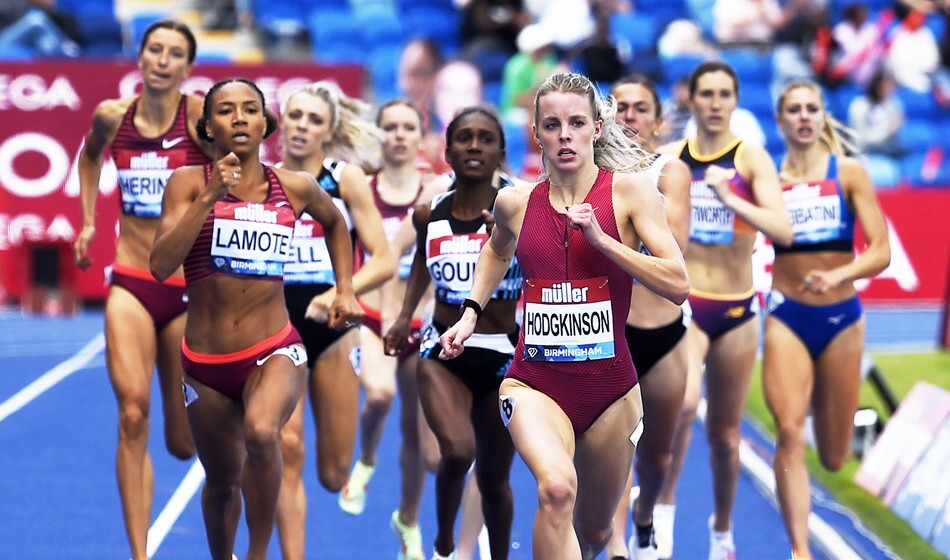
First place in an outdoor European 800m final would be one better than her co-coach managed. Meadows finished second to Yvonne Hak of the Netherlands in Barcelona 2010 albeit after initial winner Mariya Savinova was disqualified for an anti-doping violation.
There have been two British winners of the two-lap event: Lynsey Sharp in Helsinki in 2012 - again retroactively - and the great Lillian Board in Athens in 1969. A third British success in Munich would be a poignant one, given the prodigiously talented Board’s tragic fate.
A 400m silver medalist at the 1968 Olympic Games in Mexico City, she was cruelly cut down by cancer before she had a shot at 800m gold at the 1972 Olympics in Munich. After traveling to Munich in search of a cure, she died in a clinic in the city in December 1970, 13 days past her 22nd birthday.
Second fastest on the 800m entry-list - both in personal and season’s bests - is Hodgkinson’s British teammate Jemma Reekie. The 24-year-old Scot finished fourth in the Olympic final last year but has been struggling for form this summer in the wake of glandular fever, placing fifth in the Commonwealth 1500m final last Sunday (7).
Three other women in the field have run inside 1:59 this year: Slovenia’s former 400m specialist Anita Horvat, who finished a surprise seventh in the World Championships; France’s Renelle Lamote, silver medalist at the last two European Championships; and Elena Bello of Italy.
Switzerland also boasts two potential medal contenders: in 18-year-old world U20 silver medallist Audrey Werro, who clocked 1:59.53 in that race in Cali, and Lore Hoffmann, who narrowly missed out on a place in the final in Oregon.
Ukrainians Nataliya Krol (formerly Pryshchepa) and Olha Lyakhova, who won gold and bronze in Berlin 2018, are also on the entry-list but neither athlete has broken the sub-2:00 barrier so far in 2022.
A fourth major 1500m medal in 12 months beckons for Muir
Hodgkinson’s compatriot Laura Muir defends the 1500m crown she gained in Berlin four years ago in buoyant mood, having collected world bronze and Commonwealth gold at the distance in successive weeks, together with Commonwealth 800m bronze.
The Scot’s closest challengers are likely to be Poland’s fast-finishing Sofia Ennaoui, who took silver behind Muir in 2018 and who showed a timely return to form with fifth place in the Oregon final, and Ireland’s Ciara Mageean, who was an impressive runner-up to Muir in the colors of Northern Ireland in last Sunday’s Commonwealth final.
Another Scot who struck gold on the Commonwealth stage in Birmingham, Eilish McColgan, is entered for both the 5000m and 10,000m in Munich.
A stunning winner of the 10,000m in Birmingham, and silver medalist in the 5000m, the 31-year-old is due to tackle her third championship double in less than a month, having placed tenth in the 10,000m and eleventh in the 5000m at the World Championships.
McColgan, who is preparing to make her marathon debut in London in October, is as indefatigable as her celebrated mother and coach Liz, the 1991 world 10,000m champion, but cumulative championship fatigue could well undermine her – particularly in the 5000m.
Norway’s Karoline Grovdal finished eighth in the World Athletics Championships final and the 2018 steeplechase bronze medalist, who also finished third in the 10,000m in 2016, could start the marginal favorite.
Weakened after a bout of coronavirus, Germany’s Konstanze Klosterhalfen failed to make it beyond the 5000m heats in Eugene but should be in more robust form for her second home European Athletics Championships where she is planning to contest both the 5000m and 10,000m along with Turkey’s Yasemin Can.
Can completed a 5000/10,000m double in Amsterdam 2016 and will be contesting both events again in Munich. Other challengers to McColgan at the longer distance will be fellow Briton Jess Judd - who finished one place behind her, in eleventh, in the World Athletics Championships final - and reigning 10,000m champion Lonah Chemtai Salpeter of Israel who won gold on a brutally hot and humid evening in Berlin four years ago.
Salpeter has set herself a challenging schedule as she will be attempting to defend her European title only one month after winning bronze in the marathon at the World Athletics Championships in Oregon.
Login to leave a comment
European Athletics Champioships Munich 2022
European Championships Munich 2022 will be the biggest sports event in Germany since the 1972 Summer Olympics. From 15-21 August 2022, European sport will be united as its best athletes compete for the highest accolade of their sport on the continent – the title of ‘European Champion’. The second edition of the European Championships will feature nine Olympic sports:Athletics, Beach...
more...Commonwealth Games: Moraa storms 800m final
World 800m bronze medalist Mary Moraa of Kenya is through to the final of the discipline at the ongoing Commonwealth Games at the Alexander Stadium.
Moraa Tuesday clocked one minute and 59.22 seconds to win the first heat, edging out the 2017 World 800m champion Halifax Nakaayi of Uganda to second place in 1:59.35 as both sailed through.
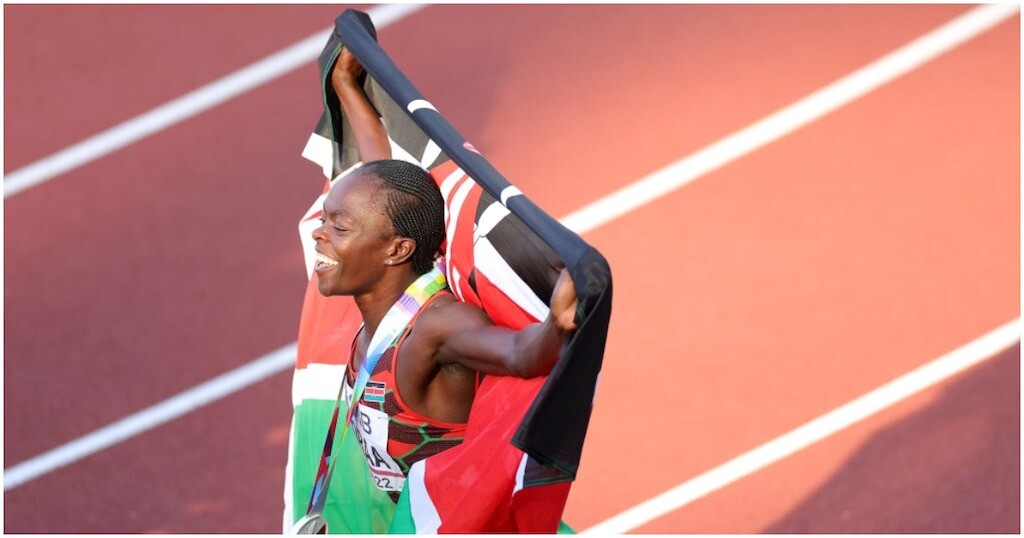
“It wasn’t easy to run sub two minutes after the World Championships in Oregon. There is pressure with such a quality field, but that is what brings out the best in me,” said Moraa, noting that virtually all the athletes from Oregon are in Birmingham save for the World champion Athing Mu from the United States.
Moraa waited on the line as she cheered her friend Natoya Goule, the 2018 Commonwealth Games 800m bronze medalist, to victory in the second heat, beating world 1,500m bronze medallist Laura Muir to second place in 1:58.84.
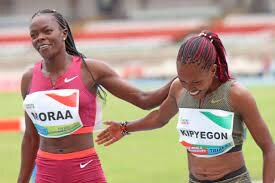
“Goule is a veteran and a good friend of mine. We share a lot and has been a good advisor on how to run 800m,” said Moraa, but cautioned that it will be a different game ball in the final.
“I am here for revenge against Hodgkison who beat me for silver in Oregon,” Moraa.
“I am here for a better medal than what I got in Oregon. Can only pray and hope to wake up well on that day.”
The women’s final is due on Saturday at 9.45pm Kenyan time.
However, Moraa's compatriot Jarinter Mawia, who is the reigning Africa 800m champion, finished fourth in the third heat to miss out on qualification.
“I think the weather in Oregon took toll on me. I had not recovered well. My body felt heavy,” said Mawia.
Natoya Goule from Jamaica won the second heat in 1:58.39 to qualify as World 800m silver medalist Keely Hodgkison claimed the third and last heat in 2:00.8 to also ease through to the final.
by Ayumba Ayodi
Login to leave a comment
The Commonwealth Games
The Commonwealth Games are coming to Victoria - bringing an action packed sports program to our regional cities and delivering a long-term legacy for our future. From 17 to 29 March 2026, Geelong, Bendigo, Ballarat, Gippsland and Shepparton will be on the world stage, attracting millions of viewers and creating thousands of jobs. The multi-city model will...
more...Athing Mu Became the First American to Win the 800 at the World Championships
Athing Mu hasn’t lost an 800 in over two years, since February 2020. Today in Eugene, Oregon, the streak continued.
Mu’s 1:56.30 performance in the 800 meter final makes her the youngest woman to ever win both Olympic and World Championships gold.
“I’m thankful to be holding the momentum from Tokyo last summer,” she said. “But today was a rough day for me. I just wasn’t physically where I wanted to be.”
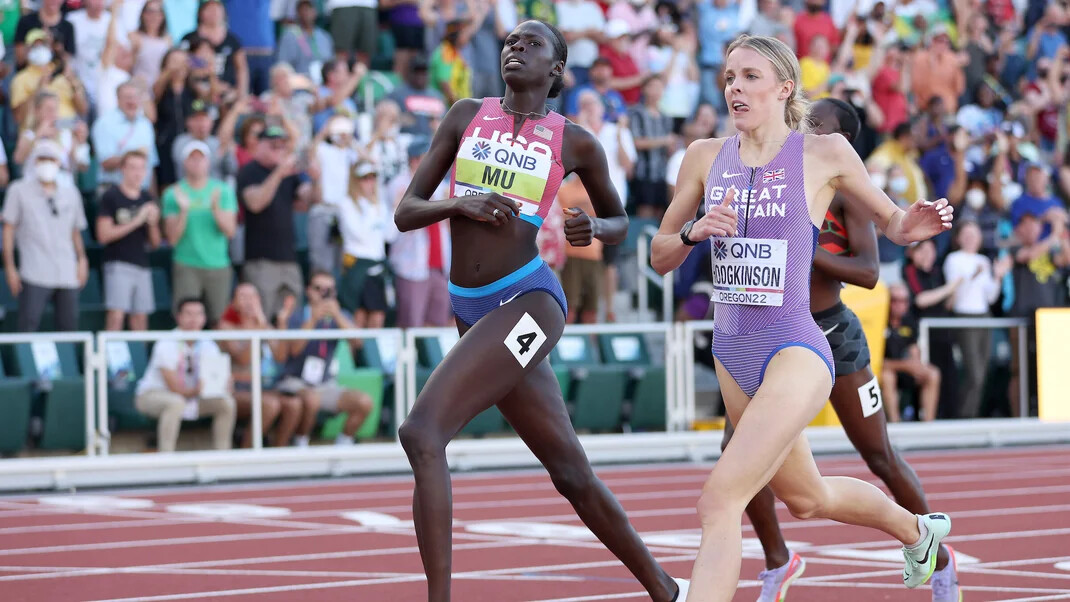
In the final 100 meters, Keely Hodgkinson of Great Britain came up on Mu on the inside. Mu was running on the outside of lane one, which gave Hodgkinson a clear window to sneak through and pass. But Mu wouldn’t let up. As soon as she sensed how close Hodgkinson was she cut back in to the middle of the lane to prevent the pass. Hodgkinson, who is also 20, finished in second in a time of 1:56.38, which is her second silver medal in two years; she also placed second in the Tokyo Olympic Games last summer.
When asked about the potential tactical error, Mu said, “I didn’t want to automatically go to the inside. I don’t really pay attention to where I’m at in the lane.” Mu’s background is as a sprinter, and they’re taught to run on the outside of lane one. A distance runner would never do that.
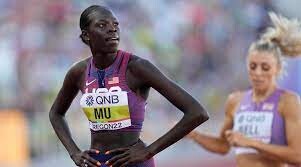
Mary Morra of Kenya finished third in 1:56.71, a personal best. The three women all improved on Mu’s season best time of 1:57.01, which was the previous world lead this year.
Even though she won the race, Mu said she didn’t feel that great out there. This entire year she’s been winning by small margins, as though she does just what it takes to win. Last year there were a number of times when she wasn’t afraid to run alone off the front of the pack. It’s true that her times last year were faster: She ran 1:55 twice in 2021.
“I’ve gone through so many changes, so many adjustments this year,” she said. “Not everybody sees it, but it was a lotjust being able to come out here. Winning means a lot to me because I know what I’ve been going through.”
Mu cites her support system and her faith as the main reason for her steadiness. Her boyfriend, Brandon Miller, also competed in the 800 this week at the World Championships.
Looking to the future, she said, “For now, I’m just trying to take it day by day, race by race.”
by Matt Wisner
Login to leave a comment
World Athletics Championships Budapest23
Budapest is a true capital of sports, which is one of the reasons why the World Athletics Championships Budapest 2023 is in the right place here. Here are some of the most important world athletics events and venues where we have witnessed moments of sporting history. Throughout the 125-year history of Hungarian athletics, the country and Budapest have hosted numerous...
more...Caster Semenya unnoticed at World Championships The South African Olympic champion fails to advance in the 5,000 meters in Oregon – her first major international competition since 2017
How many times had South Africa’s Caster Semenya charged onto the Hayward Field homestretch seemingly in a different race than the rest of the pack, the sport’s most storied stadium rocking as Semenya raced into the deafening roar?
How many times had American track and field’s most knowledgeable fans, most passionate crowd stood in appreciation of the two-time Olympic, three-time World 800-meter champion?
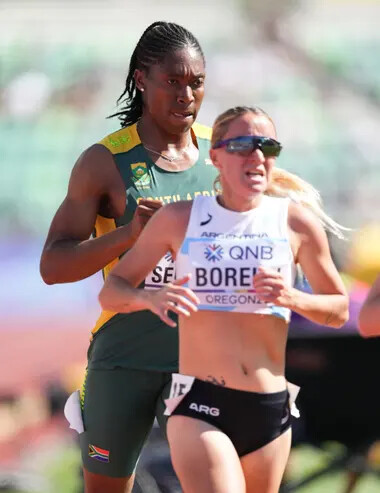
On a scalding hot afternoon at the World Championships on Wednesday, Semenya labored through the final meters of her 5,000-meter heat in front of a half-empty stadium, largely ignored or unnoticed even in a place that calls itself Tracktown U.S.A.
Semenya, one of the most compelling and controversial athletes of her generation, has fallen so far off the sport’s radar since 2019 that the most well-known of her fellow competitors on Wednesday didn’t even realize she was in the competition.
“Caster?” asked Sifan Hassan, the Olympic 5,000 and 10,000 champion from the Netherlands, who ran in a later heat on Wednesday.
“Caster Semenya ran the 5,000?” Hassan asked again. “ I had no idea. I didn’t even know she was here. Did she make it?”
Semenya, running in her first major international competition since winning the 2017 Worlds 800 title, did not advance to the final, finishing 13th in her heat, running 15 minutes, 46.12 seconds, nearly a minute off the winning time of Gudaf Tsegay of Ethiopia (14:52.69).
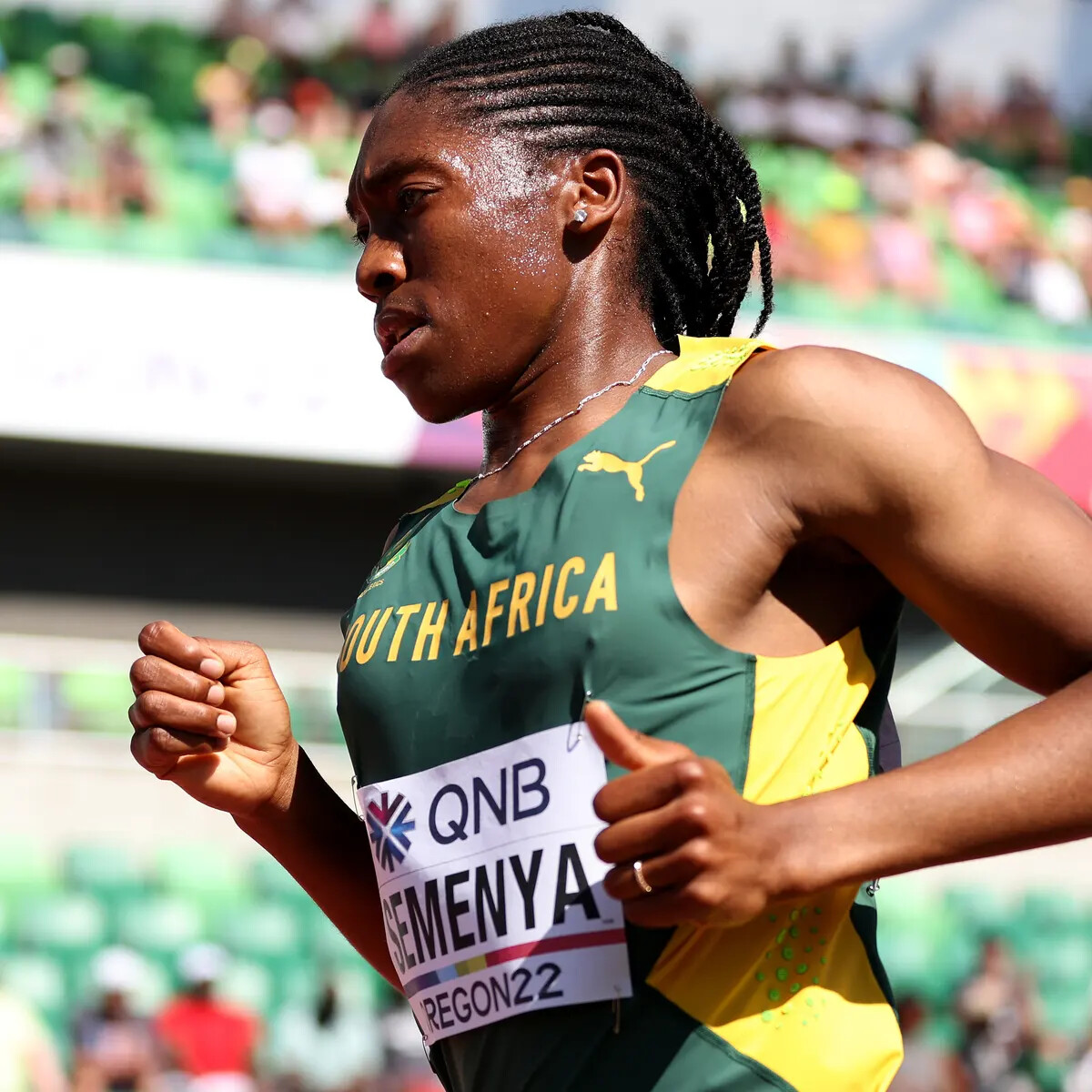
“Cooking,” Semenya said after the race, referring to the heat. She declined to answer reporters’ questions.
Under different circumstances, the sport would be obsessing over the prospect of a showdown between Semenya, 31, and Athing Mu, the 20-year-old Olympic champion from the U.S. in Sunday’s 800 final and whether the pair could challenge the world record of 1:53.28 that was set by Czechoslovakia’s Jarmila Kratochvilova in 1983.
Instead, Semenya, who was assigned female at birth, raised as a girl and identifies as a woman has not raced the 800 in meets sanctioned by World Athletics, the sport’s international governing body, because of her refusal to submit to the organization’s guidelines regarding intersex athletes.
Under the World Athletics guidelines athletes in events from the 400 to the mile – in other words, Semenya’s events – are required to take hormone suppressing drugs to reduce their testosterone to below 5 nanomoles per liter for at least six months before being allowed to compete internationally.
Semenya has an intersex condition called Differences in Sexual Development (DSD) or 46, XY that because of differences in sex development that causes male and female traits and a testosterone level higher than the typical female range. She is not transgender.
“I am a woman and I am a world-class athlete,” Semenya said in 2019, shortly before the Prefontaine Classic, her final 800. “The IAAF will not drug me or stop me from being who I am.”
Semenya had found herself unwittingly in the center of controversy almost from the moment she emerged on the world stage a decade earlier.
She won her first Worlds title in 2009 as an 18-year-old, a victory that prompted Russia’s Mariya Savinova to suggest the South African was a man.
“Just look at her,” Savinova said.
While the results of Semenya’s sex test were supposed to be confidential they were leaked to Australia’s Daily Telegraph. Semenya has internal testes but no ovaries or womb, the newspaper reported quoting the test report.
“She is a woman, but maybe not 100 percent,” IAAF secretary general Pierre Weiss said at the time, doing nothing to discourage the headline writers at New York’s Daily News who blared that the World champion “is a woman … and a man.”
Semenya began taking a hormone suppressant drug. She finished second to Savinova at both the 2011 Worlds and 2012 Olympics.
“The IAAF used me in the past as a human guinea pig to experiment with how the medication they required me to take would affect my testosterone levels,” she said in 2019. “Even though the hormonal drugs made me feel constantly sick the IAAF now wants to enforce even stricter thresholds with unknown health consequences.
“I will not allow the IAAF to use me and my body again. But I am concerned that other female athletes will feel compelled to let the IAAF drug them and test the effectiveness and negative health effects of different hormonal drugs. This cannot be allowed to happen.”
Semenya was awarded the 2012 Olympic gold medal in 2017, two years after the World Anti-Doping Agency recommended that Savinova receive a lifetime ban for doping and her results dating to July 2010 be disqualified.
Given the event’s suspect history, the irony of World Athletics now demanding she dope to level the playing field is not lost on Semenya.
“I’m not going to do that,” she told the Orange County Register after the 2019 Prefontaine meet. “I’m a very clean athlete. I believe in the clean sport. I believe in the equal opportunities. At the end of the day, this is a woman’s sport, this is a man’s sport. If they’re going come (at) me with that nonsense then why do you lead?”
Semenya challenged World Athletics guidelines with the Court of Arbitration for Sport. A three-member CAS panel in June 2019 said the World Athletics policy was “discriminatory” toward athletes with DSD but two of the panel members, nevertheless agreed with the World Athletics that policy was “necessary, reasonable and proportionate” to counter advantages DSD athletes have over other female competitors. Semenya and other female athletes with DSD should be considered “biological males” World Athletics told CAS.
Switzerland’s Supreme Court rejected Semenya’s appeal in September 2020. She filed an appeal with the European Court of Human Rights in February 2021.
While Semenya fell short in her bid to reach the Olympic 200-meter qualifying standard last year, the success of other intersex athletes has raised further questions about the World Athletics policy.
by Scott Reid
Login to leave a comment
World Athletics Championships Budapest23
Budapest is a true capital of sports, which is one of the reasons why the World Athletics Championships Budapest 2023 is in the right place here. Here are some of the most important world athletics events and venues where we have witnessed moments of sporting history. Throughout the 125-year history of Hungarian athletics, the country and Budapest have hosted numerous...
more...USA names 151-strong team for World Championships in Oregon
A team of 151 athletes will represent the USA on home soil at the World Athletics Championships Oregon22 on July 15-24.
Multiple global champions and world record-holders feature in the squad as Eugene’s Hayward Field gets ready to welcome the world for the first-ever outdoor World Athletics Championships to be hosted in the USA.
World record-holder and Olympic champion Sydney McLaughlin will take on the former world record-holder and reigning world champion Dalilah Muhammad as they look to further cement the US women’s global dominance in the 400m hurdles final on July 22.
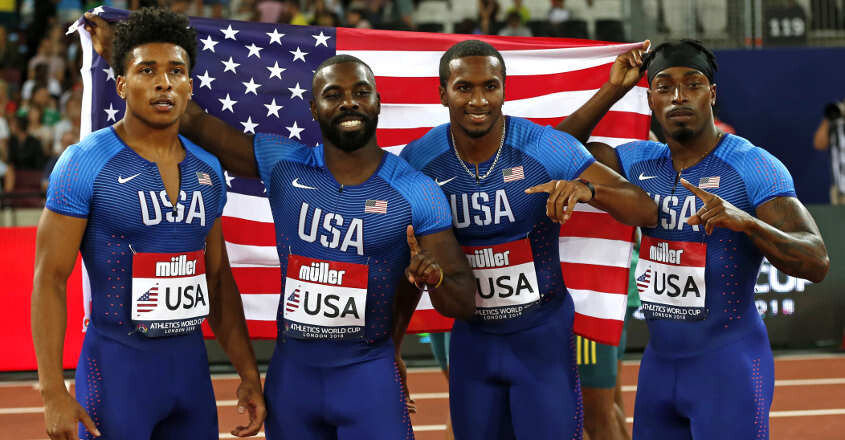
In the men’s shot put on July 17, world record-holder and Olympic champion Ryan Crouser will go after the one title that has so far eluded him – that of world champion – and will take on two-time world champion Joe Kovacs.
Such is the strength of the women’s 800m squad of Athing Mu, Ajee Wilson and Raevyn Rogers, as well as the men’s 200m team of Noah Lyles, Erriyon Knighton, Fred Kerley and Kenny Bednarek, that athletes will be aiming for USA medal sweeps.
Returning to defend the titles they won in Doha in 2019 are Nia Ali (women's 100m hurdles), Donavan Brazier (men's 800m), Christian Coleman (men's 100m), Grant Holloway (men's 110m hurdles), Kovacs (men's shot put), Lyles (men's 200m), Muhammad (women's 400m hurdles), DeAnna Price (women's hammer) and Christian Taylor (men's triple jump).
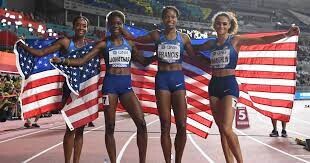
Making her 10th World Championships appearance will be Allyson Felix, who has 18 world medals, including 13 golds, to her name and will be in the mixed 4x400m pool.
“I couldn’t be prouder to lead this amazing team for this once-in-a-lifetime event,” said USATF CEO Max Siegel. “We have been given the unique opportunity to impact the track and field landscape in the US, and we’ve put our best team forward.”
USA team for Oregon
Women
100m: Aleia Hobbs, Melissa Jefferson, Twanisha Terry
200m: Tamara Clark, Jenna Prandini, Abby Steiner
400m: Talitha Diggs, Kendall Ellis, Lynna Irby
800m: Athing Mu, Raevyn Rogers, Ajee Wilson
1500m: Sinclaire Johnson, Cory McGee, Elle St. Pierre
5000m: Elise Cranny, Emily Infeld, Karissa Schweizer
10,000m: Alicia Monson, Natosha Rogers, Karissa Schweizer
Marathon: Emma Bates, Keira D’Amato, Sara Hall
3000m steeplechase: Emma Coburn, Courtney Frerichs, Courtney Wayment
100m hurdles: Nia Ali, Alia Armstrong, Keni Harrison, Alaysha Johnson
400m hurdles: Shamier Little, Sydney McLaughlin, Dalilah Muhammad, Britton Wilson
Heptathlon: Michelle Atherley, Anna Hall, Kendell Williams, Ashtin Zamzow-Mahler
High jump: Vashti Cunningham, Rachel Glenn, Rachel McCoy
Pole vault: Gabriela Leon, Sandi Morris, Katie Nageotte
Long jump: Quanesha Burks, Tiffany Flynn, Jasmine Moore
Triple jump: Tori Franklin, Jasmine Moore, Keturah Orji
Shot put: Adelaide Aquilla, Chase Ealey, Maggie Ewen, Jessica Woodard
Discus: Valarie Allman, Rachel Dincoff, Veronica Fraley, Laulauga Tausaga-Collins
Hammer: Brooke Andersen, Annette Echikunwoke, Janee Kassanavoid, DeAnna Price
Javelin: Ariana Ince, Maggie Malone, Kara Winger
20km race walk: Robyn Stevens, Miranda Melville
35km race walk: Stephanie Casey, Miranda Melville, Maria Michta-Coffey
4x100m: Celera Barnes, Tamari Davis, Gabby Thomas (plus athletes named in individual sprints)
4x400m: Wadeline Jonathas, Jaide Stepter, Kaylin Whitney (plus athletes named in individual sprints)
Men
100m: Marvin Bracy, Trayvon Bromell, Christian Coleman, Fred Kerley
200m: Kenny Bednarek, Fred Kerley, Erriyon Knighton, Noah Lyles
400m: Champion Allison, Michael Cherry, Michael Norman, Randolph Ross
800m: Donavan Brazier, Bryce Hoppel, Jonah Koech, Brandon Miller
1500m: Johnny Gregorek, Cooper Teare, Josh Thompson
5000m: Grant Fisher, Woody Kincaid, Abdihamid Nur
10,000m: Grant Fisher, Joe Klecker, Sean McGorty
Marathon: Elkanah Kibet, Colin Mickow, Galen Rupp
3000m steeplechase: Hillary Bor, Evan Jager, Benard Keter
110m hurdles: Devon Allen, Trey Cunningham, Grant Holloway, Daniel Roberts
400m hurdles: Trevor Bassitt, Rai Benjamin, Khallifah Rosser
Decathlon: Steven Bastien, Kyle Garland, Zach ZiemekHigh jump: Darius Carbin, JuVaughn Harrison, Shelby McEwen
Pole vault: Andrew Irwin, Chris Nilsen, Luke WinderLong jump: Marquis Dendy, Steffin McCarter, Will Williams
Triple jump: Chris Benard, Will Claye, Donald Scott, Christian Taylor
Shot put: Josh Awotunde, Ryan Crouser, Joe Kovacs, Tripp Piperi Discus: Andrew Evans, Sam Mattis, Brian Williams
Hammer: Daniel Haugh, Rudy Winkler, Alex Young
Javelin: Ethan Dabbs, Tim Glover, Curtis Thompson
20km race walk: Nick Christie, Dan Nehnevaj
35km race walk: Nick Christie
4x100m: Kyree King, Josephus Lyles, Elijah Hall-Thompson (plus athletes named in individual sprints)
4x400m: Bryce Deadmon, Vernon Norwood, Elija Godwin (plus athletes named in individual sprints)
Mixed
4x400m: Allyson Felix, Kennedy Simon, Ismail Turner, Noah Williams (plus athletes named in individual sprints).
by World Athletics
Login to leave a comment
World Athletics Championships Budapest23
Budapest is a true capital of sports, which is one of the reasons why the World Athletics Championships Budapest 2023 is in the right place here. Here are some of the most important world athletics events and venues where we have witnessed moments of sporting history. Throughout the 125-year history of Hungarian athletics, the country and Budapest have hosted numerous...
more...Dina Asher-Smith will launch the defence of her 200m title at world championships
Dina Asher-Smith set for 200m defence as part of GB’s World Championships squad.
The 26-year-old, Katarina Johnson-Thompson and Keely Hodgkinson headline the 64-strong team for the competition in Eugene, Oregon, in July.
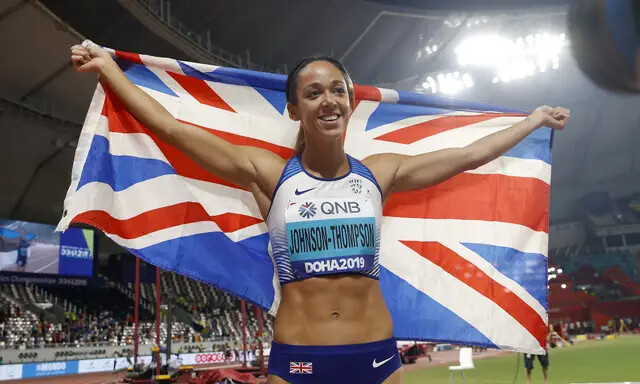
Asher-Smith won gold in Doha three years ago, having collected 100m silver, before going on to also secure silver in the 4x100m relay, and will look to improve on that haul in the United States.
She is expected to run at the Stockholm Diamond League meet on Thursday in her final race before the World Championships, which were rescheduled from last year after the postponement of the Tokyo Olympics to 2021 due to the coronavirus pandemic.
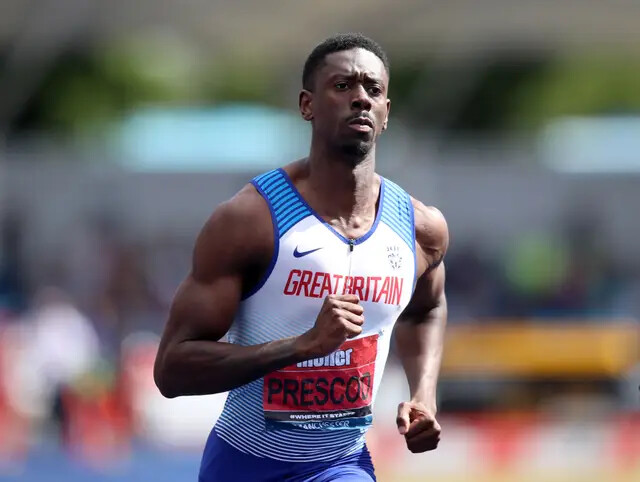
Outgoing Olympic head coach Christian Malcolm said: “We’ve seen a number of athletes step up on the global circuit so far this season, which has been really encouraging.
“We are confident that we’ve selected a team that optimises medal success and that have the ability to progress through rounds to reach finals.
“The World Championships is the start of a very busy summer of Championships and Games, so there are a number of opportunities for athletes to represent their country this summer.
“For those who have been selected for the team for Oregon, I wish the athletes and their coaches the best over the next week or so and to keep focus to achieve your goals.”
Daryll Neita, who reached last year’s Olympic 100m final and beat Asher-Smith in Manchester at the weekend to become British 100m champion, is also included for the 100m and 4x100m.
Despite winning the 200m at the British Championships on Sunday, however, 25-year-old Neita does not have the time for 200m qualification, with Asher-Smith joined by Beth Dobbin.
Johnson-Thompson missed the Manchester championships at the weekend but will look to defend the heptathlon world title she won in 2019.
The 29-year-old has been dogged by injury for 18 months since rupturing her Achilles in late 2020 and pulled out of the Olympics having suffered a calf problem in the heptathlon’s 200m.
Hodgkinson, who is expected to challenge American Athing Mu for 800m gold, is included along with Laura Muir, with the Scot aiming for her first World Championships outdoor medal after claiming 1500m silver in Tokyo last year.
Hodgkinson is joined in the 800m by Alex Bell and Jemma Reekie while Holly Bradshaw, who won Olympic bronze last year, will contest the pole vault.
Zharnel Hughes and Reece Prescod are Britain’s hopes in the men’s 100m with Nethaneel Mitchell-Blake and Adam Gemili in the 200m.
Prescod ran 9.93 seconds in Ostrava last month to leave him 11th fastest in the world this year but he remains well behind world lead Fred Kerley, who posted 9.76 seconds at the US trials at the weekend.
All four are in the men’s 4x100m relay squad, with Hughes and Mitchell-Blake aiming to ease their heartbreak having been stripped of their Olympic relay silver after CJ Ujah’s positive drugs test.
They are joined by Harry Aikines-Aryeetey, new British 100m champion Jeremiah Azu and Jona Efoloko.
Asher-Smith, Dobbin, Neita, Imani-Lara Lansiquot, Ashleigh Nelson, Asha Philip and Bianca Williams make up the women’s 4x100m squad.
Max Burgin, the fastest man in the world over 800m this year, won the British title on Sunday to seal his place.
World Athletics will publish its final world rankings ahead of the Championships on Wednesday, meaning there are likely to be a number of additions to the squad based on rankings.
The World Championships sparks a frantic summer with the Commonwealth Games in Birmingham starting days after the end of competition in Eugene and then the European Championships in Munich in August.
Login to leave a comment
World Athletics Championships Budapest23
Budapest is a true capital of sports, which is one of the reasons why the World Athletics Championships Budapest 2023 is in the right place here. Here are some of the most important world athletics events and venues where we have witnessed moments of sporting history. Throughout the 125-year history of Hungarian athletics, the country and Budapest have hosted numerous...
more...Highlights from the 2022 USATF Outdoor Championships June 26
The USATF Outdoor Championships at Hayward Field in Eugene, Oregon have finished and the athletes set to represent Team USA at the World Athletics Championships have been decided. Over four days, there was a world record set and plenty of great battles for the limited spots on the world team.
The World Athletics Championships will be back at Hayward Field from July 15 to July 24. It will be the first time the United States is hosting the meet.
Here are the highlights from the 2022 USATF Outdoor Championships.
Cranny wins a close one in the 5,000 meters
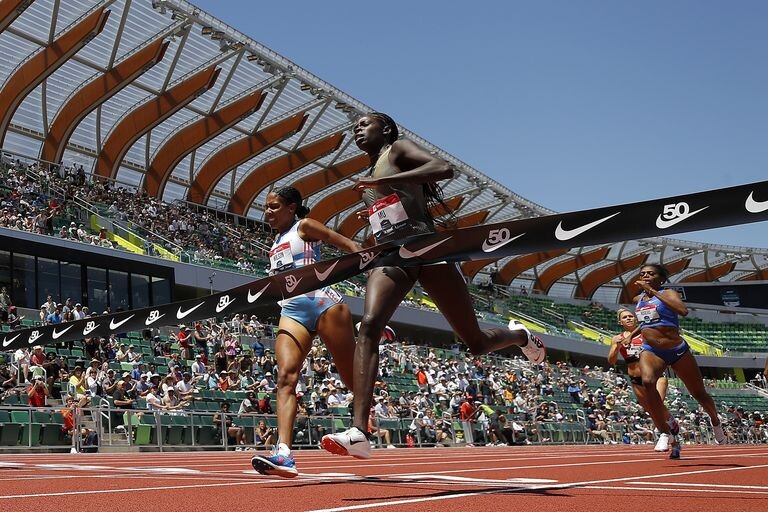
After a schedule change to avoid hot conditions, the women’s 5,000 meters opened the final day of the USATF Outdoor Championships. Unfortunately, the women couldn’t completely escape the heat—the temperature on the track read 82 degrees.
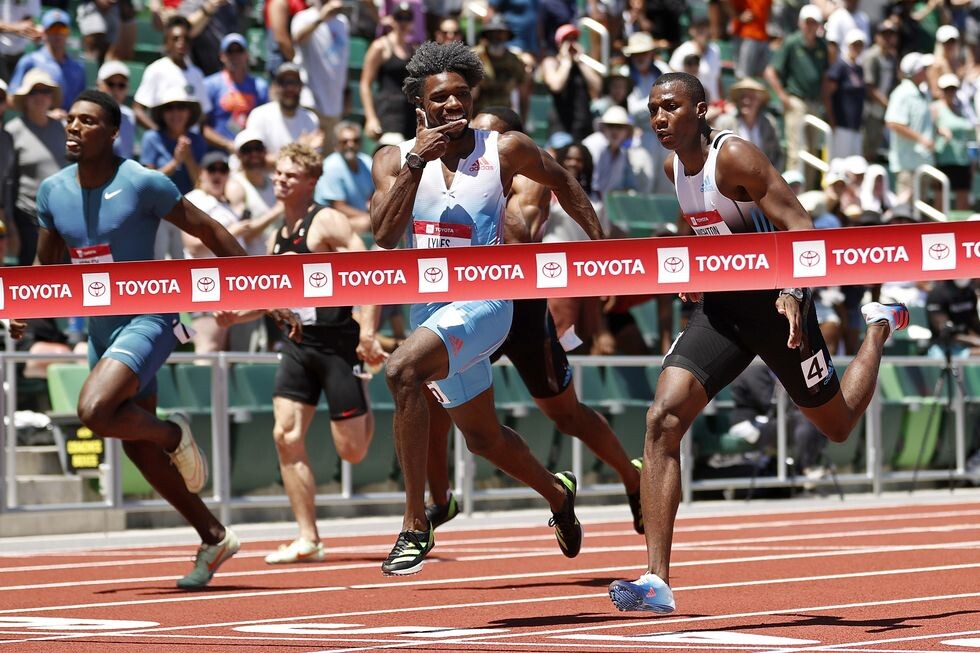
As a result, the women dawdled, running most of the race in a tight pack. With 1600 meters remaining, Karissa Schweizer—who placed fourth in the 1500 meters on Saturday—picked up the pace. With two laps, four women separated themselves: Schweizer, indoor American record holder Elise Cranny, world championships bronze medalist Emily Infeld, and Weini Kelati. Kelati fell off the group by the bell, and the top three were set. Now, it was a battle for place.
Schweizer, Cranny, and Infeld battled down the final straightaway, trading leads multiple times. When the dust settled, Cranny earned the victory, with Schweizer and Infeld less than a half second behind in that order.
Each woman completed their own unique narrative coming into the race. Cranny scratched from the USATF 10,000-meter championships on May 27, saying in an Instagram post she hadn’t been feeling like herself in training. Schweizer, who did qualify for the 10,000 meters, also placed fourth in the 1500. With this 5,000-meter performance, she completed one of the best championship runs in U.S. history. Finally, after just missing out on qualifying for the 10,000-meter world team, Infeld earned a spot on her first global championship team since 2017.
Fisher takes down 5,000 meet record, Kincaid unleashes furious kick for second
Conversely to the women’s race, the men’s 5,000 meters went out hard. Hillary Bor, who qualified for the steeplechase team on Saturday, kept checking his watch—apparently pacing the race. Multiple time global medalist Paul Chelimo and Bowerman Track Club teammates Grant Fisher and Woody Kincaid held position right behind Bor.
Bor dropped out at 1800 meters after splitting 4:12 for the mile. Evan Jager, who also qualified for the steeplechase world team, led the men for another mile. Fisher, Emmanuel Bor, and NCAA indoor 5,000-meter champion Abdihamid Nur of Northern Arizona quickly separated from the group after Jager dropped out.
Over the final 1200, Fisher put on a clinic, squeezing the pace over each lap until he was all alone. He won the race in 13:03.86, a meet record.
The most exciting portion of the race occurred offscreen. After trailing the top three by five seconds with 400 to go, Kincaid unleashed a monstrous 54.24 final lap to take silver in a time of 13:06.70. Nur held on to earn his first world championship berth, running 13:08.63. Emmanuel Bor faded to fifth.
Coburn claims eighth straight U.S. steeplechase title
After a moderate first 1,000 meters, four women were clear of the pack in the women’s steeplechase: recent NCAA champion Courtney Wayment, Gabi Jennings, six-time U.S. champion Emma Coburn, and Olympic silver medalist and American record holder Courtney Frerichs.
That group whittled down to Wayment, Coburn, and Frerichs by 800 to go. Half a lap later, Coburn quickened her pace. Wayment and Frerichs, perhaps surprised by the move, didn’t go with Coburn, who put more and more distance on them over the final lap. Coburn notched her eighth consecutive U.S. title in a season best of 9:10.63. Wayment finished second, and Frerichs took third.
Ajeé Wilson nearly upsets the defending Olympic champion The women’s 800 meters promised to be the event of the meet, and it didn’t disappoint.
Athing Mu, defending champion, jumped off the line hard to take her traditional spot in the lead. Olivia Baker and indoor world champion Ajeé Wilson were right on her heels while Olympic bronze medalist Raevyn Rogers hung around mid-pack.
All of the women were still together with 200 to go. The broadcast commentators predicted that Mu would break the race open before the end of the bend, but spectators were treated to something more interesting: Wilson was right on Mu’s shoulder with 100 to go. With gritted teeth, the two athletes dashed neck-and-neck down the straightaway. It looked as if Wilson had the upper hand, but the Olympic champion pulled through in the final meters to snag the victory in 1:57.16. Rogers slingshotted out of the pack to pass three runners for third.
Bryce Hoppel earns first outdoor national title
The men’s 800 meters featured a consequential last 100 meters. Texas A&M’s Brandon Miller set a fast early pace, crossing the 400-meter mark in 51.62. He fell to second as Hoppel took control on the final bend.
It wasn’t over yet, as the entire field was still in striking range with 100 left. But Hoppel and Jonah Koech surged ahead, while Miller duked it out with a late-charging Clayton Murphy for the third qualifying spot. Miller overtook the two-time Olympian with a dramatic dive at the line, securing a trip to worlds. Hoppel’s winning time was 1:44.60, a season best, while Koech’s ran a personal best of 1:44.74.
Noah Lyles charges late to overtake 18-year-old star Erriyon Knighton
After 100 meters, it looked like 18-year-old Erriyon Knighton was on his way to his first national championship. But that’s why there’s another 100 meters in this event, because defending world champion Noah Lyles found another gear. With a smile and finger pointed at Knighton, Lyles broke the tape first in 19.67. Knighton finished second, while 100-meter national champion Fred Kerley nabbed another world team spot. Because Noah Lyles has a bye to the world championships, fourth-placer Kenny Bendarek also qualified.
NCAA champion Abby Steiner becomes U.S. champion
With defending U.S. champion Gabby Thomas in poor form this year, the gate was open for a new women’s 200-meter champion. Abby Steiner, who won the NCAA title two weeks ago, capitalized on that opening. She won the title with a world lead and personal best of 21.77. Tamara Clark and Jenna Prandini qualified as well with their respective second and third place finishes.
by Runner's World
Login to leave a comment
USATF Outdoor Championships
With an eye toward continuing the historic athletic success of 2022, USATF is pleased to announce competitive opportunities for its athletes to secure qualifying marks and prize money, including a new Grand Prix series, as they prepare for the 2023 World Athletics Championships in Budapest, Hungary.As announced a few months ago, the 2023 Indoor Championships in Nanjing, China have been...
more...One month to go - Road to Oregon22
One month from yesterday, the World Athletics Championships Oregon22 – the first to be held in the United States – will get under way at the all-new Hayward Field in Eugene.
One week from today, that same venue will stage the fearsome, first-three-home drama of the USATF Championships, where home athletes will seek to earn the right to return to the re-built arena once the global event starts on 15 July.

The perennial jeopardy of that event means that some of the most likely home medallists cannot yet be inked in for the World Championships. But wild card entries for defending champions mean that US athletes such as 200m gold medallist Noah Lyles, who has demonstrated convincing form in recent weeks and days, will count on toeing the line.
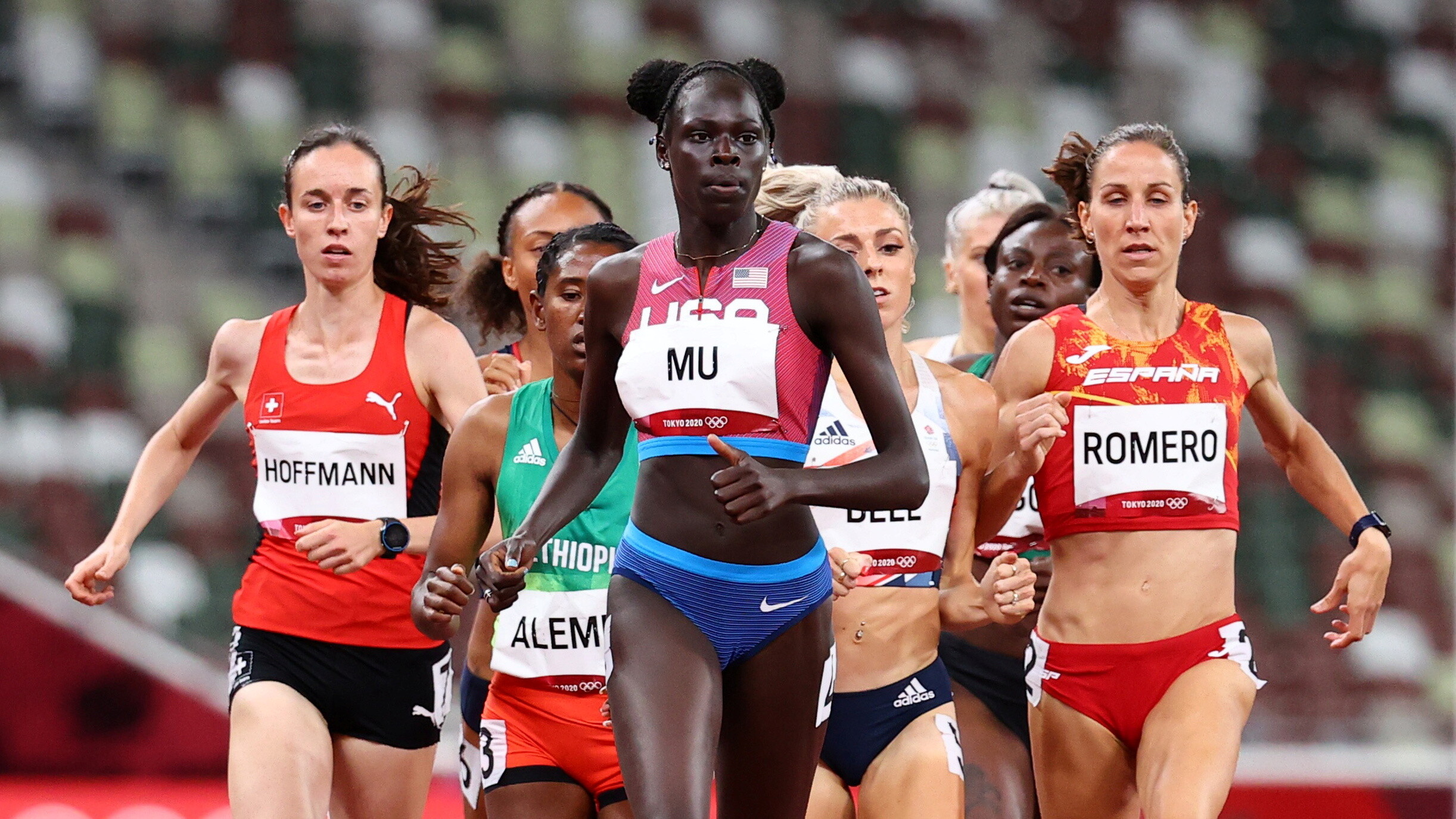
Prospective challengers for medals in Eugene, notably from Europe and Africa, have been laying down their markers in earnest over the last fortnight, however, as the meetings have come thick and fast. The level of excitement and anticipation is rising rapidly on the Road to Oregon.
Britain’s Keely Hodgkinson has her sights firmly set on world 800m gold in Oregon. As does her fellow 20-year-old Athing Mu of the US, who beat her to Olympic gold in Tokyo last year. Something has to give.
Hodgkinson eschewed an almost certain 800m medal at the World Indoor Championships in March as a precaution after feeling a muscle twinge in warm-up for the final – it had to be gold or nothing for her, and she didn’t want to risk what promises to be a richly busy outdoor season.
After an impressive victory in Birmingham she travelled to the Eugene Diamond League keyed up for a pre-World Championships battle with her rival, only to find that Mu was a no-show following the after-effects of having Covid-19.
The Briton did all she could to lay down a big marker on the track where the world golds will be disputed, piling in to win in 1:57.72, the fastest time of the year.
The glove was down. And less than a fortnight later at the Rome Diamond League meeting it was firmly grasped by Mu as she answered the challenge by romping home to win in 1:57.01.
Emmanuel Wanyonyi, the phenomenal 17-year-old who won the world U20 men’s 800m title on his home track of Nairobi last year, has maintained impressive momentum this season, winning in 1:44.15 in Ostrava and coolly outrunning Botswana’s 2012 Olympic silver medallist Nijel Amos at the Rabat Diamond League meeting to win in 1:45.47.
In the Moroccan capital, local hero Soufiane El Bakkali, whose Tokyo victory in the men’s 3000m steeplechase provided his country with its only medal from the Games, once again defeated his great Ethiopian rival Lamecha Girma in a race that nearly blew the roof off the Prince Moulay Abdellah Stadium.
Login to leave a comment
World Athletics Championships Budapest23
Budapest is a true capital of sports, which is one of the reasons why the World Athletics Championships Budapest 2023 is in the right place here. Here are some of the most important world athletics events and venues where we have witnessed moments of sporting history. Throughout the 125-year history of Hungarian athletics, the country and Budapest have hosted numerous...
more...The Rome Diamond League did not disappoint, with several meet records shattered
The Rome Diamond League did not disappoint on Thursday afternoon. Several meet records were smashed, including Eliud Kipchoge’s 5,000m meet record of 12:46.53–by his compatriot, Nicholas Kimeli,who clocked a world-leading time of 12:46.33.
Kimeli’s time was the seventh-fastest ever over 5,000m, and only six seconds behind the Kenyan national record held by Daniel Komen at 12:39.74.
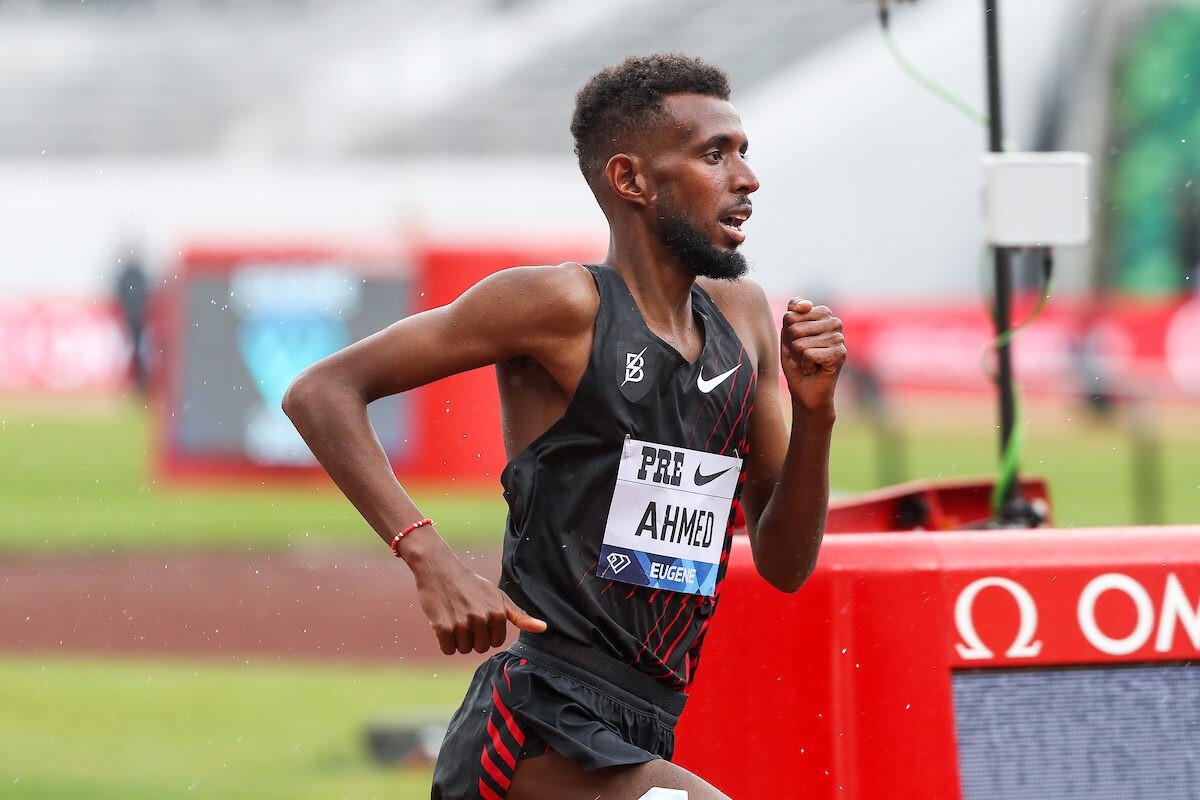
The 23-year-old Kenyan came into the race in great form, winning the TCS World 10K in Bengaluru, India, in mid-May in course record time and setting a Kenyan national record over 5K on the roads in April (12:55).
The men’s 5,000m was speedy from the start, with the pace set for 2:35/km at the front. Yomif Kejelcha of Ethiopia led the race until one lap to go, when Kimeli and his Kenyan compatriot, Jacob Krop, took over the race with 300m to go. Krop and Kimeli battled over the final 200m until Kimeli put a gap on Krop with less than 100m to go, setting a new personal best, meet record and world lead over 5,000m. Krop finished second in a personal best time of 12:46.79, while Canada’s Mohammed Ahmed (second photo) ran a season’s best time of 12:55.88 to finish fifth.
In the women’s 800m, Athing Mu made a statement, winning the race in a world-leading time of 1:57.01. Mu sat on the heels of the pacer for the first 400m, coming around in 56-high. Once the pacer fell off, the 20-year-old American phenom took over, winning the race by almost two seconds.
by Running Magazine
Login to leave a comment
Norman reigns in fierce 400m clash with record run in Eugene
USA’s Michael Norman produced the standout performance at the Wanda Diamond League meeting in Eugene on Saturday (28), the 24-year-old setting a Diamond League 400m record of 43.60 to beat Grenada's Kirani James (44.02) and Matthew Hudson-Smith, who broke the British record with 44.35.
On a cool, blustery afternoon at Hayward Field, with many outbreaks of heavy rain, Norman was one of many athletes who defied the conditions to make it another memorable edition of the Prefontaine Classic.
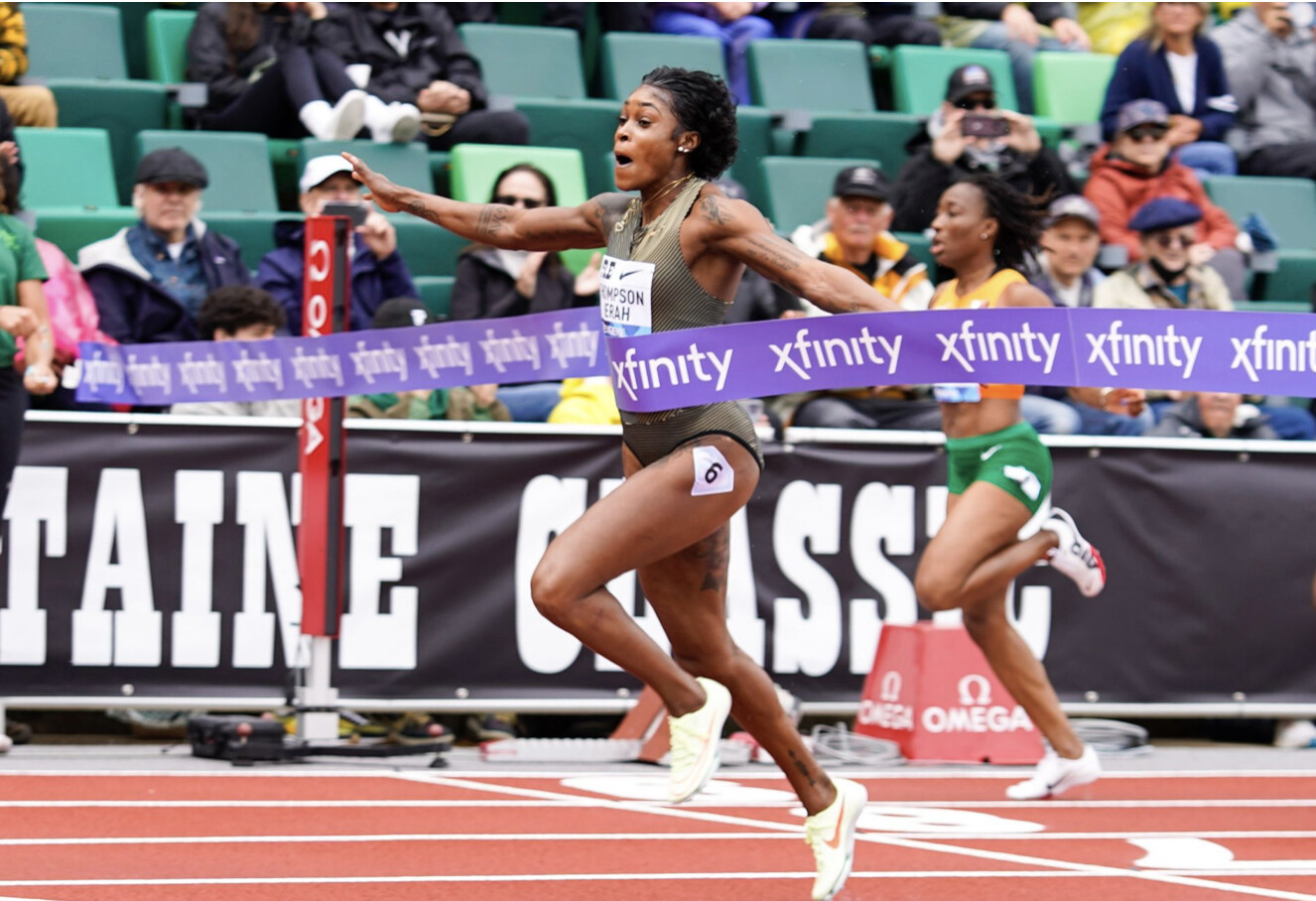
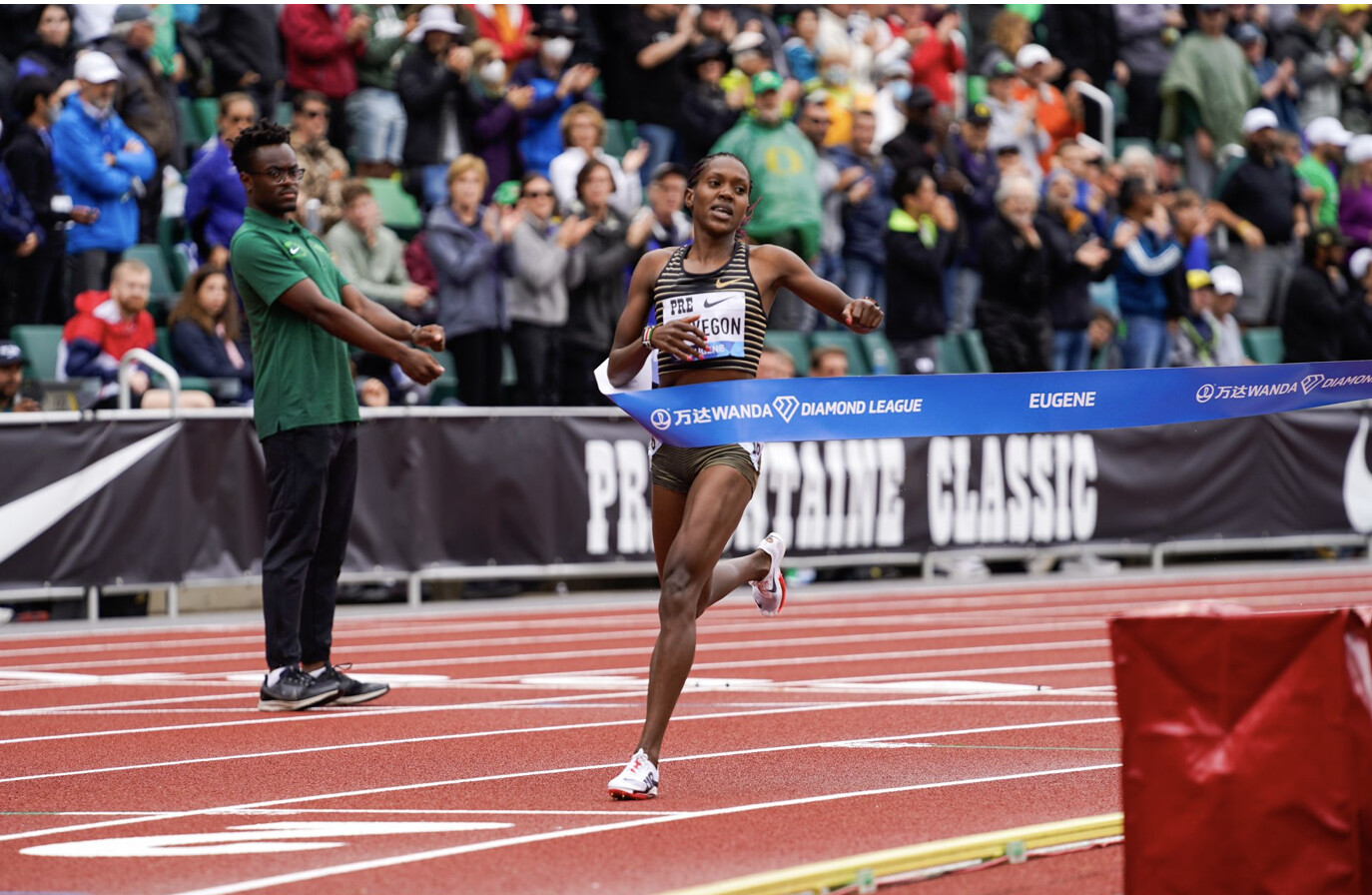
“I had zero expectation of what I could run today,” said Norman, who revealed he and coach Quincy Watts had gone “back to the basics” during their winter training. “Hard work and consistency with diet and training,” he said. “My motto this year has been that if it’s comfortable, it’s too easy – on the weight room or the track. Based on how I felt, there are a few areas I can improve on.”
Looking to next month’s US Championships and the World Athletics Championships Oregon22 on the same track in July, Norman said: “I’m going to train like I want to do something special, and when the time comes, the time comes.”
Kenya's Faith Kipyegon was equally peerless when taking the women’s 1500m in commanding fashion, the Olympic champion tracking chief rival Gudaf Tsegay until the final turn, at which point she blew by and came home a clear winner in a world lead and meeting record of 3:52.59. Tsegay got second in 3:54.21 with Canada’s Gabriela Debues-Stafford third in 3:58.62. “The race today gave me great morale that everything I’m doing is correct towards the World Championships – that’s my biggest fish and I hope for the best, for the gold medal,” said Kipyegon, who is “going to think about” a world record attempt at 1500m later in the summer. “I was not expecting (to run 3:52) when I saw the rain this morning, but I felt comfortable. It was good.”
USA's Ryan Crouser produced by far the standout performance in the field events, the Olympic shot put champion looking utterly peerless when launching a world-leading 23.02m effort in the second round. That left him well clear of long-time rivals Joe Kovacs (22.49m) and Tom Walsh (21.96m).
What made it more impressive is that Crouser did not use his full technique, but threw off a “static” starting position, which prior to today had never produced a 23-metre effort. Crouser said he usually throws 40-60cm farther when utilising his full technique.
“I thought 23 was possible but I thought I’d have to get into my full (technique) to do it,” said Crouser. “My best static ever was in the 22.90s. To throw a static PR, under a heavy load, without a taper, is a really good indicator of where I can be seven or eight weeks from now.” Berihu Aregawi turned in a superb solo performance to take the men’s 5000m in a meeting record and world lead of 12:50.05, coming home well clear of fellow Ethiopians Samuel Tefera (13:06.86) and Selemon Barega (13:07.30). Aregawi swept to the front in the third kilometre after the pacers stepped aside and the Ethiopian broke clear of the field, powering through to the final laps to a rapturous reception from the crowd, which historically loves displays of fearless distance running.
In the men’s 400m hurdles, Brazil’s Alison Dos Santos achieved another dominant performance, clocking a world-leading 47.23 to come home a distant winner ahead of USA’s Khalifah Rosser and Quincy Hall, who both clocked personal bests of 48.10.
“I’m happy with this, but I want more, I want to go faster,” said Dos Santos. “Me and (Rai) Benjamin never win against (Karsten) Warholm, and nobody wants to lose, but it’ll be hard for us to come up against him at the World Championships and win. He is the boss, the guy to beat, and for winning the final you need to run 45 (seconds) – everyone is so strong.”
Sprint queen Elaine Thompson-Herah once again asserted her supremacy with a comfortable win in the 100m, clocking 10.79 (0.7m/s) to beat Sha’Carri Richardson, who bounced back to form with a 10.92 clocking to edge Shericka Jackson, who was third in 10.92. Britain’s Dina Asher-Smith was fourth with 10.98.
“I’m happy to cross the line healthy and with the win,” said Thompson-Herah, who explained prior to the event that she’d been managing a niggle in training. “It got me ready for my championship in Jamaica next month.”USA’s Trayvon Bromell laid down a big marker ahead of next month’s US Championships by defeating his chief rivals in the 100m, pulling clear to take a comfortable win in 9.93 (-0.2m/s). Fred Kerley was next best with 9.98, while Christian Coleman faded from first at halfway to third at the finish, clocking 10.04 just ahead of Noah Lyles (10.05).
"I really just wanted to come out with the win as I knew the wind was iffy today," said Bromell. "There were some technical things I wanted to do better with but I just have to go back to the drawing board and try to fix it."
Olympic champion Jasmine Camacho-Quinn came from behind to score an impressive win in the 100m hurdles, a non-Diamond League event, the Puerto Rican clocking 12.45 into a slight headwind (-0.7m/s) with Nigeria’s Tobi Amusan second in 12.58 and USA’s Tonea Marshall third in 12.66.
“It was a little sloppy,” said Camacho-Quinn. “I hit my trail leg a couple of times and that slowed me up, but I’ll take it. I went 12.4 in these conditions.”
Jamaica’s Shelly-Ann Fraser-Pryce was a clear winner of the women’s 200m in 22.41 (0.8m/s), with USA’s Brittany Brown second in 22.74 and Anthonique Strachan of Bahamas third in 22.76.
Norway’s Jakob Ingebrigtsen re-asserted his supremacy in the Bowerman Mile, the Olympic champion breaking clear with a lap to run and coming home a comfortable winner in a world lead of 3:49.76, with Australia’s Ollie Hoare second in a PB of 3:50.65 and world champion Timothy Cheruiyot third in 3:50.77.
“It was a great race – I’m where I’m supposed to be,” said Ingebrigtsen, who will “for sure” double over 1500m and 5000m at the World Athletics Championships Oregon22. Looking towards the European Championships in Munich, he said he’d “love to do 800m, 1500m, steeplechase, 5km, 10km and marathon, but I don’t think that’s possible with the schedule.”
He will next race over 800m before competing at the Wanda Diamond League meeting in Oslo on 16 June. Britain’s Keely Hodgkinson utilised her typical sit-and-kick tactics to great effect to take the women’s 800m, the Olympic silver medallist powering clear of race leader Natoya Goule entering the home straight and holding off the late surge of world indoor champion Ajee Wilson to win in a world lead of 1:57.72, with Wilson second in 1:58.06 and Raevyn Rogers third in 1:58.44.
Olympic champion Athing Mu was a late withdrawal after contracting Covid-19, but Hodgkinson is looking forward to renewing their rivalry in July.
“It would have been good if she was here, but she’s going to be there at the World Champs and I’m sure we’ll have a good duel then – I look forward to racing her,” said Hodgkinson. “I felt really good, it was a bit windy out there but there was good competition, it was a good run. I can’t complain.”
Sweden’s Khaddi Sagnia unleashed a PB of 6.95m (1.0m/s) to take victory in the women’s long jump, with Nigeria’s Ese Brume second with 6.82m and USA’s Tara Davis third with 6.73m.
Norah Jeruto, the Kenyan-born athlete who now represents Kazakhstan, produced an impressive display to win the women’s 3000m steeplechase in 8:57.97, a world lead. Bahrain’s Winfred Mutile Yavi was close behind in second, clocking a PB of 8:58.71, while Ethiopia’s Mekides Abebe was third in 9:03.26. In the men’s 1500m, a non-Diamond League event, New Zealand’s Samuel Tanner took victory in a PB of 3:34.37 in front of Britain’s Neil Gourley, who clocked a PB of 3:34.85.
Italy’s Martina Caironi set a world record of 14.02 in the T63 women’s 100m, while in the men’s T62 400m, Germany’s Johannes Floors took the win in 48.13.
Login to leave a comment
Prefontaine Classic
The Pre Classic, part of the Diamond League series of international meets featuring Olympic-level athletes, is scheduled to be held at the new Hayward Field in Eugene. The Prefontaine Classicis the longest-running outdoor invitational track & field meet in America and is part of the elite Wanda Diamond League of meets held worldwide annually. The Pre Classic’s results score has...
more...Prefontaine Classic promises world record attempts and rich competition despite late losses
It is a measure of Eugene’s Prefontaine Classic meeting - which tomorrow forms the third stop on the Wanda Diamond League tour - that it can lose four Olympic gold medalists at late notice and still remain packed with compelling competition and world record attempts.
The arrangement of all that athletics action was altered today following forecasts of rain and high winds - likely to be blowing into the faces of the sprinters - on Saturday.
Accordingly the men's pole vault, featuring Olympic gold and silver medalists Mondo Duplantis of Sweden and Chris Nilsen of the United States, the women's discus, featuring the US Olympic champion Valarie Allman, and the women's high jump, involving Ukraine's world indoor champion Yaroslava Mahuchikh, have been moved to Friday night's programme, where world record attempts are being made over two miles and 5,000 meters.
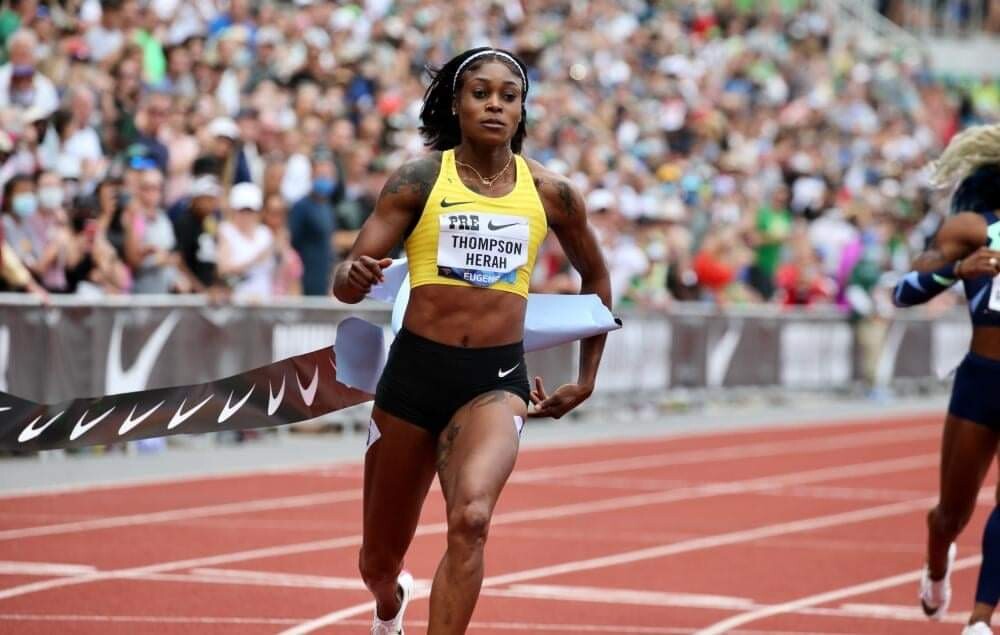
The news that the United States' Olympic women’s 800 meters champion Athing Mu will not now race against Britain’s Tokyo 2020 silver medalist Keely Hodgkinson, and that Italy’s men’s 100m champion Marcell Jacobs will not be in a field including the man he beat to gold in Japan, home sprinter Fred Kerley, was disappointing.
Also missing from the planned line-up at the new-look Hayward Field, which will stage this year’s World Athletics Championships, are home talents Matthew Centrowitz, the Rio 2016 1500m gold medalist, Tokyo 2020 and world 400m hurdles silver medalist Rai Benjamin and double world pole vault champion Sam Kendricks.
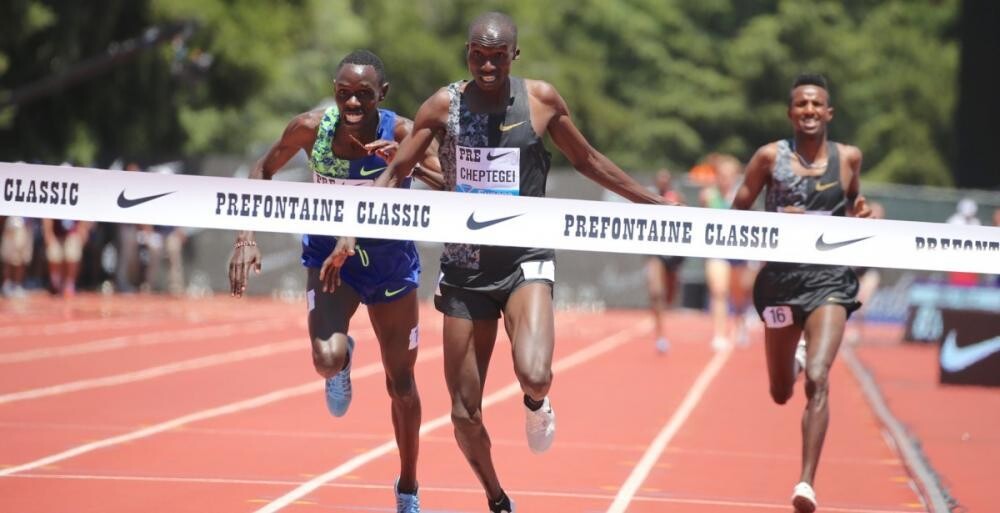
And South Africa’s double Olympic 800m champion Caster Semenya, who had planned a first top-level race since 2019, has also withdrawn.
All this means the limelight will shine all the more intensely on stellar performers such as Jamaica’s double Olympic women’s 100 and 200m champion Elaine Thompson-Herah, who runs over the shorter sprint against a field including the American who missed last year’s Olympics because of a three-month suspension after testing positive for cannabis, Sha’Carri Richardson.
Britain’s world 200m champion Dina Asher-Smith, who last Saturday won the Birmingham Diamond League 100m from which Thompson-Herah had made a late withdrawal, is also in the mix, as is Switzerland’s world indoor 60m champion Mujinga Kambundji and Jamaica’s Tokyo 2020 bronze medalist Shericka Jackson.
Thompson-Herah chose to make a low-key start to her outdoor season, choosing to compete in Kingston, where she clocked 10.94sec despite a strong headwind of -1.8 meters per second.
It was on this track last year that she ran 10.54, putting her second on the all-time list.
The men’s 100m is also loaded given the presence of Kerley and his fellow Americans Trayvon Bromell, who will be keen to restore normal working after his early exit in Birmingham because of a false start, world champion Christian Coleman, world 200m champion Noah Lyles and Canada’s Olympic 200m champion Andre De Grasse.
And 18-year-old Erriyon Knighton, who last year became the youngest male athlete to represent the United States since middle distance runner Jim Ryun in 1964 and missed a 200m medal by one place, will seek to break 10sec for the first time.
Knighton already tops this year’s 200m world list with his startling 19.49sec in Baton Rouge last month, which put him fourth on the all-time list.
The women’s 200m will see double Olympic 400m champion Shaunae Miller-Uibo taking on Jamaica’s 35-year-old Beijing 2008 and London 2012 100m champion Shelly-Ann Fraser-Pryce, who won world gold at this distance in 2013 and took silver at the London 2012 Olympics.
The men’s 400m will see Kirani James of Grenada, the London 2012 champion and Tokyo 2020 bronze medalist, take on home athletes including Michael Cherry, Michael Norman – a major talent currently seeking a performance to do himself justice - Vernon Norwood and Kahmari Montgomery.
The absence of Benjamin from the 400m hurdles will offer Brazil’s Tokyo 2020 bronze medalist Alison Dos Santos - who beat Benjamin in the opening Diamond League meeting of the season in Doha – a perfect chance to shine,
In the women’s 100m hurdles, Puerto Rico’s Olympic champion takes on the American who took silver behind her in Tokyo, world record holder Kendra Harrison.
The traditional Friday evening distance racing in Eugene will include a women’s two miles and a women’s and men’s 5000m race.
At the latter, which will be followed by an official Diamond League 5,000m on Saturday, Uganda’s Joshua Cheptegei is billed to make an attempt at breaking his own world record of 12min 35.36sec, which he ran in Monaco in August 2020.
On Saturday afternoon the majority of the rivals Cheptegei beat to win Olympic 5,000m gold in Tokyo last year will line up for the Diamond League 5.000m, where Olympic 10,000m champion Selemon Barega of Ethiopia, Olympic 10,000m bronze medalist Jacob Kiplimo of Uganda, Olympic 5,000m silver Mohammed Ahmed of Canada and two-time Olympic 5,000m medalist Paul Chelimo of the United States are the main contenders.
Friday night will also see Ethiopia’s 24-year-old Letesenbet Gidey aiming to lower the women’s 5000m world record of 14:06.62 that she set in Valencia in October 2020.
Gidey has since lowered the women’s 10,000m world record to 29min 01.03sec and the world half marathon record to 1hr 2min 52sec.
Elsewhere on Friday, the women’s two miles will see Sifan Hassan of the Netherlands, the Olympic 5,000 and 10,000m champion, facing Diamond League 5,000m champion Francine Niyonsaba of Burundi.
The latter, who was disqualified at the Tokyo 2020 Games, beat Kenya’s double Olympic 1500m champion Faith Kipyegon over 3,000m in Doha earlier this month.
The world best of 8:58.58, set by Ethiopia’s Meseret Defar in 2007, is sure to be under threat.
Saturday’s middle-distance action will be highlighted by the clash of Olympic 1500m champion Jakob Ingebrigtsen and world champion Timothy Cheruiyot, who renew their rivalry in the Bowerman Mile.
Ingebrigtsen beat Cheruiyot for the first time in the Olympic final in Tokyo last year but the Kenyan beat his Norwegian rival a few weeks later to win over 1500m at the Diamond League final in Zurich.
Both men will need to be primed, however, to beat Kenya’s Abel Kipsang, who out-kicked Cheruiyot to win in Doha recently and who backed it up with 1500m victory in Birmingham last Sunday.
Kipyegon meanwhile will take on Britain’s Tokyo 2020 silver medalist Laura Muir and Gudaf Tsegay of Ethiopia in the women’s 1500m.
Hodgkinson faces an 800m field that includes home runner Ajee Wilson, who took the world indoor title earlier this year.
The men’s shot put will involve the respective Tokyo 2020 gold, silver and bronze medalists Ryan Crouser and Joe Kovacs of the United States and New Zealand’s Tom Walsh.
by Mike Rowbottom
Login to leave a comment
Prefontaine Classic
The Pre Classic, part of the Diamond League series of international meets featuring Olympic-level athletes, is scheduled to be held at the new Hayward Field in Eugene. The Prefontaine Classicis the longest-running outdoor invitational track & field meet in America and is part of the elite Wanda Diamond League of meets held worldwide annually. The Pre Classic’s results score has...
more...Pre Classic Hit With Withdrawals: Olympic Champs Athing Mu, Marcell Jacobs and Matthew Centrowitz All Withdraw From Meet
Every year the Prefontaine Classic is an incredible meet. Not only is it the lone Wanda Diamond League meeting in the US, but Nike pretty much mandates that its top athletes compete unless injured.
This year’s meet was shaping up to be totally spectacular as it comes less than two months before Worlds are held on the very same track. However, while the meet is going to be amazing, it’s going to be less than amazing than it was looking like a few days ago as a bunch of big-name stars have been taken off the start lists in recent days.
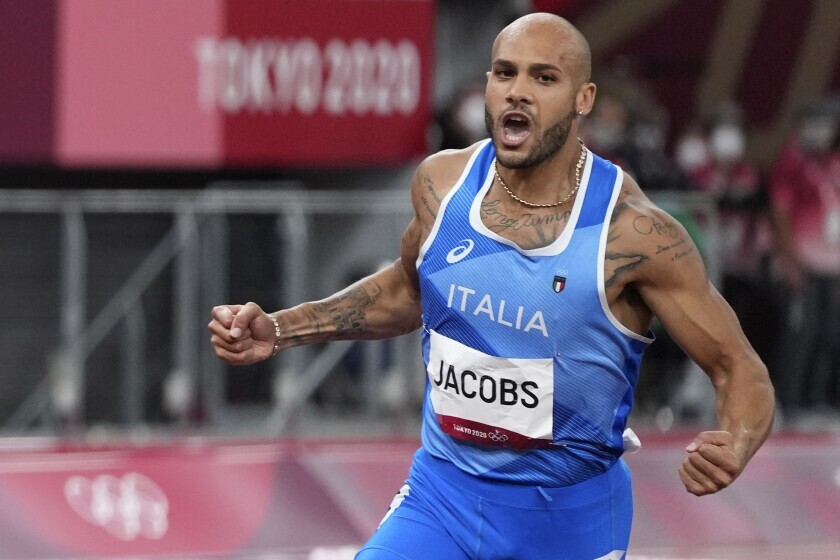
Reigning Olympic 800 champ Athing Mu is no longer listed in the women’s 800. The same is true for Marcell Jacobs in the men’s 100, which this year is supplanting the Bowerman Mile as the last event on the schedule. However, he has been replaced by Trayvon Bromell –the fastest man in the world in 2021. 2016 Olympic 1500 champ Matthew Centrowitz also is off the start lists, meaning he still hasn’t raced at all in 2022.
“Matthew has a knee injury and is unable to race this weekend. Hopefully, he will be back in action soon,” texted Ricky Simms, the agent for Centrowitz, when asked for comment by LetsRun.com.
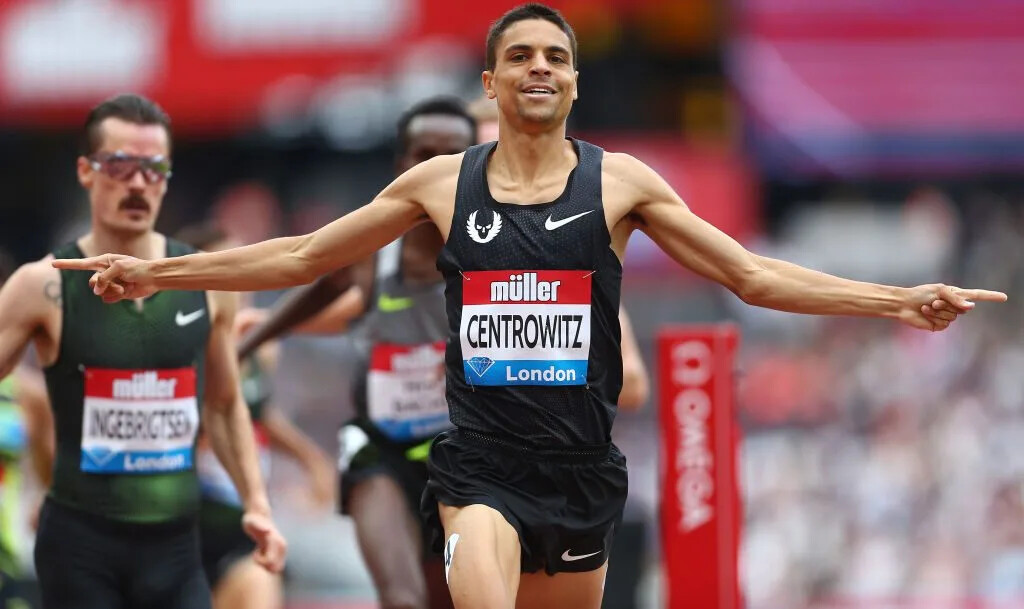
The Italian federation said that Jacobs picked up a muscle injury during his race in Savona last week and has been told to take 10 days off. No reasons have been given for Mu’s withdrawal and Wes Felix, her agent, didn’t immediately respond to a request for comment.
On Friday night, the US 10,000 meter champs will be held plus there will be world record attempts in the women’s 2 mile with Francine Niyonsaba and Sifan Hassan as well as 5000s with Letesenbet Gidey and Joshua Cheptegei. Then on Saturday, the normal meet will be held.
by Letsrun
Login to leave a comment
Prefontaine Classic
The Pre Classic, part of the Diamond League series of international meets featuring Olympic-level athletes, is scheduled to be held at the new Hayward Field in Eugene. The Prefontaine Classicis the longest-running outdoor invitational track & field meet in America and is part of the elite Wanda Diamond League of meets held worldwide annually. The Pre Classic’s results score has...
more...Seven reigning global medalists to renew rivalry in Eugene 100m
The medalists from the men’s Olympic 100m and 200m finals in Tokyo, plus the men’s world indoor 60m final in Belgrade, will all clash in a stacked 100m field announced for the Prefontaine Classic, part of the Wanda Diamond League series, in Eugene on May 28.
Reigning Olympic champions Marcell Jacobs and Andre De Grasse will go up against Fred Kerley, Kenny Bednarek, Noah Lyles, Marvin Bracy and Christian Coleman, as well as Olympic 100m fifth-place finisher Ronnie Baker, at Eugene’s Hayward Field.
They will all be looking to make their mark ahead of the World Athletics Championships Oregon22 taking place in the same stadium in July.
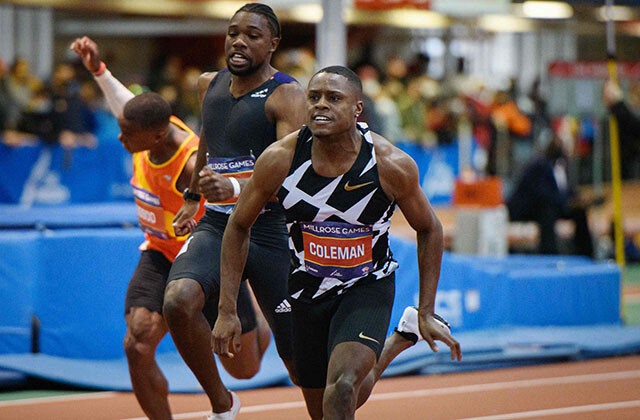
“I am honored and excited to be part of this year’s Prefontaine Classic at the University of Oregon in Eugene,” said Italy’s Olympic 100m champion Jacobs, who also claimed the world indoor 60m title in Belgrade last month.
“It’s going to be my first race in the US since the Tokyo Olympics and the adrenaline is already pumping. I can’t wait to feel the track beneath my feet.”
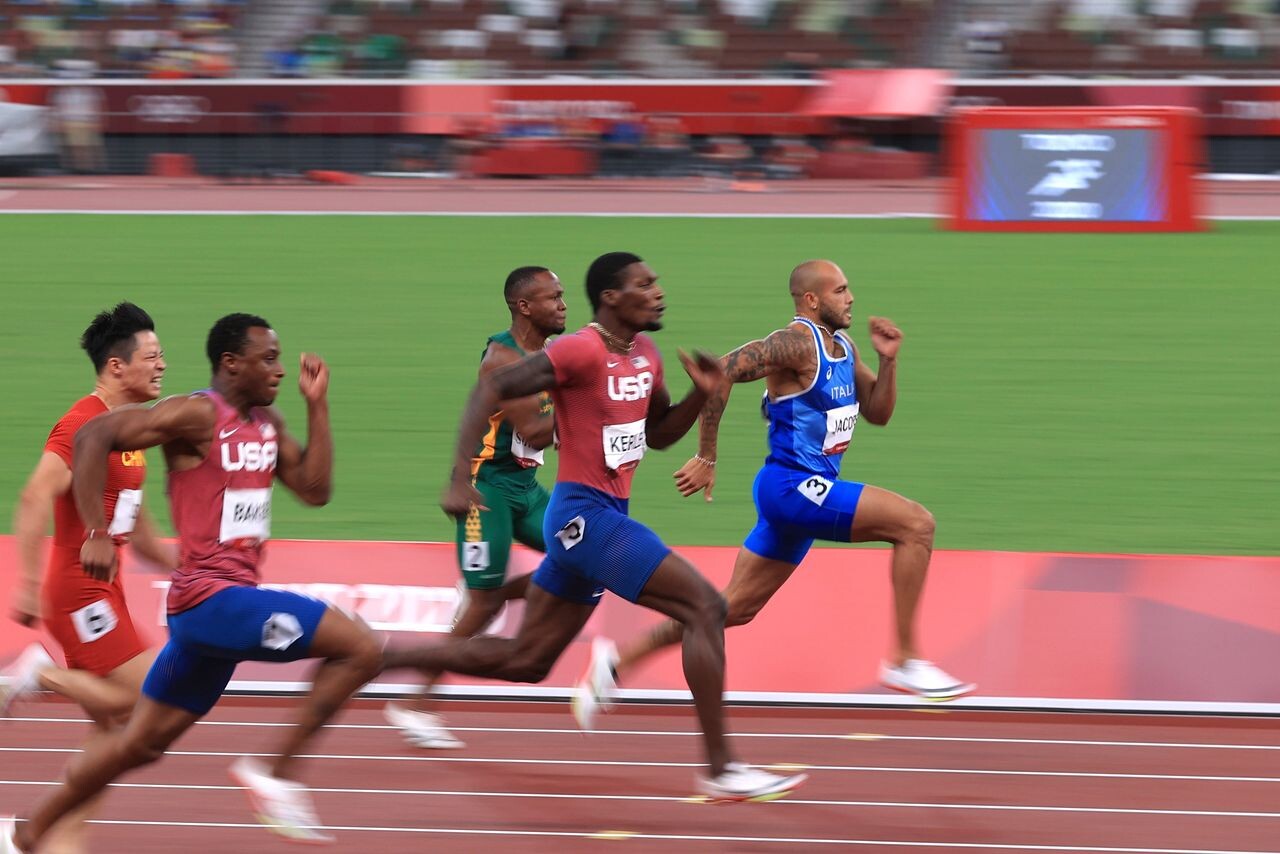
De Grasse won the 100m at last year’s Prefontaine Classic, a few weeks after becoming a three-time Olympic medalist in Tokyo. The Canadian claimed 4x100m silver and 100m bronze in Japan along with his 200m title.
Kerley secured 100m silver between Jacobs and De Grasse in Tokyo, while Bednarek gained silver and Lyles bronze behind De Grasse in the 200m. At the World Athletics Championships Belgrade 22, Jacobs was joined on the podium by silver medalist Coleman and bronze medalist Bracy.
The men's 100m is the latest in a number of strong fields announced for the Eugene meeting. All three Tokyo Olympic medallists – Athing Mu, Keely Hodgkinson and Raevyn Rogers – will race in the 800m, while champion Mondo Duplantis will take on his fellow Tokyo Olympic medalists Chris Nilsen and Thiago Braz in the pole vault.
Michael Norman, Michael Cherry and Kirani James will race the 400m, while Rai Benjamin and Alison Dos Santos will go head-to-head in the 400m hurdles and the 100m hurdles will pit Keni Harrison against Jasmine Camacho-Quinn. Yaroslava Mahuchikh and Nicola McDermott will renew their rivalry in the high jump.
by World Athletics
Login to leave a comment
Prefontaine Classic
The Pre Classic, part of the Diamond League series of international meets featuring Olympic-level athletes, is scheduled to be held at the new Hayward Field in Eugene. The Prefontaine Classicis the longest-running outdoor invitational track & field meet in America and is part of the elite Wanda Diamond League of meets held worldwide annually. The Pre Classic’s results score has...
more...Athing Mu switching to women´s wanamaker mile at Millrose Games
Olympic 800 meters champion Athing Mu will test her range further in elite mile field.
Of all the storylines coming together for this weekend's 114th Millrose Games at The Armory, the one making waves Monday is the switch by Athing Mu from the 800 meters to the WHOOP Women's Wanamaker Mile.
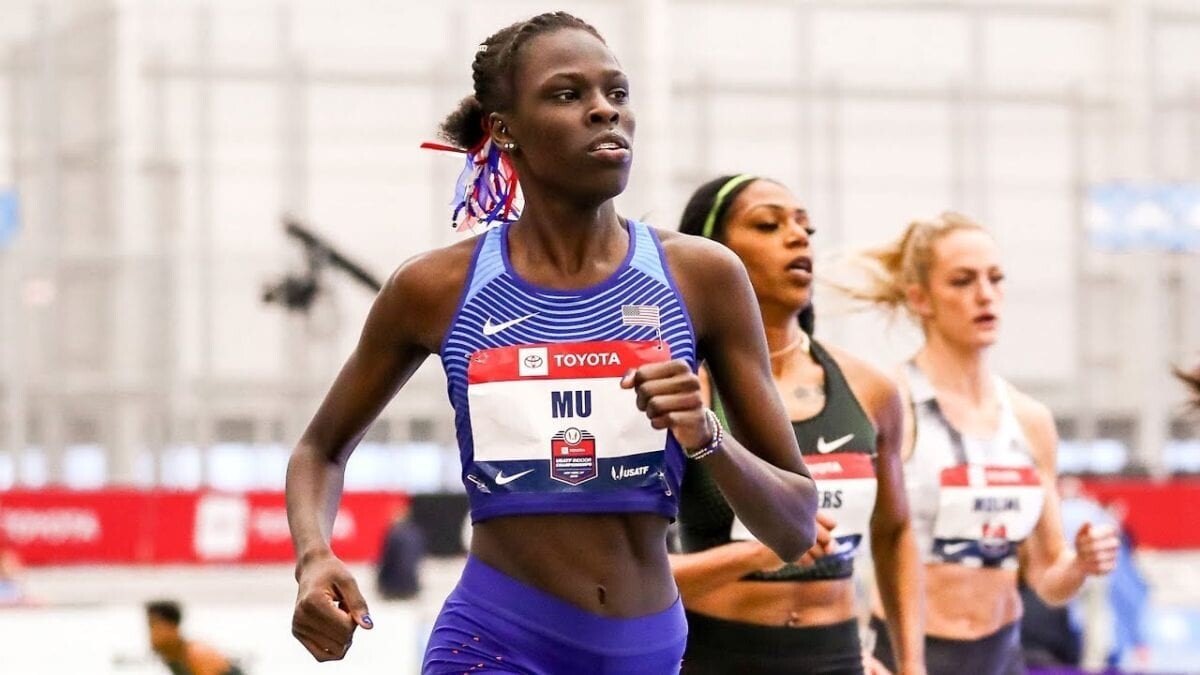
On the schedule of Saturday's events, that's only a nine-minute difference in start time. Those two events precede the traditional Millrose closer, the men's Wanamaker Mile.
But with Mu making her first New York City appearance in a race since she was a senior in high school in 2020, she stands to be one of the most compelling athletes in the meet.
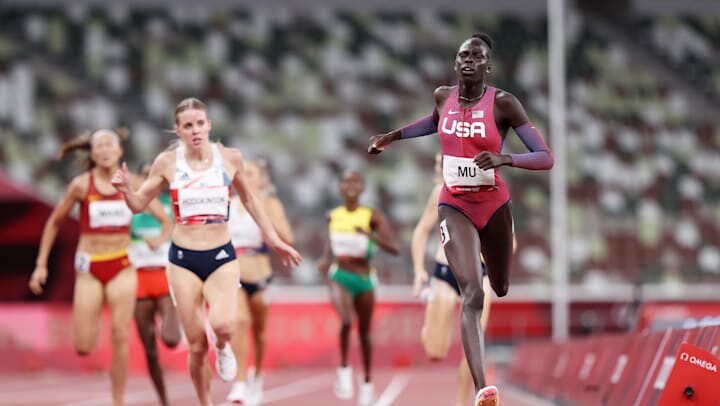
Instead of racing in the 800 meters against Ajee' Wilson, Natoya Goule and high school stars Roisin Willis and Sophia Gorriaran, Mu will take on a bigger challenge in the mile against a field that includes Elle Purrier-St. Pierre, the reigning champion, Konstanze Klosterhalfen, Nikki Hiltz and Jessica Hull.
Mu opened her 2022 campaign with a 4:37.99 mile at the Ted Nelson Invitational at College Station, Texas, on Jan. 15, which is a personal best.
The recent Bowerman Award winner may just be scratching the surface in the longer event, and demonstrating the full spectrum of her range from 400 meters to the mile. She'll have to run much faster to compete for the win on Saturday. She already owns the American record in the 800 meters outdoors with 1:55.04.
Purrier ran a meet and Armory record 4:16.85 to win the 2020 race.
by Doug Binder
Login to leave a comment
NYRR Millrose Games
The Pinnacle of Indoor Track & Field The NYRR Millrose Games, first held in 1908, remains the premier indoor track and field competition in the United States. The 2025 edition will once again bring the world’s top professional, collegiate, and high school athletes to New York City for a day of thrilling competition. Hosted at the New Balance Track &...
more...

